

Top 10 Longest Treks in Nepal
- Last Updated on Apr 10, 2020
Trekking in Nepal is a great way to spend time around the mountain trails for an adventurous and unforgettable experience of the Himalayas. You have heard about many shortest treks in Nepal, but Nepal Trek Adventure offers the longest trekking trail in Nepal. Here we present the 10 longest treks in Nepal. Longest Treks in Nepal allows its visitors to the circuit the whole region or some particular points in a longer time frame with proper acclimatization and serene view of Nepalese Himalayas, high hills, green vegetation, glaciers, and various snowy landscapes, and surely the lifestyle of local inhabitants.
Nepal has many trekking options from small treks to long treks available which pass through different paths around some of the famous mountains in the world. The most popular trekking destinations that come to mind when visiting Nepal are probably the Everest, Annapurna, and Kanchenjunga. Other mountainous regions likewise have their own significances and beauties that allure visitors all along the track. Nepal, as one of the top travel destinations South East Asia welcomes tourists from all around the world throughout the year who go for trekking, hikes and other adventures around the nation.
While there are many trekking options, it is difficult to choose what to go for. Especially, for people looking for a Long Trek experience, choosing the best trekking seems difficult. So what really are the best Long treks that you should go for, on your visit to Nepal? We have listed out ten of the best Longest Treks in Nepal which offer beautiful sightseeing, adventure exploration, and culturally significant travel destinations in Nepal. Let's have a look at it.
Table of Contents
1. upper dolpo trek.
Upper Dolpo Trek is a restricted area trekking adventure in Nepal which is considered to be one of the longest treks in the country. The trekking period for this long trek is a minimum of 24 Days. Filled with pristine natural beauty, it has a difficult route in the Himalayas of Nepal. The long trek to upper Dolpo first became famous through the book, ‘The Snow Leopard’, which was written by Peter Matthiessen. The trail lies on drylands and is a great chance to explore ancient Nepal and its pristine beauty.
Upper Dolpo Trek lies in the northeast region of Nepal in Dolpo. With peaks over 21,000 feet and barren trails, the Dolpo exploration takes you around the desert of Nepal. The region is famous for its Tibetan Buddhist people who follow the religion of Bon (one of the Five Schools of Buddhism). The beautify around this region has a charm like no other where the elevation of Dolpo varies from 1,650m (5,412ft) to 5,136m (16,846ft) providing beautiful views of varieties of landscapes, flora and fauna, natural and artistic diversity, and many more. You cannot visit Dolpo without knowledge about the Phoksundo Lake. The lake is situated in the protected area of Shey Phoksundo National Park which covers an area of 3,555 square kilometers. Surrounded by glaciers and beautiful mountain views, the Phoksundo Lake is famous for its turquoise color.
Upper Dolpo Trek Facts
- Trek Duration: 24 Days (average)
- Destination: Nepal
- Starting point: Kathmandu
- Maximum altitude: 5,360 meters
- Minimum altitude: 1,400 meters
- Best seasons: Spring (March, April, May), autumn (September, October) and monsoon (June, July, August)
- Trip grade: Moderate
- Accommodations: Teahouse/lodges/Camping (option available) during the trek
In order to book this longest adventure to Upper Dolpo Region in Nepal, you can follow the link as follows. Click Here
2. Kanchenjunga Trekking
Kanchenjunga trekking is a long remote trekking adventure to reach the Kanchenjunga Peak (8,586m) while lies in the northeastern part of Nepal. It is located on the border with Sikkim and Tibet. The trekking is famous for its three stream valleys, the Simbua Khola, The Ghunsa, and The Tamur. WWF (World Wide Fund for Nature) declared the region as a gift of nature. The long trekking to Kanchenjunga holds the Kanchenjunga Massif where forests filled with diverse flora and fauna, where over 23 types of rhododendrons and 2000 different plant species exist.
This g Trekking is not only famous for its natural beauty but also for its untouched traditional people’s lifestyle. The ancient religion of Tibetan Buddhism can be clearly seen in the rural villages. With over 11 ethnic groups of Limbus, Chhetri, Sherpa, Rai, and Brahmins, the trekking trails are filled with cloisters, shortens, sanctuaries, ancient woven artwork, and many more to display the regions ancient traditions and culture.
Kanchenjunga Trekking ranges from 1,200 meters (4,000 feet) to 5,180 meters (17,094 feet) above sea level. The atmosphere, during this trek to Kanchenjunga, changes from the subtropical rainstorm and summer at the lower altitude and rises to cold and wet winter in the snow-capped district in upper altitudes. The main attraction in the region is probably passing through the Mirgin La Pass, which offers magnificent perspectives on the Kanchenjunga Massif.
Kanchenjunga Trek Facts
- Trek Duration: 23 Days (average)
- Maximum altitude: 5,120 meters
- Best seasons: March to May and October and November
- Trip grade: High
- Accommodations: Camping and Tea houses
Feel free to take an adventure to Kanchenjunga as the longest trekking route in Nepal with NTA, and prefer the link as follows to make a booking. Click Here
3. Jiri to Everest Base Camp Trek
Jiri to Everest Base Camp Trek is probably the most important and famous long trekking adventure that is recognized to be the best in the World. The destination of the trekking is Mount Everest (8848m), the highest peak in the world. To reach the top of the world and its base camp, the long route trekking will start from Jiri. Jiri is a rural area surrounded by beautiful lowlands and dense forests. The roads and forests will give you a great feeling as move onwards thoroughly. This place is famous for its milk products such as cheese, yogurts, milk, and more that are loved throughout the country.
The trek to the base camp Everest was originally started from this location. With the long adventure, you will be able to experience the life of Sherpa, the heroes of Everest. After you reach Namche, you will be surrounded by snow peaks and high mountain valleys. The trek will take you around many passes, as you cross through local villages, monasteries, gompas, and many more en-route attractions. There are many treks to the base camp available where the trip from Jiri is considered to be the longest and the most fun with awesome historic significance. It was the same path followed by Sir Edmund Hillary and Tenzin Norgay Sherpa to summit Mount Everest Peak in 1952. Travel through the woodlands, the high mountains (like Everest, Lhotse, Nuptse, Makalu, etc), and glaciers as you make your way to the top of the world with the Jiri to the Everest Base Camp Trek.
Jiri to Everest Base Camp Trek Facts
- Trek Duration: 19 Days (average)
- Maximum altitude: 5,550 meters
- Best seasons: February to May and October to November
Feel comfortable to make the booking of this historically and naturally significant trekking route in Nepal with Nepal. You can refer to the mentioned link for direct booking. Click Here
4. Kanchenjunga Circuit Trek
One of the famous trekking adventures in the Kanchenjunga region is definitely the Kanchenjunga Circuit Trek. Starting from Kathmandu, the trek will take you to some of the most dislocated and isolated landmarks in Nepal. The trek is an exploration to reach the base camp of the third highest peak in the world, Mt Kanchenjunga (8586m). Kanchenjunga is surrounded by the Tamur River in the west, Lhonak Chu and Jongsang La in the north, and the Teesta River to the east. Located in the north-eastern part of Nepal, this longest routed trek provides some of the rarest views of mountains like Mt Kanchenjunga, Jannu, Gimmigela, Kabru, Rathong, and Kokthang.
The long Kanchenjunga Circuit Trek is filled with rare species of wildlife like Snow-leopard, Red Panda, Himalayan Black bear, and some birds like Red-billed Blue Magpie, Shy Dragon, Impedance Pleasant, and more. The region of Kanchenjunga has a pristine beauty. There are also rumors of seeing a yeti (the Rakshasa of the Region). Locals believe that a region is a dwelling place of gods, which hold the famous, ‘dwelling of immortals’ within its area. The area is great for sightseeing exploration.
Kanchenjunga Circuit Trek Facts
- Trek Duration: 18 Days (average)
- Maximum altitude: 4,200 meters
- Best seasons: March to May and September to November
Have an extraordinary journey to the Kanchenjunga Circuit in Nepal with NTA. For easy booking of this trip, prefer to the link as follows. Click Here
5. Makalu Base Camp Trekking
The Makalu Base Camp trek is one of the longest treks in the Eastern region of Nepal. With a serenity to die for, this long trek to Makalu has caught the admiration of many trekkers and visitors in recent years. The trekking adventure is to reach the fifth highest mountain in the world, Mt Makalu (8463m). Mt Makalu lies in the Makalu Barun National Park. The park is famous for its natural beauty which has habitats for different flora and fauna of the region.
The Makalu Trekking Region is surrounded by Himalayan ranges of Everest. The Everest is the dominant but not only one of the mountains that lie around this trekking track. Mount Lhotse, Mount Chamlang, and more also have a dormant view around the trekking trails. Along the trekking paths, you will pass through the Kekela Pass (4230m) and Tutu La Pass (4200m). You can also observe the Sherpa villages along with the residing people with their own culture, tradition and unique lifestyle. The Khumbu Valley and Khumbu Glacier are likewise the ones to look out for as you travel to the Makalu Base Camp.
Makalu Base Camp Trek Facts
- Maximum altitude: 5,250 meters
If you want to accomplish this trek in a proper manner with appropriate facilities, then NTA can be the best choice for you. You can book this trekking right here with the following link. Click Here
6. Manaslu Base Camp Trekking
Manaslu Base Camp Trek is a challenging long trek to reach the eighth highest mountain the world, Mt Manaslu (8163m). Located in the western central part of Nepal, the Manaslu Base Camp lies in the Mansiri Himal Range. The trekking to Manaslu is mainly famous among Japanese travelers. This has to do with a famous trekker Toshio Imanishi, who first ascended the mountain with the assistance of Gyalzen Norbu in 1956. Since then, the Japanese consider the mountain to be their domain for adventure. It is famous among other western travelers as well.
The place is famous for being a resident of local Tibetan people who have their own traditional culture and traditions. The trekking trails are filled with monasteries which are frequently visited by monks. Sama Gompa is one of the oldest monasteries from where you can view the Mt Manaslu at a closer distance. The trekking paths follow ancient routes of the Budi Gandaki River through which people used to walk for salt trading during ancient times from Nepal to Tibet.
More than 10 peaks of over 6,500 meters and few of over 7,000 meters are visible in this trekking adventure. The long trek route paves the way to many scattered villages of the region consisting of many ethnic groups who live together. These local villages of Gurungs and their traditional lifestyle is one to watch around the track. It is long trekking to reach the Larke La Pass (5213m) too, which has amazing views of snowcapped mountains and glaciers.
Manaslu Base Camp Trek Facts
- Trek Duration: 17 Days (average)
- Maximum altitude: 5,213 meters
- Best seasons: March to April and September to November
If you are planning a long adventure in Nepal, Manaslu Base Camp Trekking can be a better choice as well. For booking this trip with NTA, you can refer to the direct link mentioned as follows: Click Here
7. Everest Circuit Trekking
Everest Circuit trekking is a trekking adventure along the 3 high passes (Kongma La (5535m), Cho La (5430m), and Renjo La (5345m)) to reach the base camp of the top of the world, Mt Everest (8848m). The Circuit trek to Everest has often been considered as the best long-distance treks in the world. The trek takes you to the Sherpa Villages, Sagarmatha National Park, and the World legacy site and visits the diverse religious communities.
This long Everest Circuit trail follows an adventure through the mountain valleys which has a pleasant perspective of Himalayan ranges, icy masses, local villages, and more. Explore the green farmlands, Sherpa bazaars, Buddhist monasteries, Sagarmatha national park filled with flora and fauna to finally reach the Everest Base Camp at 5380m. Likewise, the major attractions remain to stop places like Namche Bazaar, Syangboche, etc, Documentation Center, attractive Sherpa people with heart-warming cultures, traditions, and hospitality, Buddhist community with own unique and ancient lifestyle, Sagarmatha National Park – one of the UNESCO World Heritage Sites of the world, monasteries like Rongbuk, Tengboche, Dingboche, Thame, Khumjung, Pangboche, and many more, Himalayan views from Kala Pathar and Everest Base Camp, surrounding mountain ranges and peaks, tea houses, hotels, and lodges where you acclimatize and take rest, museum, library, and laboratories (like Sherpa Culture Museum, Khumbu International Library, and Pyramid International Laboratory), Khumbu Icefall and glacier, Peak climbing spots and passes crossing, and many more.
Everest Circuit Trekking Facts
- Maximum altitude: 5,545 meters
- Best Seasons: Autumn and spring
- Accommodation: Lodges or teahouses
Feel comfortable to book this long trek in the Everest Region in Circuit with Nepal Trek Adventure. The reservation link is provided right here. Click Here
8. Everest Three Pass Trek
Everest Three Passes Trek is another great long trekking option to pick in the Everest Region of Nepal. The high passes trek demands trekkers who are a bit experienced who dare to challenge the Himalayas trail of the Everest region in the difficult paths of the mountain valley. Renjo La, Gokyo valley with a lake, Cho La pass, and Kongma La are known as the Everest Three Passes., which is covered by this long trekking route in Nepal.
Along the trek to Everest Three Pass, you will have a beautiful view of Everest and the surrounding mountain ranges. As discussed in previous trekking options the addition here is that the trek focuses on the three passes rather than the base camp itself. The Gokyo Valley is a beauty of heaven that lies in Nepal. The clear water surrounding my mountain peaks with a pleasant view for the travelers. The passes that we cross during the journey are mentioned as follows:
Renjo La: Renjo La is one of the passes of Everest Three passes trek which lies at the height of 5345 meters. It lies in a remote area that is surrounded by mesmerizing views of Mount Everest, Mount Nuptse, Mount Lhotse, and Mount Makalu. The major attraction of Renjo la pass is the Khumbu region which holds the famous Khumbu glacier and ancient Sherpa villages.
Cho La: Another pass of the Three Pass trek which is surrounded by high mountains around 8000m heights is Cho La Pass at an altitude of 5430 meters. Surrounded by high mountains and Sherpa villages, the most famous attraction is probably the century-old ancient Monastries and beautiful waterfalls.
Kongma La: Kongma La is the highest pass of the Three Passes which lies at an altitude of 5535 meters. The main attraction is probably the Chhukung village which has amazing views of many snow-capped mountains of the Everest region.
Everest Three Pass Trek Facts
- Best Seasons: March to May and October and November
Enjoy this, one of the longest treks in Nepal, Everest Three Pass Trek, with Nepal Trek Adventures with all-encompassed services. Easy and faster booking, refer to the link as follows. Click Here
9. Annapurna Circuit Trek
Annapurna Circuit Trek is one of the most famous treks in the world. The trek in the Circuit is generally a round walk of 160 to 230 kilometers long. The trip offers you a chance to reach the territory of the 10th highest peak in the world, Annapurna I (8097m). The main goal for this long trip will be to cross the Thorong La Pass (5416m), which is surrounded by beautiful snow-peaks and icy glaciers. Thorong La Pass is the highest pass in the nation.
During this circuit trek to Annapurna, you will pass through lush green terraced fields, alpine forests, and snowy landscapes all along the way. You can also experience a diverse ethnic local community along the trek. One major attraction for this long trekking adventure in the Annapurna region is the availability of classic services such as hotels, hot shower, Wi-Fi Services, and so on. The views from the trekking journey are magnificent to behold. The trekking trails are surrounded by rhododendron forests and mountain views of Annapurna I, II, III, IV & V, Machhapuchhre, Hiunchuli, Dhaulagiri and many more.
Annapurna Circuit Trek Facts
- Trek Duration: 16 to 22 Days
- Maximum altitude: 5,416 meters
- Best Seasons: March to May and September to October
- Accommodation: Lodges or teahouses, hotels
Go through the amazing Himalayan sights by means of comfortable and luxury services in Annapurna Circuit Trek with the NTA Team. For booking, simply click the link right here. Click Here
10. Langtang Gosaikunda and Helambu Trek
The Langtang Gosaikunda and Helambu Trek is one of the longest treks in Nepal that offers great interaction with nature, culture and high mountain valleys and lakes. Believed to be one of the hidden mountain gems, the trek takes you to Gosaikunda, one of the holiest lakes in Nepal. It is believed that Lord Shiva, a Hindu deity rests in this lake. The trip to Gosaikunda will take you around the Tamang Community where you can experience their lifestyle and traditions. The community is popular, as they are known to be the descendants of the Ancient Tibetan Buddhist Culture. Surrounded by beautiful mountain views of Langtang range, Ganesh Himal, Shisapangama, and many other snow peaks all around the trekking routes, the journey to the monasteries and culture in Helambu Region is always a new experience to many travelers visiting Nepal.
Langtang Gosaikunda and Helambu Trek Facts
- Trek Duration: 16 to 19 Days (average)
- Maximum altitude: 4680 meters
- Minimum altitude: 1400 meters
These are the most famous Longest Trekking options available to you during your visit to Nepal. Nepal Trek Adventure delivers awesome packages for travel to these longest trekking routes in Nepal. All the trips are circled with cheaper and reasonable costs and a customizable itinerary. It means you can modify the itinerary according to your needs and demands. Also, the tailor-made itinerary is accessible. Nepal Trek's services (for booking) and inquiry platform is open 24*7 for your comfort. Therefore, you can freely book any treks and tours in Nepal with Nepal Trek Adventure anytime anywhere.
Quick Contact Information
Contact Person: Binod Sapkota (Managing Director)
Contact Number: +977 9851017030 (also active in Viber, WhatsApp, WeChat, and Skype)
Unite with us and cherish your moments in Nepal to the fullest!
- Annapurna Base Camp
- Everest Base Camp
- Mount Everest
- Helicopter tour
- Trekking in Nepal

Anuja Sharma
Adventure is worthwhile in itself.
Drop us a message

Binod Sapkota
Recent posts.

Things to Know Before Traveling to Nepal

Private Everest Base camp Helicopter Tour with Kala Patthar landing

Khaptad National Park
We use cookies to ensure that we give you the best experience on our website.
- Information
Top 10 Longest Treks in Nepal

- Apr 7, 2024
Jyoti Karki
Nepal, a land enshrined in towering peaks and mystical valleys, offers some of the most enthralling and longest treks in the world. These treks not only challenge the spirit of adventure in every hiker but also provide a profound insight into the country's rich cultural heritage and natural beauty. From the iconic Everest Base Camp itinerary, which takes adventurers to the base of the world's highest peak, to the Annapurna Circuit trek map, which guides trekkers through diverse ecosystems and stunning landscapes, Nepal's treks are unparalleled. The Manaslu Circuit permits entry into the heart of the Himalayas, while the Upper Mustang Trek includes a journey into ancient Tibetan culture. The Kanchenjunga trek difficulty is well rewarded with pristine wilderness, and the Dolpo Circuit highlights remote beauty untouched by time. Each trek, whether it’s the remote Makalu Base Camp access, the serene Rara Lake trek season, the less-trodden Mardi Himal viewpoint, or the seasonal nuances affecting Thorong La Pass weather, offers a unique adventure. These treks are not just journeys through Nepal's remote treks but also voyages of inner discovery, challenging one's limits while embracing the tranquility of the Himalayas. As trekkers navigate through these paths, securing Himalayan trekking permits and choosing the trekking season in Nepal becomes part of an unforgettable adventure that goes beyond mere physical exploration, into the realms of spiritual awakening and personal growth.
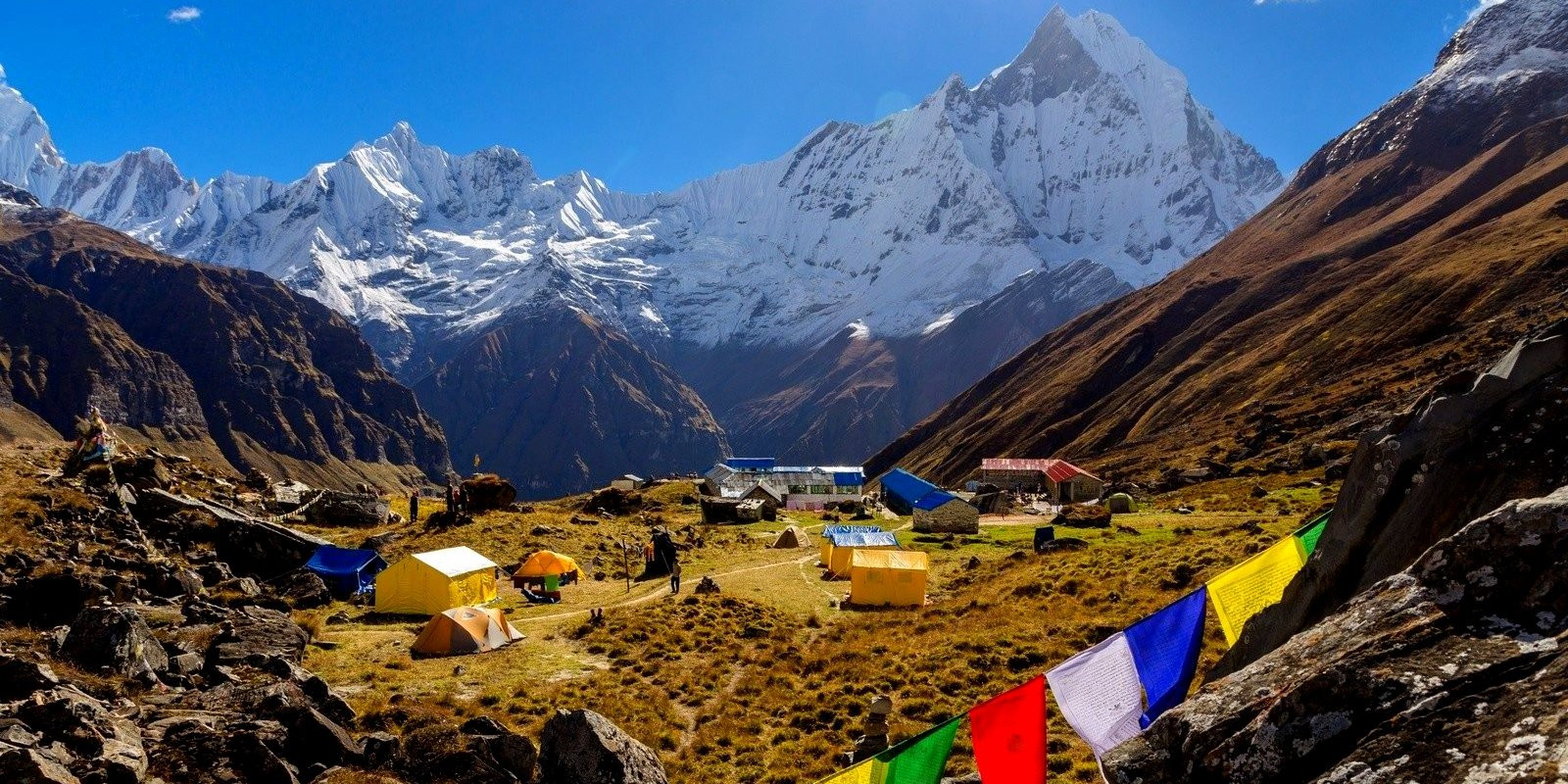
At Relax Getaways, we pride ourselves on being the premier choice for adventurers seeking to explore the top 10 longest treks in Nepal. Our unparalleled expertise and deep-rooted passion for the Himalayas set us apart as the best company for guiding you through Nepal's breathtaking landscapes and rich cultural heritage. Our meticulously curated treks are designed to offer you an immersive experience, combining the thrill of adventure with the serenity of nature's untouched beauty. From securing the necessary Himalayan trekking permits to providing expert guides who ensure your safety while enhancing your understanding of the local culture, Relax Getaways takes care of every detail. We understand the significance of embarking on such majestic journeys and strive to make your trekking adventure unforgettable. Choosing Relax Getaways means opting for a company that not only values the essence of Himalayan exploration but also prioritizes sustainable and responsible trekking practices. Join us on a journey that transcends the ordinary, where each step unveils the extraordinary marvels of Nepal's highest peaks and deepest valleys.
Table of Contents
Everest base camp trek.
The Everest Base Camp Trek is an iconic journey that offers trekkers the unparalleled opportunity to immerse themselves in the heart of the Himalayas, with the ultimate destination being the base camp of the world's highest peak, Mount Everest. This trek is not just about reaching a physical location; it's a journey that encompasses the spirit of adventure, the challenge of endurance, and a deep connection with the natural and cultural heritage of Nepal.
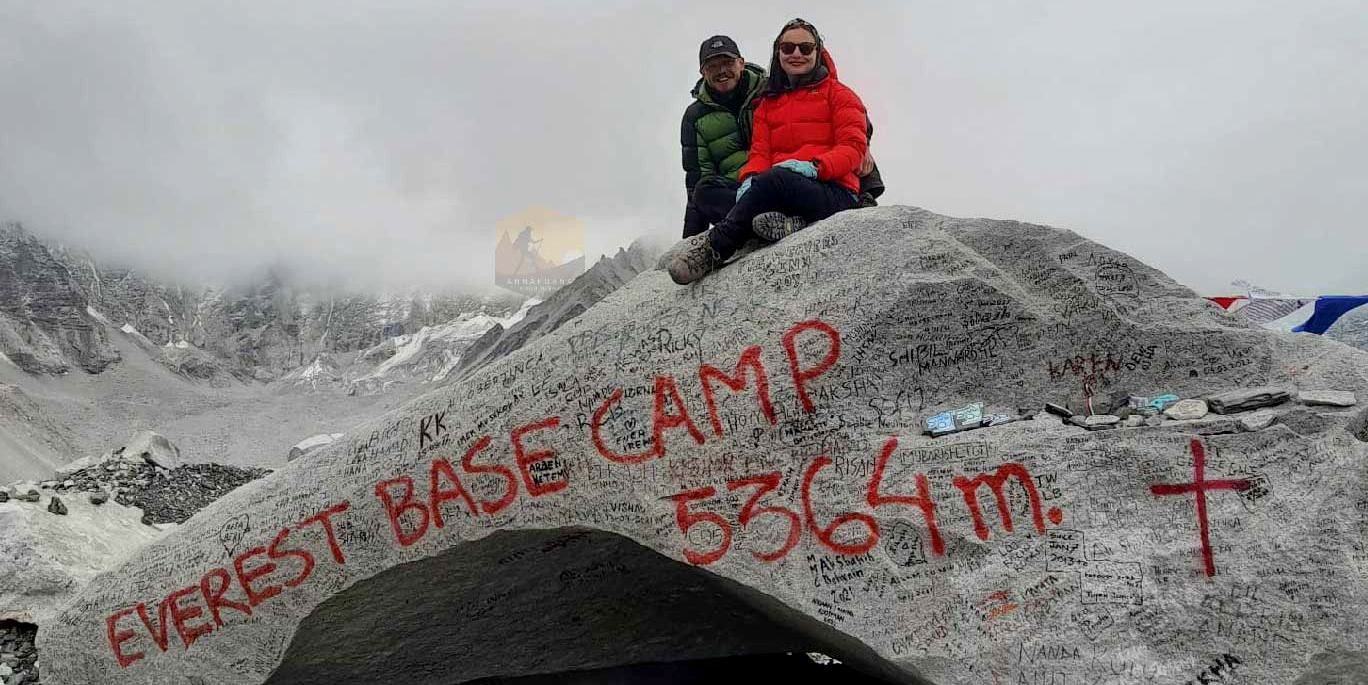
Highlights and What to Expect
Scenic Flight to Lukla : The trek typically begins with a scenic flight from Kathmandu to Lukla, offering breathtaking views of the Himalayas. Lukla itself is a bustling town and the gateway to the Everest region.
Sherpa Culture and Villages : As you trek through the Khumbu Valley, you'll pass through Sherpa villages such as Phakding, Namche Bazaar, Tengboche, and Dingboche. These villages are rich in culture and offer a glimpse into the daily lives of the Himalayan people.
Namche Bazaar : Often referred to as the gateway to the high Himalayas, Namche Bazaar is a vibrant town filled with cafes, lodges, and shops. It serves as an essential acclimatization stop for trekkers and climbers.
Tengboche Monastery : One of the spiritual highlights of the trek is visiting the Tengboche Monastery, the largest gompa in the Khumbu region. It offers panoramic views of Everest, Ama Dablam, and other high peaks.
Everest Base Camp and Kala Patthar : The climax of the trek is reaching Everest Base Camp, where you get to see the Khumbu Icefall. For the best views of Everest, a hike to Kala Patthar is highly recommended, especially for sunrise or sunset views.
Flora and Fauna : The trek traverses through the Sagarmatha National Park, a UNESCO World Heritage site, home to a variety of flora and fauna, including rhododendrons, pine forests, and possibly sightings of snow leopards and red pandas.
Preparation and considerations
Physical Fitness : The Everest Base Camp Trek is demanding. It requires good physical fitness and some preparation. Regular hiking, cardiovascular exercises, and strength training are recommended before undertaking this trek.
Permits and Regulations : All trekkers need to obtain the TIMS card (Trekker's Information Management System) and the Sagarmatha National Park permit. These are typically arranged by trekking agencies.
The Everest Base Camp Trek is a profound experience that leaves trekkers with a sense of accomplishment and awe. With its stunning landscapes, rich cultural experiences, and the majestic presence of Mount Everest, it's a journey that captures the imagination and spirit of every adventurer.
Annapurna Circuit Trek
The Annapurna Circuit Trek is one of Nepal's most famous and treasured hiking routes, encircling the Annapurna massif. This trek offers an incredibly diverse range of landscapes, from the lush subtropical forests and terraced rice paddies of the lower Marsyangdi Valley to the arid, Tibetan-like terrain of the upper Manang District. It's a journey that not only challenges and delights trekkers but also provides deep cultural immersion into the lives of the local Gurung and Thakali communities.
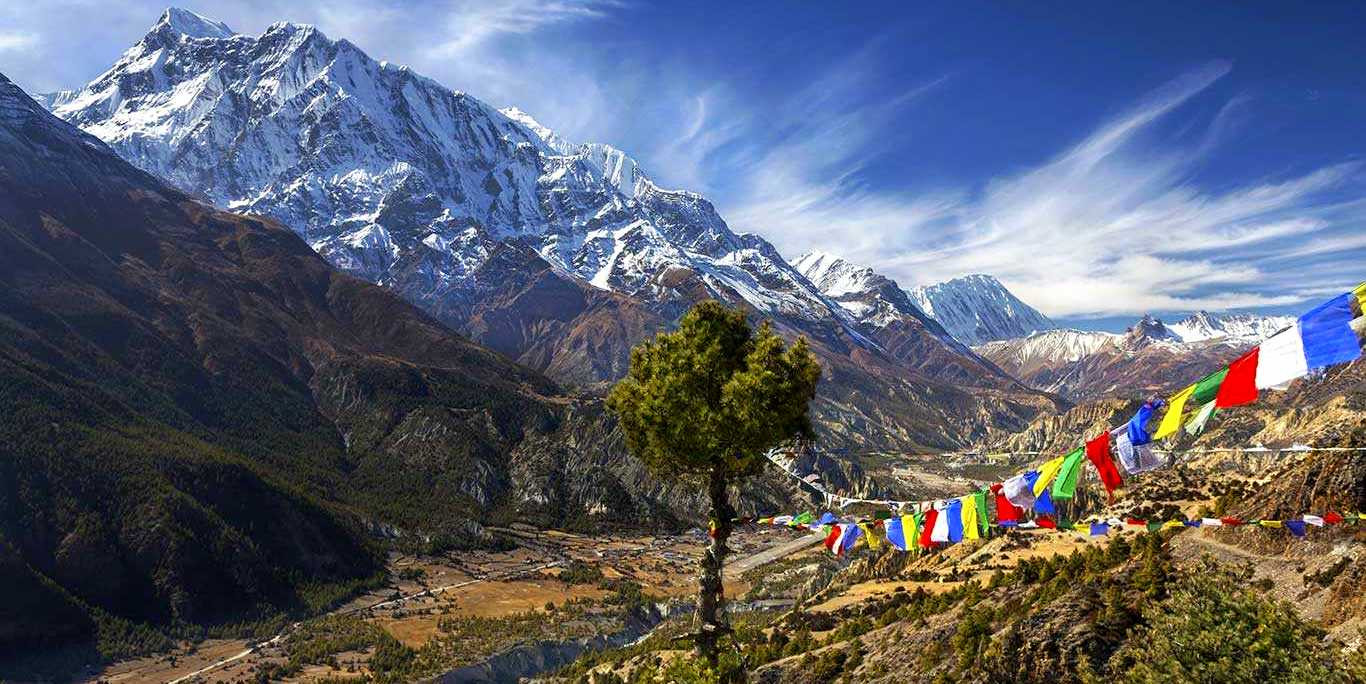
Crossing Thorong La Pass : At an elevation of 5,416 meters (17,769 feet), Thorong La is the highest point and the most challenging part of the trek. Crossing this pass offers a sense of unparalleled accomplishment along with stunning high Himalayan scenery.
Muktinath Temple : After descending from Thorong La Pass, trekkers visit Muktinath, a sacred site for both Hindus and Buddhists, symbolizing the harmony between the two religions.
Manang Village : Before tackling Thorong La, trekkers rest and acclimatize in Manang, a beautiful village known for its unique culture and the spectacular views of Annapurna III and Gangapurna.
Marpha Village : Famous for its apple orchards and apple products like brandy and cider, Marpha is a charming Thakali village with whitewashed houses and paved streets, offering a peaceful respite after the arduous trek.
Hot Springs at Tatopani : Near the end of the trek, many enjoy a relaxing soak in the natural hot springs of Tatopani, believed to have healing properties.
Preparation and Considerations
Acclimatization : Proper acclimatization is crucial to safely crossing Thorong La Pass. The trek includes planned rest days, particularly in Manang, to help trekkers adjust to the altitude.
Physical Fitness : The Annapurna Circuit is a moderately challenging trek that demands good physical condition. Preparation should include cardiovascular training, strength exercises, and hiking practice.
The Annapurna Circuit Trek is a rewarding experience that combines physical challenges with cultural insights and breathtaking natural beauty. It's a journey that takes trekkers through the heart of the Nepalese Himalayas, offering an unforgettable adventure that spans some of the world’s most awe-inspiring landscapes.
Manaslu Circuit Trek
The Manaslu Circuit Trek is an exceptional journey that wraps around Mount Manaslu, the world's eighth-highest peak, offering a more secluded trekking experience compared to Nepal's more famous routes. This trek is renowned for its stunning natural beauty, cultural richness, and the challenge it presents to trekkers. It's a fantastic option for those looking to experience the raw beauty of the Himalayas without the crowds found on the Everest Base Camp or Annapurna Circuit treks.
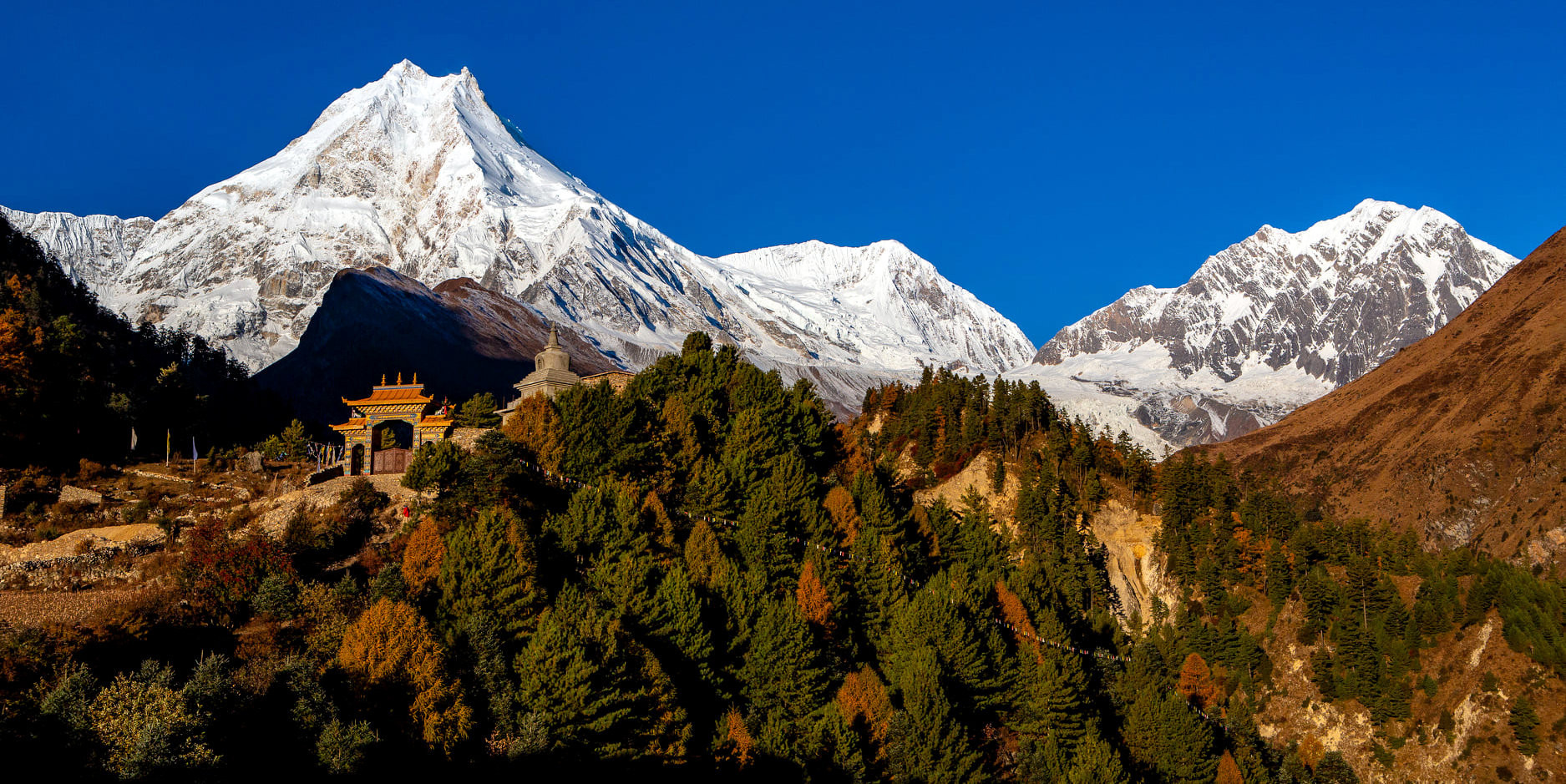
Remote and Less Crowded : The Manaslu Circuit Trek takes you through remote parts of Nepal, offering a more intimate experience with nature and local cultures.
Breathtaking Scenery : The trek offers diverse landscapes, from lush forests and terraced fields in the lower regions to dramatic mountain passes and glaciers as you ascend.
Cultural Immersion : The trek passes through ancient Buddhist monasteries and villages where you can experience the rich culture of the Tibetan and Nepali people living in harmony with the harsh nature of the Himalayas.
Larkya La Pass : Crossing the Larkya La Pass at 5,106 meters (16,752 feet) is the most challenging and rewarding part of the trek, providing panoramic views of Himalayan giants like Himlung Himal, Cheo Himal, and Kang Guru.
Physical Fitness : The Manaslu Circuit is considered challenging. It requires a good level of physical fitness, as the trek involves long days of walking, often at high altitudes.
Acclimatization : Proper acclimatization is crucial to safely completing the trek. The itinerary generally includes rest days, particularly before crossing the Larkya La Pass.
Choosing the Manaslu Circuit Trek means opting for an adventure that combines physical challenges with deep cultural insights and breathtaking landscapes. It's an opportunity to step off the beaten path and explore the untouched beauty of one of Nepal's most majestic regions.
Upper Mustang Trek
The Upper Mustang Trek unveils the hidden world of the ancient Kingdom of Lo, offering a unique glimpse into life in one of Nepal's most remote and untouched regions. This trek is not just a journey through stunning landscapes but also a passage back in time, to explore a culture that has remained largely isolated for centuries.
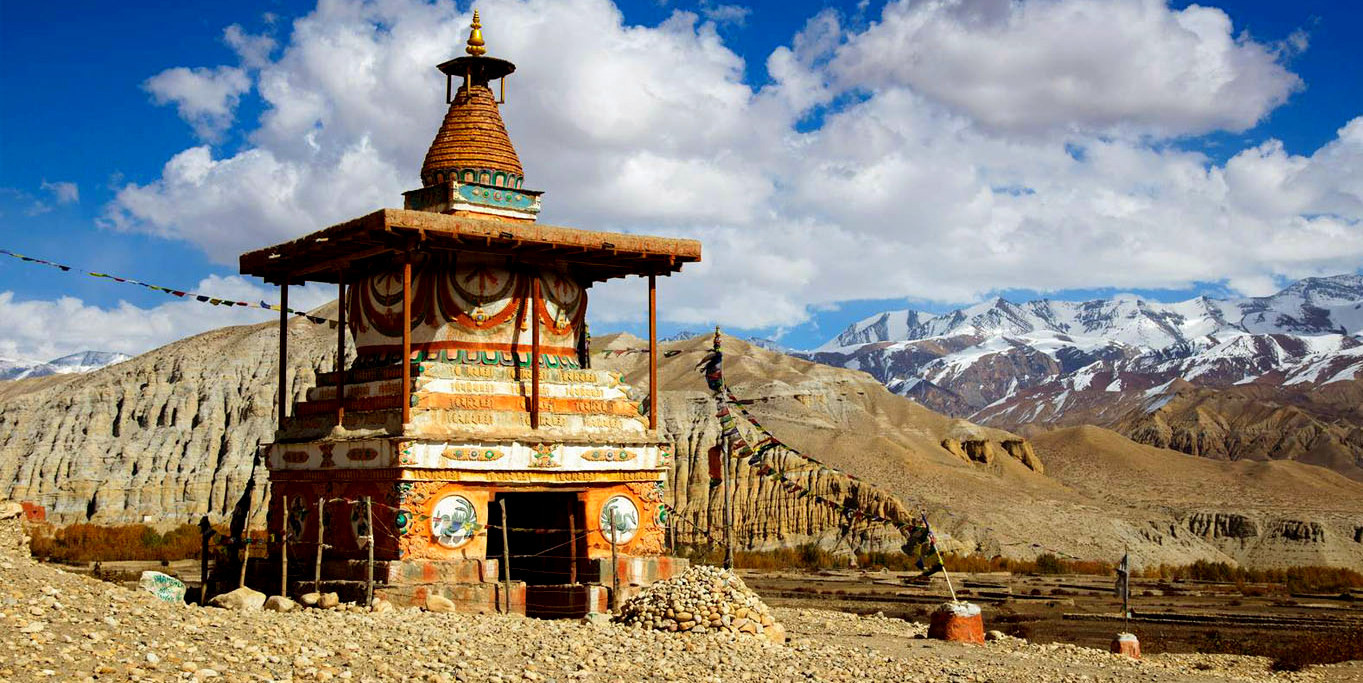
Lo Manthang : The walled city of Lo Manthang, once the capital of the Kingdom of Lo, is a highlight of the trek. This medieval town is a treasure trove of ancient Tibetan Buddhist art and culture, home to monasteries, palaces, and a royal palace.
Stunning Landscapes : The trek offers dramatic desert landscapes, deep canyons, and rock shelves set against a backdrop of snow-capped peaks. The region's stark beauty is unlike anywhere else in the Himalayas.
Tibetan Culture : Upper Mustang is a region where Tibetan culture remains intact and vibrant. The trek provides an opportunity to immerse oneself in the traditions and customs of the local people, who are among the last to practice Tibetan Buddhism in its unadulterated form.
Ancient Caves and Art : The trekking route is dotted with ancient caves carved into cliff faces, some of which are thousands of years old. The area is also known for its beautiful Buddhist art and frescoes.
Altitude and Terrain : The trek is not technically challenging, but the high altitude and dry air can make the trek strenuous. Acclimatization days are built into the itinerary to help trekkers adjust.
Sustainability and Respect : Given the cultural sensitivity and ecological fragility of the Upper Mustang, trekkers are urged to travel with a sense of responsibility and respect for the local customs and environment.
An Upper Mustang Trek with an experienced guide and a reputable trekking company is crucial for a safe and enriching experience. This journey offers more than just scenic beauty; it's an opportunity to connect with a way of life that has remained unchanged for centuries, providing a profound and unforgettable adventure.
Kanchenjunga Base Camp Trek
The Kanchenjunga Base Camp Trek is a journey to the base camps of the world’s third highest mountain, Kanchenjunga, located on the border between Nepal and India. This trek is renowned for its remoteness, spectacular mountain scenery, and the rich cultural experiences it offers, making it a must-do for avid trekkers seeking adventure away from more crowded trails.
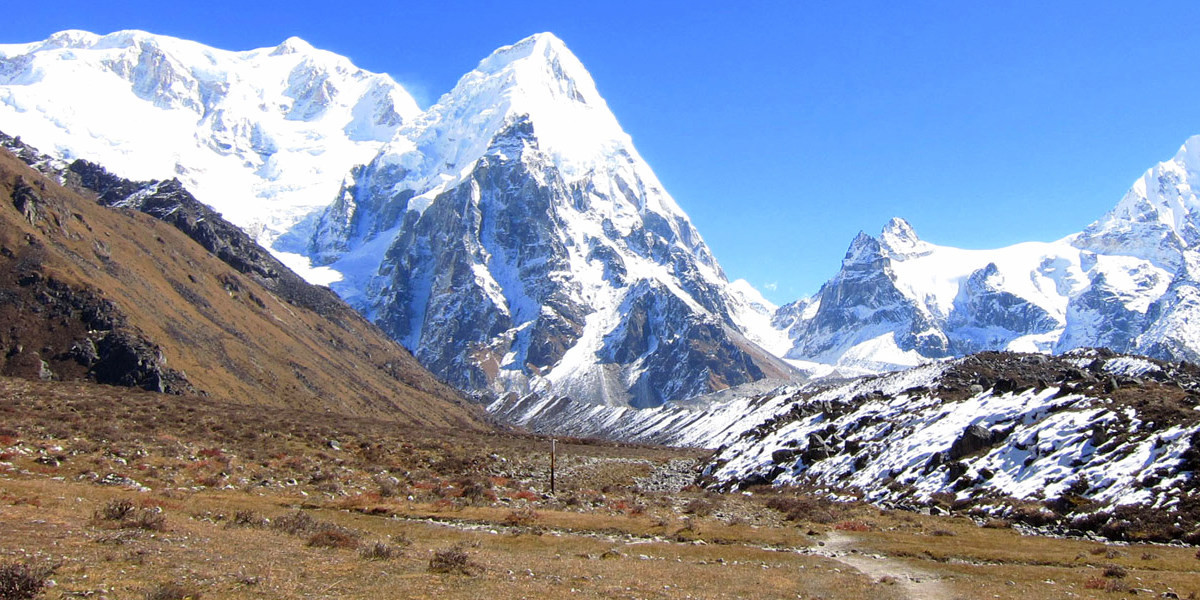
Diverse Ecosystems : The trek traverses through diverse ecosystems, including tropical jungles at lower elevations, verdant rhododendron forests, and high alpine zones, offering a variety of flora and fauna unique to the region.
Stunning Mountain Views : Trekkers are rewarded with breathtaking views of the Kanchenjunga massif, along with other Himalayan giants such as Makalu, Lhotse, and Everest, from certain vantage points.
Remote Villages and Culture : The route passes through remote villages where life remains largely unchanged by modernity. It offers an opportunity to witness the rich cultural heritage of the Limbu, Sherpa, and Rai communities.
Kanchenjunga Conservation Area : The trek lies within the Kanchenjunga Conservation Area, which is home to diverse wildlife, including the snow leopard, red panda, and Himalayan black bear.
Physical Challenge : This trek is considered one of the more challenging in Nepal due to its length, altitude, and the remote terrain it covers. Adequate physical preparation and acclimatization are essential.
Sustainability and Respect : Given the ecological sensitivity of the area, trekkers are urged to follow Leave No Trace principles to minimize their impact on the environment and respect local customs and traditions.
The Kanchenjunga Base Camp Trek is an adventure that promises not just the thrill of trekking in the Himalayas but also an immersive cultural experience. It's a journey that challenges the body and enriches the soul, offering unparalleled insights into one of the planet’s most pristine mountain environments.
Dolpo Circuit Trek
The Dolpo Circuit Trek is an extraordinary journey into one of the most remote and unspoiled regions in Nepal, offering trekkers a unique blend of breathtaking landscapes, ancient Tibetan culture, and rare wildlife sightings. This area, made famous by Peter Matthiessen’s book “The Snow Leopard” and Eric Valli’s film “Himalaya,” remains a rugged and mystical world waiting to be explored.
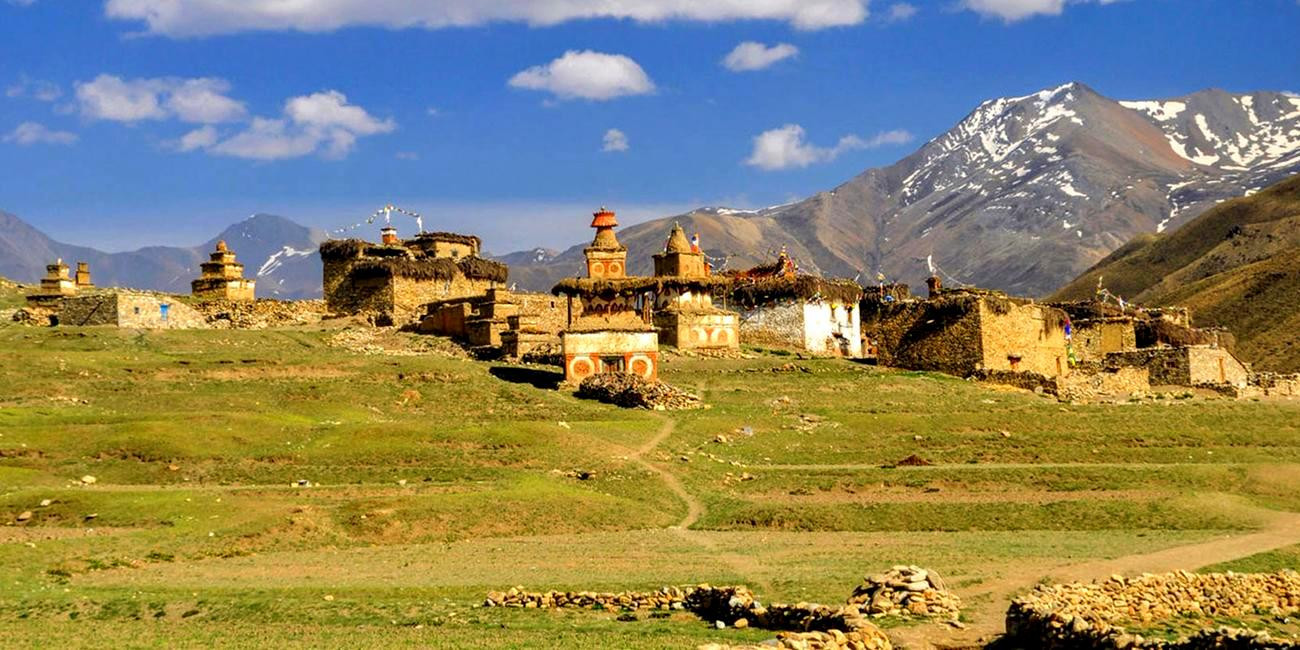
Shey Phoksundo Lake : One of the most stunning natural features on the trek is Shey Phoksundo Lake, Nepal's deepest and second-largest lake. The turquoise waters set against a backdrop of stark, snow-capped mountains create a scene of unparalleled beauty.
Tibetan Culture : Dolpo is home to one of the highest settlements on earth and a stronghold of traditional Tibetan culture. Trekkers can visit ancient monasteries (Gompas) like Shey Gompa, which is over 800 years old, offering a glimpse into the spiritual life of the region.
Remote Trails : The Dolpo Circuit takes you through trails less traveled, offering peace and solitude amidst spectacular mountain scenery. The region's remoteness means that trekkers are likely to encounter more yaks than humans on certain trails.
Diverse Ecosystems : The trek traverses different ecosystems, from arid landscapes and stark cliffs to lush forests. The Phoksundo National Park, part of the trek, is known for its rich biodiversity, including the elusive snow leopard, Himalayan blue sheep, and musk deer.
Supplies and Equipment : Given the region's remoteness, it’s crucial to be well-prepared with all necessary supplies and equipment. Opportunities to buy supplies are limited once the trek begins.
Physical Fitness and Experience : The Dolpo Circuit Trek is considered challenging due to its high altitude, length, and the absence of modern facilities. Trekkers should be physically fit and preferably have some experience with high-altitude trekking.
Dolpo Circuit Trek is an adventure into the heart of the Himalayas, offering not just physical challenges but also profound cultural and spiritual experiences. It’s a journey that promises to be as rewarding as it is demanding, unveiling the mysteries and beauties of one of Nepal’s most secluded treasures.
Makalu Base Camp Trek
The Makalu Base Camp Trek is an exceptional journey that leads adventurers to the base of Mount Makalu, the world’s fifth highest mountain, standing at 8,463 meters (27,766 feet). This trek is less frequented compared to the Everest or Annapurna treks, offering a more solitary experience amidst some of the most spectacular landscapes in the Himalayas. It's known for its diverse terrain, ranging from the lush Arun Valley to the stark, high-altitude desert.
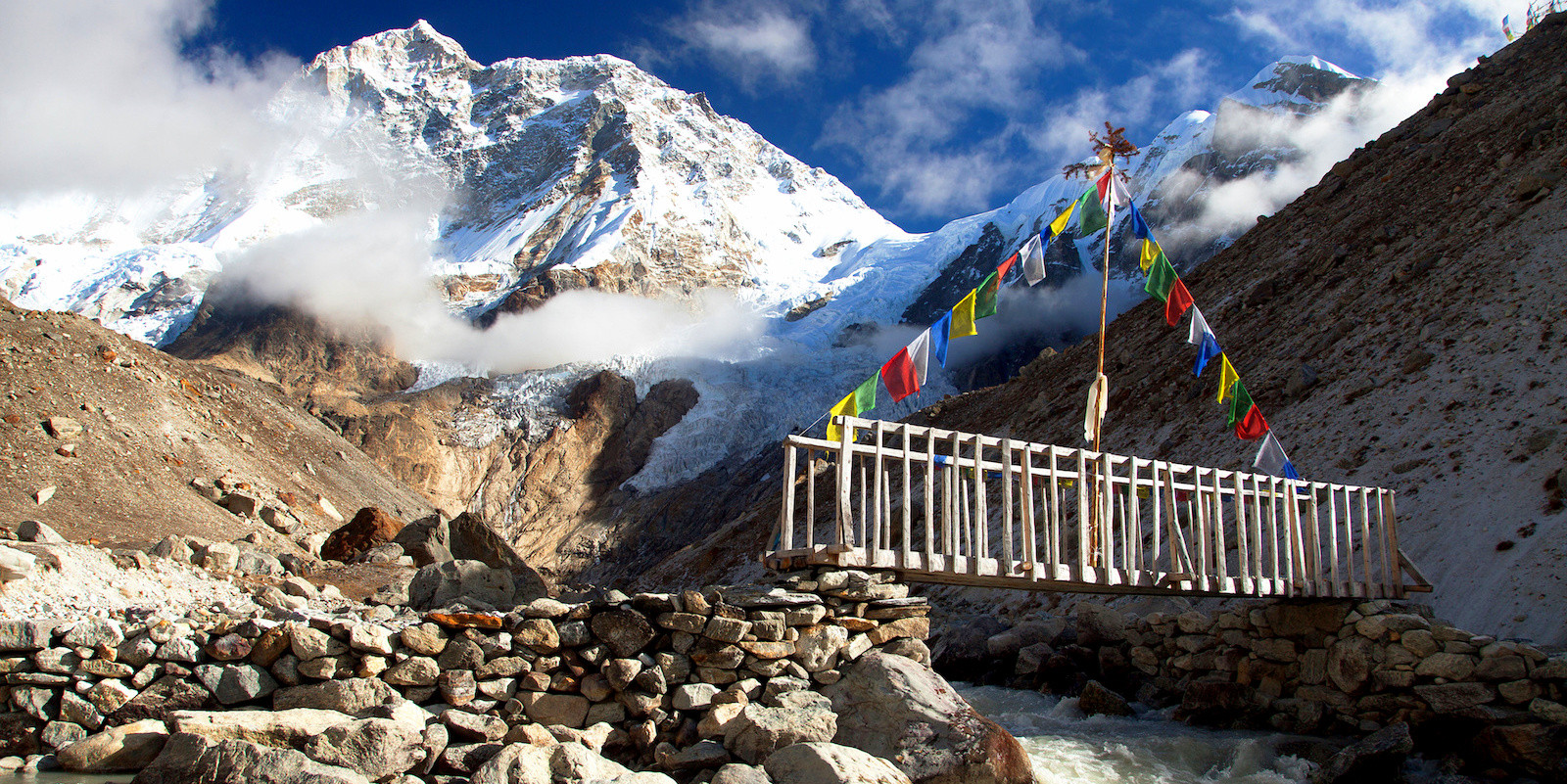
Arun Valley : The trek begins with an exploration of the Arun Valley, known for its rich biodiversity. This area provides an excellent opportunity to witness the varied flora and fauna of the region.
High-Altitude Terrain : As trekkers ascend, the lush subtropical forests give way to alpine meadows and finally to the barren landscapes of the Makalu Barun National Park, showcasing a dramatic transition of ecosystems.
Makalu-Barun National Park : This protected area is a part of the larger Sacred Himalayan Landscape. It is home to several rare species of flora and fauna, including the red panda and the snow leopard.
Makalu Base Camp : The trek's pinnacle is reaching the Makalu Base Camp, which offers awe-inspiring views of Makalu’s south face, along with Everest, Lhotse, and Baruntse, among others.
Physical fitness : This trek is considered challenging due to its remote location, high altitudes, and the need for proper acclimatization. Trekkers should be in excellent physical condition and have some experience with high-altitude hiking.
Supplies and Equipment : Given the trek's remote nature, it's crucial to be well-equipped with all necessary gear and supplies. Options for resupply along the route are limited, especially in the higher altitudes.
The Makalu Base Camp Trek is an adventure that promises not just the thrill of high-altitude trekking but also an intimate experience with the natural and pristine beauty of the Himalayas. It's a journey that challenges the body, stimulates the mind, and enriches the soul, offering an unforgettable experience for those who undertake it.
Rara Lake Trek
The Rara Lake Trek is a journey to Nepal's largest lake, Rara, nestled within the remote landscapes of the Mugu District in the northwest of Nepal. This trek is distinguished by its tranquil beauty, relatively easy trails, and the unique opportunity to immerse oneself in the serene wilderness of Rara National Park. It's an ideal choice for those seeking solitude and a deep connection with nature, away from the more frequented trekking routes in Nepal.
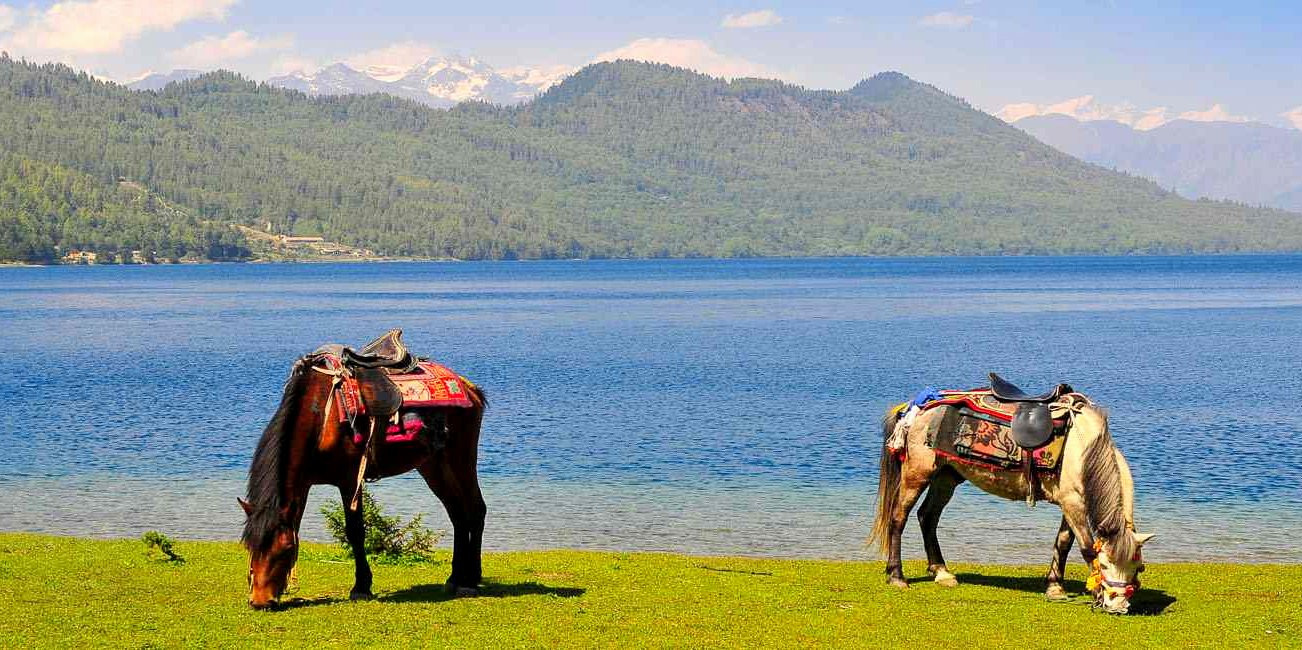
Rara Lake : The centerpiece of the trek, Rara Lake, is renowned for its stunning azure waters that reflect the surrounding snow-capped peaks. It spans an area of almost 11 square kilometers and sits at an elevation of 2,990 meters (9,810 feet). The lake is a haven for birdwatchers, with species such as the Himalayan monal and danphe.
Rara National Park : The trek passes through Rara National Park, which is home to a variety of wildlife, including Himalayan black bears, musk deer, and possibly snow leopards. The park's forests are a mix of coniferous trees and rhododendrons, offering vibrant colors, especially during the spring and autumn seasons.
Remote Villages : The trek to Rara Lake takes you through remote villages where you can experience the daily lives and culture of the local Jumla and Mugu communities, which remain largely untouched by modernity.
Scenic Flights : Accessing the Rara Lake region typically involves scenic flights to Jumla or Talcha Airport from Nepalgunj, offering aerial views of Nepal's diverse landscapes.
Altitude Sickness : Although the trek is not at an extremely high altitude, it’s important to be mindful of altitude sickness and acclimatize properly.
Supplies and Facilities : Given the trek's remote nature, it's important to carry essential supplies. While there are basic guesthouses and homestays along the way, the facilities are modest.
The Rara Lake Trek offers a unique blend of natural beauty, cultural encounters, and the tranquility of one of Nepal’s most pristine environments. It's a journey that appeals to trekkers looking to explore the road less traveled, offering peace, solitude, and an unfiltered experience of nature’s majesty.
Mardi Himal Trek
The Mardi Himal Trek is a hidden gem among the trekking destinations in Nepal, offering a less crowded alternative to the more popular routes in the Annapurna region. This trek is rapidly gaining popularity for its scenic beauty, manageable difficulty, and the intimate experience it offers with the majestic Himalayas, particularly the spectacular views of Mardi Himal, Machhapuchhre (Fishtail), Annapurna South, and Hiunchuli.
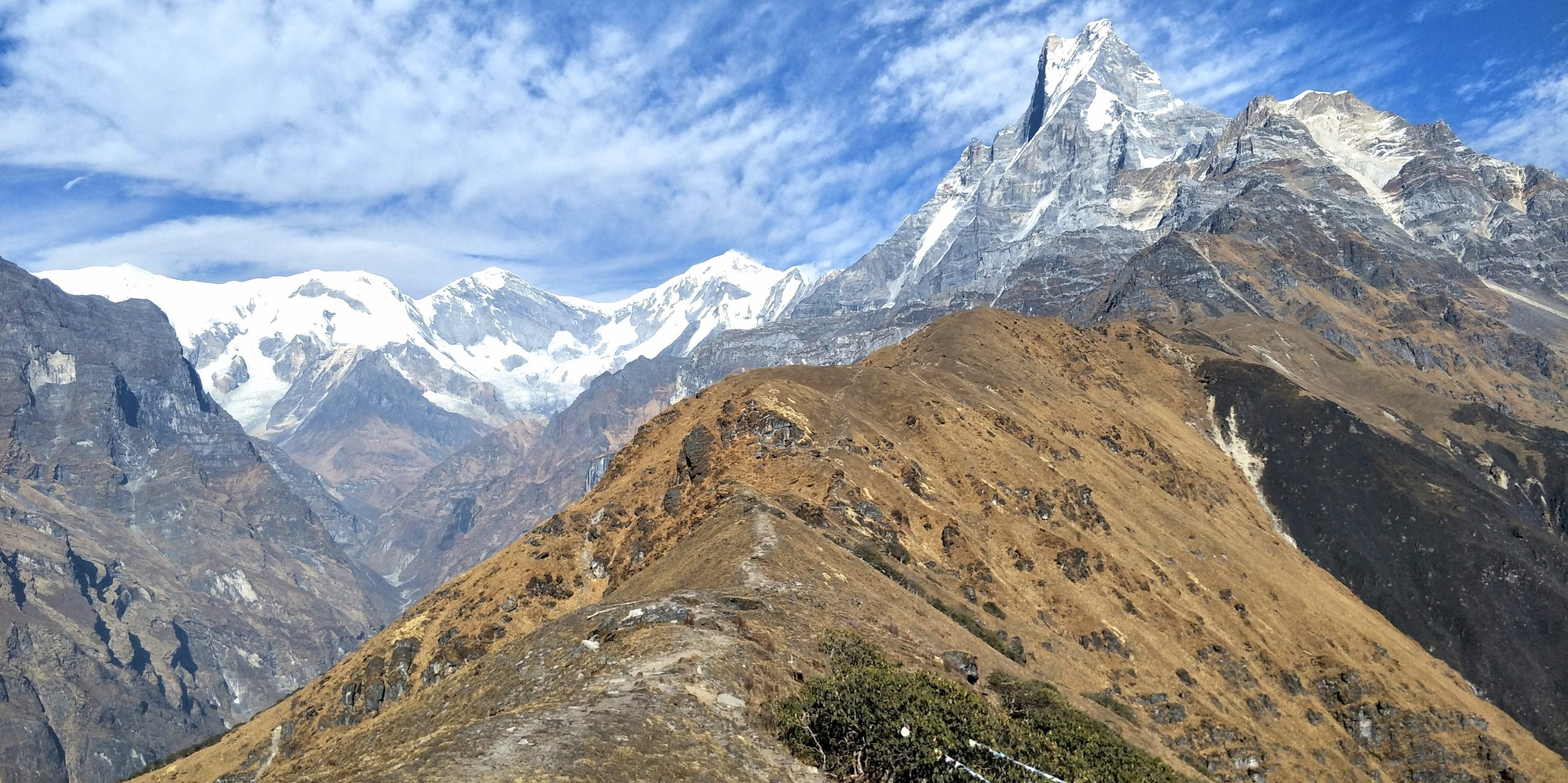
Spectacular Mountain Views : The trek provides up-close views of Mardi Himal, Machhapuchhre, Annapurna South, and Hiunchuli. The viewpoint at Mardi Himal Base Camp is particularly noteworthy for its breathtaking panoramic views.
Diverse Ecosystems : Starting from the subtropical forest at an altitude of around 1,400 meters, the trail moves through dense rhododendron forests before entering the high alpine environment, showcasing a wide range of biodiversity.
Cultural Experience : The trek passes through traditional Gurung villages, offering trekkers the opportunity to experience the local culture, traditions, and hospitality of the Himalayan people.
Off-the-Beaten-Path : Despite its growing popularity, the Mardi Himal Trek remains relatively uncrowded, especially when compared to the Everest Base Camp or Annapurna Circuit treks. This allows for a more serene and personal experience with nature.
Trek Difficulty : The trek is considered moderate in difficulty. It doesn't require technical climbing skills but does demand good physical fitness and stamina to enjoy the trek fully.
Accommodation : The trek offers basic teahouses and lodges along the route, providing a comfortable and authentic trekking experience. These facilities allow trekkers to pack light, relying on local amenities for food and lodging.
Mardi Himal Trek is an adventure that promises the beauty of the Annapurna region without the crowds, making it an excellent choice for those looking to explore the tranquility and majesty of the Himalayas in a more intimate setting.
Gokyo Ri Trek
The Gokyo Ri Trek is a magnificent journey in the Everest region that takes trekkers through the heart of the Himalayas, offering an alternative route to the traditional Everest Base Camp Trek. This trek is celebrated for its stunning natural beauty, including the serene Gokyo Lakes, the breathtaking views from Gokyo Ri itself, and the opportunity to traverse the Ngozumpa Glacier, the largest glacier in Nepal.
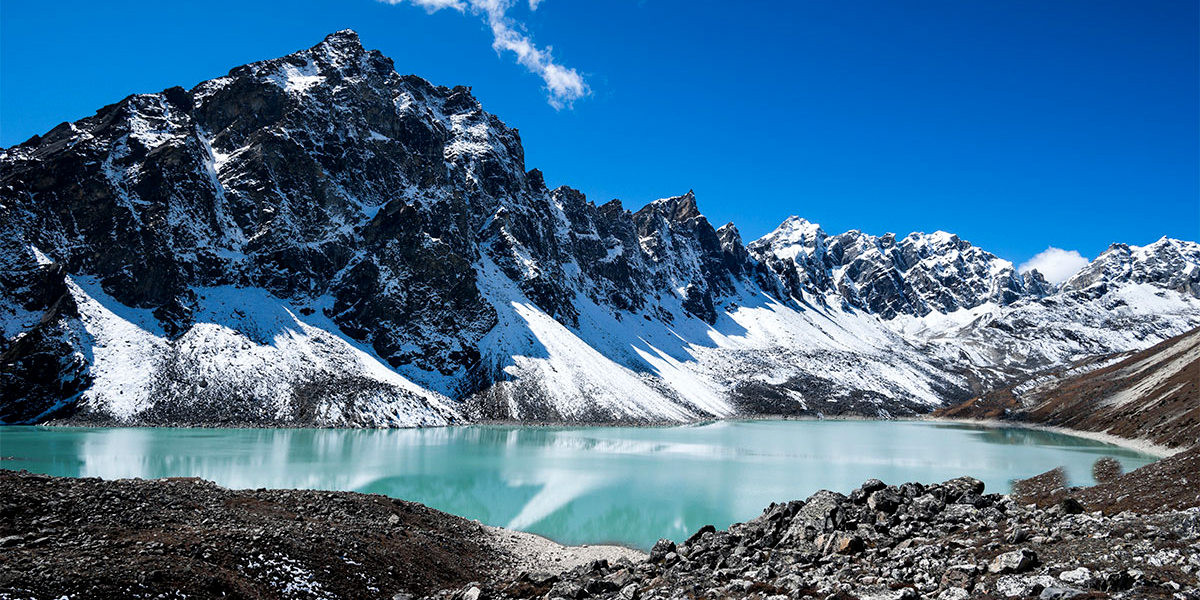
Gokyo Lakes : The trek features the Gokyo Lakes, a series of six turquoise high-altitude lakes. The third lake, Dudh Pokhari, is where Gokyo Village is situated, providing a stunning setting with the backdrop of Cho Oyu, the sixth highest mountain in the world.
Gokyo Ri Summit : The climb to Gokyo Ri (5,357 m/17,575 ft) is a highlight, offering panoramic views of Everest, Lhotse, Makalu, Cho Oyu, and other Himalayan giants. The viewpoint is considered one of the best in the Everest region.
Ngozumpa Glacier : Trekkers will cross the Ngozumpa Glacier, an impressive and challenging part of the trek, showcasing the rugged terrain of the Himalayas.
Renjo La Pass : For those extending their trek, crossing the Renjo La Pass provides stunning views and a challenging hike, connecting the Gokyo Valley with the Bhote Koshi Valley.
Altitude Sickness : As with any high-altitude trek, the risk of altitude sickness is present. It's essential to acclimatize properly and be mindful of the symptoms.
Physical Fitness : The trek is considered moderate to challenging, requiring good physical fitness. Preparation should include cardiovascular training and strength exercises.
The Gokyo Ri Trek is an extraordinary adventure for those looking to experience the beauty of the Everest region beyond the well-trodden paths to Everest Base Camp. It combines natural wonders with physical challenges, offering an unforgettable experience amidst some of the world's highest peaks.
Health and Safety for Top 10 Longest Treks in Nepal
Health and safety are paramount considerations when embarking on the top 10 longest treks in Nepal. These treks can be demanding, with risks ranging from altitude sickness to unpredictable weather conditions. Here’s a consolidated guide to ensuring your well-being while trekking in the Himalayas:
Altitude Sickness
Understand the symptoms , which can include headache, nausea, dizziness, and fatigue. Altitude sickness can affect anyone, regardless of fitness level.
Acclimatize properly by incorporating rest days into your itinerary, especially when ascending above 2,500 meters.
Ascend slowly to give your body time to adjust to the altitude.
Hydration and Nutrition
Stay hydrated by drinking at least 3–4 liters of water daily. Avoid alcohol and caffeine, as they can dehydrate you.
Eat high-calorie food rich in carbohydrates to maintain energy levels throughout your trek.
Personal Hygiene
Hand hygiene is crucial to preventing stomach illnesses. Use hand sanitizer and wash your hands regularly.
Be cautious with water sources . Drink only boiled or purified water.
Trekking Safely
Wear appropriate gear , including sturdy trekking boots, moisture-wicking clothing, and a warm sleeping bag.
Prepare for all weather conditions with waterproof clothing, extra layers for cold weather, and sun protection.
Never trek alone in remote areas. A guide can be invaluable for navigation and in emergencies.
Health Insurance
- Ensure you have travel insurance that covers high-altitude trekking and emergency evacuation. Confirm the coverage details and altitude limits.
Listen to Your Body
- Be mindful of your physical condition and don’t push beyond your limits. Rest when needed and alert your guide if you feel unwell.
Emergency Preparedness
Carry a basic first-aid kit, including medication for altitude sickness, water purification tablets, band-aids, and pain relievers.
Know the signs of frostbite and hypothermia in cold weather treks and how to respond.
Environmental Hazards
Be aware of weather conditions and potential hazards such as landslides or snow avalanches, especially in monsoon and winter months.
Respect wildlife and maintain a safe distance.
By following these health and safety guidelines, trekkers can minimize risks and enjoy the majestic beauty of Nepal’s Himalayas. Always remember, the mountain will always be there; the key is to return from it safely.
Tips for Top 10 Longest Treks in Nepal
Embarking on one of Nepal's top 10 longest treks is an adventure of a lifetime. These treks offer unparalleled beauty, challenging terrains, and the opportunity to immerse oneself in the diverse cultures of Nepal. To ensure a successful and enjoyable journey, here are some essential tips:
Proper Preparation and Training: Start preparing months in advance with regular cardiovascular exercises, strength training, and hiking practice. Conditioning your body will make high-altitude trekking more manageable and enjoyable.
Acclimatize Appropriately: Altitude sickness can affect anyone, regardless of fitness level. Schedule acclimatization days in your itinerary, particularly for treks that go above 3,000 meters. Listen to your body and take it slow.
Choose the Right Season: The best times for trekking in Nepal are during the pre-monsoon (spring) and post-monsoon (autumn) seasons. These periods offer the clearest skies, the most stable weather, and the best mountain views.
Pack Wisely: Bring layers of clothing to adapt to the changing temperatures. Essential gear includes a good quality backpack, a sleeping bag rated for cold temperatures, and sturdy trekking boots. Don’t forget a first-aid kit, water purification tablets, and sunscreen.
Hire a Guide or Porter: Especially for remote treks, hiring a guide or porter can enhance your experience. They provide valuable insights into the culture and environment, help with logistics, and support the local economy.
Obtain Necessary Permits: Many treks in Nepal require permits, such as the TIMS (Trekker's Information Management System) card and national park or conservation area permits. For restricted areas, special permits are needed. Arrange these in advance, usually through a trekking agency.
Respect Local Customs: Nepal is a country rich in cultural traditions. Show respect by dressing modestly, taking off your shoes before entering temples or homes, and greeting people with “Namaste.”
Stay Hydrated and Eat Well: Drink plenty of water to stay hydrated, especially at high altitudes. Enjoy the local cuisine, which is nutritious and designed to fuel your trekking adventures.
Leave No Trace: Preserve the pristine environments by carrying out all your trash, avoiding single-use plastics, and respecting wildlife and plant life.
Travel Insurance: Ensure you have travel insurance that covers high-altitude trekking. Check that it includes medical evacuation in case of emergencies.
Embrace the Experience: Finally, while physical preparation is crucial, having a positive attitude and an open mind can make your trek even more memorable. Be prepared for the unexpected and enjoy every moment of your journey through the Himalayas.
Each trek in Nepal offers its own set of challenges and rewards. By following these tips, you’re setting yourself up for a successful and unforgettable trekking experience.
Best Time for Top 10 Longest Treks in Nepal
The best time for trekking in Nepal varies across different treks, but generally falls into two main seasons: pre-monsoon (spring) and post-monsoon (autumn). These periods offer the clearest skies, moderate weather, and the most stable conditions for trekking. Here's a brief overview tailored to the top 10 longest treks in Nepal:
Spring (March to May): Spring is one of the most popular times for trekking in Nepal. The weather is generally warm and stable, and the skies are clear, offering excellent views of the Himalayas. This season also sees the landscapes come alive with blooming rhododendrons and other wildflowers, especially at lower altitudes. All major treks, including Everest Base Camp, Annapurna Circuit, and Langtang Valley, are highly recommended during this time.
Summer/Monsoon (June to August): Summer coincides with the monsoon season in Nepal, bringing heavy rainfall, especially in the lower regions and valleys, which can lead to leeches on the trails and landslides in some areas. However, regions like Upper Mustang and Dolpo, which lie in the rain shadow of the Himalayas, remain relatively dry and are excellent trekking options during the monsoon.
Autumn (September to November): Autumn is considered the best season for trekking in Nepal due to its clear skies, stable weather, and moderate temperatures. This season offers spectacular mountain views and is suitable for all trekking routes in Nepal, including both popular treks like Everest Base Camp and off-the-beaten-path treks like Manaslu Circuit or Kanchenjunga Base Camp.
Winter (December to February): Winter brings colder temperatures, especially at higher altitudes, and some high passes may be closed due to snow. However, lower altitude treks like the Poon Hill trek, and some parts of the Annapurna Circuit and Langtang Valley, can still be accessible and offer beautiful trekking conditions with fewer tourists. Trekkers should be prepared for cold weather and ensure they have the appropriate gear.
Each season offers a unique trekking experience in Nepal, with varying landscapes, temperatures, and challenges. Choosing the best time for your trek depends on the specific regions you wish to explore, your tolerance for cold or rainy conditions, and your preference for solitude versus sharing the trails with other trekkers.
The top 10 longest treks in Nepal offer a rich tapestry of experiences, from the breathtaking heights of Everest Base Camp to the remote, mystical landscapes of Dolpo. These treks invite adventurers to explore the vast diversity of Nepal's natural beauty, cultural heritage, and challenging terrains. Ideal during the spring and autumn for the best weather conditions, each journey demands preparation, respect for local customs, and a spirit of adventure. Embarking on any of these treks not only tests your physical limits but also offers a profound connection with the natural world and insight into the lives of the communities residing in these remote areas. Trekking in Nepal is an adventure that promises to be as enriching as it is challenging, leaving trekkers with lasting memories and a deep appreciation for the majesty of the Himalayas.
FAQs for Top 10 Longest Treks in Nepal
Q: What is the best time to trek in Nepal?
A: The optimal trekking seasons are during the pre-monsoon spring (March to May) and post-monsoon autumn (September to November) for stable weather and clear mountain views.
Q: Do I need a guide for trekking in Nepal?
A: While not mandatory for all treks, hiring a guide is recommended for safety, navigation, and gaining insights into local culture, especially on longer and more remote trails.
Q: Are permits required for trekking in Nepal?
A: Yes, trekkers need to obtain permits such as the TIMS card, national park entry permits, and special permits for restricted areas, which can be arranged through trekking agencies or at the Nepal Tourism Board office.
Q: How can I prevent altitude sickness?
A: Prevent altitude sickness by acclimatizing properly with gradual ascents, staying hydrated, eating well, avoiding alcohol, and considering preventive medication upon advice from a healthcare professional.
Q: What should I pack for a trek in Nepal?
A: Essential items include layered clothing, a high-quality sleeping bag, trekking boots, first-aid kit, water purification means, sunscreen, sunglasses, and a hat, along with navigation tools like a map or GPS device.
Q: Can I trek in Nepal without previous trekking experience?
A: Beginners can undertake easier treks like the Poon Hill trek; however, longer and challenging treks require good physical fitness and some trekking experience for safety.
Q: What is the accommodation like on the treks?
A: Accommodation ranges from basic teahouses with simple rooms and communal dining to camping in remote areas. Comfort levels vary with the trek's remoteness.
Q: How much does it cost to trek in Nepal?
A: The cost varies based on trek length, whether you hire guides/porters, accommodation type, and daily expenses. Remote treks or those requiring special permits may cost more.
For the Nepal tour, please click here.
If you are looking for different kinds of Nepal Tours or Trekking Packages, feel free to contact us .
- Luxury Trekking

Jyoti Karki is an expert travel blogger. She has been writing blogs for a long time. Along with writing about diverse locations. She personally travels to many different places, went hiking and trekking in Nepal, and has also visited several areas of India and enjoys writing on her blogs about them.
Recent Posts
- Top 10 Historical Landmarks in India
- Things to do in India
- Easy Treks in Nepal
- Best Time for Trekking in Nepal
- Restricted Area Trekking in Nepal
Related Posts
- Top 10 Best Things to do in Kathmandu
- Himalayan Helicopter Tours in Nepal
- Wine Tasting in Nepal
- Culture and Tradition
- Photography

Annapurna Circuit Trek in Nepal: The Ultimate Guide
Jackson Groves
Posted on Last updated: October 20, 2023
Categories NEPAL , HIKING
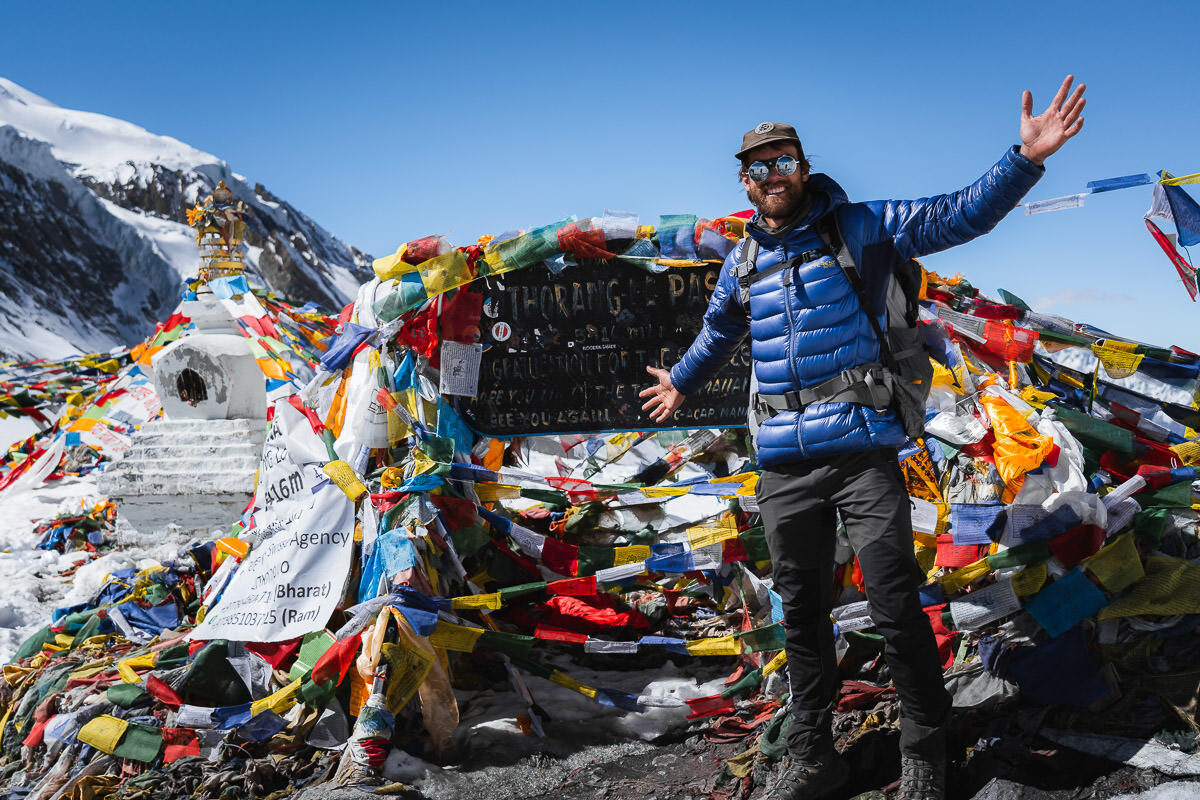
The Annapurna Circuit Trek is one of the most popular expeditions in the Himalayas of Nepal. While Everest Base Camp may be the most well-known trek in Nepal, the Annapurna Circuit Trek is definitely a close second! I’ve done both the EBC and the Annapurna Circuit Trek among many other routes in Nepal.
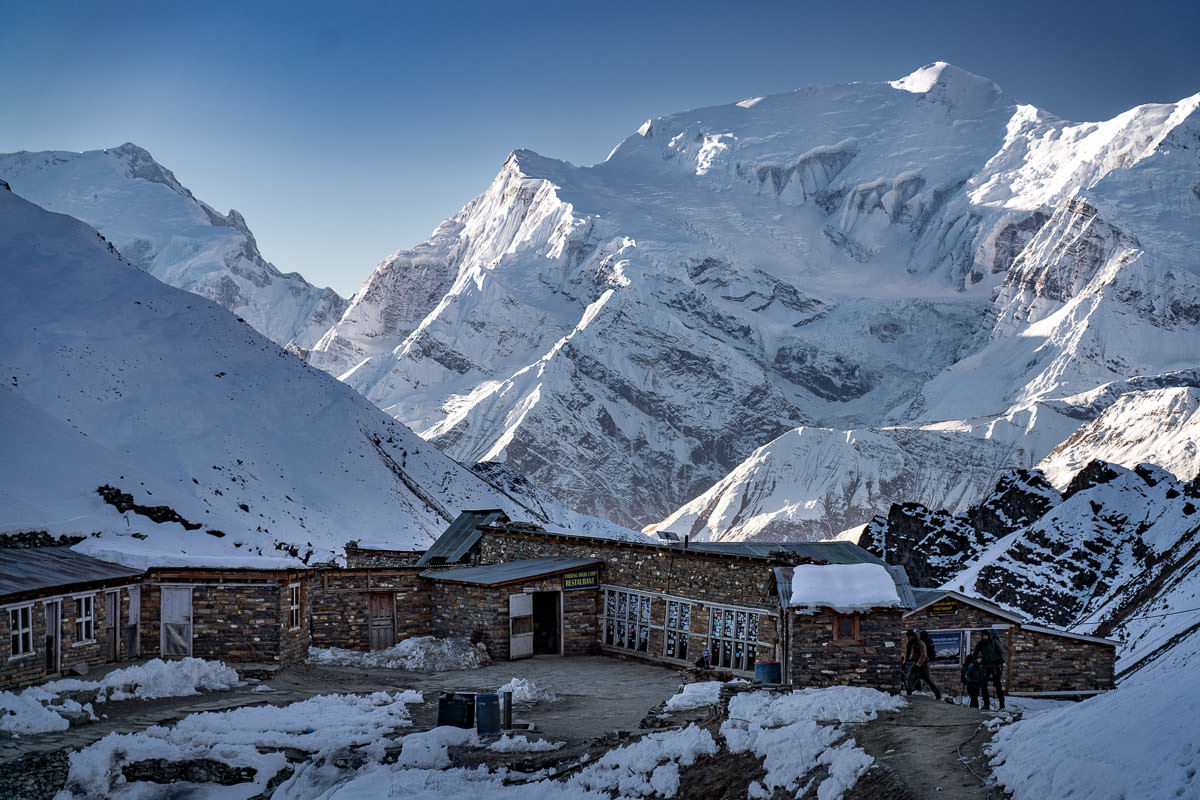
BEST TREKKING COMPANY IN NEPAL
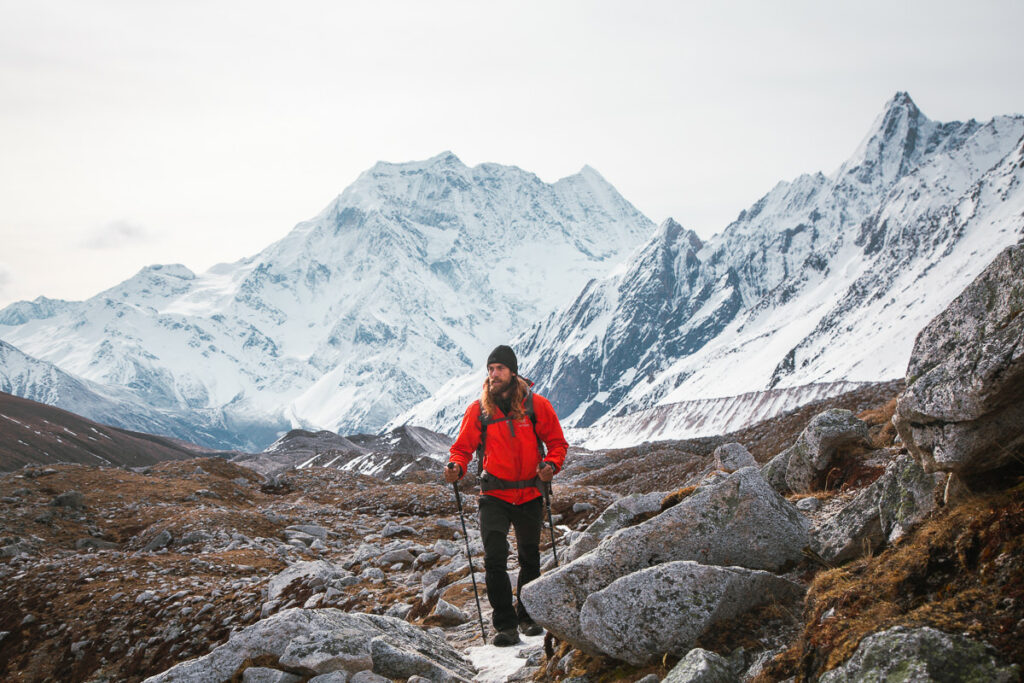
Interested in trekking in Nepal or doing the Everest Base Camp Trek? I recommend booking your trek with Himalayan Masters , which is the company I use for all of my treks in Nepal. Use my code JACKSON5 when you book to receive a 5% DISCOUNT .
In this guide, I will share with you my experience on multiple routes throughout the Himalayas to help prepare you for your trekking experience. Overall I would rate the Annapurna Circuit as the most scenic trek in Nepal from the first day to the last.
We looked at 7000m and 8000m peaks from the first to the last day, had amazing tea house locations, and were blown away by the scenery every single day. However, there are some negatives that modernization and commercialism have brought to the Annapurna Trekking Circuit with roads, infrastructure, and pollution. I’ll cover all aspects of this route to give you an honest insight into what to expect and why you may want to choose this route for your trip.
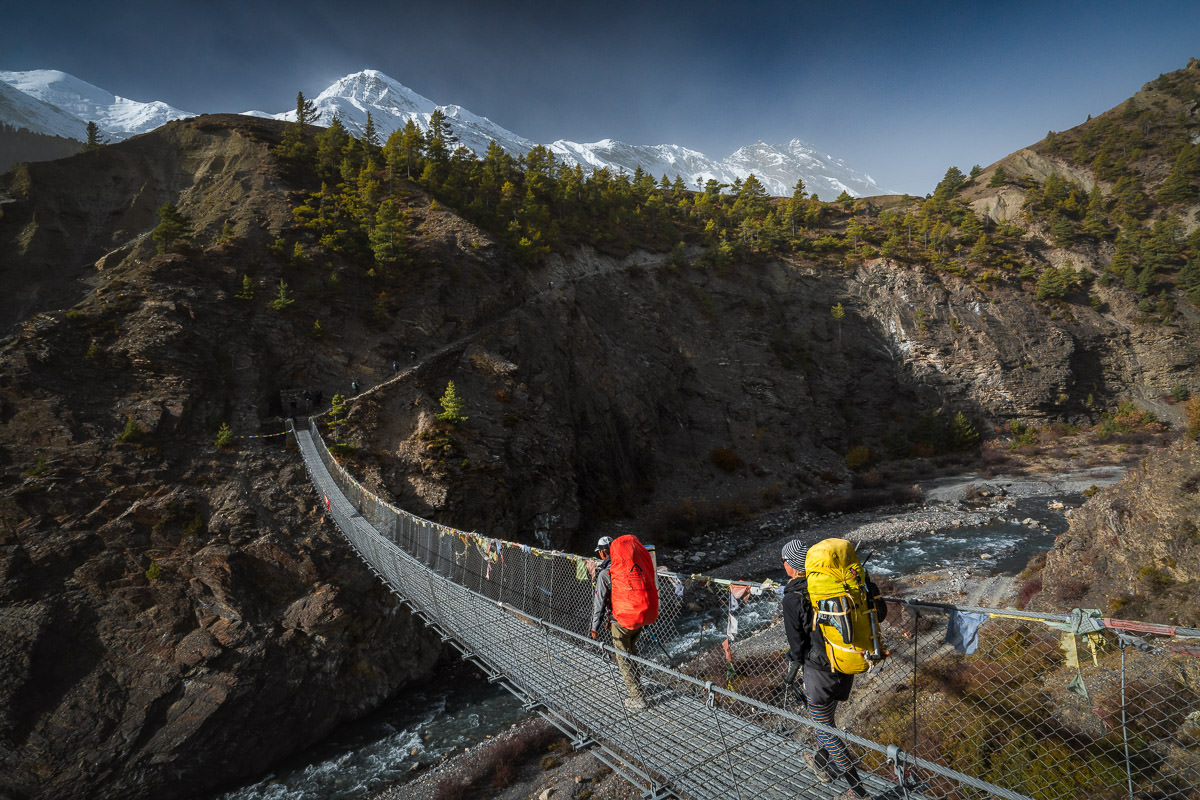
In this blog post, I will cover everything you need to know about the logistics of the Annapurna Circuit Trek. I’ve also created guides for the following treks and climbs in Nepal if you are interested to check those out as well.
- Manaslu Circuit Trek
- Everest Base Camp Trek
- Makalu Base Camp Trek
- Langtang Valley Trek
- Island Peak Climb
- Yala Peak Climb
- Ama Dablam Climb
- Manaslu Climb
- Makalu Climb
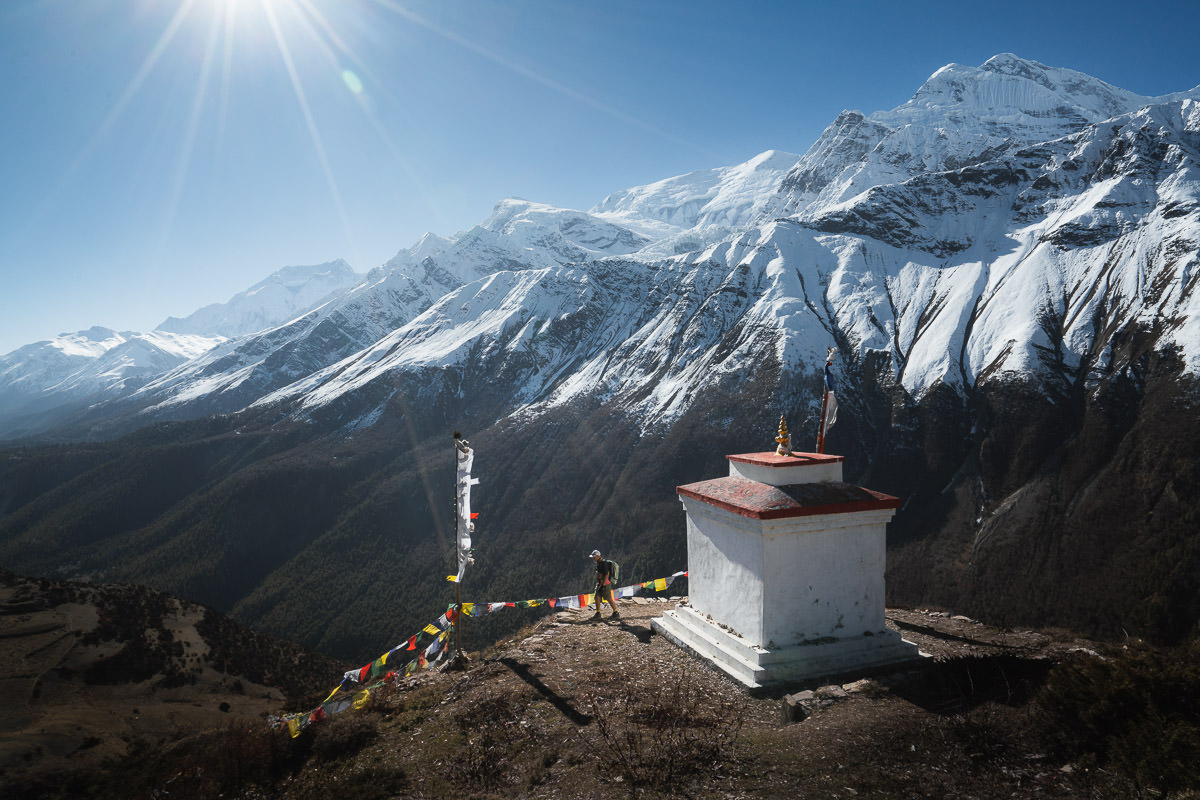
TRY THE 3 BEST TREKS IN NEPAL

Manaslu Circuit : My personal favorite 2-week trek through Tibetan villages and stunning scenery. Less crowded and more authentic.
Annapurna Circuit : The most beautiful & scenic 2-week trek in Nepal although can be crowded at times.
Everest Base Camp Trek : The most iconic 2-week route reaching the famous (EBC) Everest Base Camp at 5,300m.
Table of Contents
A GUIDE TO THE ANNAPURNA CIRCUIT TREK
In this guide, you will find all of the valuable information you need to plan your trek as well as my personal experience on the entire trek including the detour to Tilicho Lake
ANNAPURNA CIRCUIT TREK DETAILS
- Distance : 130km or 80 miles
- Days required : 10-13 days
- Total Incline : 8000 meters
- Total Decline : 7000 meters
- The highest point on the trek : The two highest points on the trek are Tilicho Lake (4,919m) and the Thorong La Pass (5,416m).
- Difficulty : The difficulty of the Annapurna Circuit Trek depends a lot on how many days you have. If you break it up over 12-14 days, it will be similar to the difficulty of EBC. However, we took only one acclimatization/rest day in Manang and the itinerary was quite tough for us given we squeezed into Tilicho Lake. Many days were about 20km of distance with 1000m of incline.
- Permits : You will need a TIMS card and Park Entrance Permit, both can be purchased when entering the park.
- Guide: A guide is not required on this trek. However, the guide manages all of the logistics, distances, directions, and tea houses for your group. I used maps.me to navigate from tea house to tea house and found the paths easy to follow. If it’s your first time trekking in Nepal, I would suggest having a guide.
- Accommodation: Guest Houses, also known as Tea Houses, are available along the way where you will sleep in a comfortable bed and have access to showers (at extra charge) and restaurant facilities. It was very comfortable accommodation and great after a long day of hiking.
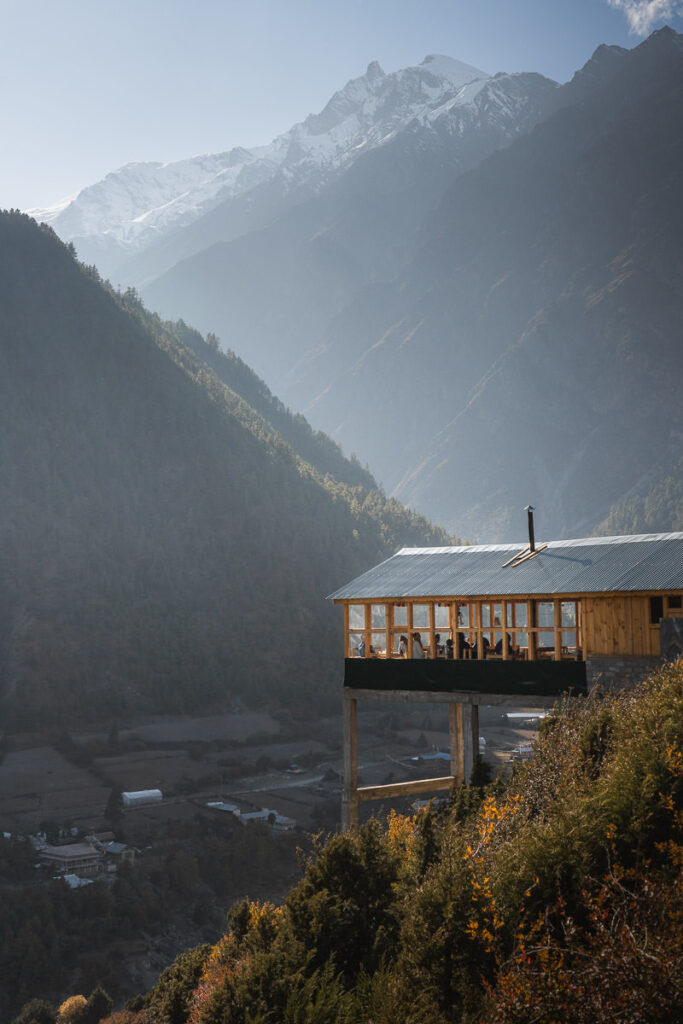
KEY POINTS ABOUT THE ANNAPURNA CIRCUIT TREK
- This circuit is less crowded than Everest Base Camp Trek but still quite busy. Especially around Tilicho Base Camp as many locals just come to trek to the Lake and don’t do the full circuit.
- There are teahouses in each village along the way so each night you get a great sleep in a bed with blankets, have access to showers, eat great meals in a restaurant, and can charge your electronics and cameras.
- The trailhead can be reached by car so there is no need to pay for expensive domestic flights.
- The road reached all the way to Khangsar, which means it isn’t quite as remote, peaceful and natural as you may be expected until the latter stages of the hike. There are side trails most hikers take for better views and to avoid the cars but nonetheless, it can be demoralizing to see a car full of tourists drive past as you eat their dust.
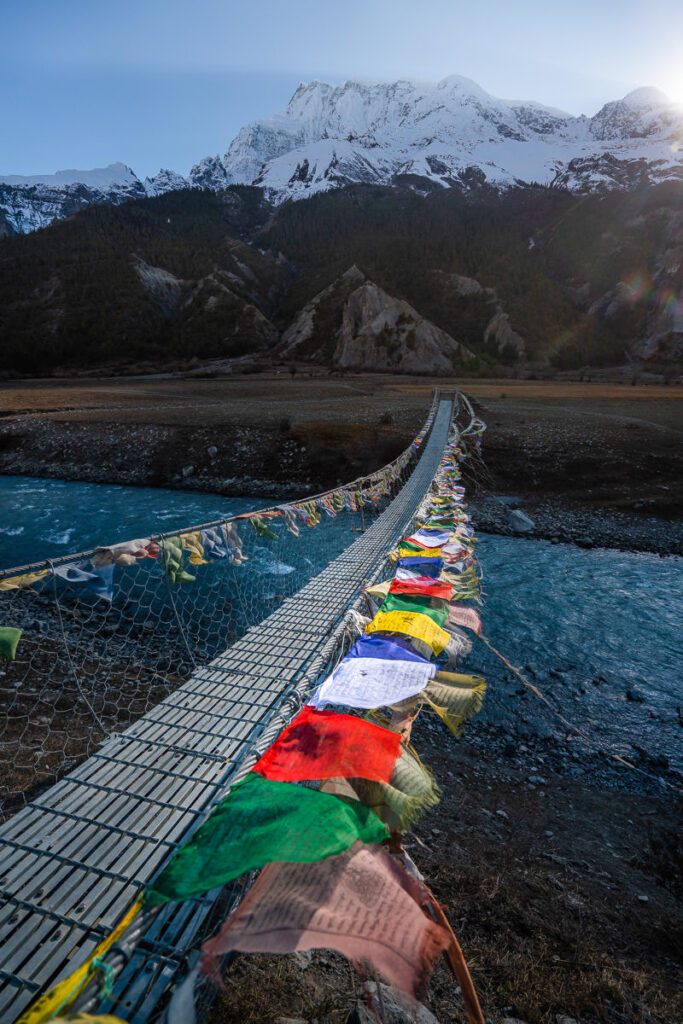
TOP 3 PLACES TO STAY IN KATHMANDU

- Ultimate Luxury: The Dwarika’s Hotel – Luxury, Spa-service, Pool
- Best Value : Aloft Kathmandu Thamel – Swimming Pool, Gym & Great Restuarant
- Budget Choice: Hotel Jampa is easily the top cheap hotel in Kathmandu
BOOKING A GUIDE FOR THE ANNAPURNA CIRCUIT TREK
The Annapurna Circuit Trek doesn’t require a guide but it’s great to have a guide managing the logistics such as directions, tea houses, distances, medical issues, and the overall organization. I’d say 80% of trekkers go with a guide. I did the trek with Himalayan Masters which is one of the top trekking companies when it comes to the Annapurna Circuit Trek.
The trek costs around $1400 USD with Himalayan Masters as of 2022 and includes all transfers, accommodation, meals, drinks, permits, and even the hotel stay before and after the trek at a high-quality hotel. I honestly had a great time on this trek and I can wholeheartedly recommend Himalayan Masters.
You can use my discount code ‘ JACKSON5 ‘ for 5% off the total price of your trek with Himalayan Masters which is a pretty handy saving.
Email: [email protected]
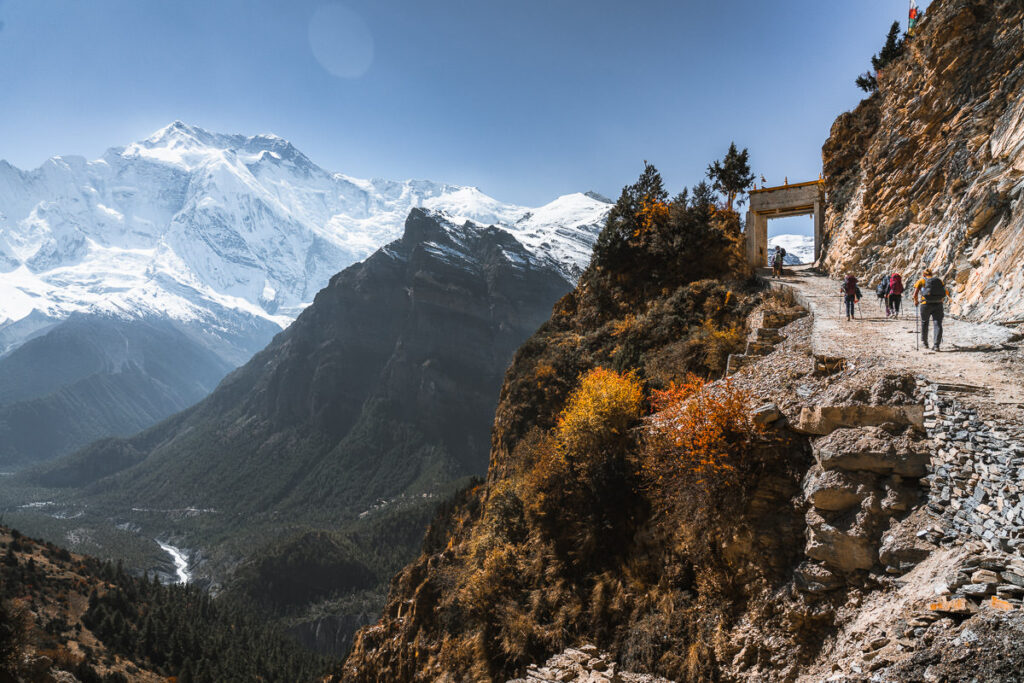
ANNAPURNA CIRCUIT TREK PACKING LIST
I packed pretty light and managed to wash most of my clothes each afternoon/night for the first half of the trip. In the latter stages of the trip, it was pretty cold so we weren’t sweating as much and we wore our warm gear basically nonstop while at the teahouses. There was no real need for multiple outfits.
This is just a guide and it worked quite well for me with no complaints from my set-up. You won’t need a sleeping bag as there are blankets in each guesthouse and when it got cold I just wore my down jacket to bed. This meant I didn’t have to carry a sleeping bag for the entire trek.
- 1 pair of pants that maybe convert to shorts
- 1 pair of shorts
- 1 Warm or thicker pair of hiking pants
- 1 Long sleeve quick-dry shirt
- 1 Long-sleeve thermal shirt
- 2 Short-sleeve t-shirts
- 1 Thermal long underwear
- 4 pairs of quick-dry underwear
- 1 Lightweight down jacket
- 1 Heavy-duty summit down jacket
- 1 Neck Buff
- Hiking boots
- 1 pair of warm summit socks
- 2-3 pairs of regular socks
- Trekking poles
- Water filter
All of this should fit into a backpack no bigger than 50L and should be less than 14kg.
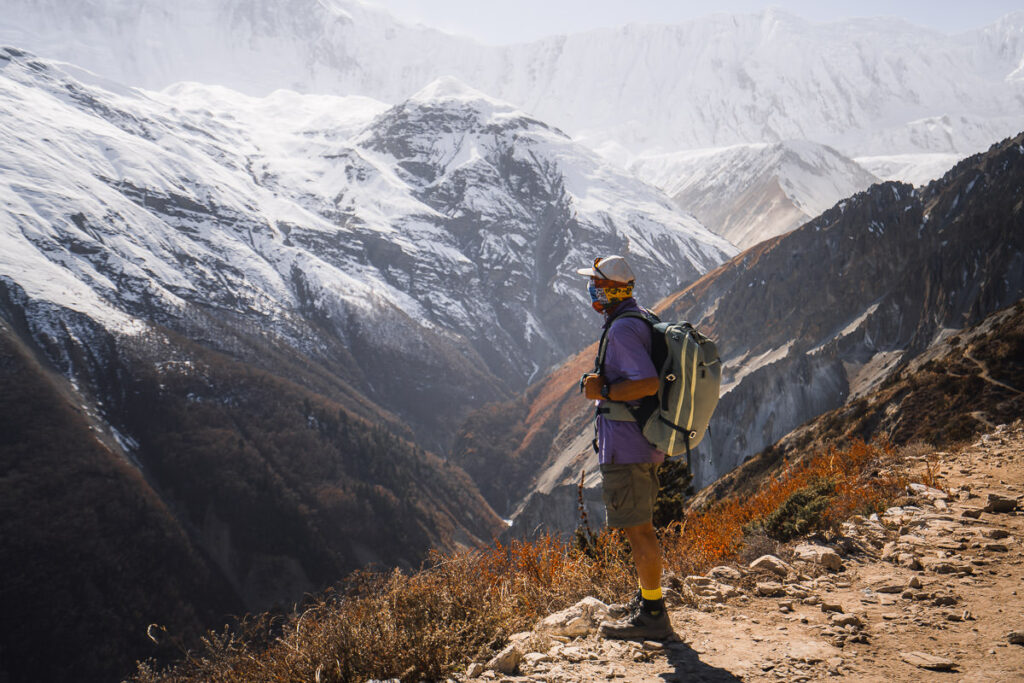
What are my favorite pieces of hiking gear?
There are four pieces of gear that I simply never forget when I go on a hike. These are four items that I using right now and this list gets updated every year! Here are my hiking essentials.
- Arcteryx BETA AR Rain Jacket : This is my go-to rain jacket. It’s super light, folds down into a tiny ball, and protects brilliantly in a storm. This one never leaves my backpack.
- Salomon X Ultra 3 Mid GTX Hiking Boots : For the best ankle support, waterproofing, and durable exterior I’m a fan of tough but light hiking boots like these Salomons for my adventures.
- Black Diamond Head Torch : I can’t tell you how many times, I’ve arrived back from a hike unexpectedly late. I always keep this lightweight but strong headtorch in my bag for the unexpected.
- Darn Tough Socks : These are the most comfortable hiking socks I’ve ever worn and last for years. They also have a lifetime warranty and you just send them in with a hole and they replace it no questions asked.
WIFI/ELECTRICITY AVAILABILITY ON THE ANNAPURNA CIRCUIT TREK
- Wifi: Costs anywhere from $0 to $4 to use wifi at the guesthouses. Buy an NTC Sim before you go. It worked in some spots but after Pisang, the service dropped and it was mostly WiFi until we got across the pass to Muktinath.
- Electricity: You will have to pay anywhere from $0 at low elevations to $5 to charge your power banks, cameras, and phones. I found that most rooms had free electricity powerpoints in the room. The key is to get a big power bank. Pay to charge it then charge everything from your power bank. My power bank lets me charge my phone and four camera batteries before it dies. Most of the places we stayed let us charge our gear for free but when it is busy they usually charge a fee as many teahouses run off gas or solar.
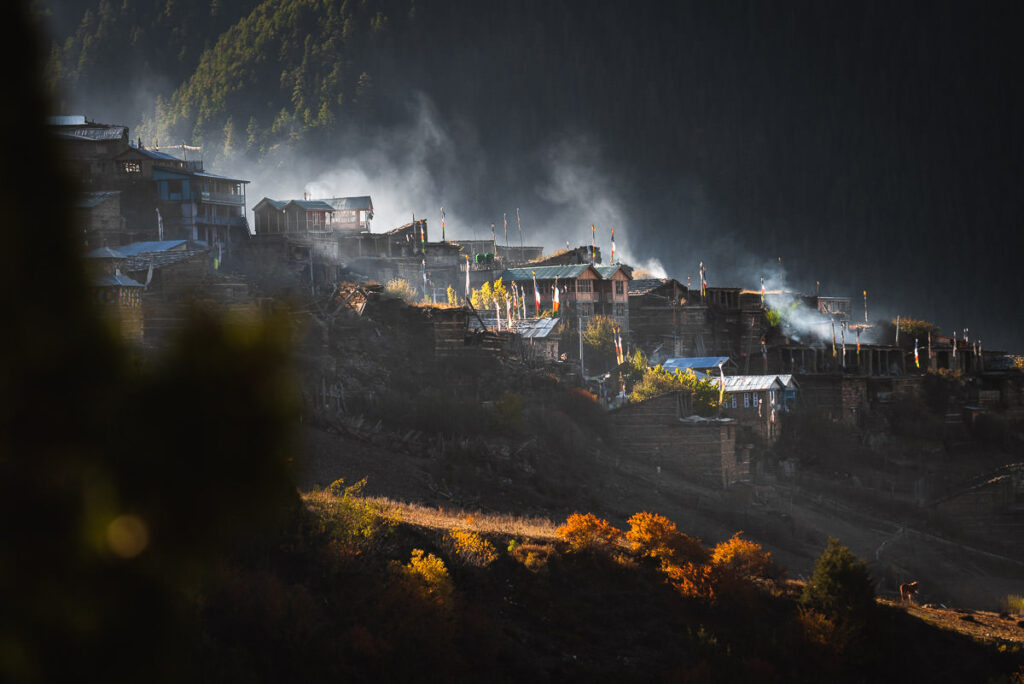
ANNAPURNA CIRCUIT TREK ITINERARY
The below itinerary was the exact journey I did but I would suggest adding in an extra day or two to account for rest days or being able to break up the day when you get up to Tilicho Base Camp. This was quite a strenuous activity. I also recommend not hiking to Dharapani from Besishar as the road is full of trucks and vehicles. Similarly, once you reach Muktinath, I suggest driving to Jomsom as it is quite built up from there with main, paved roads.
- Day 1: Drive Kathmandu to Dharapani (1,960m)
- Day 2: Trek to Chame (2,710m) Duration: 5-6 hours trek
- Day 4: Trek to Pisang (3,300m) Duration: 5-6 hours trek
- Day 5: Trek to Manang (3,500m) Duration: 6-7 hours
- Day 6: Acclimatization Day at Manang
- Day 7: Trek to Tilicho Base Camp (4000m) Duration 6-8 hours
- Day 8: Trek to Tilicho Lake & Trek to Shreekharka (4080m) Duration 10 hours
- Day 9: Trek to Thorong Phedi (4600m) Duration 6-7 hours
- Day 10: Trek to Thorong La & Trek down to Muktinath
- Day 11: Drive to Jomsom
- Day 12: Fly to Pokhara
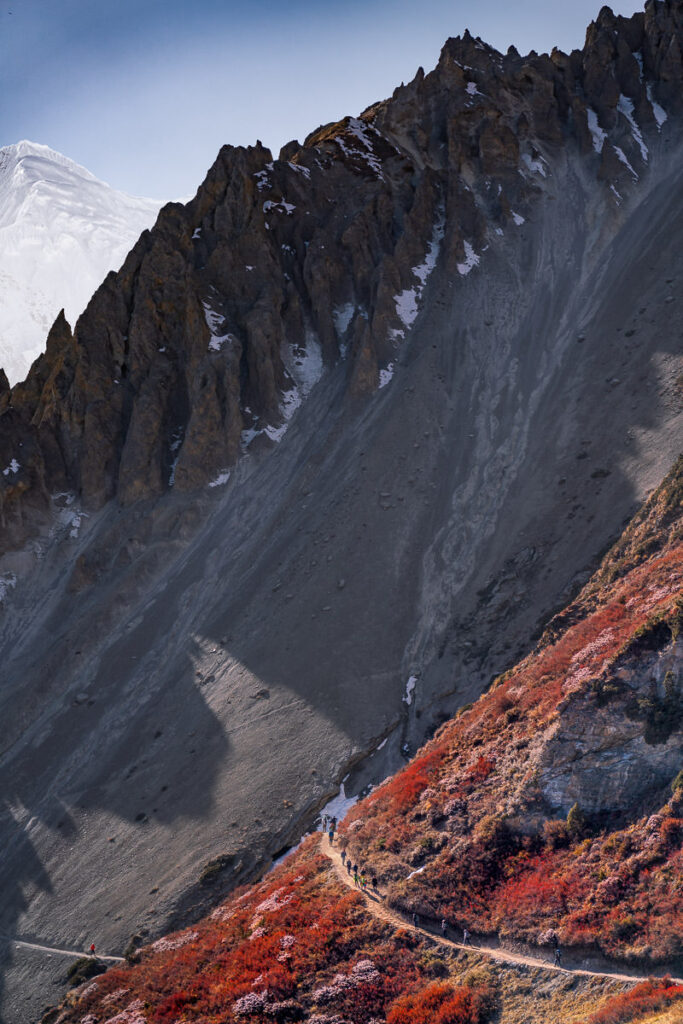
INSURANCE FOR THE ANNAPURNA CIRCUIT TREK
Nepal can be a dangerous place for trekking or hiking because the high altitude can lead to many illnesses, weakness in trekkers, and misjudgments. There is also a risk on trails for falls, avalanches, or other mishaps. Your regular travel insurance probably won’t cover you at high altitudes and won’t cover a helicopter evacuation. There is a solution though .
Need extra protection?
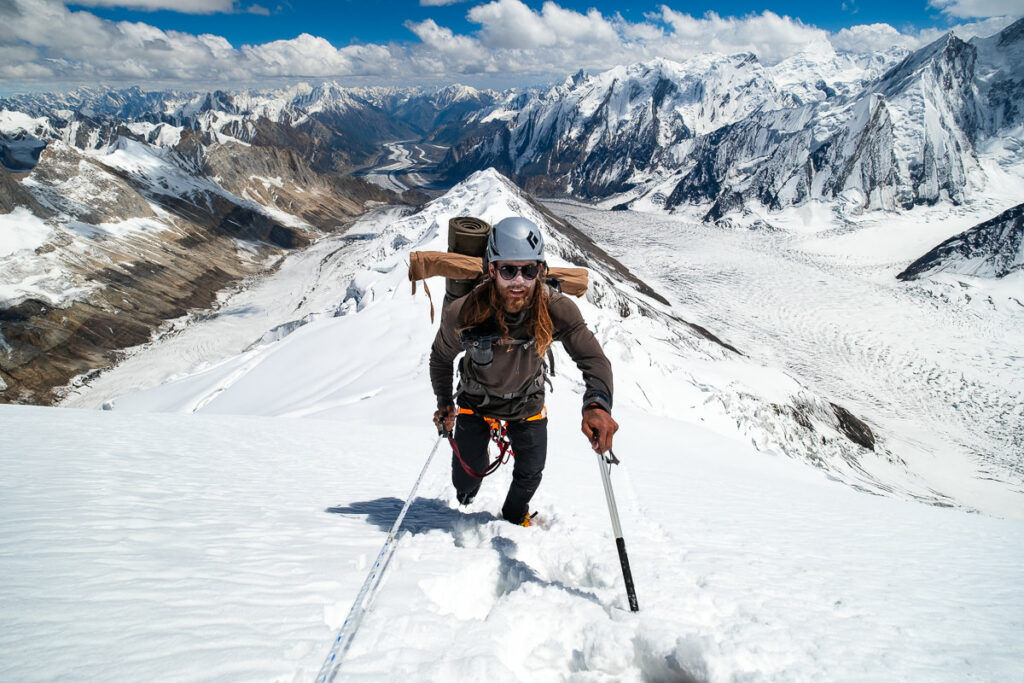
Regular travel insurance is great but won’t cover you for high altitude hikes or for helicopter evacuation. Each year, I purchase a Global Rescue Subscription .
For less than $500 per year or $100 per expedition, you can purchase a Global Rescue subscription and be covered no matter how extreme the hike or how high the climb is.
DRINKING WATER ON THE ANNAPURNA VALLEY TREK
I use the Grayl Ultralight Water Purifier and it is a game-changer for hiking in Nepal, making this super easy and cheap. The Grayl Ultralight Water Purifier removes 99.9999% of viruses of disease-causing bacteria. The best thing about it is it only takes 15 seconds and one press to purify water from any fresh water source. You don’t need to buy bottled water at every tea house contributes to large amounts of plastic waste and costing you $4+ per day.
Along the Annapurna Circuit Trek, we filled up tea houses, rivers, and local village taps. Unlike aqua purification tablets which require you to wait 30 minutes before drinking, you can have rehydrated yourself immediately with the Grayl Ultralight Water Purifier .
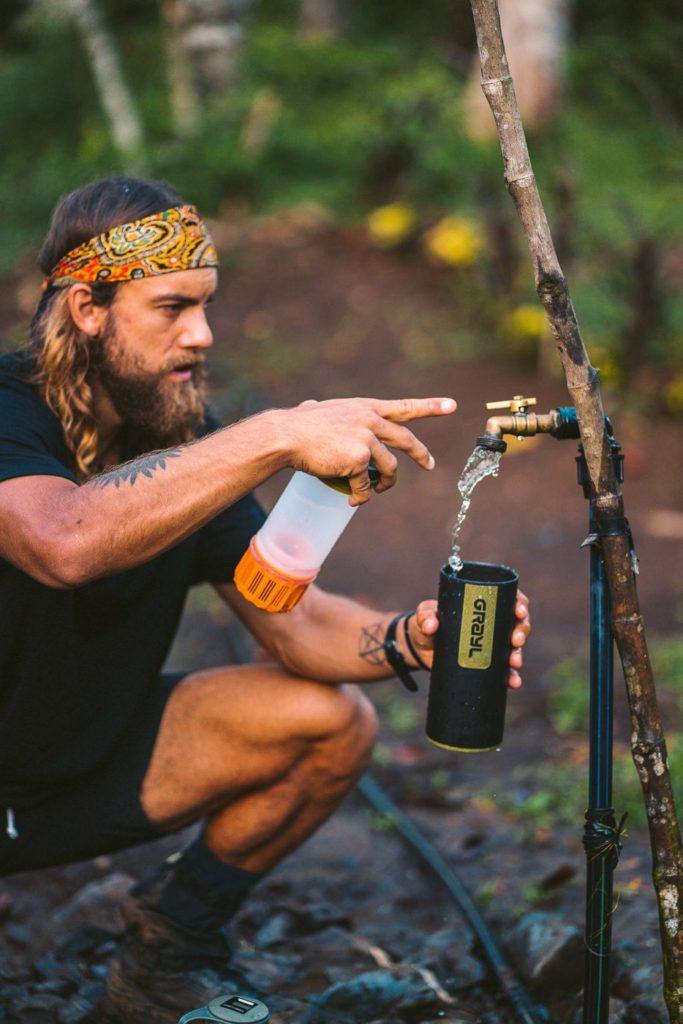
GrayL Water Purifier
- Never pay for water on the trek
- Save 3-4 plastic water bottles a day
- Turns any water into drinking water
BEST TIME AND SEASON FOR THE ANNAPURNA CIRCUIT TREK
The peak season for the Annapurna Circuit Trek is March to April and October to November. The time to avoid this trek is during the rainy season from June to August . Having said that, I often found that off-season or shoulder seasons have been my best (uncrowded) trekking experiences in Nepal
During the winter from December to February, this region gets very cold and there will be snow cover in the higher parts of the trek. Many of the guesthouses actually close up for the winter and re-open in late February to March.
I hiked the Annapurna Circuit Trek in late October/early November and we had 12 days of constant sun. Not a single day with clouds and no chance of rain. Lucky us.
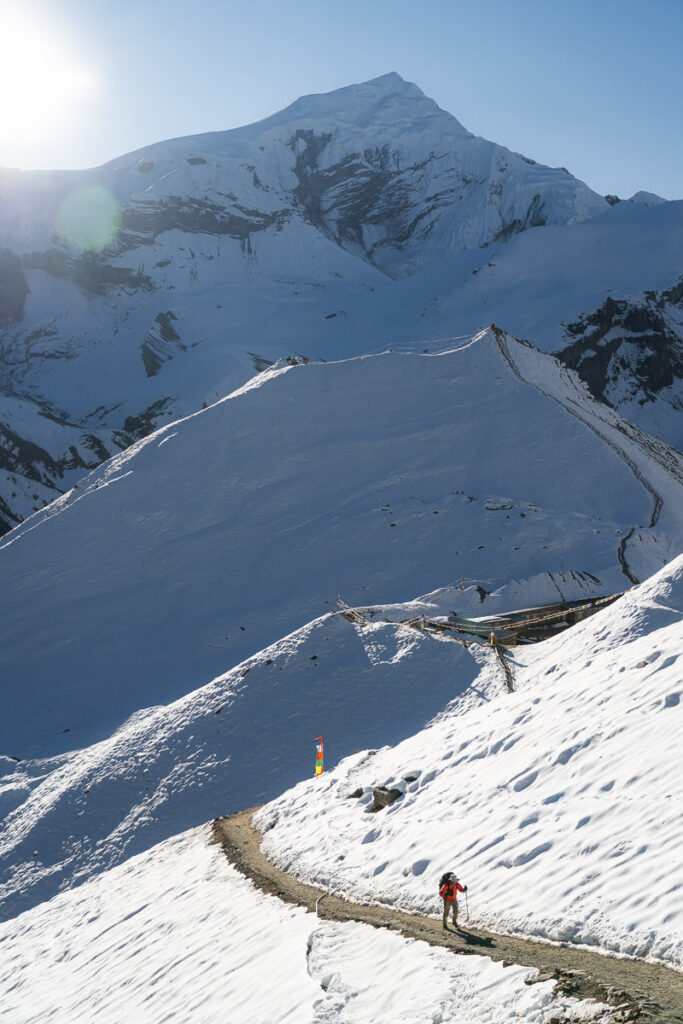
HOW TO GET TO THE ANNAPURNA CIRCUIT TREK
There are two main ways to reach Dharapani, which is the small town at the starting point of the trek. Despite the distance from Kathmandu to Besishar only being 125km, the journey takes a long time due to the traffic and quality of the road.
Jeep: We went by private Jeep organized by our tour company Himalayan Masters. It costs about $180 to hire the vehicle out for the drive so can be split between your group. It’s not cheap but much less brutal than the lengthy bus journey.
Public Bus: The bus costs about $12 USD and can take anywhere from 7-12 hours depending on the traffic and if there are any roadworks or landslides recently. The bus station in Kathmandu is called ‘ New Bus Station ‘.
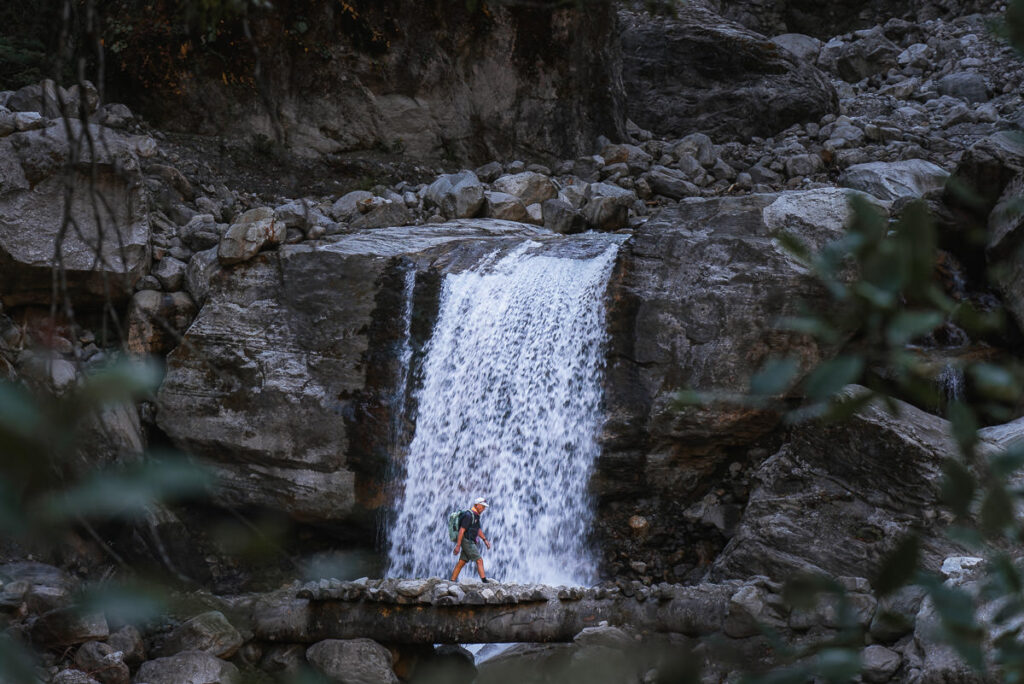
MY EXPERIENCE ON THE ANNAPURNA CIRCUIT TREK
Throughout this section of this guide, I will share my experience with each part of this trek and give my thoughts on the increased level of infrastructure and road access throughout the Annapurna Circuit Trek.
TREKKING FROM DHARAPANI TO MANANG
After surviving the bumpy ride along the cliff-side roads to Dharapani, we spent the night in a small teahouse before beginning our trek the next morning. Dharapani is actually where the Manaslu Circuit Trek finishes, so I had been in this small river-side town on several occasions previously. The trail for the Annpurna Circuit doesn’t overlap with that route at all and actually follows a road for the opening parts of the journey.
The first few days of the Annapurna Circuit Trek, are not the most peaceful or remote. Trekkers will find themselves being overtaken by Jeeps full of tourists driving deeper into the circuit or being dropped closer for a quick summit attempt at Tilicho Lake. I always hate when cars can drive past me while I’m working hard trekking but it’s unfortunately just part of this route now.
Despite trekking on a road for a fair portion of the first day, there are many side trails that quickly immerse you into the natural surroundings. We found ourselves on steep stairs in the forest and walking through small villages as we wound our way on and off of the road throughout the days. The highlights when it came to views early on in the trek was that from the very first morning, we had views of Manaslu (8,163m). This qas quite nostalgic for me and actually pretty incredible to have Manaslu as a constant backdrop given that I’d stood atop the mighty mountain a year earlier.
Chame was our first stop for the night and was probably my least favorite town of the lot. This is often to be expected when you are just getting started on the trail. The second night in Upper Pisang, we had a direct view from the tea house looking towards Annpurna II. They call it the unlucky mountain as it just misses out on being one of the 14 revered 8000ers. At 7,937m, it is an imposing peak, providing an unbelievable view right from the doorstep of the tea house.
Manang was the first town that felt quite remote and had a bit of atmosphere. In Manang there were several bakeries, religious sites, sacred lakes and monasteries. We spent two nights in Manang, as do many trekkers, and used the ‘rest’ day to head up to Chonggen Viewpoint for more incredible views over Manang and the surrounding mountains.
The scenery alongside the trail had become incredible by day three. While cars can still access to Manang, there was much less traffic and that rural, remote feeling had replace the chaotic, touristic vibe from the early moments of the trek.
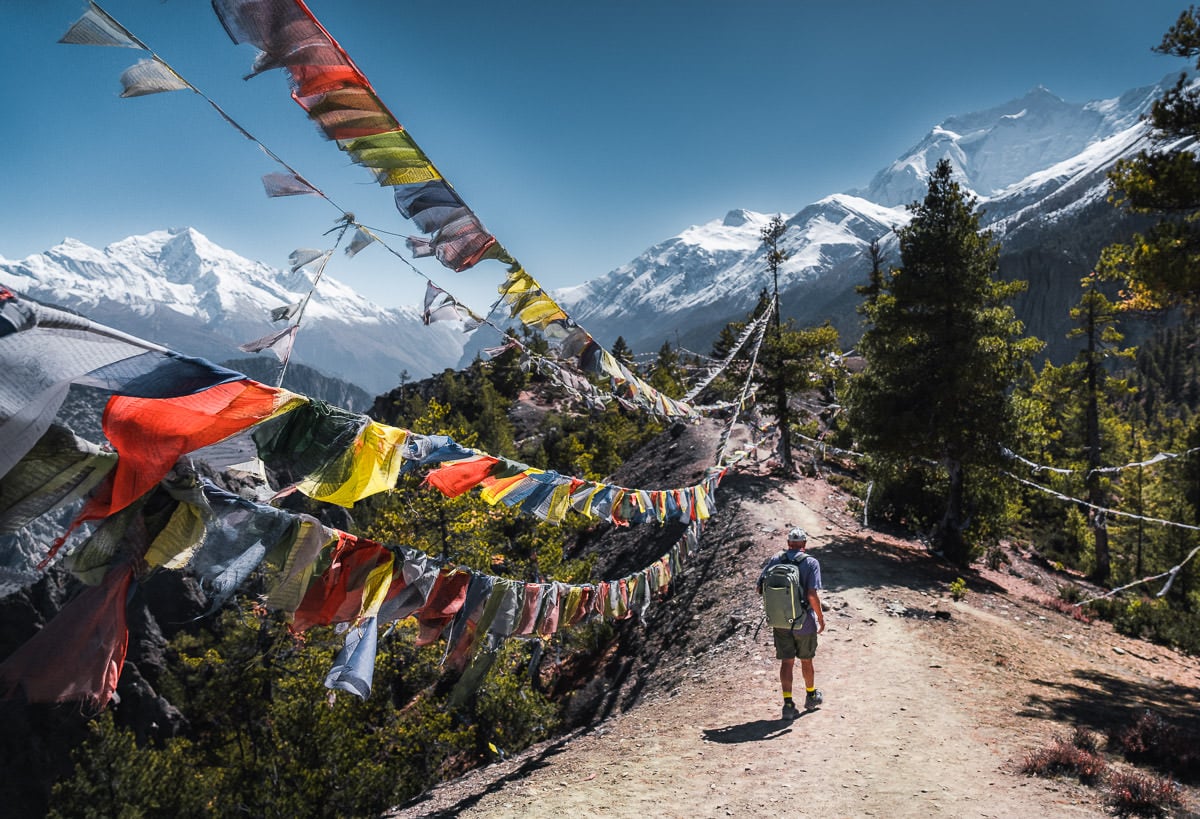
TREKKING TO TILICHO LAKE
After a rest day in Manang, it was time to put in a few ‘big effort’ days as we head some serious distance and elevation gain ahead of us. Many groups head from Manang to Yakharka and continue on to the pass. However, it is possible to make a two-day or preferably three-day detour with a mission of hiking up to Tilicho Lake.
The lake is marketed as the highest lake in the world although given some research, you will find that there are about twenty different lakes that are higher than it such as Lake Titicaca. Others claim it is the highest glacial lake in the world but just across the border at 6,216 meters above sea level is the Changtse Pool in Tibet.
Despite being a bit over-hyped and falsely advertised to pull in more tourism, the lake is an incredible natural site. You might curse me for the extra few days of effort to get there but I think it’s well worth making the detour for a few reasons.
The trek into Tilicho Base Camp was one of the best sections of the entire trail. The vegetation faded away and the terrain began to evolve into an outer-space, moon-like scene. Huge slops of gravel were segregated by rock archways and sharp ridgelines. It was like no other part of the trail.
Once you reach Tilicho Base Camp, you’ll find that it isn’t a town and is an opportunistic collection of tea houses set up to meet the demand of those on a mission to reach the high-altitude lake. Hundreds of trekkers wake early to attempt to climb 900m of vertical gain to almost 5000m for a viewpoint at the rim of the lake. It’s pretty steep and a consistent set of switchbacks make the path a tough route, especially after just a few days at high altitude.
After a few hours, trekkers reach the lakeside to find a small teahouse serving coffee and tea. Taking a seat on the stone wall, it’s truly incredible to look out across the vivid blue water completely surrounded by snowy peaks and ridges.
The tough part about trekking to Tilicho Lake is that it is a 12-kilometer round trip journey with 900 meters of incline to get to the lake and back to base camp. Most itineraries dictate that you will quickly eat lunch and then walk another few hours to Shreekharka. It could be a suggestion to stay another night at Tilicho Base Camp to ease the difficult of the trek itinerary.
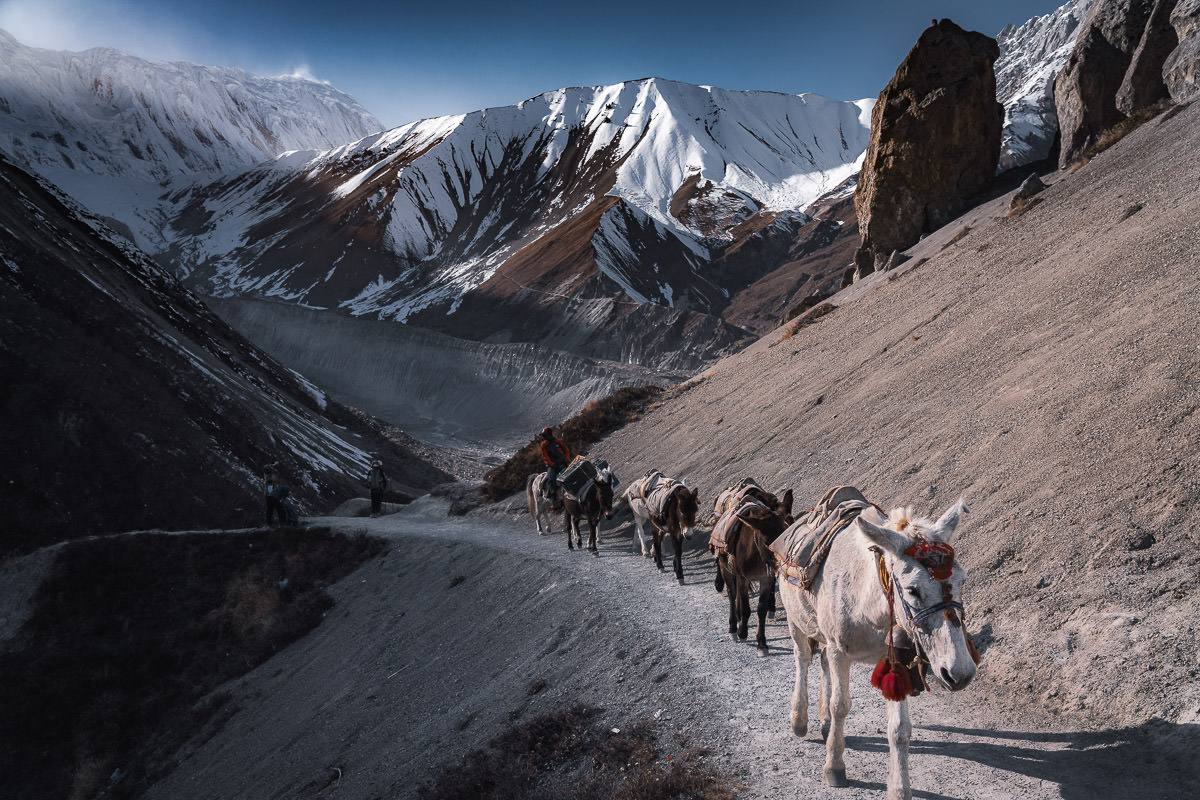
TREKKING ACROSS THORONG LA PASS
The long day up and down from Tilicho Lake and then from Tilicho Base Camp really took it out of us. However, the show must go on and we made a big effort to push all the way through from Shreekharka to Thorong Phedi. This is the base camp for the Thorong La Pass, which is the penultimate point and highest elevation of the trip.
The views continued to be immense on the journey to Thorong Phedi, but a third straight day with a vertical kilometer of incline and 20km of distance took its toll. We arrived late to Thorong Phedi, just before the sunset as you can see in the first image below.
The tea house at Thorong Phedi was buzzing, packed to the rafters. Many groups set off as early as 2:30 am on their quest to cross the path. We decided to bring up the rear and set off an hour before sunrise at around 5 am after a quick breakfast in the tea house.
The journey across the path begins with about 500m of elevation gain while ascending up relentless switchbacks. You can see the switchbacks from the tea house in the image below. After about 1.5 hours, trekkers reach the ‘high camp’, which is actually where many people stay on their approach to Thorong La Pass. It will make the pass day shorter but the prior day longer. It’s all about preference.
After the high camp, the scenery turns from rock to snow. We are now in a white, winter wonderland as we cross the 5000m mark on our journey across the pass. Up a seemingly never-ending slope, we wind our way around each corner.
Secretly, we are hoping to see the prayer flags of Thorong La but they never come. What we do find is a tea house serving overpriced but highly necessary instant coffee and tea. Here we recharge for half an hour before making our final push to the pass.
About an hour further and we make it up to the pass after about six hours of trekking. My dad and his mates are gassed but glad to be at the highest point of the trip. We hang out, take a few photos and even witness a huge avalanche from the seracs on the right side. Luckily it dispersed down to the side of the mountain and not toward us.
The journey down from Thorong La Pass should be straightforward and is only about eight kilometers. However, with icy conditions and slippery rocks, it was slow-going. It is highly recommended to bring micro spikes for this descent and for the descent from Tilicho Lake. Even though you will only use them twice, they are worth bringing along.
Late in the afternoon, we roll into Muktinath after crossing over into the Mustang region from the Annapurna Sanctuary side. It’s beautiful scenery but we are all just glad to make it to the hotel. It was a pretty tough ‘summit’ day all things being said.
Many trekkers will walk one more day to Jomsom before flying to Pokhara. However, we decided to take a Jeep for about $15 per head. It’s only an hour’s jeep ride to Jomsom.
I’d advise taking the Jeep as the trek looked like it went alongside the road in hot, exposed, dry terrain for twenty kilometers. It’s a brutal and unnecessary section of trail to walk but some purists may like to complete the old ‘original’ circuit. If that is you, make sure you walk all the way to Pokhara, and don’t cheat with any planes from Jomsom!
We spent the night in Jomsom and celebrated with a couple of beers. The next morning, we watched as the light planes flew into the airport. It’s a unique landing strip with an amazing backdrop of mountains on all sides. The planes take off and do a full U-turn immediately before flying up and out of the valley with views of Dhaulagiri (8,167m) on the right.
After a few nights in Pokhara, we flew back to Kathmandu to wrap up an incredible journey on the Annapurna Circuit with Himalayan Masters .
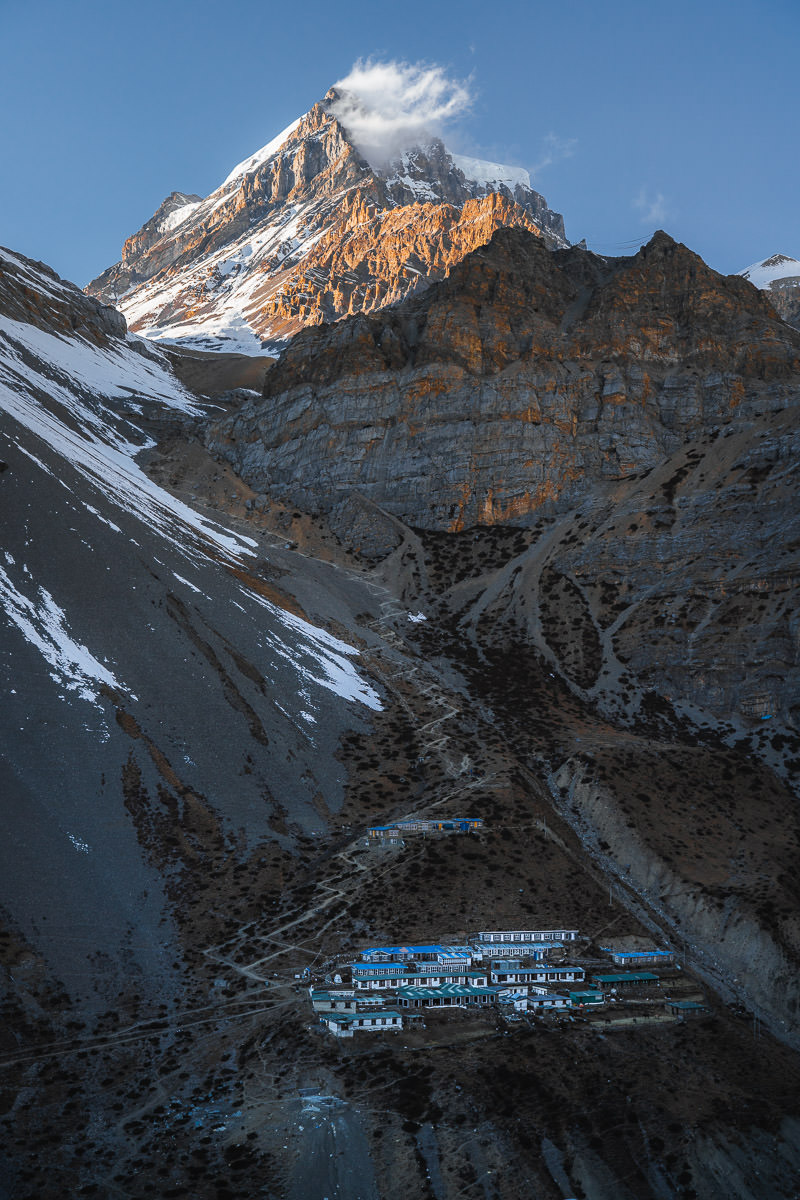
I hope you enjoyed this guide to the Annapurna Circuit Trek in Nepal and have a great experience yourself! To finish up, here is a photo from the epic Jomson airport. Not a bad way to end the trip.
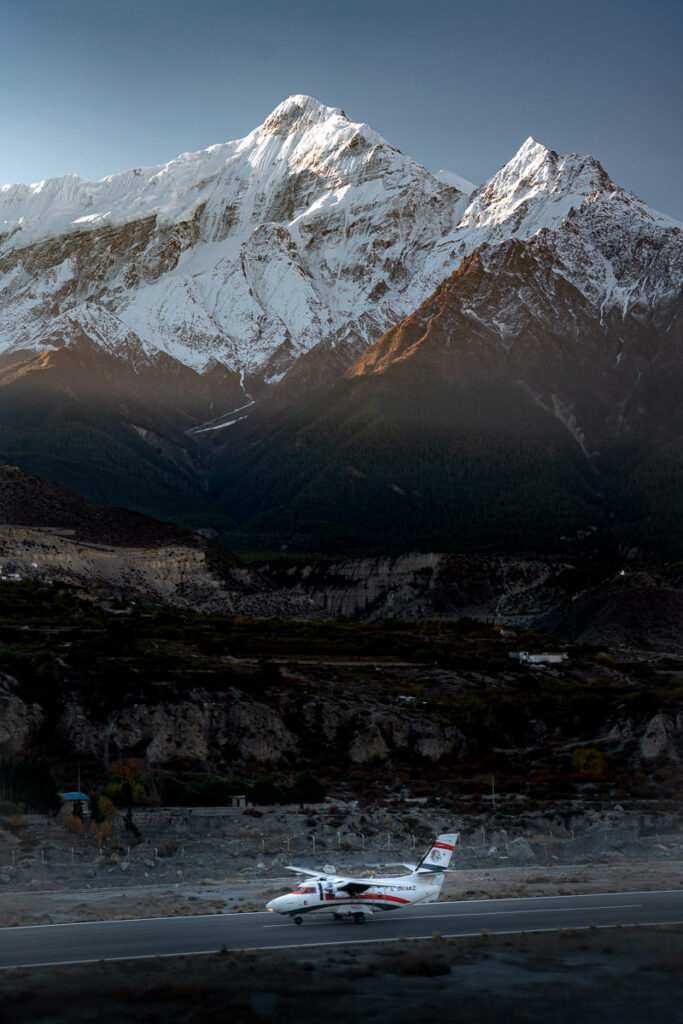
HAVE YOU READ MY OTHER NEPAL BLOGS?
I’ve been lucky enough to have many awesome adventures in Nepal, which you can check out below where I’ve listed some of my favorite blog poss from Nepal.
- The Most Iconic route: Everest Base Camp Trek
- The Most Scenic Route: Annapurna Circuit Trek
- My Favorite Trek in Nepal: Manaslu Circuit Trek
- An Easy Nepal Trek: Langtang Valley Trek
- A great beginner peak: Island Peak Climb (6,165m)
- My Favorite Climb in Nepal: Climbing Ama Dablam (6,812m)
- My first 8000er: Climbing Manaslu (8,163m)
- My toughest climb in Nepal: Climbing Makalu (8,463m)
- Where to stay: 16 Best Places to Stay in Kathmandu

Sunday 11th of June 2023
Hi, I noticed a news that Nepal treks should only be allowed only with a guide, starting from April 2023. Your article seems to be from June 2023. Does it mean that Annapurna Circuit has an exemption? Thanks a lot!
Sunday 2nd of July 2023
Thanks, honestly, this is a reason for me not to even think about Nepal and consider e.g. Patagonia
Sunday 18th of June 2023
Anything above 3000m I believe you need a guide now
Thursday 9th of March 2023
Please tell me more about your photography set up. Camera, lens, gear etc Thank You! :)

Top 5 longest Treks in Nepal
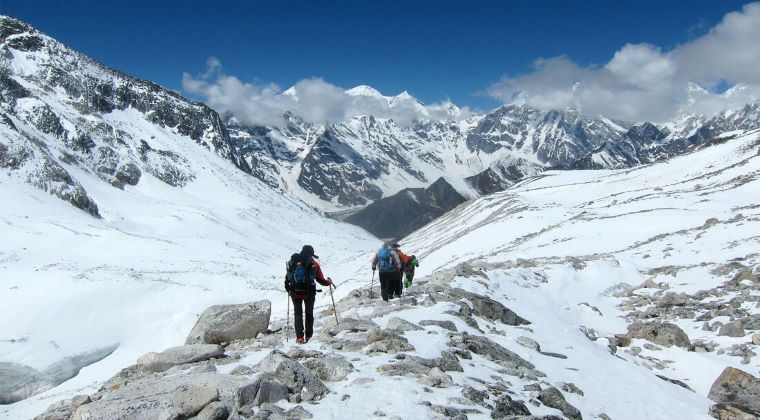
Top 5 Most popular Longest Treks in Nepal to Put On your Bucket List
It’s big, beautiful world out there; let’s walk it
If you are an adventure freak, have weeks (or even months) at your disposal and ready to leave the modern life behind for a while; these 5 longest treks in Nepal might be just what you’re seeking for.
The list of5 best long longest treks in Nepal includes a hike in wild mountain terrain, isolated valleys, high passes and inhabited area. It takes more than two weeks to complete these longest treks in Nepal.
The idea of covering miles and gaining several thousand meters on mountain is itself unbelievable. Perhaps that’s what makes these hiking trail so tempting.
If you want to add new dimension to your trip or simply crave dehydrated food, walk without washing for couple of days and encounter thrilling moments, here are the list of top 5 adventurous and longest treks in Nepal.
Table of Contents
Everest Base Camp and Gokyo Lake Trek with Cho Pass
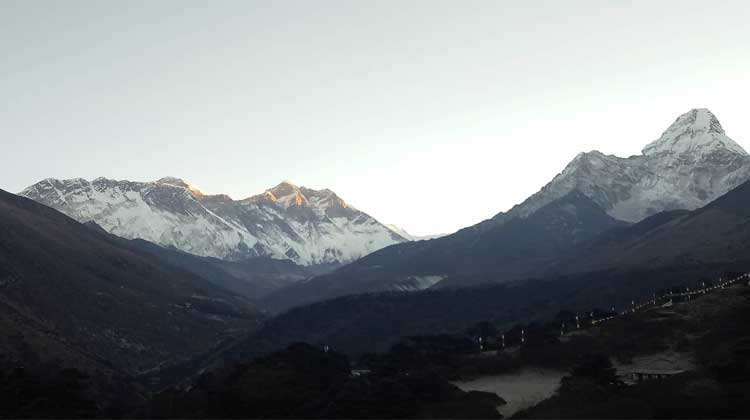
Location: Khumbu Region, Nepal
Distance: 65km
Time: 14 – 16 days
Trip Grade: Moderate to Challenging
Best Time to Go: October – September and March – May
Permits Required: Sagarmatha National Park Entry and TIMS
Independent Trekking: Possible
No doubt, the best longest treks in Nepal!
Run for 64km along the Sagarmatha National Park, the world-renowned Everest Base camp Trek easily earns 1st spot on this list.
Everest with daunting height of 8,848m might not be on every adventurers bucket list. It is because of the challenge, days, risk and cost it demands. But a hike to Everest Base Camp fulfills the need of adventurer seeking for close-Ev Overview Follow the steps of legend, explore idyllic and isolated village and leave your footprint at the lap of Everest (8,848m), the tallest mountain in the world.
You will gain 300 – 500 m a day; walking and climbing 5 – 6 hours a day on rugged mountain terrain. Starting point is Lukla is nestled at an elevation of 2,860m and final point is Kalapatthar at 5,545m. Imagine the altitude you have to gain within 9 – 10 days hike.
You will take the less trodden route to BC and cross high Chola Pass at 5,420m. This trekking route is perfect for those seeking to avoid the crowd and enjoy the less-explored site of Everest region.
EBC trek is most popular hiking adventure in Nepal and every year 50K+ hikers visit this area to enjoy the Mt. Everest in its all glory. Add Gokyo Lake via Cho La Pass for more adventure.
- Closest view of Mt. Everest, Lhotse, Nuptse, Makalu, Cho-Oyu and other neighboring ice giants
- Impressive view of Khumbu glacier, high valleys and mountain lakes
- Discovery of highland floral and faunal species in Sagarmatha National Park
- Insight of Sherpa culture and their daily lifestyle
- Enjoy the collection of Gokyo Lake and dramatic crossing of Cho-La Pass
Annapurna Circuit Trek
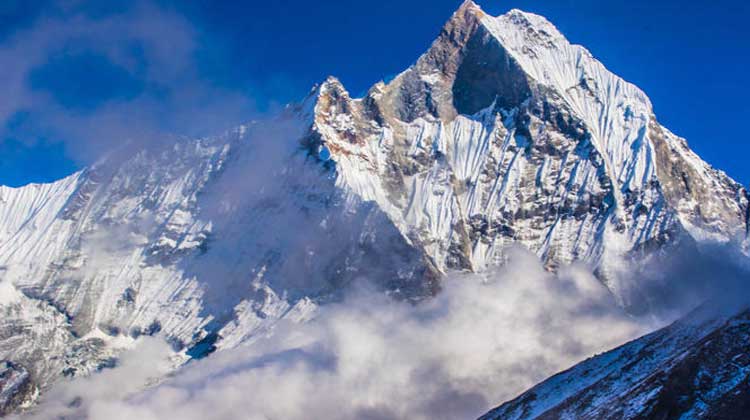
Location: Annapurna region , Nepal
Distance: 160 – 230km (depending on the motor transport used)
Time: 16 – 22 days
Trip Grade: Challenging
Permits Required: Annapurna Conservation Area Permit and TIMS
Probably the easiest longest trek in Nepal.
Worth walking!!!
Annapurna Circuit Trek is the easiest longest treks in Nepal. Imagine circumnavigating 55km long Annapurna massif in a single trip. Enjoy the grandeur of Annapurna I (8,097m), the tenth tallest mountain in the world and explore the timeless beauty it holds.
Starting from Chamje at 2,670m, you will climb high in mountain to 5,416m at Thorang La Pass in just few days. It takes around 20 days to complete entire Annapurna Circuit Trek (including an exploration day at Kathmandu and acclimatization halt along the trail). Add up few more days to explore the sight and sound of naturally blessed city – Pokhara.
The total length of Annapurna Circuit trial varies between 160 – 230km, depending on the starting and ending point of the trek. The trek crosses two different river valleys – Marshyangdi and Kali Gandaki (world’s deepest gorge) and make a loop of Annapurna massif.
Highlights:
- Crossing of Thorong La Pass at 5,416m
- Magnificent Himalayan view including Annapurna I, II, III, IV & V, Machhapuchhre, Hiunchuli, Dhaulagiri and others
- Incredible geographical varieties – lush green terrace fields to alpine forest to snowy barren landscapes
- Cultural experience of people living in different climatic zone
Manaslu Circuit Trek
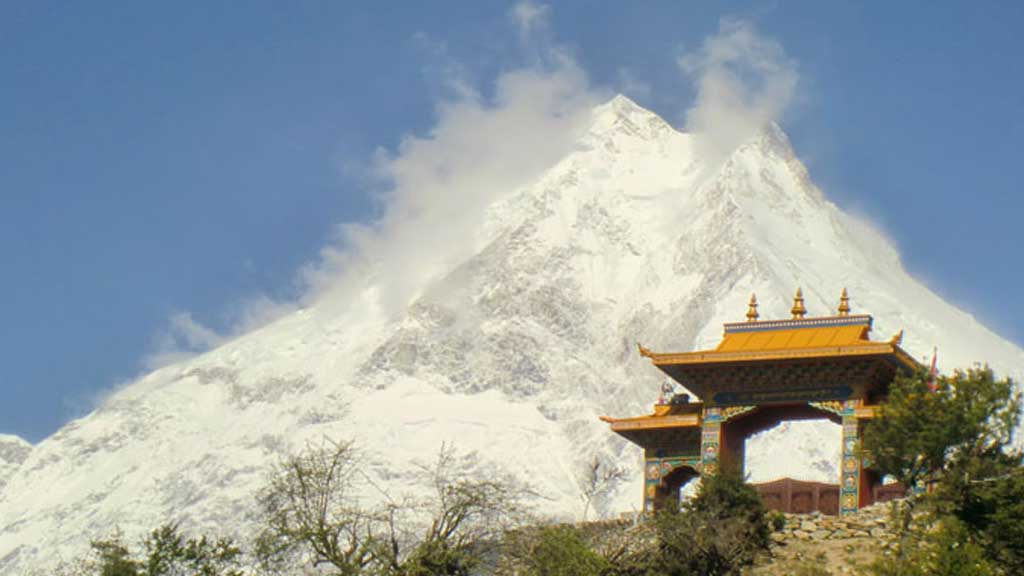
Location: Manaslu region, Nepal
Distance: 177km – 200km (depending on the motor transport used)
Time: 15 – 19 days
Permits Required: Restricted Area Permit (RAP), Manaslu Conservation Area Permit (MCAP), Annapurna Conservation Area Permit
Independent: Not possible (must accompany at guide)
Probably the most underrated longest treks in Nepal
Incredible Paybacks to your effort!!!
Manaslu Circuit Trek is a spectacular hike that takes you away from crowd and lets you enjoy a complete solitude. It best known as the alternative to Annapurna Circuit Trek.
With the array of ice-giants, stunning views and vertigo-inducing heights, it is a really an exhilarating hike. Plus, the enchanting Tibetan Buddhist culture and Bon (pre-Buddhist religion) adds another dimension to the trek.
Running parallel to Annapurna Circuit Trial, the Manaslu trails are hewn into cliff faces and climb high above the valley floor through rock staircases. The trek begins from low altitude at 600m in Arughat and climbs through different climatic zones to the high passes (Larke La at 5,160m). Next it down again as it make a loop of 8,163m, Manaslu through Buddhist world of Stupas, Gompas and Prayer flags.
- Different altitudinal and geographical varieties
- Magnificent views of Manaslu, Annapurna, Langtang and other Himalayan ranges
- Less-crowded – a complete feeling of solitude
Kanchenjunga Circuit Trek
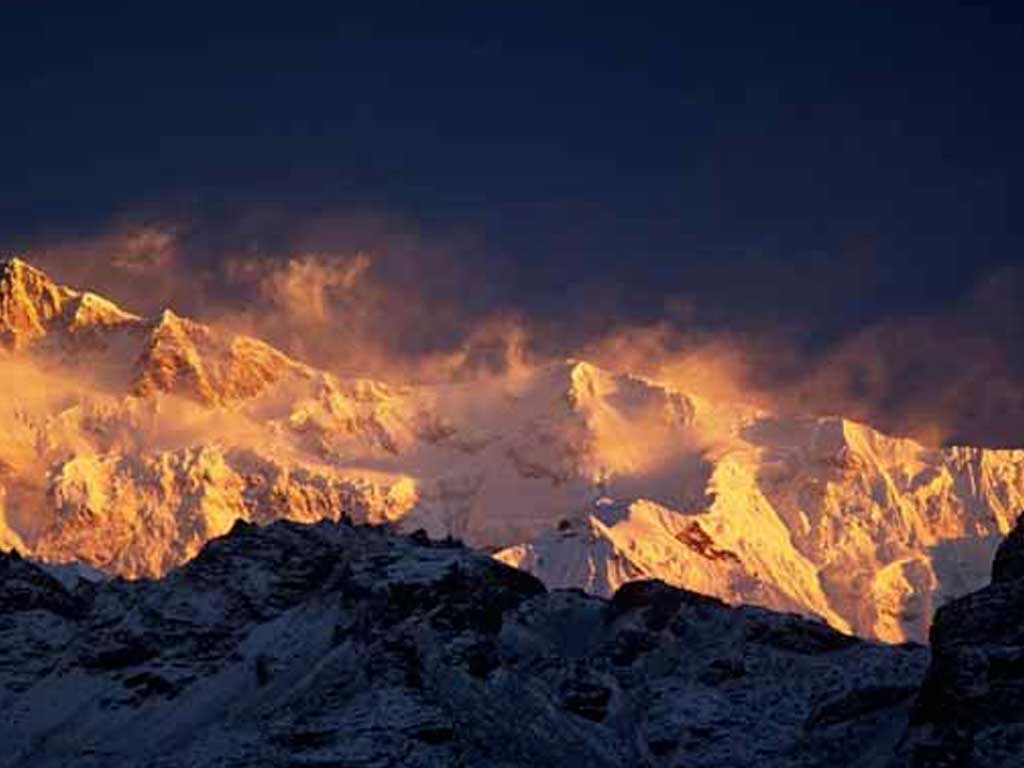
Location: Kanchenjunga Regin, Nepal
Distance: Not measured yet (roughly 150km+ trail)
Time: 22 – 25 days
Trip Grade: Challenging Plus
Permits Required: Restricted Area Permit (RAP) and Kanchenjunga Conservation Area Permit (KCAP)
Independent Trekking: Not possible (you must hire a local guide)
Probably the wildest longest treks in Nepal!
Kanchenjunga Trail is so isolated, rigorous and remote that only a few adventurer have ever made their way to this region. This exotic and off-beaten trek starts with superb discovery of interesting places, people, villages and valley and magical forest of pines, oaks and rhododendron. Latter it becomes so wild that you will barely find a human settlement.
The region is nestled in between Tibetan plateau and Indian mountains and offers wide experience of raw nature. You will visit some of the highest human settlement on earth and explore many virtually unexplored beauty of nature
Hikers must brave the harshest climates, the highest passes and unforgiving terrain to experience the magic that the Kanchenjunga region beholds. In addition, they can choose to camp or stay at remote and basic teahouses where the city accessibility is far way behind. At some point, you have to make an obligatory camp.
- The region is the melting point of Tibetan/Nepalese Buddhism and Hindu religion
- Time frozen landmarks that very few trekkers have explored
- Magnificent floral and faunal diversities
- Walking through less-trodden trail
- Crossing of several 5,000m+ high passes
- Magnificent view Himalayans – Kanchenjunga range, Kumbakarna and several Indian and Tibetan mountain
Langtang Valley Gosainkunda and Helambu Trek
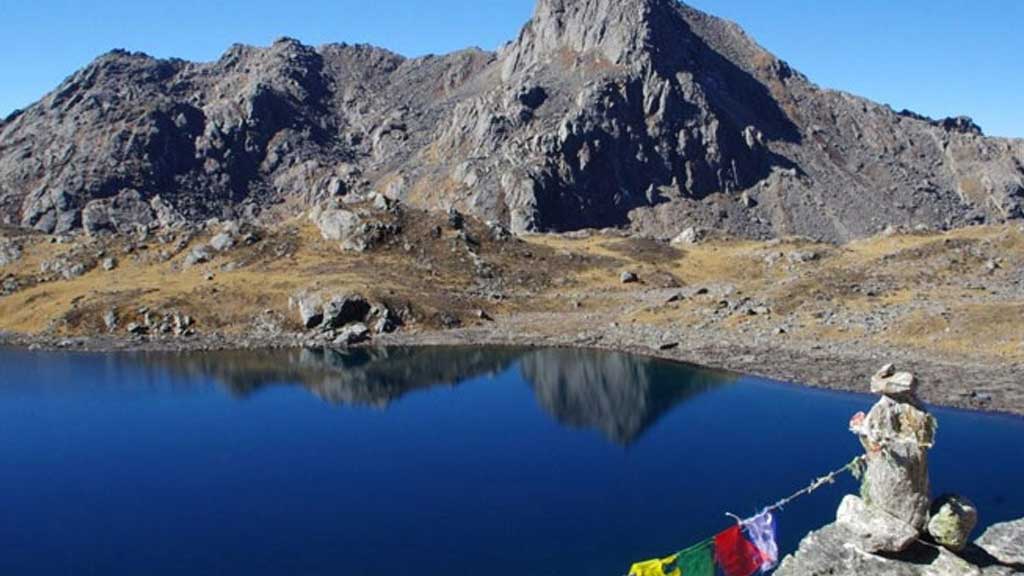
Location: Langtang region, Nepal
Distance: unknown
Time: 16 – 19 days
Trip Grade: Moderate Plus
Permits Required: Langtang National Park Permit and TIMS
Nearest of all longest treks in Nepal!!!
Langtang Gosainkunda and Helambu Trek is the perfect combination of nature, culture and high mountain lakes. Some trekkers believe it as the best kept Himalayan secret in the world. Believe or not, you will live the mountain life in just few days. Plus you will get acquainted with remote Nepal and big mountain profile.
Langtang region is the most accessible walking adventure near the big city!
Despite the huge ravage of 2015 earthquake, people dare to stand again and eagerly waiting their guest. They have suffered a lot and your presence can their face smile again.
To assure you, we have made all the research about the trekking route. It is more safe than even. All the tea houses are safe and trail routes are built more scientifically.
- Great trekking experience with cultural insight of Tamang community; who are better known as the descendent of Tibet
- Majestic view of gigantic Himalayas – Langtang range, Ganesh Himal, Masalu, Shisapangama and more
- Enjoy the bath at mountain lake – Gosainkunda to cleanse the sins
- Explore the monasteries and cultural values of Helambu region
Add Comments
XHTML: You can use these tags:
* Fields are mandatory.
Speak to our local travel expert, who can assist you in planning your trip.
- Most Recent
- Most Popular
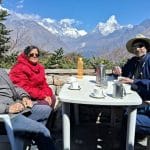
How Many Days You Will Need to Go Everest Base Camp
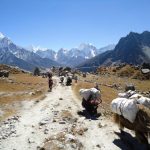
Everest Base Camp Trek Packages: Your Options
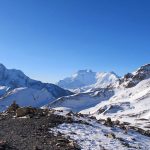
Annapurna Circuit Trek Packing list
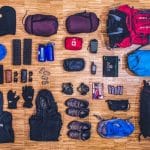
Manaslu Circuit Trek Packing List
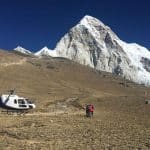
Everest Base Camp Helicopter Flight Service
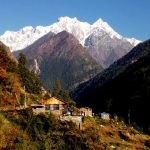
When is the Best Month for Manaslu Circuit Trek with Tsum Valley Trek
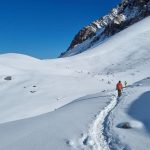
Tipping For Guide, Porter in Annapurna Trek
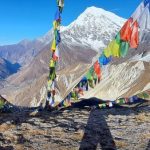
Langtang Trek: Journey to the Nearest Snow-Capped Mountain from the City

Thorong La Pass
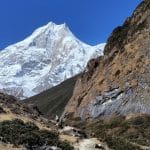
How Much to Tip Guides and Porter In Manaslu Circuit Trek
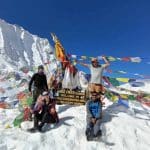
Manaslu Trek Nepal : Nature’s Spectacle in the Himalayas
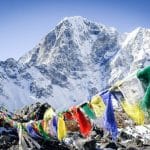
Tipping For Guide, Porter In Everest Base camp Trek
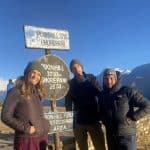
We are recommended on:
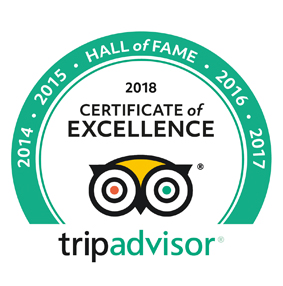
Adventure Great Himalaya Pvt. Ltd. (Private day tours)

- Best Hikes In The World
- Appalachian Trail
- European Hikes
- Nepal Hikes
- Patagonia Hikes
- See All Hikes
- Mount Kenya
- Mount Kilimanjaro
- Mount Toubkal
- See All Mountains
- South Africa
- New Zealand
- Switzerland
- United Kingdom
- Packing Lists
Annapurna Circuit – Nepal’s Classic Circuit Trek
Asia , Hikes , Nepal
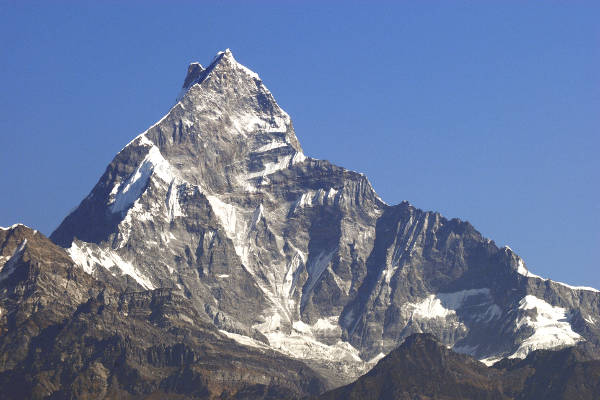
The Annapurna Circuit is one of the most popular and most epic treks in Nepal . This classic trek meanders through Himalayan foothills and over high passes, offering picturesque mountain views along the way.
Annapurna Circuit Trek
Route overview.
The Annapurna Circuit is one of the greatest treks in Nepal, if not the world.
Although road construction over the past two decades has severely impacted the trekking experience (more on this later).
Note: if you are a mountain biker, the road on the western side makes for one of the most exhilarating and scenic mountain biking experiences!
Where Does The Annapurna Circuit Start and End?
The trek begins at Besisahar (which is a 7-8 hour drive from Kathmandu) and concludes in the Kali Gandaki Gorge – the disputed highest gorge in the world that separates Dhaulagiri (8,176 meters) in the West and Annapurna (8,091 meters) in the East.
The circuit is traditionally followed on an anti-clockwise trail – for acclimatization reasons – that circumvents the Annapurna Massif. It takes trekkers through the Annapurna, Manang and Mustang region of central Nepal.
Route Details
At its pinnacle, the trek crosses the Thorung La Pass (5,416 meters) before descending down to the town of Muktinath. From here the road construction activities (2004 -2008/09) have had a measurable impact on the Annapurna Circuit trekking experience.
The Nepalese government have realized that the road on both the Western (Pokhara-Muktinath) and Eastern (Chame-Manang) side of the circuit has had a negative impact on trekking tourism. Thus, they have created a number of New Annapurna Trekking Trails (called NATT-trails).
These NATT-trails, marked blue and white or red and white, take trekkers away from the dusty and unpleasant roads. The alternative routes provide a much more pleasant trekking experience.
How Long Is The Annapurna Circuit?
The Annapurna circuit typically takes between 16-20 days to complete. This is depending if you decide to tack on a diversion to Annapurna Base Camp and the Annapurna Sanctuary ). It covers between 150-240 km depending on when you decide to end the tour or use transportation vehicles.
Scenery and Landscape
The scenery on the Annapurna Circuit is extraordinarily beautiful. Trekkers pass through rice terraced paddy fields, subtropical forests, and glacial environments.
You will see a number of major mountains including the Annapurna Massif (I-IV), three 8,000 metre peaks – Dhaulagiri (8,176 meters), Manaslu (8,156 meters) and Annapurna I (8,091 meters). There are numerous other peaks of 6,000 to 7,000 meters.
Please Note: The Annapurna Circuit is situated in the Annapurna and Mustang regions of central Nepal. It is home to the Annapurna Massif. The schematic below illustrates Nepal’s trekking regions (not to scale).
Annapurna Regional Map
The Annapurna Circuit is situated in the Annapurna and Mustang regions of central Nepal. It is home to the Annapurna Massif. The schematic illustrates Nepal’s trekking regions (not to scale)
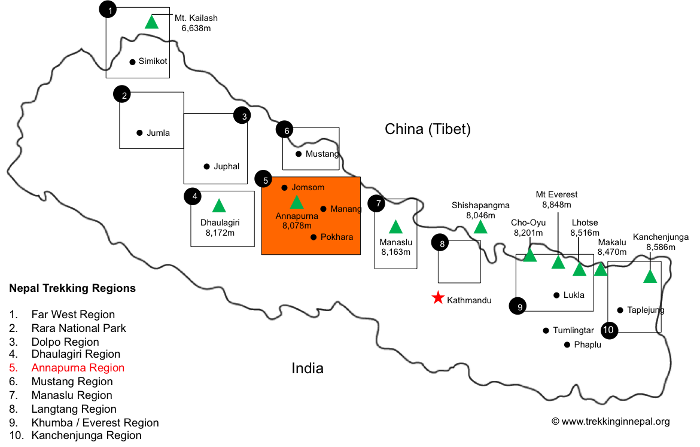
Annapurna Trek Altitude Profile
The schematic diagram below shows the route altitude profile for the Annapurna Circuit.

Annapurna Circuit Itinerary
Below is a detailed Annapurna Circuit itinerary. Where possible we have highlighted the NATT-Trails that can be used to avoid the road. Please note that this is a typical Annapurna Circuit itinerary. Some tour operators offer variations on this route.
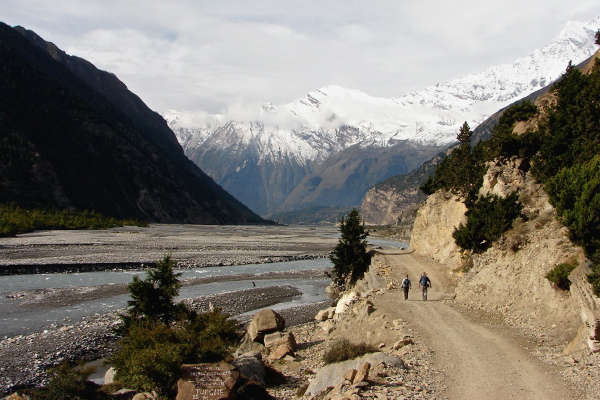
Day 1-2: Arrive Kathmandu (Drive to Besisahar / Fly to Pokhara)
Arrive in Kathmandu, usually spend a day sightseeing in the capital city.
See more in our guide on what to do in Kathmandu .
Drive from Kathmandu (1,300 meters) to Besisahar / Khudi (circa 800 meters) via bus. The trip takes between 7 and 8 hours, meandering through countryside villages.
The Annapurna Circuit typically starts at Besisahar, an hour’s trek from Khudi. Some operators may drive you to Khudi and commence the trek from there.
Day 3: Trek from Besisahar (820 meters) to Khudi and onto Bahundanda (1,310 meters)
Trek from Besisahar (820 meters) to Khudi and onto Bahundanda (1,310 meters). This traditional route has been impacted by the road construction so some operators have started using new trails that bypass the road. Instead, you go to the village of Sikrung (2,200 meters).
The latter is a fairly steep climb to a rather high altitude. But it does offer a more untainted Annapurna trekking experience. Expect to trek between 6-7 hours.
Day 4: Trek from Bahundanda (1,310 meters) / or Sirung (2,200 meters) to Jagat (1,300 meters) or potentially Chamje (1,410 meters)
Trek from Bahundanda (1,310 meters) / or Sirung (2,200 meters) to Jagat (1,300 meters) or potentially Chamje (1,410 meters). If on day 4 you followed the traditional route to Bahundanda, you will trek to Ghermu (1,130 meters) and onto Jagat. You might stay the night here or take a steep hour-long trek up to Chamje (1,410 meters).
We recommend staying the night at Chamje instead of Jagat, which is a dirty and crowded village. If on day 4 you stopped at Sikrung, you will likely follow a route via Syange (1,100 meters) to Jagat and up to Chamje.
Expect to see great rice terraced landscapes and views of the Manaslu Range during early stages of this day’s trekking.
Day 5: Trek from Jagat / Chamje (1,300 / 1,410 meters) to Dharapani (1,960 meters)
Trek from Jagat / Chamje (1,300 / 1,410 meters) to Dharapani (1,960 meters). Continuing north into the Manang region, you will trek through agricultural fields of corn and potatoes and then forests of rhododendrons.
Eventually reach the quaint village of Tal (1,700 meters). From Tal you will trek for another 6 kms (circa 3 hours) via Karte to the village of Dharapani (1,960 meters).
Day 6: Trek from Dharapani (1,960 meters) to Chame (2,710 meters) via Bagarchap and Danakyu, and then either along the lower trail or upper trail to Koto (2,640 meters)
Trek from Dharapani (1,960 meters) to Chame (2,710 meters) via Bagarchap and Danakyu, and then either along the lower trail or upper trail to Koto (2,640 meters).
From Koto you trek a further hour to the busy village of Chame. Some trekkers and operators prefer an overnight stay in the quieter village of Koto. On this rather steep trekking day you will get some great views of Annapurna II and IV, as well as Lamjung Himal.
Day 7: Trek from Chame (2,710 meters) to Pisang via Bhratang (2,850 meters) and Dhukur Pokhari (3,240 meters)
Trek from Chame (2,710 meters) to Pisang via Bhratang (2,850 meters) and Dhukur Pokhari (3,240 meters). From Dhukur Pokhari the trail splits and you may either trek to Upper Pisang (3,310 meters) or to Lower Pisang (3,250 meters) for an overnight stay.
If you take the latter to Lower Pisang we highly recommend re-joining the upper trail on day 8. This provides arguably the best views of the whole Annapurna Circuit.
Day 8: Trek using the upper trail from Pisang (3,310 meters) to Manang (3,450 meters) via Ghyaru (3,730 meters), Ngawal (3,680 meters), Humde (3,330 meters and Bhraga (3,450 meters)
Trek using the upper trail from Pisang (3,310 meters) to Manang (3,450 meters) via Ghyaru (3,730 meters), Ngawal (3,680 meters), Humde (3,330 meters and Bhraga (3,450 meters).
The mountain views on this portion of the Circuit are exceptional, as are the quaint villages along the trail. A visit to Barge monastery is worthwhile before the final stretch to Manang.
Day 9: Acclimatization day in Manang
Manang is one of the main towns on the Circuit. Many trekkers take this opportunity to spend a rest acclimatization day in the town.
Short excursions to the Gangapurna Lake and Bhojo Gompa (a Buddhist ecclesiastical fortification of learning) are common among trekkers. There are also day trips around the town. You might want to consider visiting the offices of the Himalayan Rescue Association for a talk on high altitude risks.
Day 10: Trek from Manang northwest out of the Marshyangdi Valley and up to the small village of Yak Kharka (4,110 meters)
Trek from Manang northwest out of the Marshyangdi Valley and up to the small village of Yak Kharka (4,110 meters). If you haven’t started feeling the effects of altitude yet, you might start doing so from today. Some trekkers continue onto the tiny village of Letdar (4,200 meters). Teahouse accommodation is limited in both these villages.
Day 11: Trek from Yak Kharka (4,110 meters) to High Camp (4,850 meters)
Trek from Yak Kharka (4,110 meters) to High Camp (4,850 meters). This is a fairly tough and steep day. Some tour operators will stop for the night at Thorang Phendi (4,450 meters). This is a good idea if trekkers are struggling with the altitude.
However, continuing on to High Camp is, in our opinion, preferable. This is because it makes the next day’s treks to Muktinath (3,800 meters) a lot shorter and easier. Accommodation facilities and amenities in Thorang Phendi and High Camp are both good. Please note: continuing onto High Camp means sleeping at high altitude, which is not advised if you are suffering from acute mountain sickness (AMS) symptoms .
Day 12: Trek from High Camp (4,850 meters) across the Thorung Pass (the highest point on the trek at 5,416 meters) and then back down to Muktinath (3,800 meters) via Charabu (4,230 meters)
Trek from High Camp (4,850 meters) across the Thorung Pass (the highest point on the trek at 5,416 meters). You then go back down to Muktinath (3,800 meters) via Charabu (4,230 meters). Prepare for a tough, icy-cold day of trekking. The descent from Thorung Pass is steep and trekking poles come in handy. Muktinath, although an important pilgrimage site for both Hindu’s (see the Vishnu Temple) and Buddhists (see the Monastery), is a rather characterless village. Depending on your operator, you will likely stay overnight in Muktinath. For independent trekkers, the Bob Marley Guesthouse in the center of town is a great shout!
Day 13: Trek from Muktinath (3,800 meters) to Marpha (2,665 meters) via the awesome village of Kagbeni (2,800 meters)
Trek from Muktinath (3,800 meters) to Marpha (2,665 meters) via the awesome village of Kagbeni (2,800 meters). From Kagbeni to Jomsom we recommend taking a jeep to avoid the unpleasant dusty roads.
Once you get to Jomsom you can join the ne NATT-trail (which is 2 hours longer than the road option) to Marpha. Marpha is famous for being the centre of the apple region in Nepal. Do try the apple brandy if you get a chance.
Day 14: Trek from Marpha (2,665 meters) to Kalopani (2,530 meters), via Chokhopani, and continue to Kokhethanti to avoid the road
Trek from Marpha (2,665 meters) to Kalopani (2,530 meters), via Chokhopani, and continue to Kokhethanti to avoid the road. Some trekkers grab a jeep from Marpha all the way to Tatapani (see day 15).
Day 15: Trek from Kolapani (2,530 meters) to Tatapani (1,200 meters)
Trek from Kolapani (2,530 meters) to Tatapani (1,200 meters). Using a new NATT-trail (marked in red and white), you can avoid the road and follow a trail that climbs steeply before joining a path that will take you through the towns of Kopochepani, Rupsechhahara, Dana and finally Tatapani.
Day 16: Trek up from Tatapani (1,200 meters) to Ghorepani (2,870 meters)
Trek up from Tatapani (1,200 meters) to Ghorepani (2,870 meters), via the towns of Ghara, Sikha and Chitre. You will most likely stay overnight in Ghorepani in preparation for an early start the next day.
Day 17: Trek from Ghorepani (2,870 meters) up Poon Hill (3,870 meters) and back down to Tadapani (2,710 meters)
Trek from Ghorepani (2,870 meters) up Poon Hill (3,870 meters) and back down to Tadapani (2,710 meters). You will start this days trekking early so as to get up Poon Hill for the impressive sunrise. First light illuminates surrounding rice terraces and Annapurna and Dhaulagiri massifs. The classic Annapurna Circuit trek then descends to Tadapani for an overnight stay.
Note: we have heard that instead of heading up Poon Hill, the hill opposite in the direction of Chomrong provides an equally impressive (if not better view) without any crowding issues.
Day 18: Trek from Tadapani (2,710 meters) to Naya Pul (1,070 meters) via Gandruk and then catch a short bus ride back to Pokhara
Trek from Tadapani (2,710 meters) to Naya Pul (1,070 meters) via Gandruk and then catch a short bus ride back to Pokhara. This is the end of the Annapurna Circuit and an extraordinary 18 days!
Note: It is possible to follow the old Annapurna Circuit from Ghorepani to Phedi via Landruk, although this takes an extra 2 days compared to the direct exit from Ghorepani to Naya Pul.
Please Note: From Muktinath onwards the classic Annapurna Circuit has been severely impacted by the road that joins Jomsom to Muktinath. If you choose to trek this route be prepared for an unpleasant and dusty experience, as jeeps wiz by you. Thankfully there are alternative options via the New Annapurna Trekking Trails (NATT-trails).
Suggested route options from Muktinath
If you are not on a set tour we suggest the following route:
- Trek to the charmingly wonderful town of Kagbeni (2,800 meters) for an overnight stay. We recommend taking the high trail out of Muktinath via Jhong, as this offers better mountain views
- From Kagbeni to Jomsom take a jeep as dust driven from the common winds in this region and the constant flow of vehicles on the road make for unpleasant trekking
- From Jomsom take the new NATT-trail (marked in red and white) to Marpha (2,665 meters) where you can stay overnight and then continue following the route set out from Day 13 below
Also Note: As the road starts in Muktinath, you can cheat and catch a truck all the way to Jomsom. Continue your trek or catch a flight to Kathmandu if you need to shorten your trek (we highly recommend not skipping Kagbeni though). You can also get a bus from Muktinath all the way back to Pokhara if you have run out of time. If you are a mountain biking fanatic you can rent a mountain bike to take one of the most amazing rides down and out of Muktinath – this area of Nepal is fast becoming mountain biking Mecca
Annapurna Route Variations
There are a number of route variations on the Annapurna Circuit. Here are three worth mentioning.
If you don’t have much time in the Annapurna Circuit you may want to consider the Poon Hill Trek , The Royal Trek or the Ghorepani Poon Hill Trek (also called the small Annapurna Circuit). Nepal is heaven for trekkers and has some of the best thru-hikes in the world .
- Annapurna base Camp Trek
- Naar-Pho Valley
- Tilicho Lake
It is possible to include a five day diversion to Annapurna Base Camp onto the Annapurna Circuit trek. This involves continuing north from Tadapani so as to join the old Annapurna Circuit at Landruk.
Read more about the Annapurna Base Camp Trek
A variation to the Annapurna Circuit that has been growing in popularity since opening to foreigners in 2002 is the Naar-Pho Valley.
The route begins near Koto (on day 5/6 of the classic Annapurna Circuit) and follows a trail via two distinctly Tibetan villages – Phugaon and Naar – which are both located at over 4,000 meters. After nine days trekking the route exits via the Kang La Pass (5,300 meters) to Ngawal, where you re-join the Annapurna Circuit on your way to Manang. The detour via the Naar-Pho Valley in effect adds seven days to the traditional Annapurna Circuit as you would have spent two days trekking from Koto to Ngawal and on to Manang had you stayed on the main track.
A special permit, which can only be organised through a trekking agency, is required to enter the Naar-Pho Valley. You will also need to take a guide as tourist infrastructure is poor. Most trekkers opt for the traditional camping style of trekking with porters, tents and cooks.
A 3-4 day trek to Tilicho Lake (4,920 meters), one of the highest lakes in the world, has become a relatively popular diversion on the Annapurna Circuit.
The trek starts in Manang, and follows a path on the northern side of the valley to Khangsar (note: there are maps that show a path on the southern side of the valley but we recommend avoiding this as it is in poor condition and prone to landslides).
From Khangsar there are two paths that leave the town – the lower and upper path. Take the upper path, as it is safer, until you reach Shree Kharka where you can overnight at one of the two teahouses there.
From Shree Kharka walk about 45 miuntes until you reach point where the path splits into a lower and upper trail. Make sure to take the lower trail (the upper trail is marked ‘Danger’). A further 3 hours trekking and you will arrive at Tilicho Base Camp where you can stay overnight at one of the teahouses.
Depart Tilicho Base Camp early the next morning to avoid the high winds and clouds that roll in by mid-morning. The trek up to the lake is steep and tough. It takes about 3 hours and can be very cold due to the altitude, so dress warmly. The descent follows the same path back to Base Camp (approx. an hour) or to Shree Kharka (4 hours from the lake). Overnight at Shree Kharka.
The next day take a trail (which is signposted) directly to Yak Kharka via Old Khangasar, where you re-join the Annapurna Circuit.
Recommended Guidebook

Need an up-to-date guide book with maps that include the NATT-Trails? We recommend either Andrées de Ruiter and Prem Rai’s guide, Trekking the Annapurna Circuit , or Sian Pritchard-Jones and Bob Gibbons guide, Annapurna: A Trekker’s Guide .
Annapurna Circuit FAQ
How much does it cost to hike the annapurna circuit.
The cost of an Annapurna Circuit varies depending on which route variation you take. It also depends when you trek (out of season tends to be a little cheaper) and whether to trek with a local or western trekking agency, or indeed independently.
We have provided a detailed Annapurna Circuit Cost article here but in summary you should budget for the following key expenses:
Visa, Vaccinations, Insurance etc: ~$300-$500
Equipment (buying and hiring): ~$500-$800
Flights to Kathmandu: ~$1,000
Tour Agency: ~$1000 for a cheap local agency to ~$3,000 for a pricey Western trekking agency. You could do an independent trek for ~$700 employing a local guide
check out our list of Nepal trekking companies recommendations .
Tips: ~$200-$300
Misc (additional food, unplanned travel / hotels ect): $200
Total Costs: $2,500 – $5,000
Do I need a permit for the Annapurna Circuit?
Yes. An Annapurna Conservation Area Project permit and Trekker Information Management System registration are required for the Annapurna Circuit trek.
If you are joining an organised tour, these will be arranged for you. If you are looking to go it alone you will have to bring four passport-sized photographs and go to the offices of the Nepal Tourism Board in Kathmandu to apply. We recommend bringing copies of your passport and insurance policy. The offices follow government working hours and days, and are not open on Sunday.
When is the best time to hike the Annapurna Circuit?
The best time to trek the Annapurna Circuit is either in the Spring (March to Mid May) or in the Autumn (mid / late September to December). Unfortunately these also happen to be the busiest times of the year as they are the best time for Nepal trekking ..
Towards December the weather starts getting particularly cold and the routes get distinctly quieter. If you are a hardened trekker a winter Annapurna Circuit (late December through February) can provide a very authentic Nepal trekking experience.
The main challenge of a winter trek, apart from the cold, is the snow and ice that often obstructs the higher trails and the Thorung Pass. During bad winter seasons these trails may be closed.
Unlike the Everest region that gets very wet during the rainy monsoon season, the Annapurna and Mustang regions stay relatively dry, making June through September, a relatively good time to trek as well.
Here’s a detailed article on weather on the Annapurna Circuit .
Is altitude sickness a risk on the Annapurna Circuit?
Yes, some trekkers do suffer from altitude sickness on the Annapurna Circuit as it is a high altitude trek. At its highest point, Thorung Pass, you will reach an altitude of 5,416 meters (17,769 feet).
Fortunately because of the circuits length the opportunities for appropriate acclimatisation are good. Hence, the prevalence of moderate or sever altitude sickness is low.
Nonetheless, it is important to have a detailed understanding of the risks associated with high altitude trekking and how the body acclimatises.
We recommend you read our detailed article on Altitude Sickness and Acclimatisation .
How difficult is the Annapurna Circuit hike?
The Annapurna Circuit trek is challenging. You will be trekking for 4-7 hours a day for over two weeks, so you will need to be peak physical condition. The best way to prepare is to get as many kilometres under foot on hikes in your home country.
What do I need to pack for the Annapurna Circuit trek?
Trekking in the Annapurna region requires a number of essential pieces of trekking clothing and equipment. AC is a long and tough trek. You will be exposed you to a range of altitudes where temperatures fluctuate dramatically between night and day.
Many pieces of equipment can be rented or bought in Kathmandu or Pokhara. Even so, we recommend bringing the most important pieces of gear with you.
We've written a detailed Annapurna hiking packing list .
Insurance Information
Trekking insurance is a must in Nepal. This is particularly the case in the Annapurna Region, which at stages is very remote. If an accident should occur that requires medical assistance and evacuation you will definitely want trekking insurance that can cover the costs of air ambulance and treatment.
Moreover, it is prudent to have insurance that covers you for any travel related risks. insurance should cover stolen, damaged or delayed baggage; flight delays and interruptions; and tour operators default.
This article on travel and trekking insurance in Nepal provides detailed information on what type of insurance you need.
About the author
Mark Whitman
Mark has trekked extensively in Asia, Europe, South America and Africa. He founded Mountain IQ in 2014 with the sole aim to be the best online information portal to some of the most popular mountain destinations around the world. When not writing for Mountain IQ, Mark is out exploring the outdoors with his wife!
Leave a Reply
Your email address will not be published. Required fields are marked
Thanks for the useful information. Really helpful!
Hi Mark, this is a really nice blog with very comprehensive information!!
I'd like to do the trekking on my own, as an independent trekker, but I've heard that there are some new regulations comming for this year (2023) and that a local guide or agency is mandatory to do the central part of the annapurna circuit. Also, that the TIMS can not be got by independent trekkers but only if you hire an agency. Would you have any up to day news about it?
Hi Daniel, thanks for checking in. I’m not aware of the new regulations, but it is definitely possible. Nepal authorities have been talking about this for years. Here’s the latest from the Guardian: https://www.theguardian.com/travel/2023/mar/30/nepal-imposes-ban-on-mountain-trekking-without-a-guide
We work with local guides to offer great value adventures at unbeatable prices

10 things I wish I knew before hiking the Annapurna Circuit
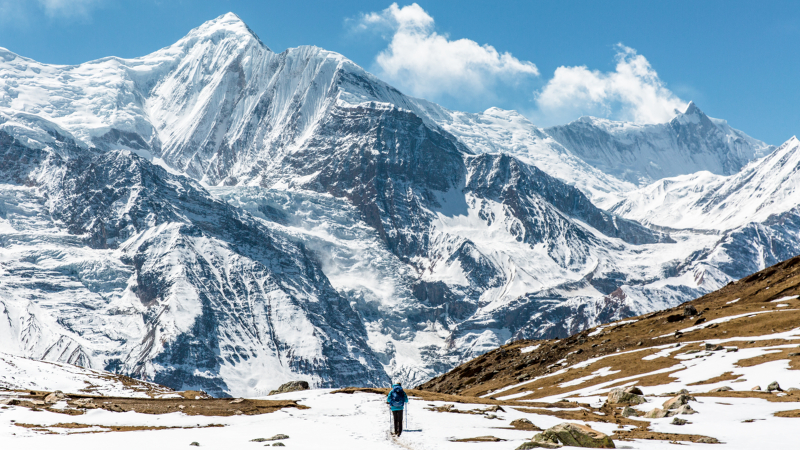
It’s one of the world’s classic long-distance hiking trails, and still one of Nepal’s most popular treks.
The Annapurna Circuit , a 12 to 21-day route that begins in the lush green villages of the Himalayan foothills. Taking trekkers over the 5,416m Thorong La Pass and down to the Tibetan-influenced temples and communities of the Mustang Valley.
If you want to experience a little bit of everything Nepal has to offer, this is perhaps the best trek to set off on, but it’s certainly no easy feat. The circuit is very tough at times, and the high altitude and unpredictable weather of the Annapurna mountain range can make crossing the Thorong La Pass a dangerous task – particularly if you’re not prepared.
Thankfully, I’ve got your back! So, here are ten things you should really know in order to complete the amazing Annapurna Circuit safely and with a smile on your face.
Check out Intrepid's Annapurna treks
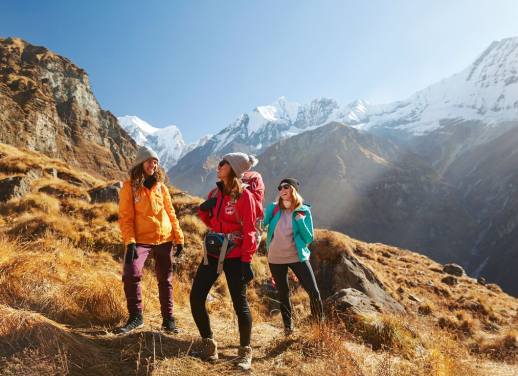
1. Plan the time of year right
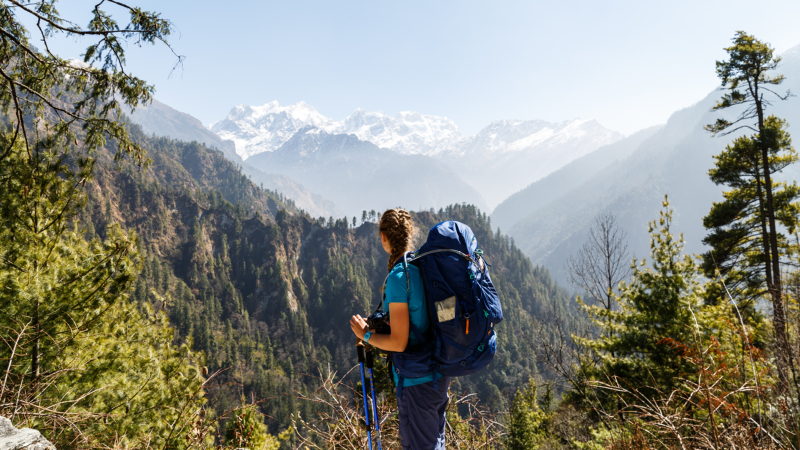
Photo captured by Annapurna Mellor
Like with many of the treks in Nepal, there are certain times of year when the weather conditions are ideal. For the Annapurna Circuit, October and November or April and May are widely considered to be the best times for trekking. The weather during these two seasons is generally clear and dry, and so it’s not too cold when heading into high altitudes. These two seasons are also the busiest times to be on the trail, with many other trekkers from across the world heading into the Himalayas.
You can also trek at other times of the year, but you will need to be a little more prepared for adverse weather conditions. The winter season, December to March, can also have clear skies and spectacular views. But it can be incredibly cold at higher altitudes, with thick snow on the ground that can often cause the Thorong La Pass to close at short notice. If you decide to trek during the winter season, make sure you have extra layers, a thick sleeping bag suited to temperatures of at least -20°C and crampons, which can be bought in Kathmandu and Pokhara.
GO NOW: EXPERIENCE THE BEAUTY OF THE ANNAPURNA CIRCUIT ON THIS 16-DAY ADVENTURE
2. Bring only what you need, leave the rest behind
When trekking on the Annapurna Circuit with Intrepid, Nepalese porters will carry 10kg of your gear. Anything extra will need to be carried on your own back, so packing as lightly as possible is essential. There are some things you need, such as a good quality sleeping bag, warm jackets, medicines, thermal layers and a head torch. But leave your jeans, laptop and makeup back in Kathmandu. You really don’t need them on the trail, and your back will thank you for it!
SUBSCRIBE TO OUR NEWSLETTER FOR THE LATEST TREKKING NEWS, OFFERS AND COMPETITIONS
3. The altitude should not be underestimated
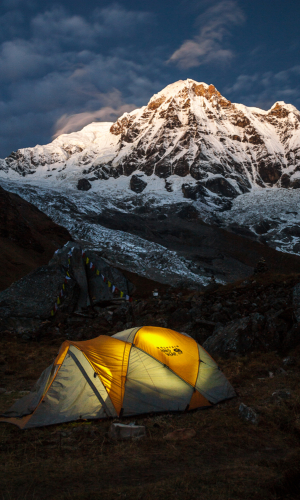
Altitude sickness can happen anytime above 2,500m. It doesn’t matter how fit you are, it can affect anyone and does so randomly. You can stay prepared by taking Diamox, an altitude medication, but aside from that just take it slow, drink lots of water and listen to your body. Before you set off on the trail, read up on the symptoms of altitude sickness so you’re aware of them if you start to feel the effects. Your guides will also be very knowledgeable about altitude and can be an essential source of help if you aren’t feeling well. The Annapurna Circuit reaches over 5,000m, that’s seriously high, and almost everyone will experience some mild symptoms like headaches or difficulty sleeping.
RELATED: ANNAPURNA OR EVEREST? YOUR DEFINITIVE TREKKING GUIDE
4. Be prepared for all weathers, whatever the time of year
While certain times of the year have much more suitable trekking weather (see point one), it is vital to be prepared for all possible conditions, no matter when you decide to go. High in the Himalayas, the weather is unpredictable, and snow, rain or storms can happen at any time. Climate change also means that weather patterns have become even more erratic over the last few years. Even if you’re trekking in October, be prepared for snow or storms on the trail. Pack enough warm clothing, make sure your boots are waterproof and don’t forget your sun cream or a sunhat.
GO NOW: DISCOVER THE HIGHLIGHTS OF THE ANNAPURNA CIRCUIT ON THIS 16-DAY ESCAPE
5. Eat well and look after your body
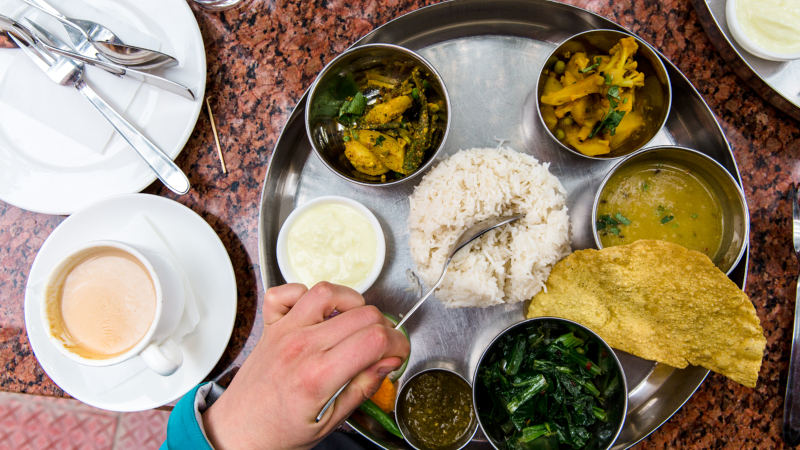
One of the best things about the Annapurna Circuit is the food and hospitality you will receive in the teahouses. Each evening, after a long day of trekking, you will be delighted to sit down in front of a roaring fire and tuck into a plate of dal bhat (a traditional Nepali meal of rice, lentils, vegetable curry and pickle). The food is delicious and very filling, and your body will be grateful for it the next day when you feel revived and ready to head out on the trail again. Other common offerings in guesthouses include garlic soup, a local remedy for altitude sickness and much better than it sounds. As well as, fried potatoes, spaghetti with local vegetables and of course apple pie – which is the Annapurna Circuit’s desert of choice due to the apple orchards growing in many of the villages along the trail. For snacking, I recommend stocking up in Kathmandu, as the cost of items like chocolate bars can get very high on the circuit.
RELATED: 8 NEPALI DISHES YOU HAVE TO TRY
6. It’s good to have a way to purify water
Plastic is a big problem on trekking routes across Nepal, as most of these small villages have no waste disposal system. This is leaving mountainsides cluttered with discarded plastic bottles, which is really not how we want to be treating these areas of striking natural beauty! You can’t drink the tap water in Nepal, and you really do need to be drinking a lot on the trail as you are walking long distances at high altitudes.
I recommend getting a steel reusable water bottle in Kathmandu. Along the trail, there are many villages with purified drinking water stations. Here you can refill your bottle and it actually works out much cheaper than buying bottled water. You can also use water purification tablets or buy a steripen. During the evenings, we would often order pots of hot water or tea and drink that, you can also fill up your bottle with any remaining in the pot and it’ll still be good to drink the next day.
TAKE ME THERE: EXPLORE OUR FULL RANGE OF ANNAPURNA CIRCUIT BREAKS
7. Learn some cultural respect
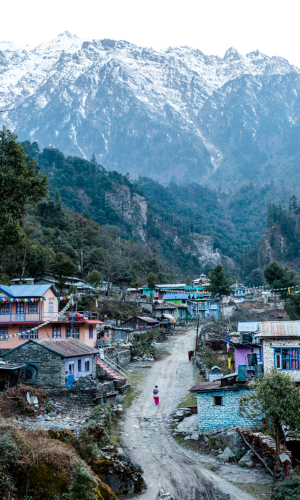
For many people, trekking in Nepal is about mountain views and hiking. But this is also a cultural trail, and it’s important to respect the people that call these villages their home. I recommend learning a little more about the cultures you are passing through. Speak to the families running the teahouses and go visit local gompas or temples. Opening your eyes to the cultures, religions and heritage of the trail will make it a much more enjoyable and meaningful experience, and it also means a lot to the local people when trekkers take an interest in their lives.
RELATED: MY INCREDIBLE MEETING WITH A HERMIT ON A NEPAL MOUNTAIN TREK
8. Don’t run out of cash
Once you leave Besisahar, there are no cash machines on the Annapurna Trail until you reach Jomsom after the Thorong La Pass. So, you need to be prepared and carry all the money you will need for the journey. While food and drinks in the teahouses can be cheap in the lowlands, they increase significantly as you increase in altitude and the road disappears. In Kathmandu, dal bhat is likely to cost you around 200 rupees, but this can grow to around 800 when you get above 3,500m. Western food such as burgers, pasta and burritos (yes, all food you can get on the trail), also tends to be very expensive as you get higher. I would recommend taking at least $20 per day for the trek, and if you’re a big eater or want to drink alcohol, $30-$40 per day is better.
GO NOW: TACKLE ANNAPURNA AND EVEREST ON THIS 31-DAY EPIC
9. Prepare yourself for the Thorong La Pass
Crossing the Thorong La Pass was probably the hardest day of my life! Waking up before sunrise and heading over narrow ridges in thick snow. Then climbing continuously for hours before finally reaching the prayer flags on the pass, breathless and completely relieved. Ok, maybe I’m not selling it so well. But it is essential to be prepared for this day, which will really push even the fittest hiker to the limits.
As long as you’re prepared, wearing enough warm clothes and have acclimatised enough to ensure your body comfortably makes the journey, then reaching the Thorong La Pass is going to be one of the most joyous moments of your trekking trip! Plus, once you’ve reached the top, you get to descend 1,600m to Muktinath, where the air is thick in oxygen and there are even hot showers to look forward to.
GO NOW: LIMITED ON TIME? OUR 5-DAY WALKING TOUR THROUGH THE ANNAPURNA RANGE
10. Be positive, take it slow and enjoy the journey!
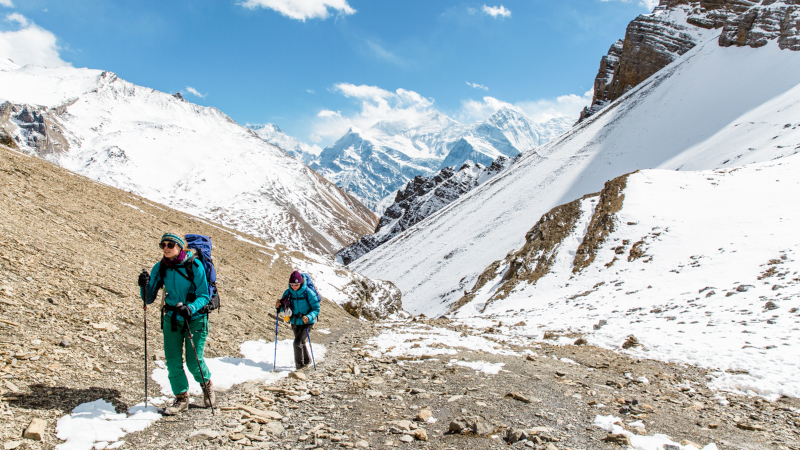
Travelling is meant to push you and challenge you in so many ways and trekking the Annapurna Circuit in Nepal will certainly do just that. While this is a difficult trek at times, it is also an incredibly enjoyable journey and one that can be completed by people of all ages and all fitness levels. The most important thing throughout the trek is to stay positive. Even when your body aches and you’re craving a hot shower, positivity will drive you on and it won’t be long before a breath-taking Himalayan panorama makes you remember why you’re here pushing yourself to the limit. It’s these incredible views, the wonderful hospitality of the local people and the company of your trekking buddies, which really make this a journey you will remember for the rest of your life!
RELATED: WHY CHALLENGING YOURSELF IS SUCH AN IMPORTANT PART OF TRAVELLING
Think you’re ready to take on the Annapurna Circuit? Take a look at our selection of trekking tours that’ll take you there . Already tackled it and looking for a new challenge? Check out our range of walking and trekking holidays from around the world.
Annapurna Mellor
Annapurna Mellor is a photographer, writer and storyteller. Her travels have taken her across Asia, Northern Africa, along the Trans-Siberian Railway and around Europe - always taking the road less travelled and always aiming to go a little deeper into the heart of local culture and people. Her photography work has been featured in National Geographic Traveller Magazine, Lonely Planet Guide Books and in campaigns for many travel brands around the world. Although she is usually dreaming about adventures afar, she is based, most of the time, in Manchester, England.
You might also like
The 7 best places to go on a..., 5 reasons to visit sri lanka in the..., why 2024 is the best year to see..., yellowstone vs yosemite: which national park to visit, 6 unique experiences you can have in el..., from delhi to udaipur, here are the five..., cinque terre vs amalfi coast: which destination to..., love at first bite: 10 famous sandwiches from..., galapagos or madagascar which unique destination should be..., central vs south america: how to plan your..., 4 reasons you should take a road trip....
- Africa & the Middle East
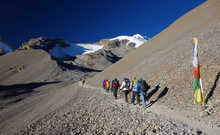
- The Three Passes Trek
- Kandoo Trekking
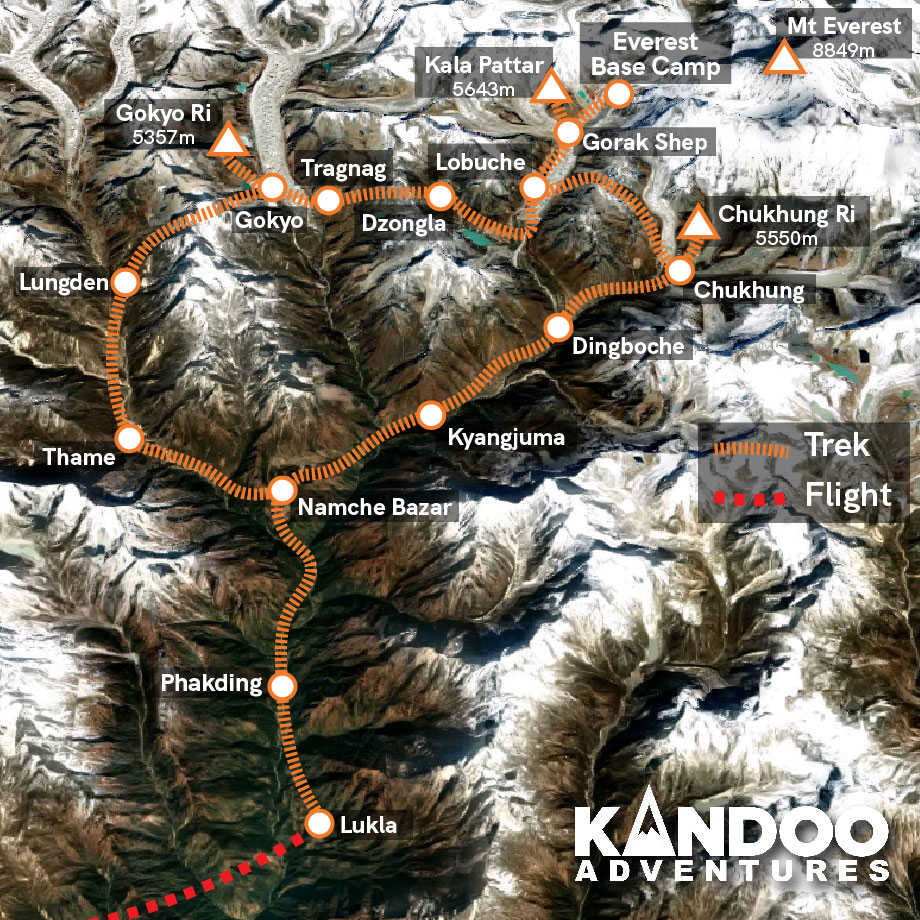
Contact our UK team
Our local team
Kandoo's view, trip highlights.
- An amazingly scenic circular route, climbing three peaks
- Cross the challenging Renjo La, Cho La and Kongma La Passes
- Lodge-based accommodation
Experiences
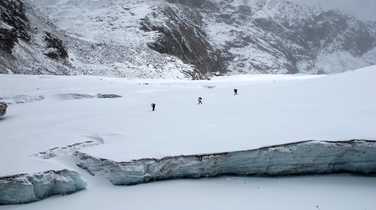
ARRIVE IN KATHMANDU
All trekkers need to organise their own flights to Kathmandu International Airport (KTM). From the airport we will arrange a private transfer to your hotel. That night you will meet your local Kandoo representative and have a full pre-trek briefing
- Accomodation: Hotel
FLIGHT TO LUKLA – TREK TO PHAKDING
The flight from Kathmandu to Lukla takes 45 minutes and is an adventure in itself with great views of the Everest region and ending with a hair-raising landing on a steep mountain runway. After meeting our crew, we will start our trek by heading up the Dudh Koshi Valley on a well- marked trail to Phakding.
- Transport: Flight (0.8 hour, 136 km)
- Hiking time: 3 - 4 hours
- Ascent: 1500 m
- Descent: 144 m
- Max. altitude: 2800 m
- Accomodation: Teahouse
- Meals included: Breakfast
TREK TO NAMCHE BAZAAR
From Phakding, we cross and re-cross the river on high suspension bridges. Beyond Monjo is the entrance to the Sagarmatha National Park. We then ascend steeply to Namche and along the way, if the weather permits, catch the first glimpse of Mt Everest. Namche Bazaar is the main trading village in Khumbu and has a busy Saturday market. You can enjoy an Illy coffee and amazing brownies here!
- Hiking time: 6 - 7 hours
- Ascent: 794 m
- Max. altitude: 3450 m
ACCLIMATISATION IN NAMCHE
Namche is tucked away between two ridges and has lots of lodges, tea shops and souvenir shops. Today we will trek up to the Everest View Hotel at 3880m for our first view of Ama Dablam and Mount Everest. Following the ‘walk high, sleep low’ principle, this hike will really help with your acclimatisation.
- Ascent: 430 m
- Descent: 430 m
- Max. altitude: 3880 m
TREK TO THAME
The trail now splits from the popular base camp route and heads north-west to the village of Thame where you will be staying the night. Take some time here to learn a bit about the local traditions and their intrinsic connection with the mountain on which you are standing.
- Hiking time: 4 - 5 hours
- Ascent: 434 m
- Max. altitude: 3884 m
TREK TO LUNGDEN
Today we will start to climb back up to higher altitude heading up the valley to Lungden. Make sure you have your camera at the ready as the higher you go the views across the snow-capped peaks in the region just get better and better.
- Ascent: 496 m
- Max. altitude: 4380 m
TREK TO GOKYO VIA RENJO LA PASS
Today wewill encounter the first of the Three Passes – Renjo La. The route starts off gently but will soon turn into a hard day of hiking as we near the end of the ascent to Renjo La. Try to think of the magnificent views you will get at the top to motivate you! After the pass, we will descend to the third of the beautiful turquoise Gokyo Lakes and then trek onto the village of Gokyo for the night.
- Hiking time: 7 - 8 hours
- Ascent: 1008 m
- Descent: 638 m
- Max. altitude: 5388 m
ASCENT OF GOKYO RI
Today you climb your first peak, Gokyo Ri, for fabulous views of Cho Oyu. We start the climb early and then have the rest of the day to rest to help our acclimatisation. If we still have energy, then later in the day we can hike up some of the surrounding moraine ridges and enjoy the views. As a treat for all our hard work we can then tuck into some delicious cake from the wonderful Gokyo bakery.
- Ascent: 733 m
- Descent: 733 m
- Max. altitude: 5483 m
TREK TO TRAGNAG
We leave Gokyo to cross the Ngozumpa Glacier. We descend to the second lake and drop down onto the glacier. The route across the glacier is marked by cairns and is generally quite well defined. We climb off the glacier and follow a shallow valley to Tragnag.
- Descent: 60 m
- Max. altitude: 4750 m
TREK TO DZONGLA VIA CHO LA PASS
An early start is required today to cross the Cho La Pass and make the long descent to Dzongla. Continuing up the valley, we cross a ridge and an old lateral moraine, before beginning the rocky scramble to the pass. From the top there are excellent views, across to the Rolwaling Valley in the west and Ama Dablam to the south east. The descent from here involves crossing a small glacier which is fairly straightforward. There are more excellent views of Ama Dablam and Cholatse as we descend.
- Ascent: 730 m
- Descent: 590 m
- Max. altitude: 5420 m
TREK TO LOBUCHE
The way to Lobuche contours the grassy slopes above a lake, the Tshola Tsho, to join up with the main Everest trail from Pheriche and Tengboche. The trail flattens out and follows the valley on the west side of the Khumbu Glacier to Lobuche.
- Ascent: 98 m
- Descent: 4928 m
TREK TO GORAK SHEP – EVEREST BASE CAMP – GORAK SHEP
To reach Everest Base Camp, we follow the Khumbu Glacier. The trail offers superb views of the surrounding mountains, especially where the path is forced to rise to cross a tributary glacier. We stop at Gorak Shep before making our way to Base Camp itself. This takes several hours as the trail weaves its way through ice pinnacles and crevasses of the Khumbu Glacier.
- Hiking time: 8 - 9 hours
- Ascent: 436 m
- Descent: 200 m
- Max. altitude: 5364 m
ASCENT OF KALA PATTAR - TREK TO LOBUCHE
An early morning start is needed to summit the trekking peak of Kala Pattar – the iconic viewpoint of Everest. After snapping some pics, we head back to Gorak Shep for a quick meal before descending further to Lobuche for the night.
- Ascent: 390 m
- Descent: 626 m
- Max. altitude: 5554 m
TREK TO CHUKHUNG VIA KONGMA LA PASS
We leave the classic base camp route today as we head east through the Khumbu Glacier to reach the third and final pass of the trip – Kongma La. At 5,535m the pass is the highest of the three. After a tiring ascent to the top, we descend into the Chukhung Valley and eventually to the village of Chukhung where we will stay in the lodge overnight.
- Ascent: 607 m
- Descent: 785 m
- Max. altitude: 5535 m
ASCENT OF CHUKHUNG RI - TREK TO DINGBOCHE
Today we will climb Chukhung Ri - the hardest of the three peaks on this trek which involves some easy scrambling near the summit. The views from the top down the Khumbu Valley are superb. We descend to Dingboche.
- Ascent: 800 m
- Descent: 1190 m
- Max. altitude: 5550 m
TREK TO KYANGJUMA
We now descend back to the main Everest trail through Pangboche before climbing to the monastery at Tengboche. From Tengboche we make a steep descent before climbing back up to Kyangjuma where we will stay overnight in a lodge.
- Descent: 696 m
- Max. altitude: 4360 m
TREK TO PHAKDING
We continue through Namche Bazaar, descend Namche Hill and cross the Dudh Koshi. We will trek back along familiar paths to Phakding where we will stay the night.
- Descent: 1008 m
- Max. altitude: 3664 m
TREK TO LUKLA
Our final day's trekking follows the Dudh Koshi back down to Lukla. This last evening in the mountains is the ideal opportunity for a farewell party with the Sherpa guides and porters, where you can look back on a memorable trekking experience.
- Ascent: 144 m
RETURN TO KATHMANDU
After an early breakfast, we will begin our return journey to Kathmandu.
FREE DAY IN KATHMANDU
A free day in Kathmandu to explore the city at your leisure
DEPART FROM KATHMANDU
We will collect you from your hotel and transfer you to Kathmandu Airport for your departing flight.
Trip information
Formalities & health, equipment & clothing.
Treks in the Himalaya present a substantial physical challenge , and the more fit you are before you start, the more you will enjoy your trek. However, the number one most important thing to cultivate is mental toughness . Most of the people who trek in the Himalaya aren’t professional athletes or mountain climbers; they are average people with an unusual degree of determination.
If you are comfortable walking for 7-8 hours with an ascent of 1000m every day for two weeks then you are certainly fit enough to succeed on this trek. We find that all successful hikers share a real Kandoo attitude and that means high levels of grit and determination.
Food & drink
You choose what you want to eat at the lodges, and settle your own bill in the morning. While you can eat heartily for very little money at any lodge, we do recommend that you budget £20 to £25 ($30 to $35) per day for meals and drinks. This will ensure that you not only have plenty of food, but that you enjoy it a lot more. Where once there was a choice of perhaps 5 different rice or lentil based meals at any one lodge, most now offer a wide menu of 40 or more choices from the basic (such as dhal bhat) to the sophisticated (yak steak with blue cheese sauce).Please note that we prefer some of the more expensive lodges, so the prices are higher than they might be at more spartan facilities.
One word of advice, place your meal order as soon as you can upon arriving at the lodge as it is strictly ‘first ordered, first served’, and the best lodges are quite busy at meal times.
Accommodation
Trekking in Nepal is more popular than ever. As a result, the standard of accommodation available on most of the trek routes has improved dramatically. Where there were once simple peasant huts, large hostels have been built featuring running water, indoor toilets (some en-suite) and electricity. However, while internet access, charging facilities and hot water are available, you will need to pay to use them - if you plan on using the internet and showering every day, then you should budget around $10 per day.
However, development is still ongoing, and as you get higher into the mountains the lodges become more basic. Furnishing is generally fairly spartan, and most rooms feature little more than a bench bed and a thin mattress, so your sleeping kit will probably see some early use. Showers are not always available and it tends to be just the communal areas that are heated.
The exception to that rule is Namche. Namche features some really great lodges, including the Hil-Ten (this is not a region that makes much of copyright infringement) and if you are in need of refreshment there both Illy and Lavazza coffee are available
Kandoo has a list of lodges that we prefer to work with, all of which are regularly inspected to ensure the best quality rooms available. Even at the worst, they are clean and well-kept. When the route is busy, we send a porter ahead to hire rooms for the night, as they cannot be reserved in advance.
The general standard of driving throughout Nepal is poor and badly regulated . Roads in Kathmandu are very congested, many drivers are not properly licensed and vehicles are poorly maintained. During the monsoon season (June to September) many roads outside the Kathmandu valley are prone to landslides and may become impassable.
We insist on using a high standard of vehicle and driver for all of our transfers. In Nepal it is not a legal requirement to have seatbelts fitted in the back of vehicles, and while we try to use vehicles that do have rear seatbelts fitted, this cannot always be guaranteed. If you are unhappy about any aspect of the vehicle or the standard of driving, please speak to the driver or our local office.
Duffel bags
You will be provided with a large duffel bag at the pre-trek briefing that will be yours to use for the duration of your trek. Your equipment will then need to be transferred into this bag. If you are travelling with a duffel bag then it is up to you which bag you choose to use for the trek, if you are travelling with a suitcase then this will need to be left at the pre-trek hotel and collected upon your return as our porters need the bags they carry to be flexible.
All items must be packed in your main equipment bag. They should not be attached to the outside, as we are not responsible if items fall off when the bags are being carried on the trek.
How do I get there?
Budget & change.
If you are relying on a credit or debit card for emergency funds, make sure you tell your card issuer that you will be using it abroad, or you may find that it won't work when you really need it.
We realize that tipping may not be a common practice in all countries but for Nepal it is a standard practice that all operators support. The decision on how much to tip should be determined by how well the team served you while you were on the trek. Tips are always discretionary and if you are not happy with the service you have received you do not have to pay tips. Tips can be made in US dollars or Nepali Rupees. It is very important that US bills be new (less than 10 years old), crisp and untorn.
We are members of the Trekking Agencies Association of Nepal and the Nepal Mountaineering Association, and follow their guidelines when recommending tip levels for guides and porters. We would suggest you budget $175-$225 per trekker for your tip contribution.
We say goodbye to our porters in Lukla before we return to Kathmandu. Any tips that you wish to give to the porters will need to be carried on the trek with you.
Vaccinations
Equipment supplied by kandoo adventures.
We do not have other gear available for rental but there are many places offering gear for rental in Kathmandu and we can recommend a number of places for you. The quality of rental gear is very variable and it is your responsibility to check carefully the condition of any item you rent. We accept no responsibility for the quality of equipment hired. An indication of the likely rental costs is below.
- Four Season Sleeping Bag - $2 per day
- Down Jacket - $2 per day
- Trekking Poles - $1 per day
Most of the rental shops close around 8pm, so if you are arriving on a late flight the day before the trek starts there will not be an opportunity for you to visit a rental store. If you are planning on renting equipment, you need to make sure you have allowed sufficient time at the beginning of your trip.
All rental equipment is included in your overall trekking bag weight, so make sure you have allowed for this when packing your bag at home. A sleeping bag will weigh around 2kg.
Clothing to bring
- Warm beanie style hat – knitted or fleece
- Neck gaiter or scarf. It can get dusty in Nepal and the air very cold. A scarf or balaclava comes in useful for keeping dust out and can double as a warm layer for your neck / face!
- Sun hat – preferably wide-brimmed for protection
- Sunglasses – high UV protection
- Headlamp (plus extra batteries)
- Thermal or fleece base layer (x2)
- Long sleeve shirt/tshirt – light or medium weight, moisture wicking (x3)
- Short sleeved shirt/tshirt – lightweight, moisture wicking (x2)
- Fleece or soft shell jacket (x2)
- Insulated jacket – down or primaloft
- Lightweight water/windproof hard shell outer jacket
- Gloves – lightweight, fleece or quick drying fabric
- Gloves or mittens – heavyweight, insulated, preferably water resistant
- Leggings – thermal or fleece base layer (x1)
- Trekking trousers – light or medium weight (x2) – convertible trousers work well
- Waterproof hard shell trousers – ski pants work fine (x1)
- Trekking boots – mid weight with good ankle support
- Training shoe or similar – to wear around the teahouses
- Micro-spikes – may be required in snowy conditions
- Mid-weight trekking socks (x5 pairs)
- Breathable, high-wicking liner socks (x3 pairs)
- Thermal trekking socks for upper reaches of your trek (x1 pair)
Equipment to bring
- Small Rucksack or Daypack (30-40 litres) to carry water and personal items
- Sleeping bag (4 season or -10 Deg C) and compression sack
- Trekking poles
- Water bottle or hydration bag – must be able to carry 1.5-2L of water
OTHER ACCESSORIES
- Sunscreen and lip balm - high SPF
- Toiletries, including toilet paper, wet wipes and hand sanitiser – please carry all rubbish back off the trail
- Camera and spare batteries
- Plug adapter, for charging devices in teahouses and hotels
- Personal medication and first aid kit
- Personal snacks and energy bars – dried fruit and nuts are also a good source of energy
- Isotonic drink powder / energy drink powder to mix in with your water. This improves flavour and helps replace electrolytes
- Microfibre towel for wiping hands and face each day
- Ear plugs, if you are a light sleeper
- Pee bottle, useful for late night toilet needs
- Dry bag (only required if your main duffle bag is not waterproof)
Dates & prices
Want to ask us a question or book a private trip? Don't hesitate to contact us!
Price includes
- Your hotel stay for one night before and two nights after the trek
- All airport transfers
- Return flight between Kathmandu and Lukla
- National Park entry and TIMS fees
- A fully supported trek with a qualified mountain guide
- All drinking water on the trek
- Teahouse accommodation on a room only basis
- Access to emergency oxygen and first aid kit
Price does not include
- International airfares and visas
- Tips for your guides and porters
- Personal items
- Travel insurance (you must be insured, and specifically for treks up to 6000m)
- Your personal trekking gear
- Your personal medicines or prescriptions
- Meals and drinks on the trek
- Meals and drinks in Kathmandu (breakfast is included)
- Additional hotel nights before or after your climb
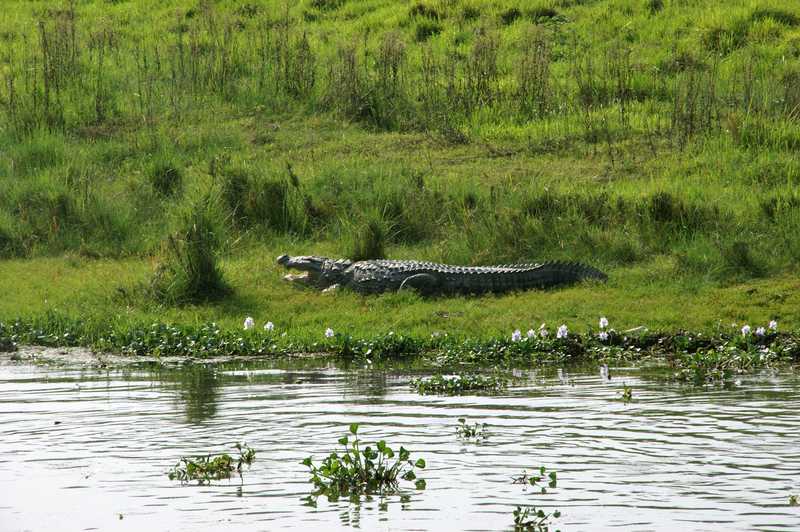
Chitwan National Park 3-day extension
You may also like.
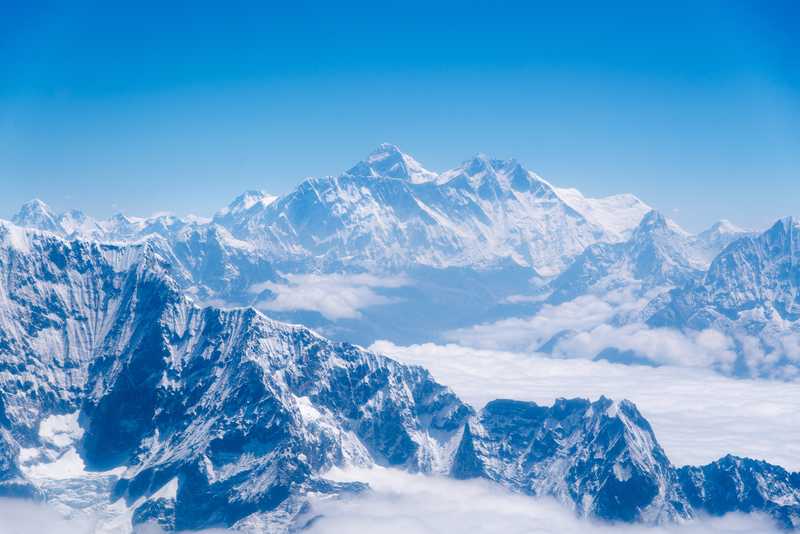
Everest Base Camp
- from $1,725
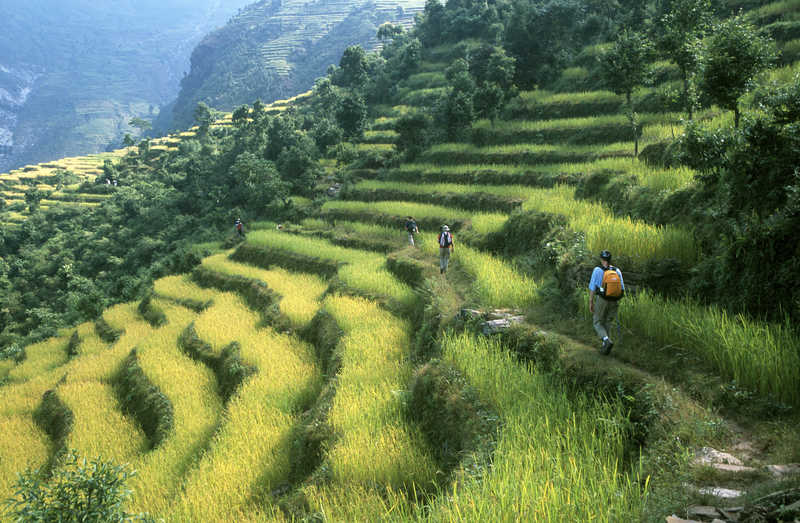
Poon Hill Trek
- from $1,365
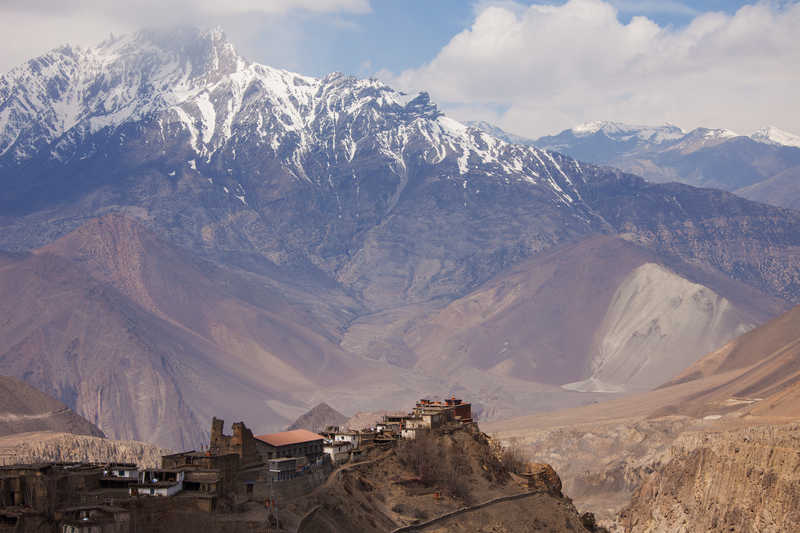
The Chomolhari Trek
- from $4,095
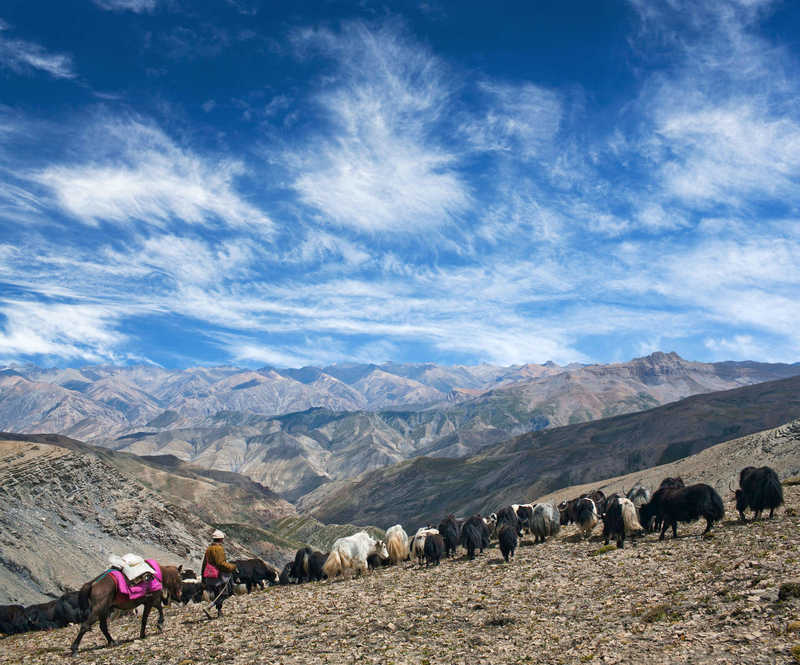
Changtang Lakes to Spiti Valley
- from $3,385
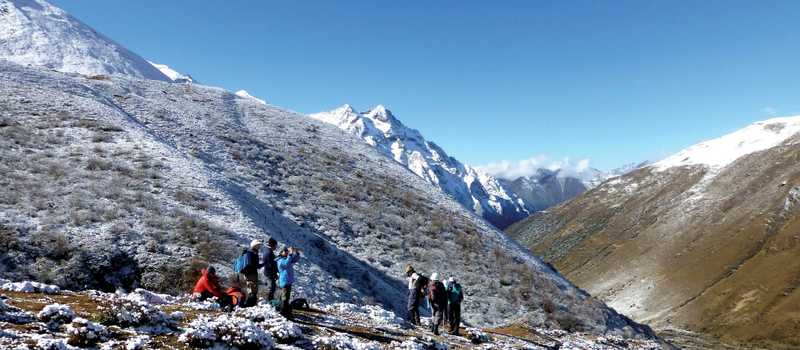
The Snowman Trek
- from $12,345
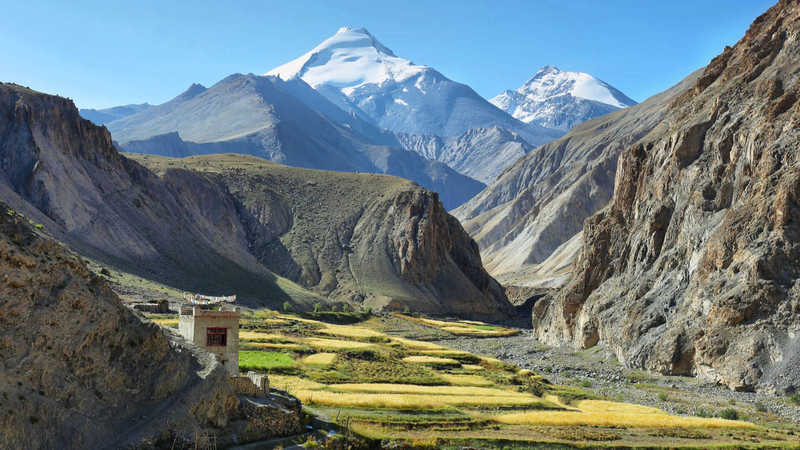
Markha Valley and Kang Yatse II
- from $2,335
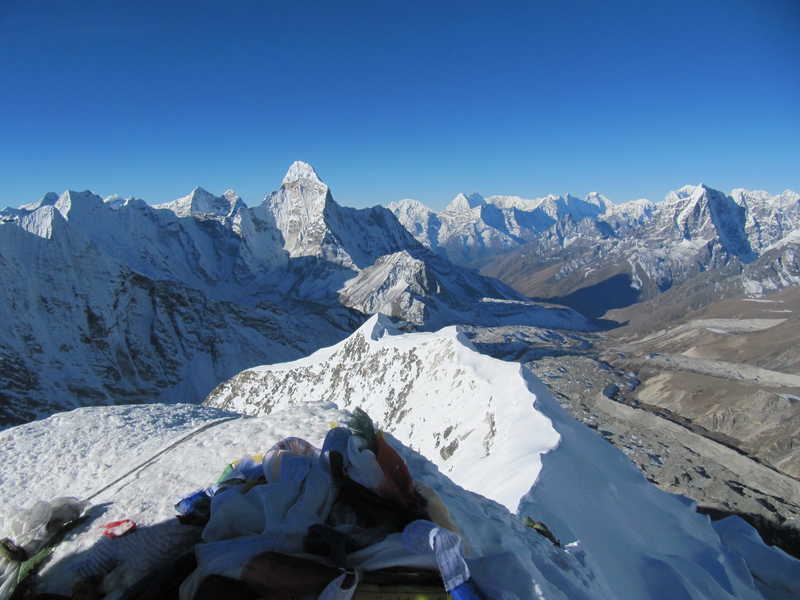
Everest Base Camp and Island Peak
- from $3,575
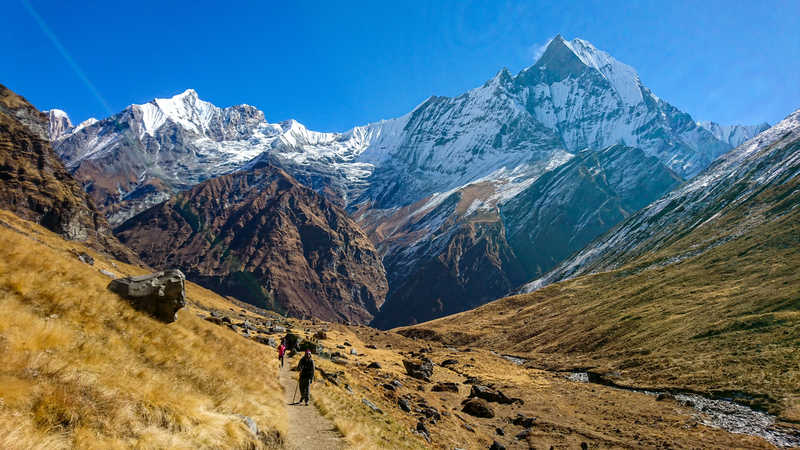
The Annapurna Sanctuary
- from $1,555
Facts About Mt. Everest
Trek to Everest Base Camp
Best Time to Visit
Weather & Climate
Kathmandu Airport Guide
Top Destinations in Nepal
One Week in Nepal
Tipping Guide
Getting Around
Top Things to Do in Nepal
Complete Guide to Kathmandu
Top Things to Do in Kathmandu
Top Things to Do in Pokhara
Sacred Sites
Amazing Festivals
Top National Parks
Must-Try Food
Annapurna Circuit
Manaslu Circuit
Himalaya Trail
Nepal's Great Himalaya Trail: The Complete Guide
:max_bytes(150000):strip_icc():format(webp)/Profilepic_small-825a61251a60463999e3bdc1e5add2a5.jpg)
Westend61 / Getty Images
More a concept than a tangible trekking trail per se, the Great Himalaya Trail (GHT) is a network of existing trekking trails that run through the low, mid, and high Himalayan mountains. While the majority of the trails are in Nepal, they also reach into India and Bhutan. Together, the GHT is the longest, highest trekking trail in the world, spanning at least 1,000 miles. No single operator "runs" the GHT, but various organizations and companies work on the trails and with trekkers wanting to traverse them.
Nepal is well-known for its trekking trails, and its simple but good infrastructure that supports trekkers. Local residents have been cutting paths through the hills and mountains of the Himalaya for centuries. Since the mid-20th century, when Nepal opened up to outside visitors, trekkers have been following these same paths (and forging new ones), while staying in basic lodges (teahouses) or camping along the way.
Travelers needn't trek the whole GHT in one go. In fact, because of the seasonal conditions, altitude, and the fact that trekking in most parts of Nepal is limited to quite short windows in the spring and fall, it's best not to try to do the whole GHT in one go. But like many other long-distance treks throughout the world (New Zealand's Te Araroa , the Pacific Crest Trail), doing sections that add up to the whole over time is encouraged.
The GHT in Nepal has been divided up into 10 more manageable sections that focus on different regions of the Himalaya. These encompass very popular places, such as the Everest and Annapurna regions, as well as lesser-visited ones. These sections are (from west to east):
- Far West Nepal
- Rara and Jumla
- Annapurna and Mustang
- Manaslu and Ganesh Himal
- Langtang and Helambu
- Everest and Rolwaling
- Makalu Barun
- Kanchenjunga
There are two main options for completing the GHT: taking the "low route" or the "high route." They're also sometimes referred to as the mountain route and the cultural route, as the lower sections tend to have more villages. If you're doing the GHT in stages, you could even mix and match, which can help avoid the summer heat on the low route, and the winter snow on the high route.
The Low Route
As the name suggests, the GHT low route is a lower-altitude option. These trails mainly pass the pahar , the Nepali foothills of the Himalaya, which in themselves can still be quite high! For instance, Nepal's capital Kathmandu sits at an altitude of 4,593 feet, and the "hills" surrounding the valley reach up to 9,156 feet.
The low route is the more inexpensive of the two routes. This is partly because trekkers don't require pricey permits or mandatory guides anywhere on the low route. But it's also because the trails pass through more villages, and are closer to roads, so food and accommodation are easier to access, and therefore cheaper. It's common wisdom when trekking in Nepal that the higher in altitude you go, the more expensive the food and lodging.
Don't be fooled into thinking the low route is the easier of the two routes, though. Although the altitudes are generally lower than on the high route, there is a lot of up and down. Spending several hours slogging your way uphill just to find that your destination village is beneath you, at the altitude you started from, can be mentally and physically taxing! There are also some high passes to traverse. The lower lands of Nepal can also be very hot and humid at certain times of year, and can be very draining to walk through.
The High Route
While the high route is higher and takes more preparation for the conditions, once acclimatized to the altitudes, many trekkers may not find the walking as challenging as on the low route. Or at least, it's challenging in a different way.
The high route requires more permits than the low route, as it passes through more national park land and restricted territory. It's also essential to trek with a guide through parts of the high route, such as Kanchenjuna, Upper Mustang, and Upper Dolpo. Guides aren't required in the Everest and Annapurna areas, but permits are, and the cost of accommodation and food tends to be higher in these very popular places.
There are two possible routes through Upper Dolpo. The northernmost route requires a permit of $500 per week permit and trekking with a guide. The southernmost route, however, avoids this.
Multi-Country Routes
As an international trail, the GHT is more of a concept than a reality. Starting at Nanga Parbat in the western Himalaya in Pakistan and ending at Namche Barwa in the eastern Himalaya in Tibet, it's theoretically possible to traverse this 2,800 miles of mountain terrain.
But despite being close together, traveling between the South Asian countries where the Himalayan mountains lie is not straightforward, on foot or any other way. Due to geopolitical tensions, borders are tightly controlled, with the exception of most of the India-Nepal border. And even though the India-Nepal border is open to its own citizens, there are only several places where non-Indians and non-Nepalis are allowed to cross.
Trekkers on the GHT should not expect to walk right over a border, even (especially!) if that border is an imaginary line through mountainous territory. If you want to do sections of the GHT in different countries, you'll generally need to plan on driving or flying across borders. Some teams have trekked the whole GHT in one continuous go, but these have tended to be high-profile personalities (such as Sir Edmund Hillary's son, Peter Hillary, in 1981), or with international backing and sponsorship.
Practical Tips
- Trekking the full GHT can take anywhere between 90 and 150 days.
- Most parts of the GHT can be trekked independently, without a guide or porters. Unless you're very experienced trekking in the Himalaya and speak Nepali (or other local languages), though, the help of a local guide and/or porter is a good idea, at least on some parts of the trail. They can ensure you have the right permits to enter national parks and restricted areas, secure accommodation in the more popular or more remote parts, and generally keep you safe.
- The greatest dangers trekking in the Himalaya are environmental: high altitude, snowfall, monsoon rains, earthquake risk, landslides, and hazardous road travel to reach the trailheads. Serious crime targeting foreigners in the Himalaya is rare. All reasonable precautions should be taken, and it's never advisable to trek alone, but there's no need to be overly concerned about assault or violent crimes.
- While not impossible, trekking the GHT in one go would require walking in the off-seasons. In Nepal, these are the winter (the higher in altitude, the harsher the conditions), and the wet monsoon, when views are obscured by rainclouds and some trails may be washed out. If you're determined to do the GHT in one go, make proper preparations for off-season trekking, and consult a proper tour operator with experience on the GHT.
- Certain parts of the Himalaya are off-limits to foreigners (and sometimes even locals), and/or require an extra permit to travel to. Border areas tend to be most sensitive, particularly at the India-China and India-Pakistan borders. Heavier police and army presence in these areas is usually a good indication that you're nearing a sensitive area. In Nepal, Upper Mustang and Dolpo require extra permits and fees. Some of these places can only be visited with a guide on an organized tour anyway, but are another reason why consulting tour operators is a good idea when planning a trek on the GHT.
How to Go Teahouse Trekking in Nepal
The Best Time to Visit Nepal
Five Amazing Hiking Routes Among the High Mountains of the Himalayas
How to Trek Nepal's Annapurna Circuit
The Best 12 Hikes in Nepal
Your Trip to Nepal: The Complete Guide
The Weather and Climate in Nepal
How to Trek Nepal's Manaslu Circuit
The Top 20 Things to Do in Nepal
The Most Beautiful National Parks in Nepal
The Top 15 Destinations in Nepal
The Best Long-Distance Hiking Trails in the World
The Top 15 Hiking Destinations in India
12 Major Mountain Ranges in India
The Proper Gear for Trekking the Himalaya
Independent Trekking in Nepal
- Travel Guides Plan your adventure
- Destinations Our favourite places
- Tours Book a trip
- Travel Companies Independent specialists
- Travel Guides
- Destinations
- Travel Companies
The best Annapurna treks
An expert guide to trekking the annapurna region.
Stuart Butler
Bradley Mayhew
- In this guide
- Remote treks
- Challenging treks
- Everest treks
- Annapurna treks
Upper Mustang treks
- Langtang Valley treks
- Manaslu treks
- Dolpo treks
- Far Western Nepal treks
- Makalu treks
- Kanchenjunga treks
- What to eat in Nepal
- Best Annapurna treks
- Need to know
Annapurna trekking: overrated routes & hidden gems
For lots of visitors, trekking in Nepal = trekking in Annapurna, in particular either the Annapurna Sanctuary or the Annapurna Circuit trek. They’re both spectacular and more than deserve their hype but, in my opinion, they’ve been let down by the tourism industry’s tendency to over-market the already popular highlights at the expense of any hidden gems.
What's more, the Annapurna Circuit trek – for many years described as the single best trek on earth – has suffered so much encroachment from road construction that I’m not sure I could even recommend doing the original route (the new alternative route is excellent however.)
Fortunately there is much more to trekking in Annapurna than these two blockbuster routes. From simple walks in the flowery foothills, to hidden valleys that feel like Tibet and require special permits to visit, there's a huge variety of Annapurna treks that don't make it into the mainstream tourism marketing.
But whatever trek you choose, one thing is for sure: the mountain scenery will blow you away. Standing in the heart of the cirque at the end of the Annapurna Sanctuary trek could move you to tears, and the wilderness around Tilicho Lake will probably be the best mountain scenery you’ll ever lay eyes on
There’s the added advantage that most treks are simple to organise, trailheads easy to reach on public transport, and accommodation and facilities abundant and of a very high quality. So forget the glory of Everest , Annapurna is where it’s at!
Ready to go? Here's my expert guide to the best Annapurna treks.
Get the digested read
Where to begin? When to go? How to plan? So many questions, so little time. That's why we've asked leading Nepal trekking expert Stuart Butler to answer your most frequently asked questions in this handy four-part email series.
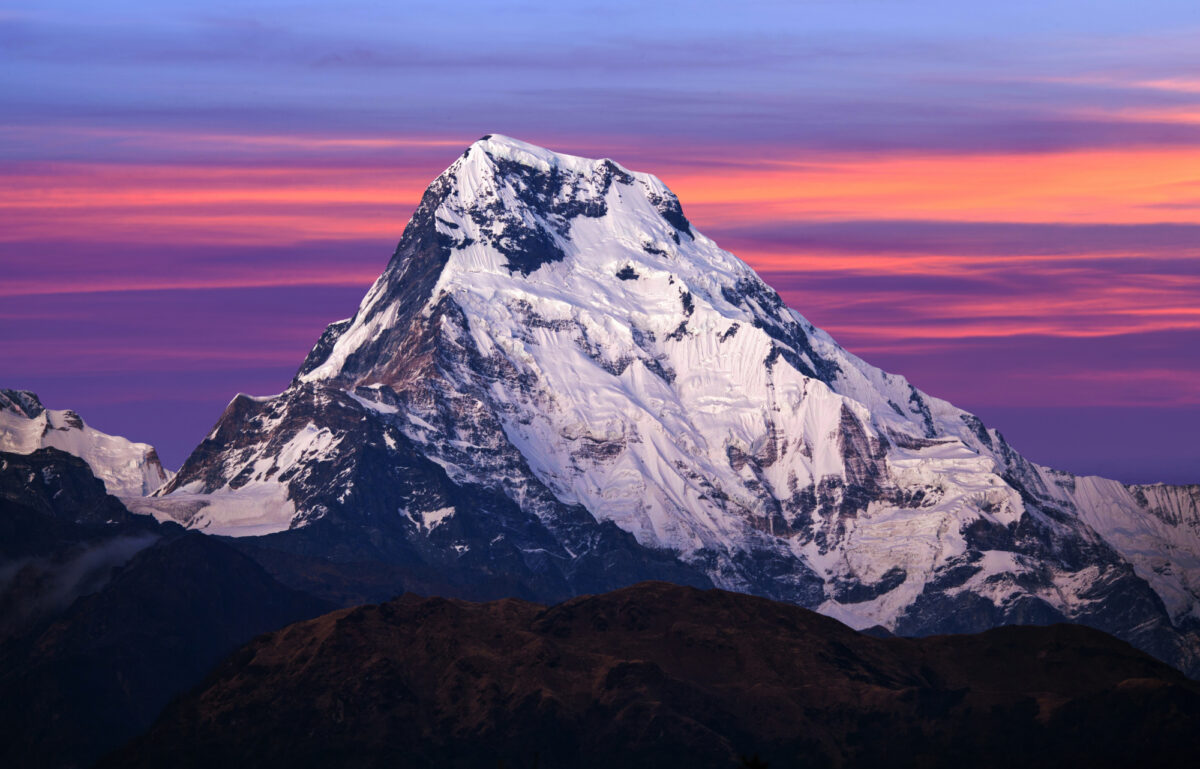
The classic view of Annapurna I
The most famous routes and some hidden gems
Annapurna region.
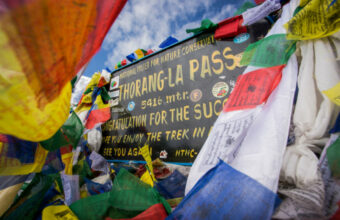
Road-free Annapurna Circuit
- Best trek for: Classic scenery, good facilities
- Difficulty: Moderate to hard
- Trek duration: Nine to 18 days
- Max. elevation: 5,416m
- Accommodation: Trekking lodges
- Start/end point: Dharapani/Jomsom or Naya Pul
This, one of the world’s classic treks, takes you through virtually the whole range of Nepalese landscapes: From sub-tropical valleys where banana plants and gushing, murky jungle rivers are the defining features, through gorgeous woodlands, and across Alpine meadows and conifer forests, to the rock and ice wastes higher up.
Sadly, in the past few years road construction has affected up to 75% of the original Annapurna Circuit route. Life’s too short to trek on roads, so my advice is to avoid the original route and follow the new road-free route instead . If you’re set on walking the Annapurna Circuit, be sure to follow the New Annapurna Trekking Trails (NATT) route that take you away from the road traffic and onto quieter and more scenic side trails – in many cases these new trails offer even more impressive scenery than the original routes. NATT routes are waymarked with signs painted in blue and white, instead of the red and white of the main Annapurna Circuit route.
The high point is the often snow-covered Thorung La Pass (5,416m) with its utterly sensational mountain views. From here you drop rapidly down towards the fascinating Hindu and Buddhist pilgrimage site of Muktinath and then into a drier, region of eroded river gorges, lush oases and castle-like monasteries around Kagbeni and Jomsom (look out for ammonite fossils in the Kali Gandaki river bed — evidence that the top of the world was once at the bottom of a prehistoric ocean).
Many people finish the trek at Jomsom (there are jeeps and buses to Pokhara or scheduled daily flights), but for the devoted, the new alternative trail winds slowly downhill through the dramatic Kali Gandaki valley into warmer, greener and lusher countryside. The sense of satisfaction of walking the entire circuit is second to none.
Facilities along the Annapurna Circuit are excellent with comfortable trekking lodges and good, varied food. Many lodges have hot showers and wi-fi. It’s busy during high season and the demand for beds can exceed supply. You can avoid the problem by joining an organised trip, and miss the crowds by overnighting at midway points between the major stops. See here for our recommended itinerary.
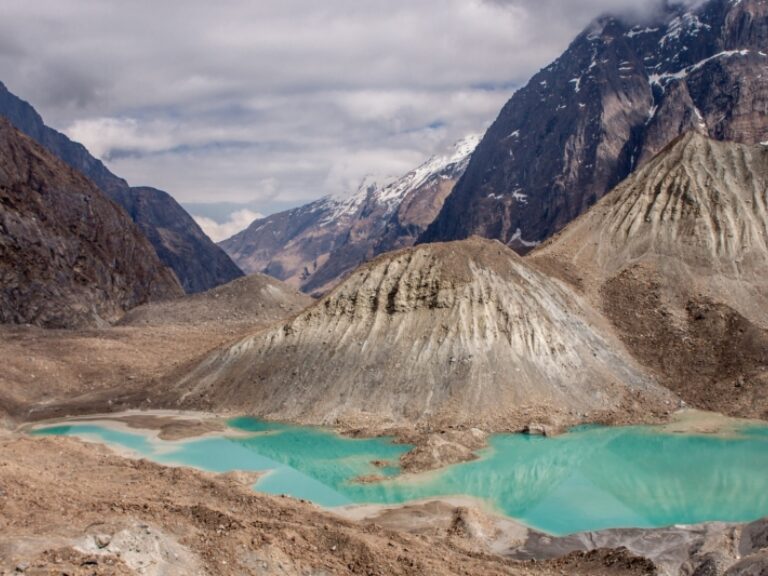
Annapurna North Base Camp
Best trek for: Expedition style camping
- Difficulty: Moderate
- Duration: Five to six days
Max elevation: 4,050m
Accommodation: camping
Start/end point: Tatopani/Sandhi Kharka
New trek routes always get my pulse racing, especially when they follow in the footsteps of a famous old expedition route. This particular trek follows the expedition route of Maurice Herzog’s epic 1950 ascent of Annapurna I (8,091m), the first ever ascent of an 8,000m peak, and it takes you up to an amazing mountain amphitheatre ringed with 7,000m peaks.
Unlike the busy base camps of the popular Annapurna Sanctuary trek, this ‘alternative’ Annapurna Base Camp trek is a true hidden gem that sees only a trickle of well-informed trekkers, largely because you need to camp and be self-sufficient. There are no lodges here and definitely no apple pie.
The trek starts at Tatopani, veering off the Annapurna Circuit to make a dramatic, sphincter-tightening jeep ride up the wild, sheer-sided gorge of the Mristi Khola. The walking starts at the hydroelectric plant at Hum Khola Dovan (2,880m), with overnights at Sandhi Kharka and Bhusket Mela (3,550m), until you finally set up camp in the astounding glacial basin of Narchang Lake (4,050m). This secret spot, surrounded by Annapurna I, Fang, Tilicho and Nilgiri peaks and walled off by the Great Barrier of the Annapurnas, is a classic mountain cul-de-sac, surrounded by glaciers, waterfalls and vertical rock walls.
The opportunities for day hikes here are fabulous, with faint trails leading to Annapurna North Base Camp, Advanced Base Camp and Nilgiri Base Camp via some epic glacier viewpoints. Bring a copy of Maurice Herzog’s classic 1951 Annapurna, and spend the evenings reading his account of the groundbreaking ascent and even more harrowing descent. It’s a day’s walk back to Sandhi Kharka and then half a day to meet your jeep and make the wild ride back.
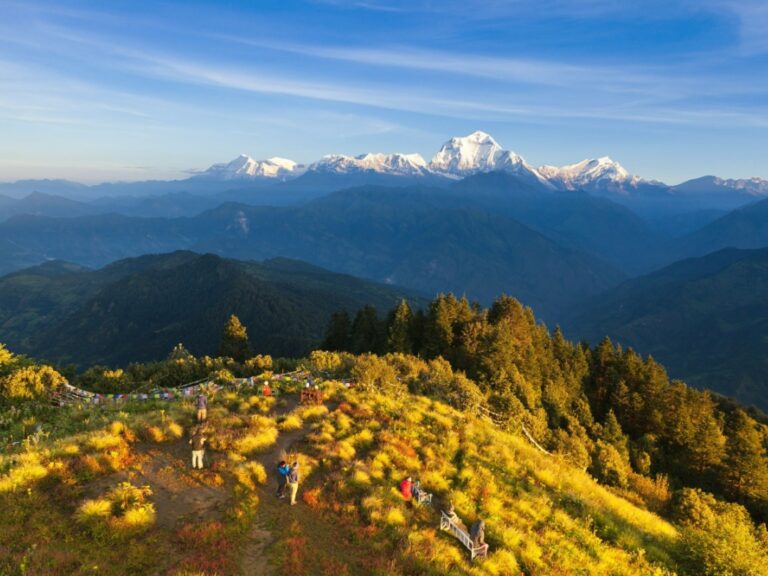
Annapurna Sanctuary trek
- Best trek for: The most popular Annapurna trek
- Difficulty: Easy to moderate
- Trek duration: 10 days
- Max. elevation: 4,130m
- Start/end point: Naya Pul or Dhampus
Rivalling Everest Base Camp for the title of most popular trek in Nepal, the Annapurna Sanctuary Trek is a 10-day extravaganza of non-stop mountain vistas culminating in a great cirque of massive mountain peaks seven to eight kilometres high.
If you’re looking for a short, relatively easy and simple-to-organise trek that doesn’t venture too high (max elevation is 4,130m), and with unusually comfortable accommodation, then the Annapurna Sanctuary ticks all the boxes.
The straight there and back route starts in the lush subtropical hills to the north of Pokhara, taking you through oak, birch, rhododendron and bamboo forests before hitting the Alpine zone on day five around Machapuchare base camp (which is actually a collection of trekking lodges — for religious reasons it’s forbidden to climb Machapuchare).
From here to the Annapurna Sanctuary the views get more stupendous with every corner passed. Once you reach the Annapurna Sanctuary there are a few viewpoints above the lodges which reward with views over glaciers, moraine fields and an amphitheatre of peaks including Machapuchare (6,993m), Annapurna South (7,219m), Annapurna III (7,555m), Gangapurna (7,454m) and, just poking up behind the others, Annapurna I (8,091m), the first 8,000m mountain ever climbed (in 1950 by legendary French climbers Maurice Herzog and Louis Lachenal).
The facilities for trekkers are as good as anywhere in the Nepalese mountains. Most lodges have varied menus, some form of heating, separate rooms, electricity, hot showers and even wi-fi. However, this combination of unsurpassed mountain scenery, great facilities and easy access means that tens of thousands of trekkers can walk this trail each year, causing local culture to be overwhelmed by international trekking culture. Lodges can be booked out in the high season. Try to get to the night stop early, or join an organised trekking tour and avoid the worry of finding a bed. If you’re looking for something quieter, the new Annapurna North Base Camp trek might be for you.
To avoid this being a straight there and back trek, do the Poon Hill trek first and then on day four link on to this walk. That would give a total of about 12 comfortable days of walking. Or alternatively add on the Mardi Himal trek for a similar duration.
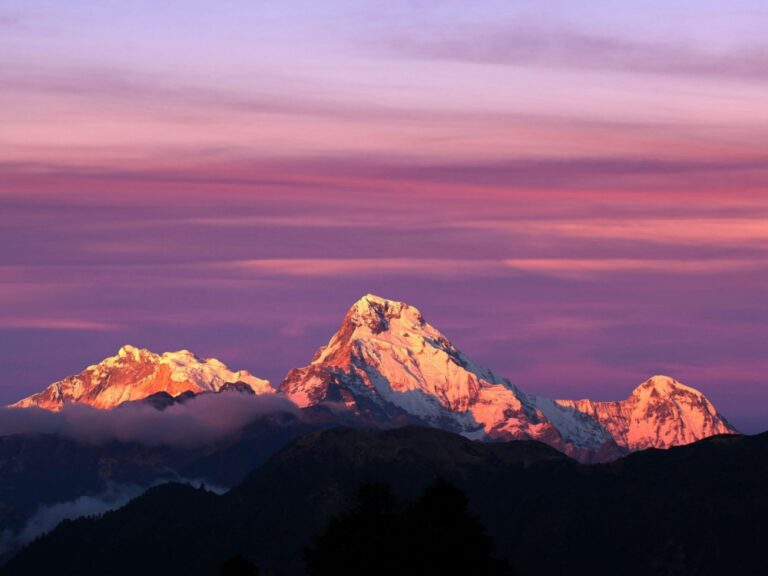
Poon Hill trek
- Best trek for: Easier-going route with classic sunrise views
- Trek duration: Five to six days
- Max. elevation: 3,210m
- Start/end point: Naya Puk/Phedi
Mixing heart-stirring mountain views with enchanting villages and beautiful forests with a thousand blooming rhododendrons, this is a good introduction to trekking in Nepal.
The highlight is Poon Hill itself, an hour’s walk above the village of Ghorepani. Watching the sunrise from here is an almost obligatory Nepalese experience. As the first beams of light shine across a panorama that includes Dhaulagiri I (8,167m), South Annapurna (8,091m) and Nilgri (6,940m), it’s hard not to be moved, despite the often noisy crowds
The trailheads are only about an hour’s drive out of Pokhara and there are excellent trekking lodges along the route plus some luxury hotels. The trek can be done clockwise or anti-clockwise and it makes a good add-on to the more challenging Annapurna Sanctuary trek. It’s also an ideal first time trek for families and those who don’t want to go too high. But do keep in mind that there’s a lot of steep up and downs.
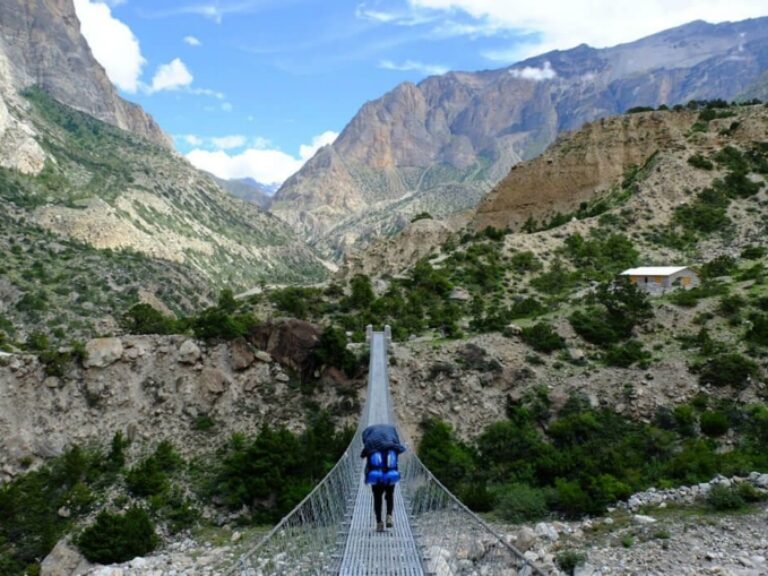
Nar-Phu trek
- Best trek for: Getting well off the beaten path
- Difficulty: Moderate to difficult
- Trek duration: Seven to nine days
- Max. elevation: 5,320m
- Accommodation: Camping and basic trekking lodges
- Start/end point: Koto/Ngawal
Most Annapurna Circuit trekkers heading through the village of Koto won’t know that a trail off to the east leads to a magical, hidden world. The Nar and Phu valleys were closed to tourism until 2002 and when they finally opened up the first trekkers discovered a landscape of narrow gorges, 7km high mountains, timeless stone villages festooned with prayer flags, and a distinct local culture based on yak herding and trade with neighbouring Tibet.
Still rarely trekked (a restricted area permit and camping gear is required), the route follows a dark, deep and shady gorge up to the mediaeval village of Phu, which consists of around 40 or 50 mud and stone houses and red painted monasteries huddled together on the top of a hill. Entry to the village is via a spectacular old gateway.
It’s worth allowing a couple of nights in Phu to explore the upper valley. To leave, you have to retrace your steps halfway back down the valley before veering west up the Nar valley, over yak pastures to the large traditional village of Nar where there are four gompas (Buddhist monasteries) worth visiting. Independent trekkers relying on lodges will probably have to turn back here and retrace their steps to Koto, but camping groups and acclimatised trekkers can make the exciting crossing of the Kang La (5,320m) down to Ngawal back on the Annapurna Circuit.
This trek works well either as an add-on to the Annapurna Circuit or as a short, stand-alone trek in its own right. For adventurous trekkers with all the correct permits on fully-organised camping treks, it’s possible to take a wild, difficult and very rarely walked route from the village of Nar into Upper Mustang via the taxing Teri La Pass (5,595m).
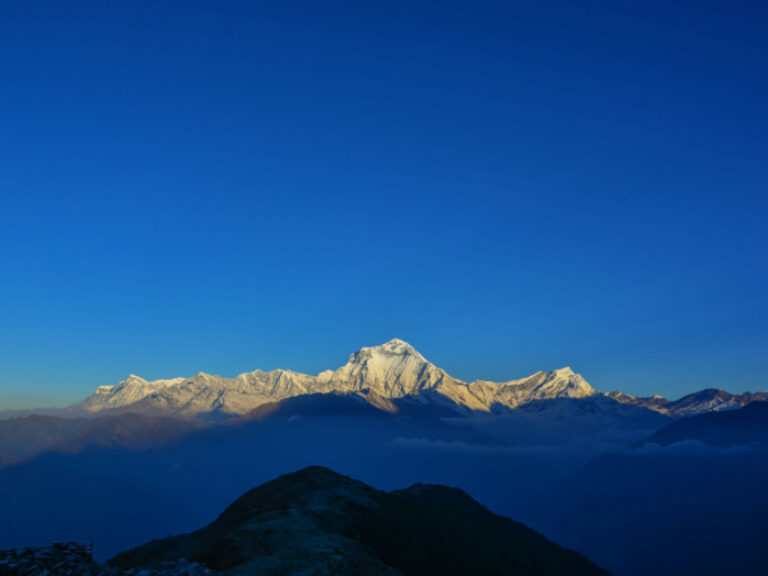
Khopra Ridge trek
- Best trek for: Quieter, less-crowded route
- Max. elevation: 3,660m
- Accommodation: Camping and limited trekking lodges
- Start/end point: Ghorepani/Tadapani
Also known as the Khopra Danda trek, this is well off the standard Annapurna trekking routes and offers a low-key, peaceful trek to lofty viewpoints on the flanks of Annapurna South. There are a number of different route variations but my favourite branches off the Poon Hill trek at Tadopani and climbs to lodges at Bayeli (with its amazing Mulde viewpoint), Chistibang and then Khopra Danda, before descending to Swanta and Ghorepani
The trails pass through charming villages with simple private and community lodges and lots of pretty forests. Khopra Ridge itself is an impressive dome with an exposed trail running along it that feels much higher than it really is (especially when covered in snow). The views across to Dhaulagiri I (8,167m) are unforgettable. From the ridge it’s possible to make a very long and challenging 10-hour day trip to the high altitude Khayer Lake (4,600m). Given the 1,000-metre height gain in a day, plus the beauty of the lake, it’s much more advisable to go on an organised camping trek and sleep on the lake shore.
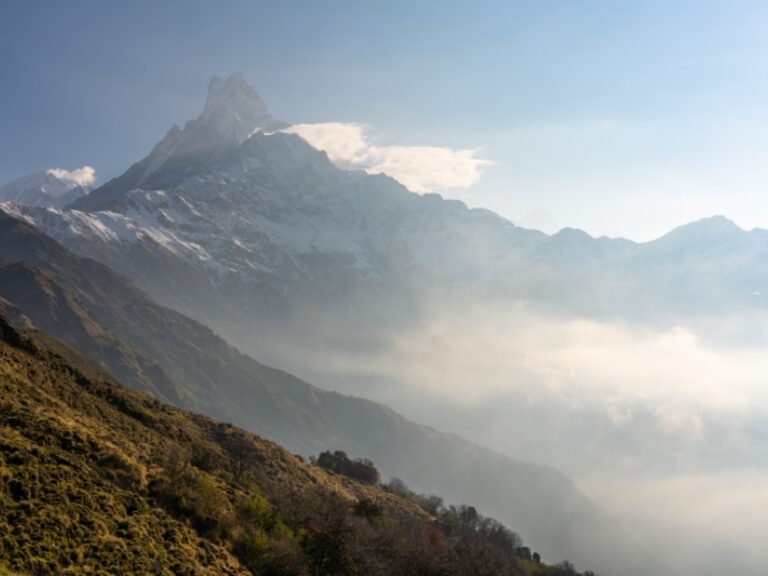
Mardi Himal trek
- Best Trek For: Short trek with great views
- Max elevation: 4,250m-4,500m
- Accommodation: simple lodges
- Start/end point: Khare (Kande)/Sidhing or Landruk
Do you want a taste of the Annapurna region – forests, hillsides of rhododendrons, airy ridge walks and close-up views of big peaks – but can’t afford more than a week? If yes, then I think the Mardi Himal trek might just be for you.
It’s very accessible (less than an hour by bus or taxi from Pokhara), well signed, and the trail will take you past everything from Gurung villages to high Alpine ridges. Not so many foreign trekkers make it here but the lodges are decent (though not as comfortable as other parts of the region). It’s popular with Nepali trekkers, though, so avoid weekends if you can.
The first day or two take you past Australia Camp and the village of Pothana up through the forests of Pitam Deorali to teahouses at Forest Camp, but before long you’ll find yourself above the treeline at Low Camp (2,985m) and then High Camp (3,550m), where the views of fish-tailed Machapuchare, Himchuli and the Annapurnas really open up. Pray for good weather for the amazing final hike from High Camp up to Mardi Himal ‘Base Camp’ West for views of peaks that seem within reach, before returning to Low Camp. From here return to jeep access roads at Sidhing, Galel or Lwang, or hike from Forest Camp to the road at Landruk.
If you are fit (and, crucially, acclimatised) the trek can be done in four days, though five to six is more likely. For an excellent 10-11 day trek link Mardi Himal with the Annapurna Sanctuary route via Landruk.
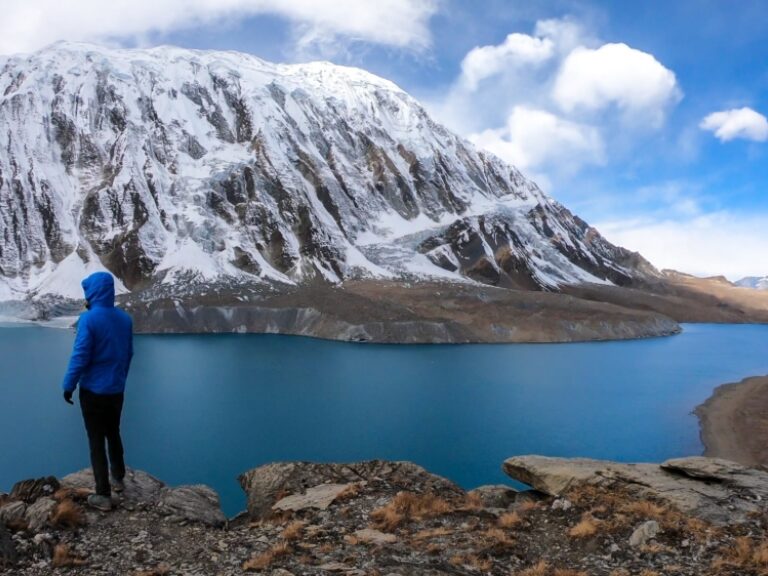
Tilicho Lake trek
- Best trek for: Short but challenging route
- Trek duration: Four to five days
- Max. elevation: 5,005m
- Start/end point: Manang/Manang or Yak Kharka
The short, but challenging hike to Tilicho Lake, one of the highest large lakes in the world, is one of the most impressive Annapurna treks.
It’s a four or five-day round trip detour off the main Annapurna Circuit trail starting from Manang and heading rapidly upwards, firstly through pine forest and then across scree slopes before a final climb to a pass (5,005m) overlooking the lake. Pushed right up against the great wall of the Annapurna range, and with glaciers crashing down into it, the lake is frozen over for months on end and can be a bleak and scary place.
When it is ice-free (normally June to early November), the astonishing turquoise colours of the water clash with the dark rock and white glaciers behind it. For sheer high mountain drama, I find it hard to beat. However, the route up to the lake is not for the faint-hearted.
The path rises very steeply from Manang and altitude-related problems are very common. Also, a large part of the trail is high up on an almost sheer shale slope where rock falls and avalanches are almost daily occurrences. Needless to say it can be very dangerous, especially after rain. People suffering from vertigo will probably not enjoy this trek. Although there are a number of decent trekking lodges along the trail to the lake there’s nowhere reliable to stay on the lake shore. By coming on an organised camping trek you can spend a magical night camping along the lake’s northern edge with only snow leopards for company.
After reaching the lake it’s best to turn back the way you came rather than going all the way back to Manang though you can take a small shortcut that will get you directly to the lodges at Yak Kharka.
Note that many maps and some trekking agencies talk about a route directly from Tilicho Lake to Jomsom via the Mesokanto pass. No matter what any map, sign or trekking agency tells you, this is not a route to be taken lightly. It involves ice-climbing down two huge, vertical glacier walls followed by a hair-raising and utterly exhausting climb up a loose scree slope which makes those you crossed on the way up to Tilicho seem like child’s play. Do not attempt this route without mountaineering experience, ropes, ice-axes and crampons as well as a guide who knows the route — very few do.
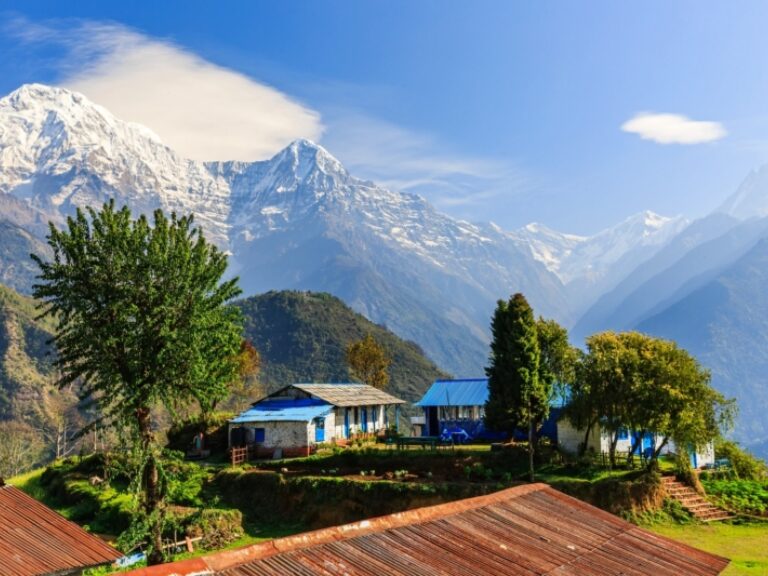
Annapurna luxury lodge trek
- Best trek for: Soft trekking in style
- Difficulty: Easy
- Duration: Six days
- Max elevation: 2,015m
- Accommodation: luxury lodges
- Start/end point: Lumle/Phedi
If you shudder at the idea of overnighting in a wooden room no larger than a prison cell, with the single shared toilet located down a hallway echoing with the thunderous snores of a two-dozen unwashed trekkers (or even worse; a tent!), then you might want to consider a luxury trekking itinerary in the Annapurna foothills. You’ll avoid the discomfort of high altitude and can focus on lovely days spent wandering village trails, safe in the knowledge that a hot shower and happy hour awaits you at the end of the day.
Ker & Downey operates a string of lodges in the foothills north of Pokhara, allowing you to link the Gurung villages of Dhampus, Ghandruk, Majgaun, Landruk and Birethanti in a five or six day loop, with fine views of iconic fish-tailed Machapuchare never far away. This is trekking in style.
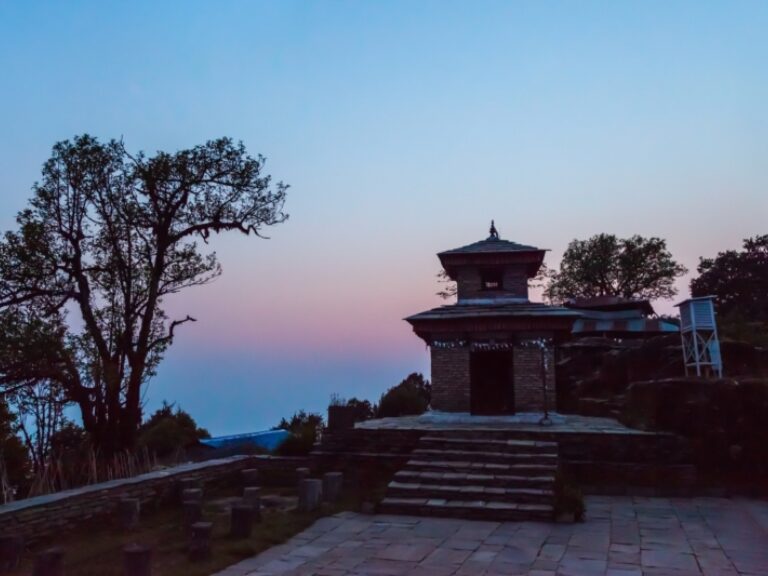
Panchase Trek
- Duration: Three to four days
- Max. elevation: 2,500m
- Accommodation: Teahouse lodges
- Start/end point: Pokhara
This is one of my favourite alternative treks in the Annapurna region. Don't worry if you've not heard of it – most visitors haven’t, which means you’ll enjoy largely crowd-free trails while ascending to magnificent viewpoints at a maximum altitude of just 2,500 metres.
A highlight of this route is the way it begins: you’ll depart directly from the lakeside in Pokhara, boarding one of the city’s colourful boats to reach the opposite shore of Phewa Lake. Your destination on this four-day route is the hill station of Panchase, and you’ll pass through a number of charming Himalayan villages to get there. All told, this is a great Annapurna trek where you won’t have to worry about a long haul on dusty roads. I often recommend it for an acclimatisation trek before embarking on one of the longer and higher altitude main routes.
Road-free Annapurna Circuit itinerary
A new alternative to the classic route, annapurna trekking: need to know, everything you wish you'd known before you booked.
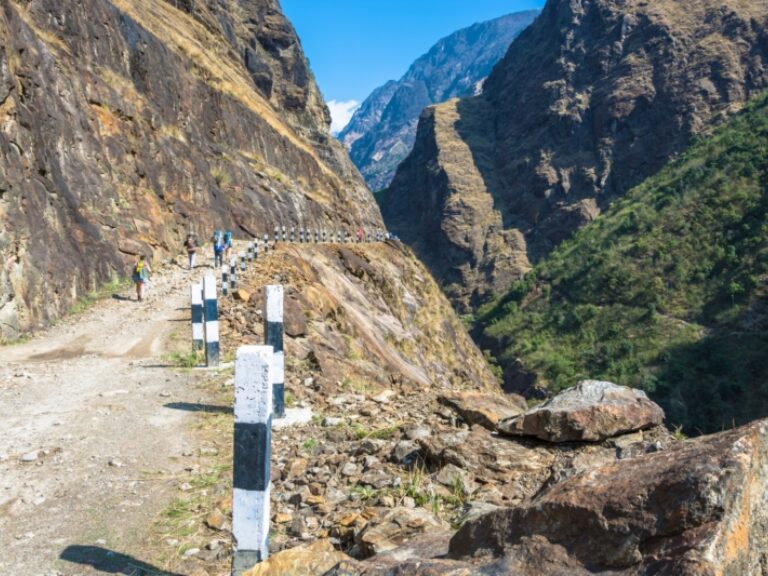
Think twice about the Annapurna Circuit
The Annapurna Circuit consistently tops lists of the world’s best treks – and rightly so. Or rather, it used to be rightly so.
The problem is that these lists are often written by desk-bound editors who’ve never been out there and are rehashing info that's over a decade old. The sad reality today is that road construction has eaten up three quarters of the old Annapurna Circuit trail. The sublime cliff-side paths and mule tracks that I and many others hiked two decades ago are now cloaked in jeep fumes and dust.
My enduring memory of a recent trip to the circuit was seeing a long line of grim-faced trekkers trudging along a dirt road through clouds of jeep dust. It didn’t look like fun, let alone the world’s best trek.
So is the Annapurna Circuit dead? Well, no, not exactly. By choosing smart ending and starting points and following a series of side trails called the New Annapurna Trekking Trails (NATT; with markers painted in blue and white, instead of the red and white of the main trail) you can avoid most of the roads, while soaking up the same astonishing Himalayan views, high-altitude lakes and traditional trading villages that have drawn trekkers here for half a century now.
There’s no denying that the nature of the walk has changed. I still rank the lodges and food along this route as some of the best in Nepal, but many of these are now on the road, and so cater to a different clientele. And while the NATT trails are infinitely better than hiking on the road, they aren’t perfect; you still have to walk some sections on the new road and other dirt roads are eating away even at these detours.
Do your research, stick to side trails and you’ll be a much happier trekker.
Featured Annapurna Treks
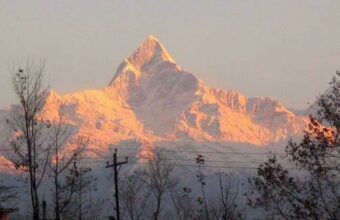
Annapurna Region Treks
Nepal trekking routes.
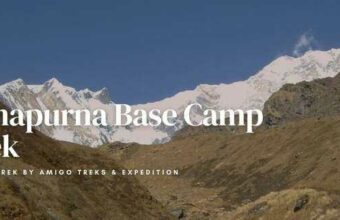
Short Annapurna Base Camp Trek
Mesmerizing views of the annapurna massif,.
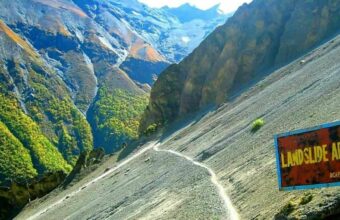
Annapurna Trekking
Nepal footprint holiday.
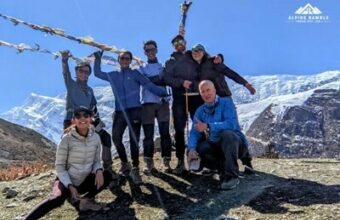
Alpine Ramble Treks
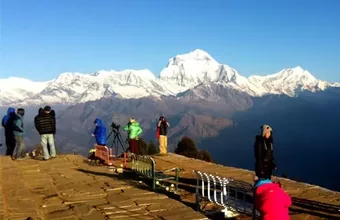
Annapurna Treks
Green society adventures.
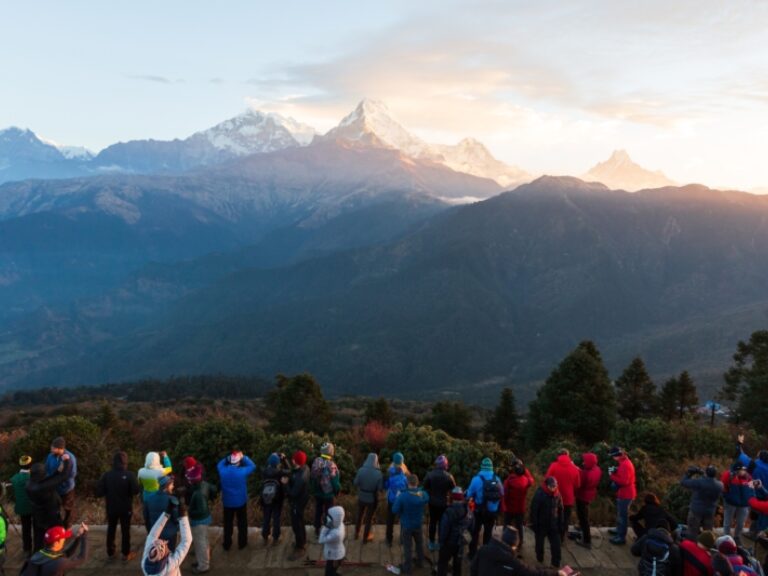
Forget about Poon Hill
I’d argue that Poon Hill is the most overrated viewpoint in the Himalaya.
Pokhara trekking agencies and guides love it because it’s relatively quick, easy and cheap to get to, but it’s just way too busy a spot to provide the ‘sunrise over the Himalaya’ spiritual epiphany you were hoping for. Get better and quieter views of the Annapurna range at Mohare Danda on the Khopra Ridge trek or from Mardi Himal Base Camp, or opt for equally dramatic views of 8,167m Dhaulagiri from the east bank of the Kali Gandaki valley.
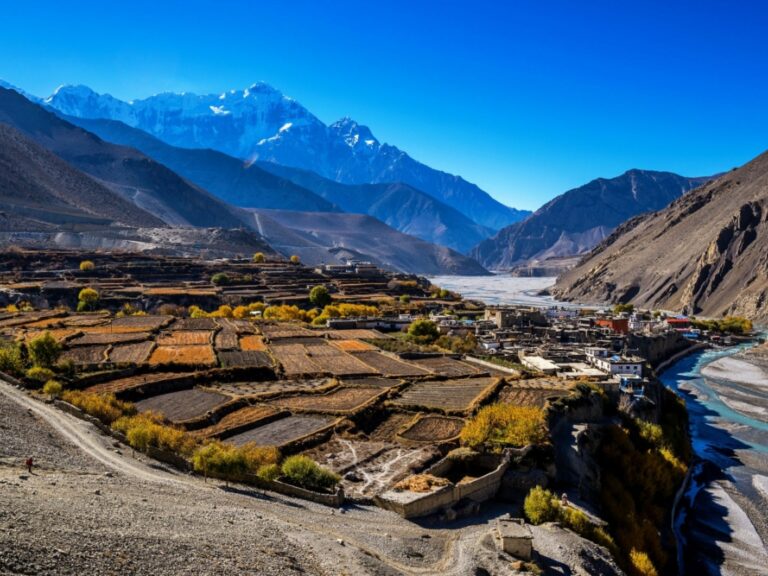
Don't neglect the side trips
The Annapurna Circuit and Sanctuary treks are undeniably busy, so I highly advise building in some spare days to your itinerary. Put the trekking poles down for a day and follow the Hindu pilgrims to the holy town of Muktinath. They’ve come from across the Indian sub-continent to bathe in the freezing spring waters and pray at the eternal flame which lies at the heart of the temple complex. A day’s walk further downhill is Kagbeni, a quiet desert oasis village that you can visit without an expensive permit.
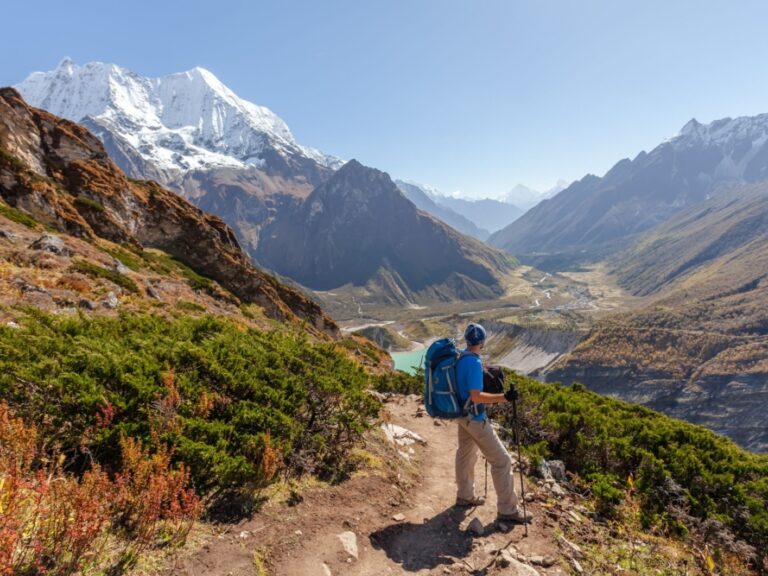
Combine the Manaslu and Annapurna Circuits for a beyond epic trek
It’s hard to imagine a more spectacular trek than combining the best week of the Annapurna Circuit onto the end of the already fabulous Manaslu Circuit . You’ll cross two passes over 5,000m, visit three of Nepal’s most picturesque villages (Sama, Bragha and Kagbeni) and get a taste of traditional Tibetan-influenced culture in the valleys of Nupri, Manang and lower Mustang. This is 18 days of the best teahouse trekking you’ll find anywhere in the world.
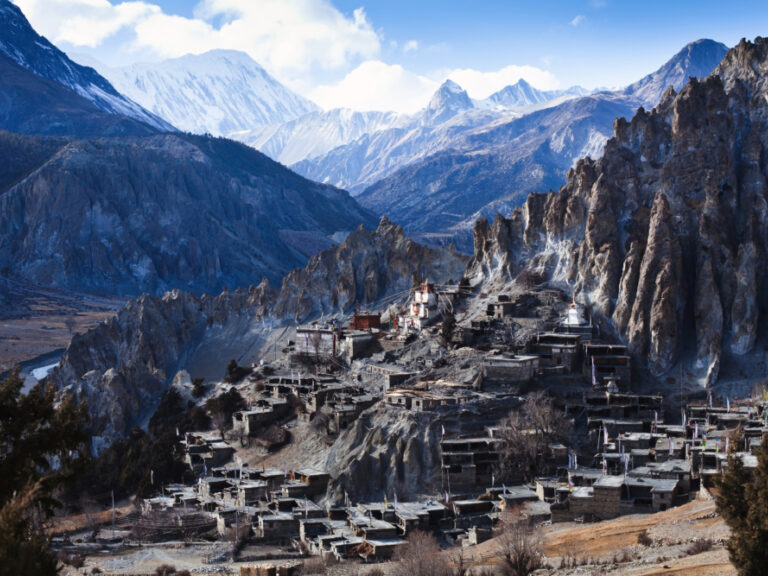
Don’t skip acclimatisation days
Given the pressures of time and budget, I understand it can be tempting to skip those dull acclimatisation days, especially when you arrive at your destination at lunchtime and the itch to push on seems almost irresistible. Skip an acclimatisation day, however, and you’ll almost certainly create problems for yourself later on; you might even have to abandon your entire trek due to altitude sickness. I try to take advantage of acclimatisation days by exploring side trails or hiking higher than the overnight stop, before returning for the night, thus supercharging my acclimatisation by ‘climbing high and sleeping low’.
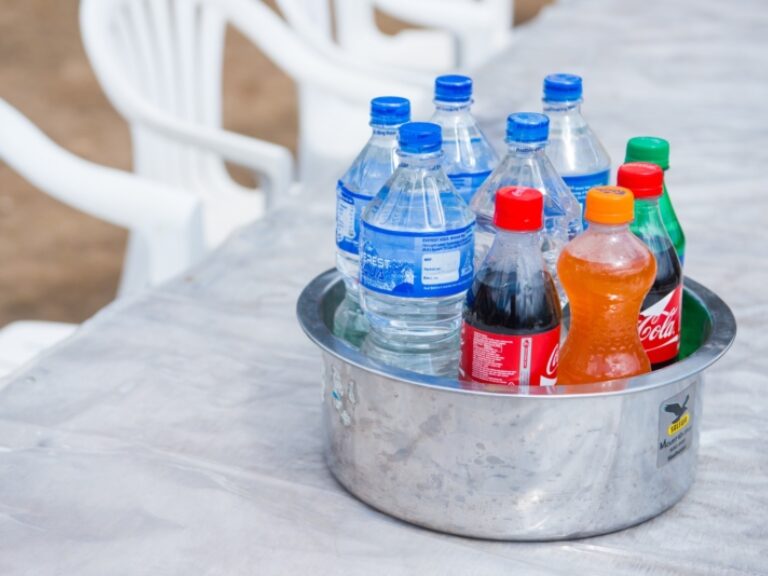
Don’t buy bottled water
Don't contribute to Nepal's huge trash problem by buying bottled water while trekking. Not only are these bottles ridiculously expensive but the non-recyclable plastic ends up strewn across teahouses, villages and trekking trails, giving mountain tourism a bad name. Invest in a water filter like a Lifestraw, UV-light sterilisation like a Steripen, or just pack some good old fashioned chlorine tablets and purify your own water. You’ll save a small mountain of plastic and you’ll have some extra money in your pocket for that extra slice of apple pie.

The stunning Annapurna range from Poon Hill
Annapurna trekking FAQs
Your questions, our expert answers, is there still an option for independent trekking in the annapurna area or do you have to have a licensed guide.
Aside from the Everest region then yes, officially, you do now need an officially recognised guide to hike inside any national park/protected area in Nepal. This would include most of the main Annapurna trails.
However, enforcement of the rule in the Annapurna region has been spotty so far. There are plans (in theory at least) to start enforcing the new rule in 2024.
I would say though that a guide is just a good idea anyway because a good guide (and getting a good one is key) will enhance your trek by giving background information, offering up interesting side routes, translating when required, opening cultural doors and, of course, providing a bit more safety. Not to mention that it gives much needed jobs to local people and in the big picture it costs very little.
What permits are required to trek in the Annapurna region?
All these treks require a TIMS permit (Trekkers’ Information Management System) and an Annapurna Conservation Area Permit. At the time of writing, individual permits cost R 2,000 per trekking route per entry, while group trekkers pay R 1,000 per person. Check the latest prices on the official Nepal tourism board website .
The Nar-Phu trek also needs a restricted area permit (seven days Sept-Nov/Dec-Aug US $90/75, additional days, US $10). You must be in a party of at least two trekkers and be accompanied by a guide.
When is the best time to trek in the Annapurna region?
The best time to trek in the Annapurna region (except for Nar-Phu) is between October and November, and from late February to April. Between late November and early February, it’s very cold at high altitude and the Thorung La Pass will probably be impassable due to snow. The routes to Tilicho Lake will also be snowed in at this time and lodges at higher elevations closed. There’s a real avalanche risk on the Annapurna Sanctuary and Tilicho Lake routes in spring. Avoid trekking most of this area during the monsoon (June-early-Sept)
Nar-Phu is unusual because it lies in the Himalayan rain shadow, and it’s possible to trek here during the monsoon — although you should still expect some rain and obscured mountain views. From November to early March, most valley inhabitants leave for lower and warmer climes and trekking lodges will be closed. The Kang La Pass will also be buried under snow and impossible to cross in mid-winter. This pass can also be complicated in spring with late and/or melting snow and ice. April-May and September-October are great times for Nar-Phu.
What are the Annapurna trekking accommodations like?
The Annapurna Sanctuary and Circuit, the two main Annapurna treks, have numerous trekking lodges of a very high standard., some bordering on luxurious. Hot showers, wi-fi, and international menus are common.
Nar-Phu and Khopra Ridge are earthier with limited and very basic homestay style lodges which fill up quickly. These areas are best trekked on a fully organised camping expedition.
How easy are the trailheads to access?
Access to trailheads for most Annapurna treks is fairly simple and all but Nar-Phu and Tilicho Lake start and end a short bus or taxi ride from Pokhara. An ever-expanding road network is changing routes in this region and many people skip the first couple of days of the Annapurna Circuit by driving up the valley.
An equally large number finish the trek at Jomsom from where there are regular buses and jeeps back to Pokhara as well as early morning flights. However, be warned that landslides can block the road for days on end and flights are frequently cancelled due to unfavourable (ie terrifyingly strong) winds. Allow an extra day or so in your schedule.
Can you recommend quieter alternatives to Everest or Annapurna?
Everest , Annapurna and to some extent Langtang are the favourites for first-timers. These three regions are convenient with easy access, plenty of lodges and good facilities. However, during the 'peak seasons' of mid-March to mid-May & October to November, these regions get very busy indeed.
My personal advice for someone looking for a quieter experience is to look at either the Manaslu or Kanchenjunga regions. The Manaslu Circuit trek has been hailed the "new Annapurna Circuit" and Kanchenjunga North offers some of the best views you'll get without straying into actual mountaineering. Until a decade ago trekking here used to be a full scale, high-cost camping expedition. These days there are some lodges on the routes but still far fewer trekkers, which makes them attractive if you're looking for true wilderness, unspoiled culture and quiet views.
Nothing takes away from the beauty of Everest or Annapurna, but for a different experience, Manaslu or Kanchenjunga get my vote.
Abhi Shrestha
What should i pack for a nepal trek.
My most important advice is – keep things light and minimal. When you’re slogging your way up to a mountain pass you will regret every extra kilo you’re carrying. The following is a list of recommended items, some of which are more essential than others.
Hiking boots
You’ll need boots. Not shoes or trail running shoes. Make sure they’re waterproof, very sturdy and above all, comfortable. Don’t buy a cheap pair. Make sure you break them in before leaving for Nepal. Whatever you do, don’t hire boots in Nepal as they probably won’t be up to scratch and will give you blisters. Nothing will ruin your trek more than blisters.
Winter jacket
A thick, warm, waterproof and breathable but lightweight jacket is another must. It needs to keep you warm as toast in sub-zero temperatures. These can be rented in Nepal but most are inferior knock-offs of respected brands. They’re okay for a one-off trip but if you’re likely to go mountain trekking again, it’s worth buying your own jacket.
Sleeping bag
It gets bitterly cold at night, even at comparatively low altitudes in winter, and the thin, gap-riddled walls of trekking lodge bedrooms provide little protection. Get the warmest yet lightest one you can afford. When a manufacturer says a sleeping bag can be used down to minus-10 degrees the reality is you won’t be comfortable in it below about plus-five. Aim for one that says it will keep you warm down to minus-20 or lower. A really good sleeping bag is expensive. Bags can be rented in Nepal but as with jackets, they’re very rarely of good quality.
Trekking Poles
If you’ve never trekked before then you might consider trekking poles as something that just old people use. Well trust us, if you don’t use them after a few days clambering up and down steep Himalayan slopes you’ll forever walk like an old person… Poles help save energy going up and take the strain off your legs on the way down. They also stop you falling and twisting ankles as much.
Water bottle
Take two of at least a litre each and refill whenever possible. Don’t rely on bottled mineral water. It’s often not available and it’s environmentally unfriendly, particularly up in the mountains where there’s little chance of recycling.
Water purification pills
Get enough to treat at least three litres of water a day. On more popular trekking routes some lodges provide pre-treated water but don’t rely on this always being available.
Two or three thermal tops of different thickness and even a pair of thermal under-trousers are worth their weight in gold.
Two fleeces, one thin and one thick, are vital.
Walking trousers
Don’t try to skip around the Annapurna Circuit in a pair of jeans (yes, we’ve seen people try. And fail). Get some comfortable walking trousers. Two pairs should be sufficient for the longest treks.
T-shirts/shirts
Many people recommend specialist quick-dry shirts designed for trekking. However, we’ve used a combination of these and normal shirts and T-shirts and never noticed much difference. Don’t over pack. You probably won’t change your shirt more than once in a two-week trek!
Specialist hiking socks are supposed to reduce blisters and are worth buying. However, changing your socks frequently seems to reduce blisters as much as any clever equipment. Take at least three pairs for a two-week trek. Also pack a thick, warm pair of ski socks to keep warm when you arrive at camp.
Most people appreciate being able to remove their boots at the end of the day and don some sandals (with or without thick ski socks, depending on how cold it is).
A sun hat is vital for hotter, lower elevations, and a winter hat or balaclava for up high.
Take a thick warm pair of skiing gloves and a thin, cotton pair of under gloves. You won’t be able to use your camera or eat properly with thick gloves but you can with the thin ones, and they’ll keep your hands warm for a few minutes.
Sun glasses
An essential bit of kit at all elevations. The sun reflecting off the snow can quickly frazzle your eyes.
Suncream and sunblock
Slap on lots of sun cream no matter what the weather or elevation. Use total sunblock on lips, nose and ears.
Keep this minimal as you won’t get much chance to wash. A small lightweight travel towel isn’t a bad idea.
A head torch is a must.
The evenings can be long. Bring a good book, not a tablet or Kindle as power sources can be erratic and batteries drain very fast at altitude. Don’t forget a guidebook. We recommend the Rough Guide to Nepal , which covers the country and gives details of the main treks. For specific trekking information try Lonely Planet’s Trekking in the Nepal Himalaya .
Even non-photographers will want photos of this stunning scenery.
Spare batteries
Bring spare torch, camera and phone batteries. Below a certain temperature and above a certain altitude (which vary from product to product), batteries drain very fast or don’t work at all. Above about 3,000m put the batteries in your sleeping bag at night to keep them warm and reduce drainage.
A few biscuits and chocolate bars might give you the energy boost you need to get over that pass.
To carry all this you’ll need a decent, comfortable trekking backpack. Don’t consider any other kind of bag. If you’re using a porter you’ll need a small backpack for your day gear and you’ll have to provide a bag for the porter to carry - a holdall is best.
Travel Insurance
You’d be utterly insane to go trekking in the Himalayas without a decent travel insurance policy. Make sure it covers trekking above a certain altitude and helicopter rescue.
Leave the gadgets at home
Don’t bother taking computers, tablets, etc. They get easily broken on the trail and the batteries probably won’t work at altitude. More importantly, most people don’t want to see fellow trekkers glued to their tablets in a lodge at night.
Now it's no longer possible to do the Annapurna Sanctuary trek solo can you recommend any licensed operators in Kathmandu who can help?
Although I always recommend using a guide, ending solo trekking is such a big change to the Annapurna trekking scene! I can understand why people are disappointed. I can't recommend any individual operator, but there is a list of licensed Annapurna trekking companies here .
We have around 8-10 days trekking in the Annapurna region, but want to avoid crowds. Can you recommend any quieter alternatives to the Annapurna Circuit?
There are lots of alternatives to the Annapurna Circuit in the Annapurna region . With eight to ten days you could combine Nar-Phu and Tilcho Lake. Getting to the Nar-Phu valleys would take about five to six days depending on where you started and how long you stayed in either Nar or Phu village. You could then scoot across to Tilcho Lake (you'd probably need to hop in a car for the short drive toward Manang village where the trail starts) for another four days trekking. This would give a great mix of traditional Tibetan villages in Nar-Phu and spectacular mountain scenery around Tilcho.
Another option is the new Annapurna North. I've not yet had the chance to walk this one myself (it's really only come onto the scene recently) but I have heard good things about it and it's certainly going to be very quiet. I'm not totally sure of the length but I think it fits with your timeframe. I know there are basic teahouses and they have set up an interesting community tourism project to ensure money gets distributed fairly between all villagers.

About the authors
Stuart is an award-winning travel journalist and guidebook author who has been visiting and trekking in Nepal for over thirty years. One of the world's leading authorities on Nepal trekking, he is the author of Lonely Planet’s Trekking in Nepal , the Rough Guide to Nepal , the Tibet chapter of the Rough Guide to China and the Bradt guide to Kashmir & Ladakh . He is also regularly published in The Independent , BBC , Time Out , The Telegraph , among many other UK and international publications.
Bradley is a travel journalist and guidebook author specialising in trekking in Central Asia, Nepal, Bhutan and elsewhere in Asia. He writes for Lonely Planet, Odyssey Guides, Insight Guides, among others.
Why Horizon Guides?

Impartial travel guides
Our guides are written by the leading experts in their destinations. We never take payment for positive coverage so you can count on us for impartial travel advice.

Expert itineraries
Suggested itineraries and routes to help you scratch beneath the surface, avoid the tourist traps, and plan an authentic, responsible and enjoyable journey.

Specialist advice
Get friendly, expert travel advice and custom itineraries from some of the world's best tour operators, with no spam, pressure or commitment to book.
Our guides are 100% impartial and are written by independent, professional travel journalists. We make money by charging carefully-screened travel companies to list their business on our website. Our advertisers have no influence on our editorial content and we never accept payment for positive coverage.
Read more about how we work and what we believe in here .
- Travel guides
- Work with us
Sitemap , Privacy Copyright © 2024 Horizon Guides
Annapurna Base Camp Trek: A Complete Guide
Annapurna Base Camp (ABC) Trek is one of the most popular treks in Nepal. It is quite easy and shorter trek than other high altitude treks in Nepal. This trek incorporates diverse terrain, culture, and wildlife. Along with the most spectacular and close up view of Annapurna range, Machhapuchhre, Hiunchuli, and Dhaulagiri.
In Spring, it showcases many beautiful flowers including the national flower of Nepal – Rhododendron. Orchids, Machhapuchhre massif and the deepest gorge Kali Gandaki accompanies you during the trek.
You will spot at times high cascading waterfalls. And, you will get to learn about people of different ethnicity, especially Gurung people when visiting the Ghandruk museum.
Depending on which route you take, you may not pass through Ghandruk though. The trail is the same from Chomrung onwards but you can choose to include or not include Ghorepani Poon Hill and Ghandruk. Poon hill is a vantage point for the view of Annapurna plus other peaks and for sunrise and sunset.
Other highlights of this trek are the hot springs! Very relaxing and healing for your aching muscles.
Also, ABC passes through MBC (Machhapuchhre Base Camp). What a blissful moment. Visit two base camps in one trip!
Together with Annapurna Circuit, these trails welcome about seventy percent of the total trekkers visiting Nepal.
Table of Content
Trip Highlights
- Spectacular and close view of Annapurna, Machhapuchhre and Dhaulagiri
- Hot springs
- Gurung Museum in Ghandruk
- Exotic flora and fauna
- Kali Gandaki is the deepest Gorge
Planning trip to Nepal and need help?
Tell us about your trip to Nepal and what you expect from it. We will answer your questions in 24 hours and help you design a trip with a comfortable itinerary to best meet your needs.
- Solo Traveler
- Number of Adults *
- Number of Children *
- Age of children at time of trip *
- I have my exact travel dates
- I have approximate dates
- I don't have my dates yet
- Travel Start Date * MM slash DD slash YYYY
- Travel End Date * MM slash DD slash YYYY
- Month of departure * Choose Month December 2020 January 2021 February 2021 March 2021 April 2021 May 2021 June 2021 July 2021 August 2021 September 2021 October 2021 November 2021 December 2021
- Approximate Duration * Less than a week 1 week 2 weeks 3 weeks More than 3 weeks
- Full Name *
- Give your trip a short title * A short descriptive headline that describes what you're looking for.
- Describe your trip *
Earthquake Update for Annapurna Base Camp
The devastating earthquake of 25 April and 12 May was kinder to the Annapurna region. It suffered the least damage. According to Miyamoto International’s report on damage assessment, less than 1 percent of the route and 3 percent of guesthouses dismantled during an earthquake. Most of the damage occurred on the Annapurna Circuit trail rather than ABC trail. So, the region welcomed trekkers during the peak season of autumn (September-November).
Fixing minor damages the route regained its beauty by September the same year. Now, it is back to normal, as safe as it ever was.
When is the best time to do Annapurna Base Camp trekking?
You can go to Annapurna Base Camp trek any time of the year. Yet, the monsoon is not a good time. There is heavy rainfall during the evening or night but the dark clouds are ever present. This means bad to no view of the beautiful peaks. It also means leeches, mosquitoes, possible landslides and slippery roads. But, this is the time when animals are most active. If you are a keen biologist, then monsoon is best for you.
First, here are the seasons. In Nepal, there are six seasons but it translates as:
- Spring (March to May)
- Summer/Monsoon (June to August)
- Autumn (September to November)
- Winter (December to February)
Autumn is the best time to do this trek. Autumn is a dry season that offers clear blue sky and moderate temperature. This is the best time do any trek in Nepal and is, therefore, very crowded.
You could go during December if you would like it to be quieter. ABC is possible in winter as well. Dry air and clear sky with the best visibility but, during winter, it will be very cold and will snow. If you plan to trek in December, you need to prepare well with appropriate packaging.
Starting from January, you need to be careful about the avalanche when traveling from Deurali to Machhapuchhre Base Camp. This stretch is prone to avalanche. Trekkers should be careful no matter what time in a year they are trekking when trekking from Deurali to MBC.
Spring is another best time to do Annapurna Base Camp trek. Watch out for the avalanche though. Listen to the locals for the news about the avalanche ahead. In spring, the trail will bloom with red and white rhododendrons and many other exotic flowers found in this region, a good time to go for botanists.
Annapurna Base Camp trek route/itinerary
There are 2/3 routes that you can take to ABC. From this, you can plan out many itineraries. All routes coincide at Chomrong and follow the same path to the base camp.
The trail can go straight to the Annapurna Base Camp or take a detour to Ghorepani Poon Hill or take a smaller detour to Ghandruk or both. You can make the climbing stop and returning stop at different villages. Of course, taking different routes causes plus or minus 3-4 days.
Here is a sample itinerary. This trail goes through Ghorepani Poon Hill. In general, the trek starts from Pokhara to Nayapul and ends like Phedi to Pokhara.
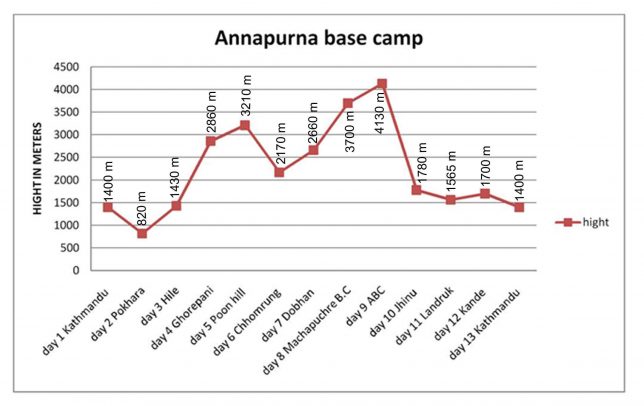
Personally, I think Ghanduk is a prettier village but Pothana is no less beautiful. Also, it is better to go through Ghorepani than to do a straight march up to ABC and back.
Trekking Permits and Costs for Annapurna Base Camp
To trek to Annapurna Base Camp, you need two permits.
- One is Annapurna Conservation Area Project (ACAP) card. This costs:
For SAARC nationals: Nrs.200 (about US $2)
For Others: Nrs.2000 (about US $20)
- Second is Trekkers’ Information Management System (TIMS) card that costs NRS. 2000 (about US $20)
Trekking Gears or Trekking Equipment Required
What to pack for the trek is one of the important questions. Not having proper gears can prove troublesome. It may cause health issues or ruin your mood.
Here is a general idea of what you should bring to Annapurna Base Camp trekking.
- A lightweight trekking boots . It is not impossible to do this trek in sneakers or trainers. Many people try it. Just that you will be walking in snow for some part of the trek and boots offer more safety. But, make sure that your shoes are well fitting, light and comfortable
- A pair of crocs
- Four pairs of liner socks . Two pairs for a warm climate and two pair for cold climate. Trekking/liner socks are better but it is okay if you only have the normal ones.
- Few pairs of underwear. There is trekking underwear that you could buy at home. They are good for other outdoor activities as well. You can find normal underwear in Nepal.
- A high-quality best ultralight packable down jacket and a down pant. You can buy or rent a good down jacket and a down pant in Nepal for cheap for a $1 or less per day.
- T-shirts and trousers keeping in mind both cold and warm temperature you will be traversing.
- A set of thermals. Or, you could layer up.
- A light sleeping bag. You can either buy or rent in Nepal or bring from your country.
- A trekking pole. Though easy, there are many ups and downs in this trek and a trekking pole can assist you. Else, you can find a sturdy stick en route and use it to support yourself.
- Two pairs of Gloves. One for warm weather and one for the cold.
- A woolen hat
- A torchlight or a head torchlight
- A First aid kit including Diamox and Oral Rehydration Salts (ORS)
- Toiletries– Toilet paper, hand sanitizer, water purifiers, sunscreen, moisturizer, toothpaste, and toothbrush.
- A waterproof map of Annapurna Base Camp
- Snacks you like and entertainment such as books, cards, an iPad etc.
Are you unsure of what equipment to buy in Nepal and what to bring from home?
For detail info, check this: buy trekking equipment at home or in Nepal .
Some Frequently Asked Questions
Here are some of the frequently asked questions answered to provide a clearer picture of Annapurna Base Camp Trekking.
1) How fit do I need to be to do this trek?
Annapurna Base Camp is a Grade B or a moderately difficult trekking route. So, any fit person can do this trek, even if you do not have any previous experience. You should be aware of what to expect and mentally prepare for it. Then, as long as you dare to, you can.
2) How long do we walk every day when doing Annapurna Base Camp trekking?
On average, you walk about 4 to 6 hours per day. Sometimes your working hour is only 3/4 hours. While during pleasant and easy trails you walk for 6/7 hours.
3) What is the highest altitude reached in this trek?
The highest altitude reached is 4190m. This is the elevation of Annapurna Base Camp. ABC is the highest we will climb in this trek.
4) What about battery charging and hot shower facilities?
You can charge batteries en route. For this, you need to bring your charger. There are hot shower facilities as well. You may have to pay a certain amount for both ($1-$2). Negotiate. Also, hot water facility could be free at a lower elevation.
5) Are there ATMs on the way to Annapurna Base Camp?
No. There are no ATMs on this trek route. You have to draw enough cash from Pokhara or Kathmandu. There are many ATMs in these cities. Everything you do is in Nepali rupees. So, you need to carry enough Nepali currency before you set off for the trek.
6) What about internet access?
Yes. You will have enough Internet access in most places. Sometimes, there might be some technical problems. Internet in Nepal is not as fast as you in your home country and at losing connection is very common at times.
7) Is it necessary to hire Guides/trekking agency for Annapurna Base Camp trekking?
Not really!.
It depends on you. If you want, you can go solo on this trek. You can hire a guide and a porter by yourself instead of going through an agency or not hire a guide at all. Although, not having a guide can be a little problematic during offseason.
It depends on you. Is it your first time in Nepal? How confident are you of being able to find your way around? How pressed on time are you? If you go through an agency, it will be costlier but they will plan everything for you. You come, trek and return. Simple!
8) How much do guides and porters cost?
For the Annapurna region, pay for guides range from $20 to $30 per day and porters take $15 to $25 per day.
9) How much should I tip guides and porters?
People have become used to receiving tips. However, there is no set amount as tipping is a westerner created culture. They will be happy to receive what you see fit to give. If you feel confused, trekkers have taken 15% of the total pay as the standard.
I.e. Say $20 per day times 10 days= $200 dollar. Therefore, 15% means $30 tip. This is quite enough. $30 = Nrs.3000 (roughly). So, you could tip anything from Nrs.2500 to Nrs.4000 depending on your satisfaction.
This is for guides and porters only. You do not need to tip taxi drivers or restaurant staffs. If you are adamant about tipping waiters, 10% of the bill is the standard pay. These are already included as a service charge though.
If there are other questions you like to inquire upon, please comment below. We would love to answer your queries.
Food, Accommodation and their Cost during Annapurna Base Camp trekking
Lodges cost around $2 per day. You can rent a private room with twin beds or a dorm room with 4-6 beds. They are small but cozy and tidy.
There are fancier hotels that cost much more but around $2 is the price for normal teahouses. Lodging in these fancy hotels refers to luxury trekking. They are costlier. ‘Comfort against weather’ wise, luxury trekking is not necessary at all for ABC trek.
Locals expect you to eat where you stay. Teahouses make money on food rather than lodging. You would agree that $2 is much lesser. There are different food options you can choose from. You can have eggs prepared in different ways, chapatti, cereals with milk, and sandwiches. Or, potatoes prepared in different ways, packet noodles, chowmein, momo, macaroni, pudding, Dal Bhat Tarkari and more. Dal Bhat is the cheapest and most filling option. For drinks, you can have tea, coffee, flavored hot drinks etc. They sell alcohols as well.
On average, $25 per day will cover three meals, no matter what you choose to eat, and many cups of hot beverage. This budget will not accommodate alcohols. If you drink, it is better to drink on your return trip. Alcohol and caffeine will make you vulnerable to AMS. Know below about AMS:
What is AMS?
Anyone traveling over 2400m should know about AMS. AMS can be fatal.
Also known as altitude sickness, Acute Mountain Sickness (AMS) is the effect of high elevation on our body. Our body responds to the lower air pressure and lower concentration of oxygen at the heights.
You feel a headache, nausea, vomiting, lack of appetite, shortness of breath etc. Do not ignore the symptoms. It won’t get better in an instance. Rather, it will only get worse and turn into fatal conditions HAPE or HACE. if you do not take proper concern. You need to take proper rest and ascend downhill.
The best thing to do in case of AMS is to stop ascending. Turn back and descend or stay in the same elevation for the day. Most people acclimatize in a day, some people can take 2-3 days. Diamox helps in acclimatizing. If it does not get better, descend.
Annapurna Base Camp trek takes you over 4000m. So, it is very important to adopt preventive measures like staying hydrated, eating well, ascending slow etc.
Click here to know more about AMS prevention measures.
Some Tips for Annapurna Base Camp trekking
Here are some suggestions that may be of help while trekking.
- If you order Nepali meal set or Dal Bhat Tarkari, you can take seconds and thirds for free, except for meat. Eat as much as you like.
- Carry enough cash with you during the There are no ATMs in ABC trail.
- Set aside about $150 to pay for transportation and entry fees for monasteries and museums.
- Add some contingency days as you might need one more day for acclimatizing. Or, you may like to explore one more place.
- Do not believe all the locals. Bad people can be anywhere. Let’s say, if you ask how far is place A, they may say you have reached place A to get you to stay in their tea house. Not all people are like that. Most are friendly and helpful.
- You can rent the expensive gears instead of buying them if they will not be of use in the future.
- Public display of affection is not welcomed and wearing revealing dresses will earn you unwanted criticism.
- It is rude to click people without their knowledge. Ask them first, if it is okay to take their pictures.
- Foods might take a little longer to cook. Order earlier.
- Take proper precautions against AMS/altitude sickness.
Hope this helps in deciding on and planning out your trek to Annapurna Base Camp.
Happy journey.
Create an account
Start your adventure today.
Already a member? Login

A Guide to the Best Treks in Nepal: Bucket List Worthy Treks to Consider
Quick navigation, general info on trekking in nepal.
- Annapurna Base Camp Trek
- Annapurna Circuit Trek
- Everest Base Camp Trek
- Gokyo Lakes Trek
- Poon Hill Trek
- Langtang Trek
- Manaslu Trek
- Upper Dolpo Trek
- Upper Mustang Trek
- Kanchenjunga Trek
Nepal Trekking Season
Is it safe to trek in nepal, trekking permits in nepal, other things to know about trekking in nepal.
- Other Trekking Options in Nepal
Trekking in Nepal Articles
Join our newsletter.
Get a weekly dose of discounts and inspiration for adventure lovers
If you could trek anywhere in the world, where would you go? Most passionate hikers list Nepal at the top of their bucket list, where the world’s tallest peaks create an exceptional backdrop.
When you set foot on the trails, you’ll encounter glaciers, alpine meadows and tundras, phenomenal views of more snow-capped mountains and experience Nepal’s vibrant culture at the same time. Encounter remote Hindu temples, Sherpas, and viewpoints adorned with colourful prayer flags. Then, revel in wonder as the sun paints the mountain imagery golden right before sunset and sunrise.
Trekking in Nepal may be challenging at times, but the magic of a lovely culture fused with incredible scenery creates the ultimate exploration. Take a look at the best treks in Nepal to find which route suits your adventure style!

Nepal, located in Asia between India and Tibet, is renowned for its enormous peaks (Mount Everest—ever heard of it?) and its blending of Buddhism and Hinduism, an amalgamation of its neighbours. The crowded cities comprise packed streets lined with shops, clouded by lots of commotion and pollution. But Nepal has a natural respite from the chaos of the metropolis: escape into the Himalayas where you’ll feel like an inconsequential speck among a seemingly endless range of striking peaks.
The treks in Nepal bring you to new heights geographically. If you can, we highly recommend arriving at least a week before starting your trek to acclimatize to the altitude. There is severe elevation gain on quite a few of these treks. Monitor yourself for symptoms of altitude sickness and take rest when you need it.
In fact, it’s a wise idea to factor rest days into your itinerary. The minimum days listed for each trek do not include travel days to and from each trailhead, so be sure to incorporate those as you plan your journey. The routes range from easy to challenging, so no matter your fitness level, there’s a trek in Nepal for you.

Annapurna Base Camp Trek Overview
Picture yourself in Nepal, standing at the base of one of the world’s most massive mountain ranges with unspoiled snowy peaks and jagged edges as far as you can see. The Annapurna Base Camp Trek is a sure-fire way to test your comfort levels, mountaineering fitness, and sense of adventure - and it will be worth it. The Annapurna Base Camp Trek is one of the more popular and best treks in Nepal, and for a good reason.
Starting in the small town of Nayapul, leave civilization behind and head into the majesty of the Annapurna mountain range for a minimum of 7 days. This out-and-back trail leads you through terraced rice paddies and high alpine meadows amid peaks reaching 8,000 m . Your turnaround point is the base of the awe-inspiring Annapurna I at 8,091 m . Expect to round every corner and be astonished by the might and majesty of the Annapurna mountain range over and over again.
This trail is one of the best for its accessibility and well-equipped teahouses and lodges en route.
Annapurna Base Camp Highlights
- Stand in awe among the 4 highest peaks in the region
- Annapurna I ( 8,091 m )
- Annapurna South ( 7,219 m )
- Machhapuchhre ( 6,993 m )
- Hiunchuli ( 6,441 m )
- Rest your muscles in Jhinu Danda hot springs mid-journey (you can even stop here twice—once on the way up, and once on the way back!)
- Visit during spring to see enormous rhododendron fields in bloom
Annapurna Base Camp Trek Details
- 7 days minimum
- Trail length: 115.0 km
- Elevation gain: 4,100 m
- Difficulty: Easy to moderate
- TIMS card required
- Permits required
Annapurna Base Camp Trek Tours
Spend an unforgettable 15 nights trekking in the Himalayas on the Annapurna Base Camp Trek . If you want a trekking adventure but find the planning overwhelming, this guided tour is a fantastic way to immerse yourself in the Himalayan mountain life without worrying about accommodation and food during the trek.
Engage with the local Gurung people, spot diverse mountain wildlife, and watch as the sun illuminates the Annapurna range each morning. This tour includes a short flight over the Himalayas to reach the trailhead, so you’ll enjoy a birds-eye of the wild landscapes you’ll soon wander through.

Trekking in Nepal Mountain views on Annapurna Base Camp
Annapurna Circuit Trek Overview
A trek of hyperboles: the widest pass, the deepest gorge, the highest lake. Trek through the foothills of the Annapurna mountain range in north-central Nepal. Variety is an understatement when it comes to the terrain on this circuit. Over 12 days (minimum), you’ll encounter forests, canyons, gorges, and villages untouched by modern development. Climb into alpine meadows one day and desert-like landscapes that feel other-worldly the next. Pause and admire the pristine turquoise hue of Tilicho Lake - breathtaking in all senses of the word.
Get a sense of Tibetan tradition as you trek to the Muktinath temple, one of the highest temples in the world, at the foot of Thorong La Pass, the world’s widest mountain pass. As you head deeper into the mountains, you come upon remote ethnic villages of Gurungs and Magars, the local indigenous people. Stop and sip on a cup of masala tea amid the grand peaks of the Annapurna range.
Annapurna Circuit Trek Highlights
- Stand on the shore of the turquoise Tilicho Lake, the highest lake in the world at 4,919 m
- Admire the abyss of Kali Gandaki Gorge, the deepest in the world at a depth of approximately 6,000 m
- See Rupse waterfall, cascading down for 300 m
- Visit numerous gompas , Buddhist learning centres + temples
Annapurna Circuit Trek Details
- 15 days minimum
- Length varies between 160.0 km – 230.0 km , depending on starting point
- Elevation gain: 4,656 m
- Difficulty: Moderate to challenging
Annapurna Circuit Trek Tours
This trek in Nepal is one of the more challenging routes, but it can be a little easier on a guided tour, so you don’t have to fuss about logistics. Set out on the Annapurna Circuit Trek for 18 nights in this majestic land. Your local guides will be with you from the start in Kathmandu and lead you through the awe-inspiring scenery of the Himalayas replete with alpine meadows, enormous gorges, and of course, the snow-capped jagged peaks. On the Annapurna Circuit Trek, you’ll challenge yourself crossing over Thorong La Pass, the world’s widest mountain pass. Indulging in a guided tour means you have more time to admire your surroundings and revel in one of Nepal’s best trekking adventures.

Trekking in Nepal views on Annapurna circuit
Everest Base Camp Trek Overview
You may have heard of this one - it’s arguably one of the most famous treks in Nepal, possibly the world. Trekkers hail from all parts to have their moment in front of this beast, reaching 8848m. The mountain terrain is relatively similar as you make your way to base camp - but that doesn’t make it any less impressive! There’s nothing like being surrounded by gigantic peaks to make you feel small in this vast, wild scenery. Nature is a powerful force, and this trek proves it.
Although this route has an incredible reputation and deserves to be one of the best treks in Nepal, it has become slightly less appealing due to its popularity. If you want a Himalayan experience without large crowds of trekkers, this may not be the one for you.
Everest Base Camp Trek Highlights
- Stand at the base of the highest peak in the world
- Learn about Sherpa culture, the expert Nepalese climbers who spend their lives in this area
- Visit mountain monasteries and a school established by Sir Edmund Hillary in Khumjung village
- Trek alongside astounding glacial views of the Khumbu Glacier
- Explore Namche Bazar, a colourful market town built on a terraced slope at 3,440 m
Everest Base Camp Trek Details
- 12 days minimum
- Approximately 128.7 km
- Elevation gain: 2,902 m
Everest Base Camp Trek Tours
Do you want to get to Mount Everest but don’t know where to start? Consider a guided Everest Base Camp Trek . With a local guide and most details planned for you, you can sit back and relax (well, not relax - it’s a challenging trek!). For 16 nights, you’ll be immersed in Himalayan magic, a mountain range known as the “roof of the world.” Catch one of the most epic sunrises rises over Everest from Kala Patthar peak. Stand at the foot of the world’s highest mountain—the most satisfying check off your bucket list.

Trekking in Nepal views on Everest Base Camp Trek
Gokyo Lakes Trek Overview
Just west of the Everest Base Camp Trek you’ll find an excellent alternative: the Gokyo Lakes Trek. In about 10 days, you explore the region close to Everest, hiking through isolated Sherpa communities and witnessing some of the most astonishing panoramic views of the Himalayan peaks. This trek passes by five breathtaking lakes, creating plenty of photographic opportunities. As you gaze out at the Gokyo Lakes, feel the zen atmosphere and listen to the faint sound of yak bells permeating.
You can venture on this trek without a guide if you feel comfortable navigating on your own. If you want, stay longer in your favourite teahouse, or take an alternate route around the lakes. Feel genuinely at peace in the Himalayan wilderness. The Gokyo region is an ideal place to get lost and find yourself.
Gokyo Lakes Trek Highlights
- Explore five vivid emerald lakes deep in the mountains
- Pass by fewer tourists on this remote out-and-back trail
- Witness some of the best panoramic views in the Himalayas from Gokyo Peak at 5,357 m
- Watch the sunset over Mount Everest from Gokyo Peak
- Catch a glimpse of the biggest glacier in the Himalayas, Ngozumpa glacier

Trekking in Nepal views on Gokyo Lakes Trek
- 10 days minimum
- Trail length: 92.0 km
- Elevation gain: 2,497 m
- Difficulty: Moderate
Gokyo Lake Trek Tours
If Everest is on your list, but you have more time to spare, the Everest Base Camp and Gokyo Lake Trek is a magnificent extension that includes both treks. Spend 20 days in the Himalayan wilderness with a local guide exploring the region’s almost-unbelievable wonders. The scenery is so photogenic, with six emerald lakes, continuous shark-tooth peaks, and prayer flags flying in the wind with bluebird sky backdrops. Talk about an epic Nepal trekking adventure—just remember to put your camera down and enjoy it with your own eyes!
Poon Hill Trek Overview
The Poon Hill Trek is one of the shortest treks in the area with low elevation gain. Are you a sunrise fanatic? Then this is the best trek in Nepal for you. From Poon Hill, you get a unique viewpoint for catching an epic sunrise coming over the world’s third-highest peak, Annapurna I. If you don’t have much time but crave to be immersed in the magical Himalayan peaks, this is a great option—especially if you want an enviable photograph of your experience!
The trek commonly begins with an ascent to the village of Ghorepani, which involves hiking up over 3,000 stone steps. Before dawn breaks, head to the summit of Poon Hill at 3,210 m to witness a sunrise unlike any other in the world. On a clear day, you can see several seven- and eight-thousand-meter peaks from the viewpoint.
For a minimum of 3 days, you trek through misty forests, over suspension bridges, and into remote mountain villages. With uninterrupted panoramic views of the peaks around you, this short trek is well worth it.
Poon Hill Trek Highlights
- Witness one of the most magical sunrises over the peak of Annapurna I
- Exceptional panoramic views of the Himalayas
- Relatively easy trek - great to acclimatize to the region
Poon Hill Trek Details
- 3 days minimum
- Length of the trek varies, but the most common route is 40.0 km
- Elevation gain: 2,197 m
- Difficulty: Easy
Poon Hill Trek Tours
Are you short on time or a less-experienced hiker? Ease into the terrain and altitude on the guided Ghorepani and Poon Hill Trek . Remain at a lower altitude than some other treks for a 10-day journey to the village of Ghorepani and Poon Hill—a jaw-dropping vantage point to admire the sunrise over the Annapurna range. Stay in comfortable teahouses en route, enjoy a welcome dinner with your crew, and follow your English-speaking guide as you trek through one of the world’s most astounding places.

Trekking in Nepal views on Poon Hill Trek
Langtang Trek Overview
Many of the best treks in Nepal require a day or two to reach the trailhead, but that’s not the case with the Langtang Trek - it’s one of the closest trekking routes to Kathmandu. Located in north-central Nepal, close to the Tibetan border, you’ll observe a more significant influence of Tibetan culture as you trek through the Langtang Valley.
You will need at least a week to complete the Langtang Trek. The route passes through bamboo forests, alpine meadows, with no shortage of rivers and waterfalls to admire. Tibetan Buddhist monasteries dot the landscapes as well, and the plethora of prayer flags flying in the wind give a spiritual ambiance to your journey.
The Langtang Trek region was affected by an enormous earthquake in 2015 and has since been rebuilt. Now, trekkers will find newer guesthouses with updated amenities, which are always welcome after a tough day in the mountains.
Langtang Trek Highlights
- Walk among the astonishing “Valley of the Glaciers”
- Immerse yourself in Tibetan culture en route
- Witness impressive alpine flower blooms during summer
Langtang Trek Details
- Trail length: 120.0 km
- Elevation gain: 2,393 m
- No special permits required
Langtang Trek Tours
For those short on time but crave an immersive Himalayan trekking experience, check out the guided Langtang Trek . Starting and ending in Kathmandu, you’ll be guided for 10 days among the Langtang valley, just north of Nepal’s capital. En route, there’s no shortage of phenomenal mountain views and opportunities to learn about Sherpa culture. This trek is a great option to maximize your time in Nepal.

Trekking in Nepal views on Langtang Trek Nepal
Manaslu Trek Overview
If you go to Nepal looking to escape the stress of city life, you can’t get much further than the Manaslu Trek. It’s a super remote trail that loops back to the starting point, which means you’ll enjoy new views each day. Being so isolated from populated areas means that ecosystems on this trek are thriving. As you hike among lush forests to open alpine areas, keep your eyes peeled for diverse wildlife like the grey wolf, Asian black bear, lynx, and over 100 species of birds.
Trekkers require about two weeks for this route, similar to the Annapurna Circuit. But unlike the Annapurna Circuit, this is a more remote venture to its depths. If you have the time for a two-week tour, the Manaslu Trek is an excellent alternative to the more easily accessible Annapurna trails. Because this trail includes different sleeping destinations each night, it’s more popular with trekkers who are after variety. To avoid any accommodation mishaps, book your teahouse room ahead of time.
Manaslu Trek Highlights
- Traverse one of the longest passes in the Himalayas, Larkya La Pass at 5,106 m with views of these majestic peaks: Himlung Himal, Cheo Himal, Kang Guru, and Annapurna II
- Enjoy ever-changing terrain and views on this loop trail
- Camp at the base of Manaslu, the eighth-highest mountain in the world, looking up at its two ominous shark-tooth peaks
- View diverse wildlife that you’re more likely to encounter in this remote area
Manaslu Trek Details
- 14 days minimum
- Trail length: 180.0 km
- Elevation gain: 4,437 m
Manaslu Trek Tours
Cultural and geographical diversity is synonymous with the guided Manaslu Circuit Trek . Over 19 days, you’ll encounter a vast range of terrain as you gain severe elevation on this secluded route. Pass through villages of all three influential cultures in the area: Hindu, Buddhist, and Tibetan. The Manaslu route is quite challenging, but you can rest assured that accommodation and food are taken care of to focus on the hike itself. If you’re looking for a remote trekking adventure in Nepal, this is it!

Trekking in Nepal views on Manaslu Trek
Upper Dolpo Trek Overview
If you’re looking for a strenuous trek in a remote section of Nepal, the Upper Dolpo Trek will appeal to you. Trekking this loop will take at least three weeks. You must incorporate at least two days on either side of the journey to access the trailhead. Because this trek is so remote, it lacks the infrastructure to welcome hoards of tourists, so be prepared for a more rustic experience. This trek requires that you travel in a group of at least two, and you must have a guide. Once you’ve got all those details sorted out, you’re in for an experience like no other!
Upper Dolpo is one of the best hikes in the Himalayas - take your time exploring the wild west of Nepal. On this trek, you walk through time-captured villages, and you’ll observe the lives of those who live there. Don’t be surprised to see yak farmers herding their animals across the tremendous Himalayan plains. You’ll traverse high and wild mountain passes replete with ancient villages and Tibetan temples. Due to its proximity to Tibet, the Buddhist influence is palpable in the Dolpo region.

Trekking in Nepal views on Upper Dolpo Trek
Upper Dolpo Trek Highlights
- Escape the popular treks and hoards of tourists on this super remote trail
- View blossoming and fragrant orchids, edelweiss, and forget-me-nots in the summer
- Reap the views of the surrounding giants: Dhaulagiri, Sita Chuchura, Nilgiri, Thapa Peak, Tukche Peak, Tilicho Peak
- Stand before Shey Phoksundo, an enchanting turquoise alpine freshwater lake with stupas dotting its shores
Upper Dolpo Trek Details
- 21 days minimum, but factor in 2 days for travel on either side
- Trail length approximately 246.0 km
- Elevation gain: 2,965 m
- Difficulty: Challenging
- Must have at least two trekkers in a group
- Must have a guide
Upper Mustang Trek Overview
For a unique trekking experience in Nepal, the Upper Mustang Trek certainly delivers. Geographically nestled between western Tibet and the Himalayas, the environment and ambiance are unlike any other treks in our list. Mustang is an area that was recognized as a Buddhist kingdom up until the last century. Choosing this trek will take you over ancient kingdom routes and through desert landscapes thanks to its rain shadow locale.
Access to this trail remains highly restricted, so you will need to be accompanied by a guide to complete the journey. Along the trail, which is out-and-back with a small loop mid-trip, the scenery consists of treeless red cliffs and arid terrain. Even during the monsoon season in Nepal, this trek is suitable for hiking. For a mystical trekking adventure, spend about two weeks deep in the Himalayan wilderness on the Upper Mustang Trek.
Upper Mustang Trek Highlights
- Explore barren plains and arid desert landscapes, distinct from other Himalayan regions
- Trek in Nepal’s ancient and forbidden Buddhist Kingdom of Mustang
- Admire unobstructed views of the giant peaks Nilgiri, Annapurna, and Dhaulagiri

Trekking in Nepal views on Upper Mustang Trek
Upper Mustang Trek Details
- Trail length approximately 160.0 km
- Elevation gain: 1,027 m
Kanchenjunga Trek Overview
Are you a fit trekker who wants a challenge in one of the most remote parts of Nepal? Head to the most eastern region of Nepal to the protected area of Kanchenjunga, home to the third-highest mountain in the world, Mount Kanchenjunga. This longer route earns its spot as one of the best treks in Nepal—you spend a few days hiking around and exploring the base of this epic mountain. Kanchenjunga is in a restricted zone, and this trek requires special permits, a local guide, and that your group is at least two people.
Camp on both the north and south sides of this majestic peak in glaciated base camp zones—remember to stretch your neck because you’ll be craning upwards in awe so often! On the way, the trail passes through subtropical valleys to dense alpine forests and meadows. You’ll see views of zigzagging rivers and streams, and as you gain altitude, the landscape opens up to incredible views of the Himalayas as you draw nearer to Kanchenjunga.
Kanchenjunga Trek Highlights
- Camp at the base of the third-highest mountain in the world, Mount Kanchenjunga ( 8,586 m )
- Trek among blooming rhododendron meadows
- Stop at local villages to understand local culture and customs
- Spend at least three weeks trekking in the remote eastern region of Nepal
Kanchenjunga Trek Details
- 21 days minimum
- Trail length: 220.0 km
- Elevation gain: 3,040 m

Trekking in Nepal views on Kanchenjunga Trek
When is the best time to trek in Nepal?
The best time to trek in Nepal depends on which region you choose to visit. That said, as a general guide, the best season is autumn, September to November, when the climate is pleasant, and you’re not likely to encounter snow at higher altitudes. After the summer monsoons, the skies are much clearer, and the vegetation is super lush. If you can aim to trek in Nepal in the fall, that’s what we recommend. Warm, clear days, and cool nights—the ideal trekking conditions!
If you can’t take your trek journey during the fall, you’ll get ideal trekking conditions in April and May. During these months, the weather is warm during the day, but you could encounter some rainy afternoons, and potentially late snowfall that would make some of the higher passes impossible to cross.
Due to Nepal’s weather systems, winter and summer conditions are problematic for trekking. From December to March, there’s a high risk of avalanches, the temperatures are well below freezing, and trails could be icy and dangerous for less-experienced hikers. Some of the best treks are accessible in winter, but most are too cold and too remote to make it worthwhile. June to August is the monsoon season when trails will be super muddy and prone to landslides. However, if you must go to Nepal during the summer, not all hope is lost. Two of the best treks are located in a rain shadow lending to dry conditions year-round: the Upper Mustang and Upper Dolpo treks.
Safety in Nepal
Like anywhere you travel, you should exercise a degree of caution when travelling in Nepal, especially in cities before starting your trek. Use common sense as you move about the country, and never reveal to anyone where you keep your valuables.
Once you’re in the mountains, you’ll mingle with villagers daily. They are welcoming to trekkers, as long as you are respectful. Some might be extra excited to show you their hospitality. Be mindful of any strangers who may want to join your group at the last minute. Trek with people you know, or new friends you’ve become acquainted with before heading into the wilderness for several days.
Altitude sickness
At such high altitudes in Nepal, trekking poses a risk for getting altitude sickness or acute mountain sickness when your body is not receiving the proper amount of oxygen it needs. When you trek in Nepal, you must acclimatize adequately to maintain good health for your trek. We recommend incorporating at least a few days on either side of your trek to acclimate yourself. Also, if you have the time, include a couple of rest and acclimatization days into the trek itself.
Here are a few tips to prevent altitude sickness:
- Stay hydrated
- Eat well and limit sugar intake
- Limit alcohol intake
- Move slowly when climbing uphill
If you feel any of the symptoms below, take precautions to make sure they don’t worsen. Symptoms should subside as you move to lower elevation.
- Lightheadedness or dizziness
- Nausea or vomiting
- Difficulty sleeping
- Loss of appetite
- Rapid pulse (heart rate)
- Shortness of breath with exertion
Earthquakes and avalanches
Nepal sits on the fault line of two massive tectonic plates, the Indo-Australian and Asian plates, which means it is prone to earthquakes. Interestingly, the Himalayas are a result of these two tectonic plates colliding. The last devastating earthquake was in April 2015 (at the time of writing), which caused several avalanches, landslides, deaths, and damage. While you can’t necessarily avoid earthquakes, you can plan your trip to avoid the winter and summer months when avalanches and landslides are a risk.
Travel insurance
For an adventure like trekking in Nepal, travel insurance is a must. Make sure you check coverage details before purchasing any insurance because some providers will not cover certain sports, including hiking. We use World Nomads insurance coverage because they support adventure lifestyles and understand what coverage is essential for trips like trekking in Nepal.
What permits are needed to trek in Nepal
No matter where you trek in Nepal, you will need to register with the Nepal Tourism Board to obtain a Trekker’s Information Management Systems (TIMS) card. In addition to the TIMS card, some treks require special permits to enter because they are in protected areas or national parks. Keep your permits on you at all times in case you need to show an immigration official. For more information on entry permits to areas not listed below, see Welcome Nepal’s list .
Additional permits for trekking in Nepal:
- Annapurna Conservation Area Project (ACAP)
- Sagarmatha National Park Entry Permit
- Restricted Area Permit (RAP)
- Manaslu Conservation Area Project (MCAP)
- Khumbu Pasang Lhamu Rural Municipality Entry Permit
List of the best treks in Nepal and which permits are required:
- TIMS, Sagarmatha National Park Entry Permit
- TIMS, Khumbu Pasang Lhamu Rural Municipality Entry Permit
- TIMS, ACAP, RAP
How to get a trekking permit in Nepal
The most convenient way to obtain your permits is at the Nepal Tourism Board office in Kathmandu or Pokhara. You can apply for the TIMS card and additional permits at this office. (If you’re heading to the Gokyo Lakes Trek, you can pay for the Khumbu Pasang Lhamu Rural Municipality Entry Permit in Lukla.) In Kathmandu, the office is open from 10 am to 5 pm daily, and usually closed from 1 pm to 2 pm for lunch - it’s not a bad idea to call ahead and confirm their hours before you go (+977 1 4256909).
Be prepared for your turn at the window with the following information and documents:
- Entry and exit dates for trek
- Entry and exit points for trek
- Itinerary/route for trek
- Emergency contact in Nepal (you can use a tour agency as a contact)
- Emergency contact in your home country
- Your insurance policy number, phone number, and coverage specifics
- Photocopy of your passport
- 2 passport-sized photos
How much is a trekking permit in Nepal
Here’s a breakdown of costs for tourist permits in Nepal. We’ve listed the cost in USD, but you must pay in cash with Nepalese Rupees. See Welcome Nepal’s page for restricted areas not listed here.

Visa requirements for visiting Nepal
All travelers are required to obtain a tourist visa to visit Nepal, except Indian nationals. You can choose to get your visa from your nearest Nepalese embassy before departure or opt for a visa-on-arrival at the airport. The process is relatively straightforward—just be warned that you may be in a long line during peak tourist periods.
Tourist visa options for Nepal:
- 15 days – $30 USD
- 30 days – $50 USD
- 90 days – $125 USD
Immigration officials will accept payment in the following currencies: Australian Dollar, Canadian Dollar, Euro, Hong Kong Dollar, Japanese Yen, Pound Sterling, Swiss Franc, Singapore Dollar, and US Dollar.
If you are applying on arrival, make sure you have the following:
- Valid passport with at least 6 months validity
- At least one blank page in your passport
- Complete application form (at airport or online)
- A passport-sized photo
There are options to extend your visa up to 150 days per calendar year. See Welcome Nepal’s page for details.
Transportation in Nepal
Getting around Nepal is all part of the adventure. If you’re short on time, you can fly to the starting town near your trek and get a birds-eye view of your journey. The flights are quick but long enough to gaze at the awe-inspiring landscapes from your seat. If your budget allows it, avoid winding through high mountain passes in an old bus, and take a plane to your destination.
For land travel, you can hop on a budget-friendly bus for a bonus adventure, or hire a private driver. It can be worth hiring a car if you’re travelling in a group. Keep in mind that roadside challenges are common due to the steep and uneven terrain, old vehicles, and road closures. Give yourself some leeway to avoid this! Much like acclimating yourself to hike in Nepal, we recommend factoring in a couple of days for mishaps on the road. Travelling by land will be much more budget-savvy than taking to the air, but your choice of transportation depends on timeframe and sense of adventure!
Food in Nepal
The cuisine you’ll find in the Himalayas is excellent fuel for trekking—it’s packed with carbohydrates and protein to keep you full and energized. On your trek, prepare to get very familiar with dal bhat, a lentil stew with rice and curried potatoes. It’s vegetarian-friendly, but you’ll find curried meat options as well. The locals often eat this for lunch and dinner every day.
Aside from the dal bhat staple, teahouses offer extensive menus catering to the increase of tourists flocking to the area. Choose from hearty boiled potatoes in chili sauce, various curries and rice, momo—Nepali dumplings filled with cheese, veggies, or potato and served with chutney. There will usually be some form of a Sherpa stew made with meat, potatoes, and veggies in a rich sauce. Western options like pizza and pasta are also available, but they come with a more expensive price tag and quality cannot be guaranteed. Stick with the local flavours!
The breakfast menu will often include Tibetan bread, a lightly-fried sweet dough served with jam. Rice pudding or porridge with fresh coconut and cinnamon are great options for filling meals before heading out for each day’s intense trek. And, of course, you’ll find masala tea to warm you up on chilly mornings and evenings in the teahouse. Sip on the spicy, milky tea as you gaze out at the majestic views around you.
Nepalese customs in temples
Part of the mysticism that comes from trekking in Nepal is the influence of Hindu and Buddhist cultures. You are hiking through a foreign area, and with that comes a level of expected responsibility for respecting local customs. On your trek, you’re bound to visit a number of temples—they are sporadically built among the majestic Himalayan landscape because the mountains themselves have a deity-like power. Keep the following tips in mind when you enter temples en-route:
- Take your shoes off before entering temples
- Ask permission before entering Hindu temples
- Do not take photographs inside Hindu temples (most of the time it is forbidden)
Cost to trek in Nepal
Nepal is a budget-friendly destination where you’ll be able to fulfill your Himalayan hiking dreams without breaking the bank. Of course, your trekking budget will vary depending on your preferences. You can cut costs way down if you go to Nepal packed with all your own gear, take local buses to each destination, and eat the cheapest food. The most significant expenses are trekking permits—factor these costs in when you plan your journey.
We like to travel on a budget, so here’s a quick breakdown of costs for a two-week trip with 10 days of trekking for an individual:
- Food: $15–25/day
- Transportation to trek: $20 (about $5–10 for bus ticket each way, depending on where you start)
- Guide: $30/day
- TIMS card: $8.35
- ACAP permit: $25
- 15-day visa: $30
Two weeks in Nepal: $733.35
If you have more cash to spend on your journey, you could pay for the convenience of domestic flights to reach your trek, avoiding a long, possibly overnight bus ride. Domestic flights cost around $160. Your costs will increase if you spend the majority of your nights in teahouses, which cost $3–10, rather than camping, or if you need to purchase gear in Nepal. With some careful planning and preparation, you can check off your bucket-list Nepal trekking adventure without dipping into your savings too much.
Other trekking options in Nepal
This article highlights some of the best treks in Nepal. But if you just read the entire thing with the sudden realization of not wanting to explore the rugged scenery backing Nepal, maybe the following, more lavish adventures will suit your style more? Of course, you’ll still need to put in some work, but each night ends in a cozy lodge. Take a look:
- Annapurna and Everest Luxury Lodge Trek - 20 days, stay in luxury trekking lodges, explore Nepal’s rich history
- Annapurna Luxury Lodge Trek - skip out on Everest and spend more time in Annapurna and enjoy the same benefits listed in the tour above
- Everest Luxury Lodge Trek - Trek by day and spend evenings in cozy lodges by night while revelling in Nepal’s beauty throughout this tour
- Everest Panorama Trek - If you want to see Everest’s highlights without putting in a lot of work, this might be the best trek in Nepal for you
Nepal boasts incredible trekking adventures! Which one stands out to you the most?
Check out more related articles:
- 10 Best Long Distance Hikes in the United States
- Climb Mount Kilimanjaro – Trek to the Highest Peak in Africa
- Tour du Mont Blanc Guide
- Hiking in Greece: Explore the Mediterranean Paradise
- An Extensive Guide to Camino de Santiago
- The 10 Best Long Distance Walks in the UK
Thinking about a trek in Nepal? Check out these guides to learn more and have an incredible trip to the Himalayas.
Nepal Trekking Guides
- Guide to the Best Treks in Nepal
- When is the best time to trek in Nepal
- How to prepare for trekking in Nepal
Nepal Trekking Route Guides
- Annapurna Basecamp Trek
- Annapurna Circuit
- Mustang Trek
Top Destinations
Tour activities, top regions, get travel inspiration and discounts.
Join our weekly travel newsletter

Great Himalaya Trail: One Trail to Rule Them All
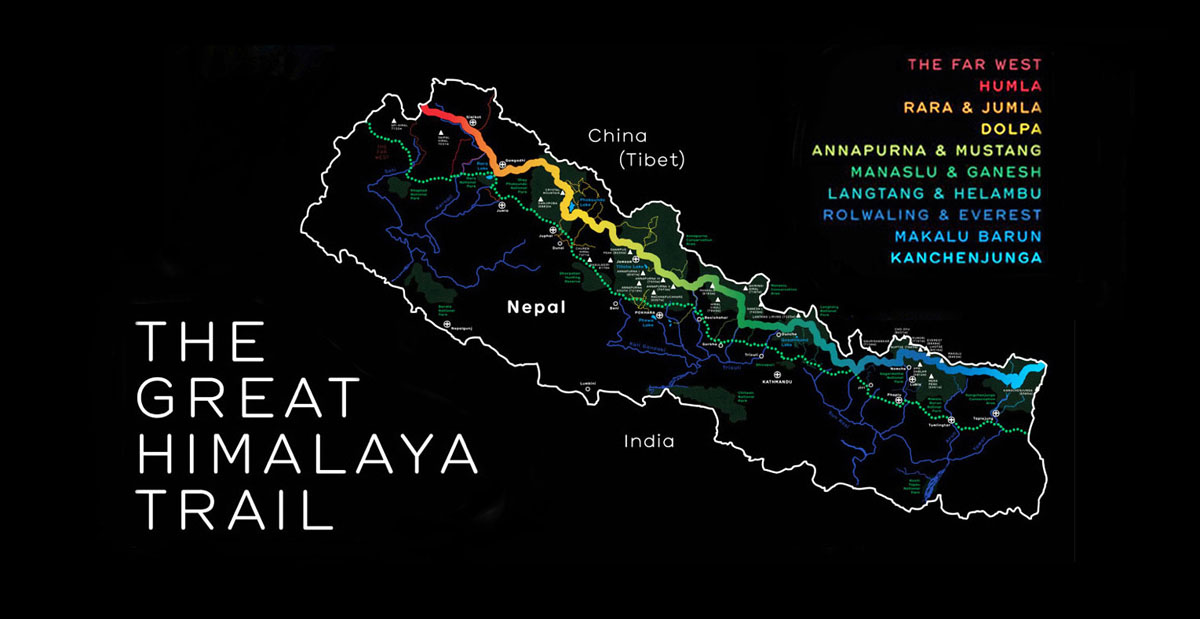
Great Himalaya Trails
For those looking for the cutting edge of adventure travel, Nepal’s Great Himalaya Trail presents the opportunity of a lifetime. It’s one of the longest and highest footpaths on earth, and likely the most dramatic, traversing the entirety of Nepal from east to west in the shadows of the world’s highest peaks. No technical climbing is required—there are numerous high passes above 5,000 meters—but the 150-day plus journey is said to be far more difficult than climbing up any single mountain.
The Great Himalaya Trail is comprised of 10 varying sections from Kachenjunga on Nepal’s eastern border to Humla on its western border with Tibet. It passes from subtropical jungles to high altitude alpine ecosystems, through villages of Buddhists, Hindus, Sherpas, Tibetan refugees, Lhomis, and Shamans, among many others. One constant is the lack of development—these are not trekking paths but instead the existing network of primitive trade and pilgrimage trails that have been in use by local people for centuries. In fact, not one new trail was blazed.
To understand the context of the Great Himalaya Trail, the adventure pilgrimage to Nepal officially began in 1950 when the country opened its borders to the outside world for the first time. Early climbing pioneers, mostly from western countries, eagerly flocked to Kathmandu for the opportunity to face off against the world’s biggest mountains. That year Annapurna I was the first 8,000-meter peak to be summited, and in May of 1953 Edmund Hillary and Tenzig Norgay successfully climbed Mt. Everest (nobody knows who, if either, got there first, and the men forever remained silent on the topic).
Things in Nepal were different back then—Hillary’s massive group spent a treacherous month hiking from Kathmandu through the jungles and heat just to reach the Solu-Khumbu Region and Everest Base Camp. The Sherpa people only became “Sherpas” because they lived closest to the sacred mountain and were convinced to help on the expeditions. Even the famed Annapurna Circuit was, at one point, not a circuit at all but a basic path of commerce for local villagers.
By the 1960’s the idea was hatched that Nepal should be a haven for trekking too. What began as a trickle of trekkers gained momentum and the country soon garnered the reputation as the birthplace of adventure tourism. For many years, decades in fact, the Annapurna Circuit and Everest Base Camp treks dominated the spotlight. With the existence of these two lifetime treks into the heart of the Himalayas, and a relatively low number of people actually willing to travel to Nepal for weeks of mountain walking, there wasn’t pressure for anything else.
The slow deterioration of the Annapurna Circuit by encroaching roads may have been the straw that broke the camel’s back in forcing trekkers to rethink their options, or perhaps people finally realized that Nepal’s mountains have so much more to offer. In fact, Nepal always has had thousands of kilometers of trails through remote villages that carry a similar aura as its most famous treks.
In 2009 the Great Himalaya Trail (GHT) was born. It is still a very rough patchwork of local footpaths, but after five years of research, documentation, and mapping, the GHT was walked for the first time in 2008 and 2009 by a team led by Robin Boustead in 162 days. The first commercial trip ran from February through August of 2011 and was completed successfully in 157 days. Only a small handful of guiding companies market the GHT, and only two have completed the trail in its entirety.
Regardless of whether or not you walk the full length of the Great Himalaya Trail, it represents the biggest shift in how we think about trekking in Nepal since the concept was introduced here in the 1960’s. The two trails that have received almost all of the attention to date represent only a fraction of the Great Himalaya Trail, which in turn represents only a fraction of the trekking opportunities in Nepal. More, it is proposed to extend the Great Himalaya Trail more than 4,500 kilometers stretching through Pakistan, India, Nepal, Bhutan and Tibet in China. When and if the full trail comes to fruition, the Nepal section, now open and operational, will still stand out mightily as one of the world’s last great adventures.
More Information on the Great Himilaya Trail can be found at www.thegreathimalayatrail.org .
Hiking the Great Himalaya Trail
Starting and ending points: Kachenjunga on Nepal’s eastern border with India and Humla on its western border with Tibet Total distance: 1,700 kilometers (1,056 miles) Number of Sections: 10 Shortest Section: Langtang (18 days) Longest Section: Makalu to Everest (34 days) Time Required: Approximately 150 days for the entire GHT, but most hikers opt for shorter sections When to go: The best months for trekking are September to November and March to May Difficulty : Challenging Accommodations: Basic mountain lodges (teahouses) and camping
Guiding Information
World Expeditions has been the pioneers of the Great Himalaya Trail and is the only company that offers the full GHT. Shorter sections range from 18-34 days with the full traverse taking 152 days. Swiss Nepal Family Trekking offers nine sections of the Great Himalaya Trail ranging from 26 to 36 days. BackTrack , an Australian company, has begun marketing the GHT and currently offers the Dolpo (20 days) and Kachenjunga (27 days) sections.
Learn More About Nepal
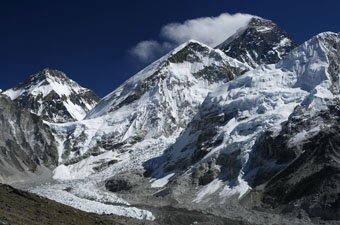
Everest Base Camp Trek
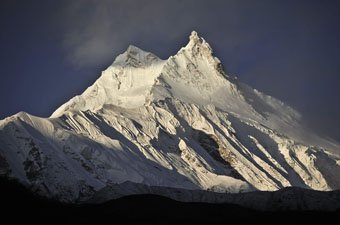
Manaslu Circuit Trek
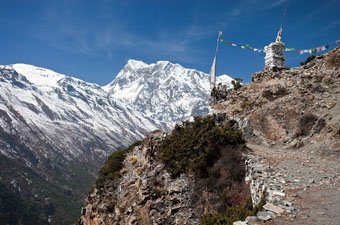
Annapurna Circuit Trek
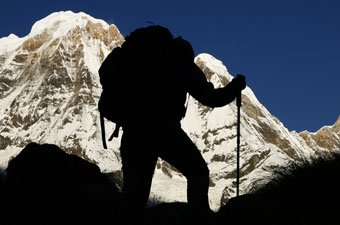
How to Prevent Altitude Sickness for Trekkers
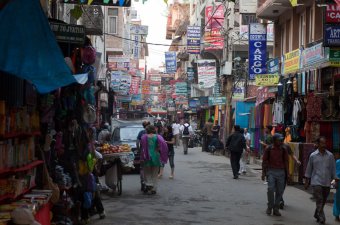
Buying and Renting Trekking Gear in Kathmandu
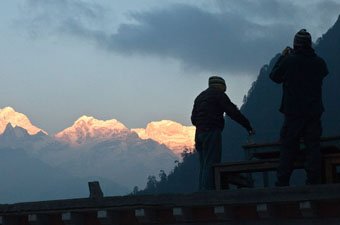
Trekking Seasons in Nepal

Mobile Menu
Megamenu - desktop hamburger menu.
- Hiking Gear
- Backpacking Gear
- Biking Gear
- Camping Gear
- Footwear Reviews
- Climbing Gear
- Skiing Gear
- Winter Gear Reviews
- In-Depth Gear Reviews
- Hiking Shoes
- Hiking Boots
- Trail Running Shoes
- Mountain Bike Shoes
- Approach Shoes
- Climbing Shoes
- Beginner Climbing Shoes
- Mountaineering Boots
- Winter Boots
- Rain Jackets
- Down Jackets
- Synthetic Jackets
- Fleece Jackets
- Hardshell Jackets
- Softshell Jackets
- Windbreaker Jackets
- Ski Jackets
- Winter Jackets
- Hiking Pants
- Hiking Socks
- Trekking Poles
- Baby Carriers
- Running Vests
- Backpacking Tents
- Backpacking Packs
- Backpacking Sleeping Bags
- Backpacking Sleeping Pads
- Backpacking Stoves
- Backpacking Food
- Water Filters
- Altimeter Watches
- Handheld GPS
- Mountain Bike Helmets
- Mountain Bikes
- Mountain Bikes Under $1,000
- Mountain Bikes Under $2,000
- Gravel Bikes
- Bike Brands
- Kids' Bikes
- Hitch Bike Racks
- Camping Tents
- Rooftop Tents
- Camping Sleeping Bags
- Camping Mattresses
- Camping Chairs
- Camping Stoves
- Duffel Bags
- Rock Climbing Shoes
- Climbing Helmets
- Climbing Harnesses
- Climbing Quickdraws
- Belay Devices
- Climbing Ropes
- Climbing Backpacks
- Winter Gloves
- 4-Season Tents
- Ski Helmets
- Ski Goggles
- Ski Backpacks
- All-Mountain Skis
- Ski Bindings
- Backcountry Skis
- Backcountry Ski Boots
- Skis for Beginners
- Hardpack Skis
- Mirrorless Cameras
- Full-Frame Cameras
- DSLR Cameras
- Point-and-Shoot Cameras
- Travel Cameras
- DSLR Lenses
- Mirrorless Lenses
- Lofoten Islands
- Lofoten Hiking
- Hardangervidda
- Jotunheimen
- 10 Great Norway Hikes
- Public Huts
- Torres del Paine
- Chalten and Glaciares
- Lake District
- Patagonia National Park
- Milford Sound
- Abel Tasman
- Marlborough
- Great Walks
- Adventure Towns
Add adventure to your inbox
- Privacy Policy
- Terms of Use
© 2024 Switchback Travel. All Rights Reserved. No part of this site may be reproduced without our written permission.
The 12 Best Treks in Nepal

Last Updated: July 12, 2021
When it comes to views and mountains, nothing beats Nepal. Eight of the fourteen eight-thousanders (mountains above 8000m) in the world are located in Nepal: Mount Everest, Mount Kanchenjunga, Mount Lhotse, Mount Makalu, Mount Cho Oyu, Mount Dhaulagiri, Mount Manaslu and Mount Annapurna I. Nepal is the ultimate destination for trekking. There is no substitute!
Trekking is one of my favorite travel activities. Whether it’s for 3 days or 3 weeks, trekking is the best way to disconnect from the world and to find time for yourself.
Many hidden gems in Nepal are only accessible by foot. The good news is Nepal has something for everyone; there is a wide variety of places to suit every type of traveler, no matter what your interests, budgets, comfort levels and trekking styles. Of course, there are the already well-loved Nepal treks, such as Annapurna, Everest, Langtang and Poon Hill. But if you’re looking for something a little different, then go off-the-beaten-path and explore the Manaslu Circuit, Mardi Himal, Kanchenjunga, the Far West Humla, Upper Dolpo or the Kingdom of Mustang.
It was very difficult for me to narrow this list down to just twelve. But here we are! Below are my 12 favorite trekking trips in Nepal. They range in length, variety, terrain, and difficulty but they all have one thing in common: spectacular views!
1. Manaslu Circuit, the Authentic Himalayan Trek

The Manaslu Circuit Trek is my favorite trek in Nepal. It is SO beautiful; the terrain is remarkably diverse and the views are simply breathtaking.
Only open to foreign travelers since 1991, the Manaslu Circuit remains relatively untouched compared to the other well-known treks. It is an excellent alternative to the busier Annapurna treks.
But the reason why I love this trek so much is for its authenticity. With its customs and traditions still intact, the Manaslu Circuit is more than just a trek, it is a true immersion in a new culture. Many trekkers say it is basically Annapurna circuit 30 years back.
From subtropical forests to mountainous terrain, Manaslu has it all. The trek begins through the terraced rice fields. Then, the trail becomes little more challenging with a rocky terrain. During this trek, you will hike through many forests (Manaslu region possesses 19 different types of forests!) and you will be rewarded by jaw-dropping views along the way, including the spectacular views on Mt. Manaslu (8,163m), the eighth highest mountain in the world. Birendra Tal (a beautiful frozen lake) and Manaslu Base Camp are among the most mesmerizing places you’ll visit. But the highlight of your trip will undoubtedly be the crossing of Larkya La Pass (5,125m) offering astounding views on Himlung Himalayan, Kang Kuru, Annapurna II and Cheo Himal.
March to May. October and November.
Duration:
This trek typically takes anywhere from 14 to 17 days to complete.
Highest Point:
Larkya La Pass (5,125m).
Difficulty level:
The Manaslu Circuit Trek is considered challenging. Good for experienced trekkers who have a good level of fitness.
For those who want to immerse themselves in the local culture and experience an authentic way of life away from the tourist crowds.
If you have ‘ time ’, you can add ‘Tsum Valley’ to your itinerary (you will need 22 days in total). Tsum Valley was only opened to foreign trekkers since 2008 and the region is one of Nepal’s most pristine lands.
Regulations and permits:
The Manaslu region is a restricted area. You’ll need the following permits to access it:
- Manaslu Conservation Area Permit (MCAP): NPR3,000
- Annapurna Conservation Area Permit (ACAP): NPR3,000
- Manaslu Restricted Area Permit: $75 USD per week ($10 USD per day beyond one week) from December to August / $100 USD per week ($15 USD per day beyond one week) from September to November.
In order to get the Manaslu permits, Nepal immigration requires a minimum of two trekkers (foreigners) plus a certified trekking guide.
2. Annapurna Circuit, the Classic Himalayan Trek

The Annapurna Circuit was (for a very long time) considered the greatest trek on the planet. It is still one of the most stunning (and challenging) treks in the world, and one of the most famous treks in Nepal. However, since the road constructions, the trek became shortened; the trail now starts around Chamje (in fact, the road goes up to Manang) and the part from Muktinath to Tatopani is now fully paved (but you can avoid partially the jeep road).
Despite the road constructions, the Annapurna Circuit still wins the heart of many trekkers (including mine) every year. If you choose the Annapurna Circuit, you’ll cross diverse landscapes from subtropical jungles to alpine forests.
You’ll visit the beautiful Manang, the popular resting point of trekkers, and Muktinath, a famous sacred pilgrimage site for Hindus and Buddhists. You’ll trek along the world’s deepest canyon – the Kali Gandaki. The most challenging part of your trip will be the crossing of Thorong La Pass (5,416m) where you’ll be rewarded with breathtaking views on the Annapurna and Dhaulagiri massifs and Mustang high altitude desert. If you complete the total loop of the Annapurna Circuit, you’ll have the chance to enjoy the relaxing Tatopani’s hot springs and witness a stunning sunrise over towering peaks in Poon Hill.
The Annapurna Circuit, it isn’t only about views and trekking, it’s also a full immersion in the Thakali culture.
February to May. October to Mid-December.
This trek typically takes 16 days if you include Poon Hill in your itinerary (otherwise, 10 to 11 days will do).
Thorong La Pass (5,416m).
The Annapurna Circuit trek is considered demanding. A good level of fitness and an initial trekking experience are required before embarking on this journey.
For solo travelers, for social trekkers and for those who want to enjoy different landscapes during their trek in the Himalayas.
I cannot recommend enough to add a side trip to Tilicho Lake (4,919m), the highest lake for its size in the world (add 3 days).
To trek the Annapurna circuit, you’ll need permits:
- Annapurna Conservation Area Permit (ACAP): NPR3,000
- TIMS Card (Trekking Information Management System): NPR1,000 (NPR2,000 if you hike solo).
3. Everest Base Camp, the Most Iconic Himalayan Trek

The Everest Base Camp Trek is the most popular trek in Nepal and one of the most famous treks in the world. Thousands of trekkers come each year to follow in Edmund Hillary and Tenzing Norgay’s footsteps up to the legendary Everest Base Camp.
Experience the Sherpas lifestyle en route and enjoy the breathtaking vistas and spectacular views on Mt. Everest, Mt. Lhotse, Mt. Nuptse, Mt. Ama Dablam, Mt. Pumori and many other Himalayan peaks. Be ready to cross many impressive suspension bridges swinging high over rivers. During your trek, you’ll also explore the authentic local villages of the Khumbu region. The highlight of your trip will be the ascension of Kala Pattar (5,644m) where you’ll be rewarded by the stunning panoramic view of the Himalayan giants and Mt. Everest, the highest mountain in the world.
This trek typically takes 12-14 days.
Kala Pattar (5,644m).
The Everest Base Camp trek is considered challenging. A decent shape and an initial trekking experience above 3000m are required. Training beforehand is highly recommended.
For bucket-listers. There is a wonderful feeling of accomplishment after reaching the top of Kala Pattar and standing in front of the highest mountain in the world.
The tougher route via the spectacular Gokyo Lakes is really worth it. You will be rewarded with surreal panoramas and there won’t be crowds. A privilege that you should consider!
To trek in the Everest region, you’ll need permits:
- Khumbu Pasang Lhamu Rural Municipality Entrance Permit: $20 USD.
- Sagarmatha National Park Permit: NPR3,000.
4. Langtang, Gosaikunda & Helambu, the Spiritual Trek

The Langtang, Gosaikunda & Helambu Trek is one of the most beautiful treks in Nepal. One of the highlights of this trek is the Holi Lake of Gosaikunda and its (many) surrounding lakes, an important pilgrimage site for Hindus. The legend says that Gosaikunda was formed by Lord Shiva’s trident to extract water after he has swallowed poison and needed to quench his thirst.
The Langtang, Gosaikunda & Helambu trek is a challenging trek with the crossing of Laurebina La Pass (4,610m) and Tharepati La Pass (3,600m), and the ascension of Tserko-Ri (4,984m). During your trek, you’ll be rewarded with fantastic panoramic views on Langtang Lirung, Dorje Lakpa, Shishapangma, Ganchenpo, and many other Himalayan peaks.
The region is a wildlife lover’s paradise; Langtang is home to the red pandas, Himalayan black bears, snow leopards, tahrs, and many other animals.
Trekking in the Langtang region also means trekking with purpose. The Langtang Region suffered significantly after the 2015 Earthquake. The trails have been repaired and the region is open and safe again.
March to May. September to November.
This trek typically takes 14 days to complete.
Tserko-Ri peak (4,984m).
The Langtang, Gosaikunda & Helambu Trek is considered challenging. You’ll need a good level of fitness and an initial trekking experience.
For those who want to engage in a community trek while challenging themselves.
The Tamang Heritage Trek is a nice add-on if you wish to get closer to the local culture.
To trek in the Langtang region, you’ll need the following permits:
- Langtang National Park Entry Permit: NPR3,000.
- Rasuwa Restricted Area Permit (for Gosaikunda): $20 USD per week.
5. Annapurna Base Camp, the Best Himalayan Trek for First-Timers

The Annapurna Base Camp Trek, also known as the ‘Annapurna Sanctuary Trek’, is one of the most popular treks in Nepal but also one of the most beautiful. Often chosen as a first trek in the Himalayas, the Annapurna Base Camp Trek never disappoints. Accessible to any good walker and relatively easy compared to other Himalayan treks, the Annapurna Base Camp Trek is the promise of a wonderful, challenging and unique experience!
In the heart of Nepal, the legendary Annapurna Base Camp is a gigantic amphitheater surrounded by Himalayan giants. Perched at an altitude of 4,130 m, you will be rewarded with a spectacular view on the Annapurna massif and its thirteen peaks over 7,000m.
During this trek, you’ll stay in many Gurung, Thakali and Magar villages. An excellent immersion in the diverse Himalayan cultures.
This trek typically takes 10 days if you include Poon Hill in your itinerary.
Annapurna Base Camp (4,130m).
The Annapurna Base Camp Trek is considered moderate and accessible to good walkers. A good level of fitness is recommended before embarking on this journey.
An excellent choice for first-timers in the Himalayas.
To trek in the Annapurna region, you’ll need permits:
6. Poon Hill, the Family Trek

Want to experience the Himalayas but are too short on time? Then, the Poon Hill Trek will fulfill your expectations. Besides, this trek is quite easy, making it a great choice for families with children.
The Poon Hill Trek in the Annapurna Region is one of the most famous short mountain treks in Nepal, with breathtaking mountain views of Mt. Dhaulagiri, Mt. Machhapuchhre, Annapurna I, Mt. Manaslu, Annapurna II and many other peaks.
During your trek, you’ll walk through impressive rhododendron forests, witness stunning sunrises over towering peaks in Poonhill and Tadapani, experience the true lifestyle of the Gurung and Magar and enjoy delicious food and warm hospitality.
February to May. September to December.
This trek typically takes 4-5 days.
Poon Hill (3,210m).
This trek is considered easy, accessible to all good walkers, including children.
For families with children. Or for those who have limited time in Nepal but still want to experience a Himalayan trek.
To do the Poon Hill trek, you’ll need permits:
7. Makalu Barun Valley, the Adventurous Trek

The Makalu Barun Valley Trek is one of the most hidden treks in Nepal, and yet, considered by professional mountaineers, one of the most beautiful, diverse and pristine regions in the world.
The Makalu Barun Valley Trek is totally off-the-beaten-track; and that’s for a good reason: not long time ago, this trek was only possible as a camping trek, meaning lots of camping gear to carry and a big fee to pay to bring a team with you. NOW, numbers of tea houses and homestays have emerged along the route, making this trek affordable and accessible to all of us! A true immersion in the heart of the Himalayas!
March to May. October to November.
This trek typically takes around 16-18 days to complete.
Makalu Base Camp (4,870m).
The Makalu Barun Valley Trek is considered challenging. A very good level of fitness is required. It is recommended that trekkers engage in physical training before the trek.
Only for adventurous travelers!
To trek in the Makalu Barun Valley region, you’ll need the following permits:
- Makalu Rural Municipality Fee: NPR2,000.
- Makalu Barun National Park Entry Fee: NPR3,000.
8. Mardi Himal, the Alternative Short Trek

Off-the-beaten-path, Mardi Himal is a great short-trek. Yet, it is still one of the least visited trekking trails in the Annapurna region. Mardi Himal is one of Annapurna’s best kept secrets and the diverse hiking route is perfect for those who want to explore uncrowded new paths. As the altitude increases, forests are replaced by fields of rhododendrons and the route up to the Base Camp offers spectacular views of the entire Annapurna mountain range.
If you are short on time, Mardi Himal is a great alternative to the busier Poon Hill Trek; it is a trek without the crowds but more challenging.
Mid-February to May. September to December.
This trek typically takes 7 days.
Mardi Himal Base Camp (4,500m).
The Mardi Himal Trek is considered moderate, accessible to good walkers. A good level of fitness is recommended.
The Mardi Himal Trek is ideal for the adventure travelers looking for a short but challenging trek in the Himalayas.
To do the Mardi Himal trek, you’ll need permits:
9. Upper Dolpo, the Unspoiled Trek

Venture into the unspoiled Nepal wilderness! The Upper Dolpo Trek is undoubtedly one of the most exceptional treks in the world. Nowhere you’ll get these unique unparalleled scenic views with mineral valleys, high altitude deserts, pristine lakes and snow-capped peaks. Be prepared! It is a challenging camping trek along ‘The Great Himalayan Trail’ with the crossing of many high passes over 5,000m.
Because of the lack of tracks and roads to get there, Upper Dolpo remains one of the most remote and inaccessible places on earth. If you embark on this trek, you’ll also step back in time. Upper Dolpo is a remote trek that wasn’t altered by tourism. It is one of the last nomadic caravans in the world, and known as the last enclave of pure Tibetan culture. The region has been forbidden to foreigners until 1989; foreign visitors still need to obtain a special permit to enter the restricted land of Upper Dolpo.
Upper Dolpo is also home to the Snow Leopards, white wolves, Himalayan black bears and Himalayan blue sheep. Quite unique, huh?
April to May. September to November.
The Upper Dolpo Trek typically takes anywhere from 20 to 30 days to complete.
Jungben La Pass (5,550m).
The Upper Dolpo Trek is considered difficult with the crossing of many high passes over 5,000m including Kang La (5,300m), Saldang La (5,050m), Jeng La (5,125m), Jhyarko La (5,400m), Mola La (5,027m), Jungben La (5,550m) and Niwas La (5,120m). It is recommended that trekkers engage in physical training and regular weekly hikes at least 3 to 4 months before the trek.
For survival trekkers who don’t mind camping in extreme conditions for more than 20 days.
The Dolpo Region is a restricted area. You’ll need the following permits to access it:
- Lower Dolpo Restricted Area Permit: $20 USD per week and after 1 week, $5 USD per week
- Shey-Phoksundo National Park Permit: NPR3,000
- Upper Dolpo Restricted Area Permit: $500 USD for 10 days and after 10 days, $50 USD per day.
In order to get the Dolpo permits, Nepal immigration requires a minimum of two trekkers (foreigners) plus a certified trekking guide.
10. Kanchenjunga Circuit, the Wild Trek

Do you want to experience a real wilderness adventure and immerse yourself in an unusual and authentic trekking experience? Then, the Kanchenjunga trek is for you!
The Kanchenjunga Circuit is a hidden gem and definitely one of the most spectacular treks in Nepal. Located in the eastern Himalayas on the border between Nepal and India, Mt. Kanchenjunga, the third highest in the world (8,586m) after Everest and K2, is called “Five Treasures of Snow” because of its five peaks (four of them are above 8,400 meters!).
The Kanchenjunga Circuit Trek is one of the most challenging treks in Nepal but also one of the finest. The Indian trekking route is quite popular but the Nepalese trekking route is almost unspoiled. It is an exceptional trekking adventure in the heart of the Himalayas and a true immersion experience in the Limbu, Rai, Sherpa and Tamang cultures.
April to May. October to November.
This trek typically takes around 20 days to complete.
Pang Pema (5,120m).
The Kanchenjunga Circuit Trek is considered challenging. A very good level of fitness is required.
For all intrepid travelers!
The Kanchenjunga region is a restricted area. You’ll need the following permits to access it:
- Kanchenjunga Conservation Area Permit: NPR2,000
- Kanchenjunga Restricted Area Permit: $20 USD per week
In order to get the Kanchenjunga permits, Nepal immigration requires a minimum of two trekkers (foreigners) plus a certified trekking guide.
11. Humla and Limi Valley, the Unexplored Trek

Following the ancient salt trade route between Nepal and Tibet, the Humla and Limi Valley Trek is a remote camping trek unaffected by tourism. This trek takes you through the Trans-Himalayan Limi valley, and Humla, one of the most isolated regions in the world. The Area is one of the most culturally fascinating places in Nepal. You’ll witness ancient shaman traditions, and you’ll have the opportunity to interact with the local communities and visit ancient monasteries, including the Buddhist monastery “Namkha Khyung Dzong Gompa”, one of the largest gompas in the district.
During your trek, you’ll cross 3 high passes: Nara La Pass (4,535m), Lamka La Pass (4,300m) and Nyalu La Pass (4,949m), you’ll enjoy spectacular views on the Himalayas (including Api Saipal and Mt. Kailash), but also fantastic views on the Tibetan plateau, and you will probably meet many caravans of mules, goats and dzos (a dzo is a hybrid between a yak and a cow).
April to May. Mid-September to November.
This trek typically takes around 15-16 days to complete.
Nyalu La Pass (4,949m).
The Humla & Limi Valley Trek is considered challenging. A very good level of fitness is required.
For the travelers who really want to disconnect and discover an unexplored world!
The Humla & Limi Valley region is a restricted area. You’ll need the following permits to access it:
- Humla Restricted Area Permit: $50 USD per week, and beyond 1 week, $10 USD per day.
In order to get the Humla permit, Nepal immigration requires a minimum of two trekkers (foreigners) plus a certified trekking guide.
12. Upper Mustang, the Exotic Trek Beyond the Himalayas

The Upper Mustang Trek is definitely one of the most unique treks in Nepal. Known for its beautiful lunar landscape and ‘Sky Caves’, Upper Mustang is one of the most mysterious places in Nepal.
The ancient Kingdom of Mustang was forbidden to foreigners until 1992. The region is still restricted and foreign visitors need to obtain a special permit to enter the magical land of Upper Mustang. However, the reward is priceless: trekking in the Last Forbidden Kingdom is a once-in-a-lifetime experience unlike any other.
During the trek, you’ll walk through a magnificent desert-like landscape and enjoy the views of spectacular sandstone cliffs. Among the many incredible places that you’ll discover, there will be:
• The walled city of Lo Manthang, one of the most preserved medieval fortresses in the world,
• Ghar Gompa, the oldest monastery in Mustang and one of the most ancient Buddhist monasteries in the world (8 th century),
• The Mani Dong wall, the longest Mani wall of Mustang,
• The Chhoser valley and its mysterious “Sky Caves”, one of the World’s Greatest Archaeological mysteries.
From April to November. If you visit Upper Mustang in May, plan to stay a little longer and participate in the colorful Buddhist Festival, Tiji.
This trek typically takes 12-13 days.
Paha La Pass (4,200m).
The Upper Mustang Trek is considered moderate. Anyone with a good level of fitness and a positive attitude can do this trek.
For those who want to experience a truly special mountain adventure. For those who want to step back in time and discover a local tribe and their unique culture.
If you have ‘ time ’, you should add the adventurous ‘Nar Phu’ trek to your itinerary (you will need around 25 days in total).
To trek in the Upper Mustang region, you’ll need the following permits:
- Upper Mustang Restricted Area Permit: $500 USD for 10 days and after 10 days, $50 USD per day.
In order to get the Upper Mustang permit, Nepal immigration requires a minimum of two trekkers (foreigners) plus a certified trekking guide.
If you’re looking for an authentic experience in the Himalayas, you won’t find better guide than Rukman Lama, helpful, extremely knowledgeable, funny and passionate.
Think I missed a trek? Share your favorite Nepal trek below.
For more travel inspiration in Nepal, visit my Instagram account: https://www.instagram.com/paris_kathmandu/
Pin this article to read it later:

If you liked it, share it 😀
- Click to share on Twitter (Opens in new window)
- Click to share on Facebook (Opens in new window)
- Click to share on Tumblr (Opens in new window)
- Click to share on LinkedIn (Opens in new window)
- Click to share on WhatsApp (Opens in new window)
- Click to share on Skype (Opens in new window)
- Click to print (Opens in new window)
- Click to share on Pinterest (Opens in new window)
- Click to share on Reddit (Opens in new window)
My favorite trek is also Manaslu and Tsum Valley trek. But I plan to trek again in Nepal, maybe Makalu or Kanchenjenga! Very good article!

Manaslu is the best! 🙌 So many (different) treks to experience in Nepal.
Great article! Very informative. Upper Mustang is amazing, it is a great place for moto trip! My favorite trek is the Upper Dolpo trek. Unspoiled and magical!
Thank you for your feedback. Upper Dolpo is in fact one of our favorites as well. 😉
Comments are closed.
Check Our Risk-Free Booking Policy View Details
No recent searches!
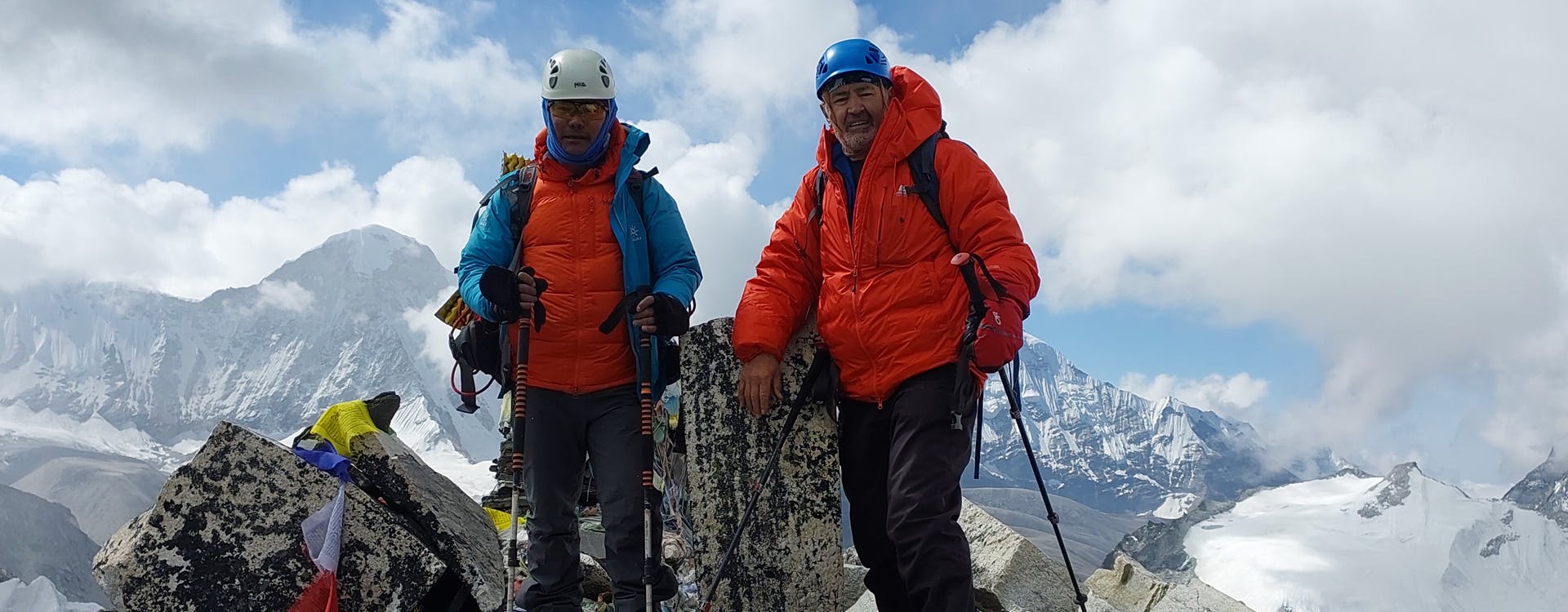
The Most Challenging Treks in Nepal: A Journey Beyond the Ordinary.
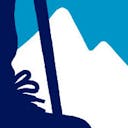
Nepal - A land where the earth meets the sky, where the whispers of ancient monks blend with the songs of the mountain winds. Imagine a place where every step forward is a story, and every breath taken is a memory in the making. Nepal boasts some of the most challenging treks globally - they're not just journeys but soulful vacations into the heart of the Himalayas.
However, we're not delving into the popular routes everyone raves about. Instead, we're taking a detour to explore the hardest treks in Nepal, the trails that genuinely test our mettle, bless our eyes with unparalleled vistas, and whisper stories that have long been waiting for a keen ear.
Whether you're an avid trekker with a thirst for the extreme or a curious soul seeking something less-trodden, this guide to the toughest treks in Nepal is your key to unlocking the mysteries of the extraordinary. Ready to get those boots dirty?
Everest High Passes Trek
At the intersection of high energy and enlightenment
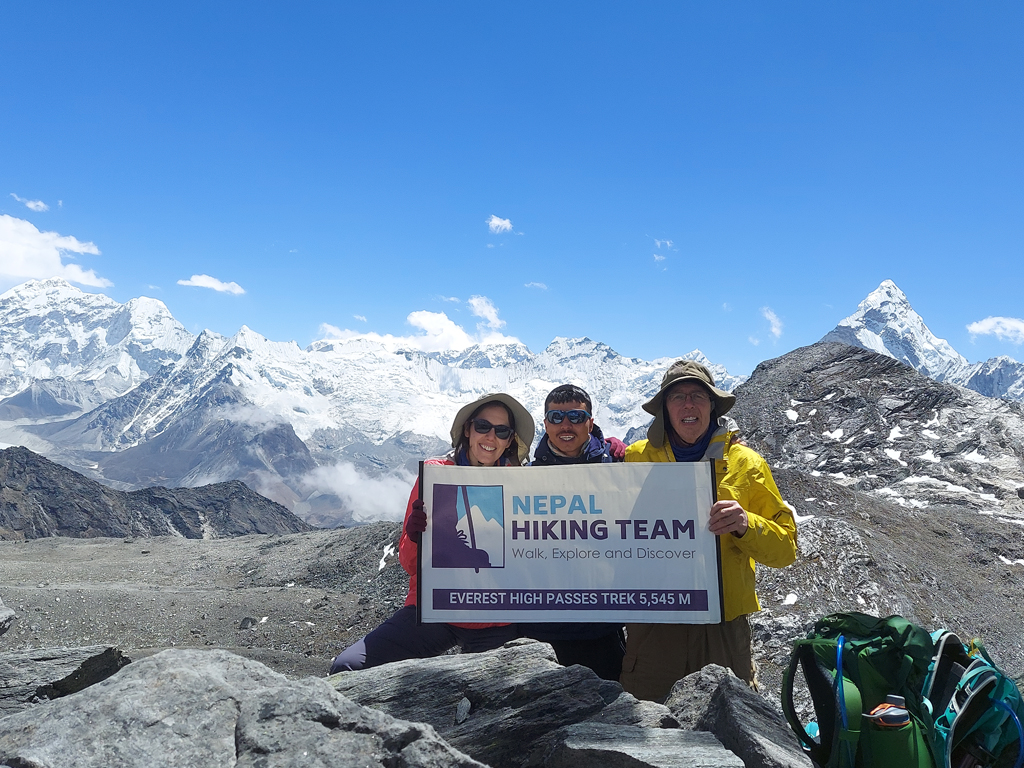
The Everest High Passes Trek is more than a trek; it tests mental and physical fortitude. Crossing passes like Kongma La, Cho La, and Renjo La rewards travelers with breathtaking panoramas. Gokyo Lakes' otherworldly scenery and the pious chanting of monasteries like Tengboche create a rhythm for your journey.
Altitude sickness may be a real problem on this hike, and it can sometimes be somewhat unpredictable and even downright cruel. However, the meetings with the famed Sherpas, protectors of the Himalayas, more than makeup for any difficulties encountered.
Their stories, filled with ancient lore and heartfelt emotion, feel as if they're whispered by each stone and sung by every stream we cross on this profound journey.
Dhaulagiri Trekking Circuit
A raw exploration of the wilderness.
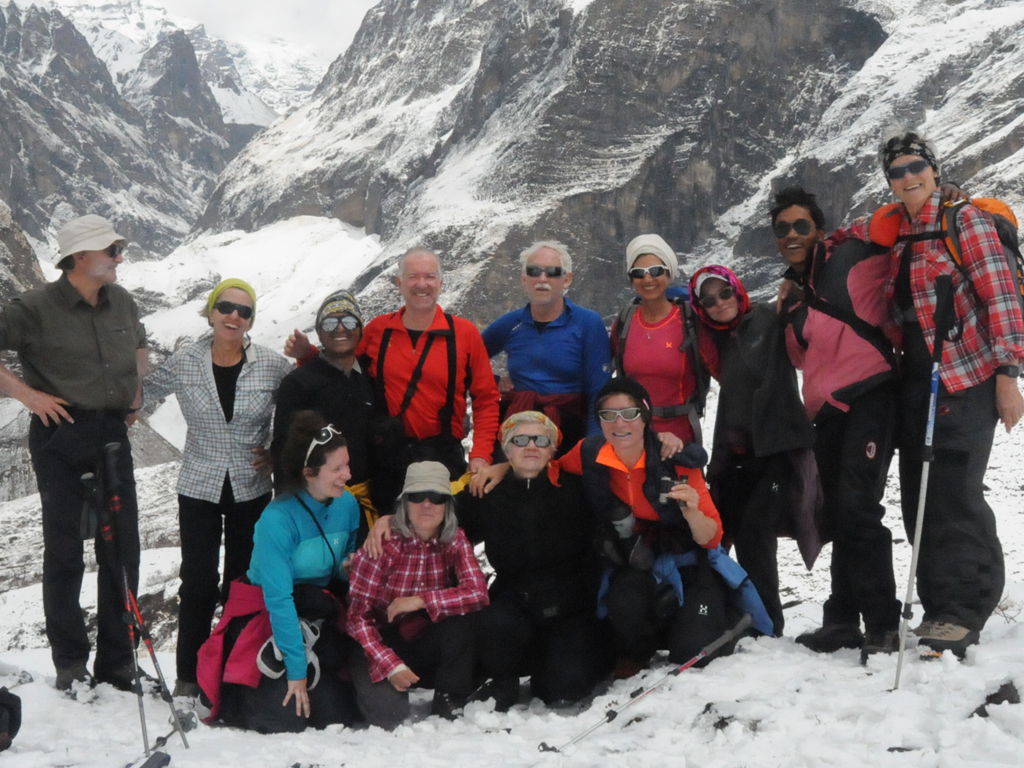
What would it be if you had to choose one word to describe the Dhaulagiri Circuit Trek? While this path gives the seventh-tallest peak a gentle nod from a distance, it warmly invites us to wrestle with the mighty challenges of the French and Dhampus Passes. It's a harsh landscape with no teahouses in sight. When you camp out outdoors, you'll find a more profound sense of unity with one another.
But it's not the scenery that makes this trip worthwhile; it's the people you meet along the way. Magar and Chhantyal folklore speak of a connection between man and mountain that will never be broken. Their stories enrich the natural splendor of the walk, shared over campfires.
Upper Dolpo
A doorway to a long-lost dimension
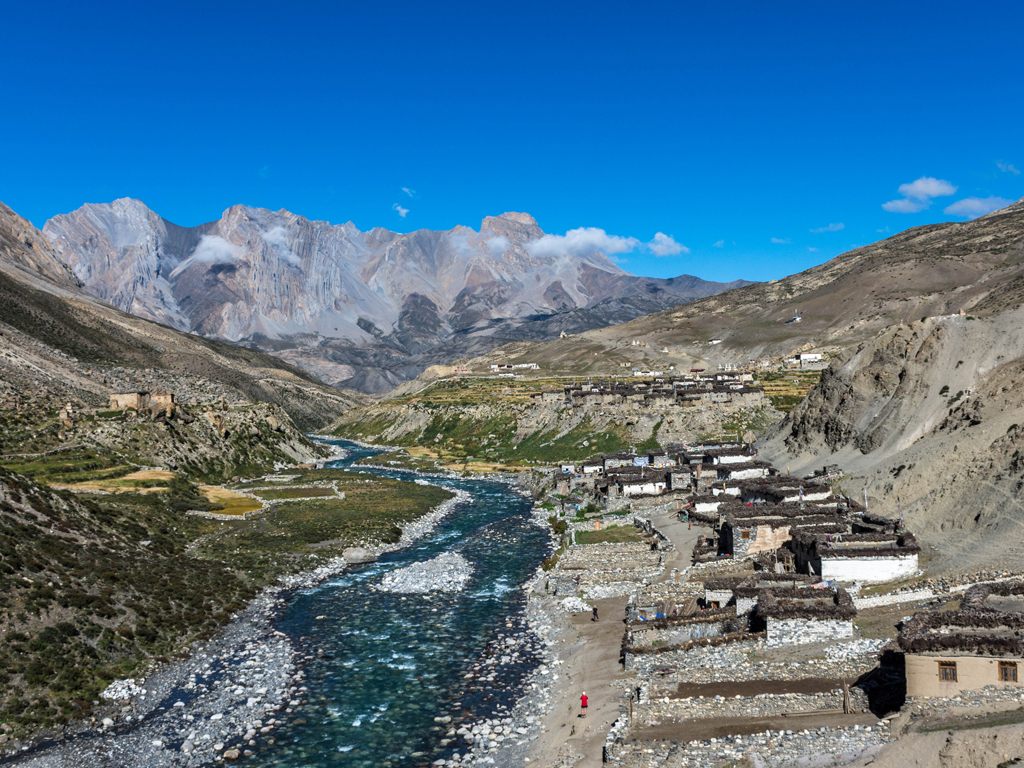
Upper Dolpo is like a region forgotten by a time when you go trekking there. Shey Phoksundo Lake, formed by nature, is hidden among the region's spectacular landscapes. Dolpo's uniqueness, however, lies in the region's practice of the old Bon-Po religion. You're not simply a hiker when you travel over this limited territory; you're a seeker, looking for stories written in the land's breeze and hushed conversations.
Makalu Base Camp Trek
Unveiling nature's stage
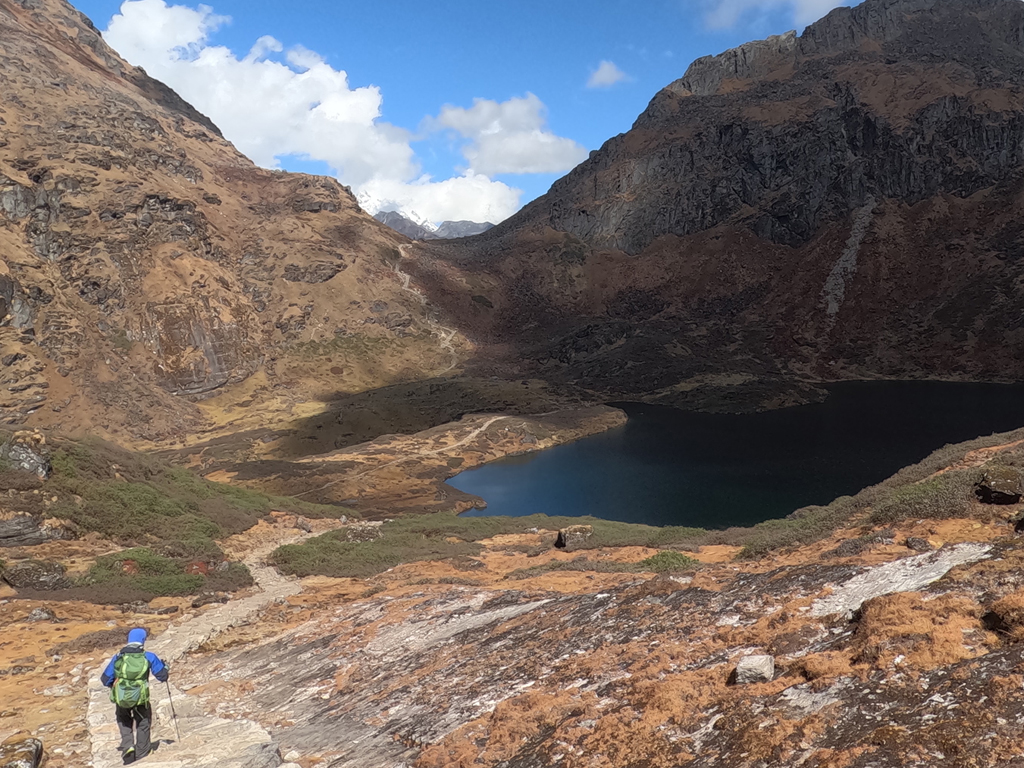
The trek to Makalu's base camp is a spiritual excursion into the bosom of nature. In the Makalu Barun National Park, rhododendron woods give way to alpine meadows, creating a mosaic of species. There's a new tableau of nature's beauties around every bend. However, there is kindness within all this natural splendor.
Walking amidst the echoes of the Rai and Sherpa traditions, you're wrapped in a sense of kinship, a gentle reminder of the age-old dance between man and the embrace of nature.
Nar Phu on the Annapurna Circuit
Where Timeless Tales Are Told in Confidence

The Annapurna Circuit is well-known across the world and requires no introduction. However, combined with the isolated Nar Phu Valley, it becomes a story of opposites. Ancient Buddhist towns of Nar and Phu whisper secrets known only to a select few, while the world-famous Thorong La Pass and Muktinath temples tell the stories of innumerable tourists.
Kangchenjunga's Base Camp
Following in the footsteps of giants
Getting close to the foot of Kanchenjunga, the third-highest mountain in the world, is like "dancing with giants." The Yalung Glacier beneath your feet is a constant witness to the unrelenting conversation between man's tenacity and the majesty of nature. Venturing deeper, you'll discover vibrant cultural tapestries woven by the Limbu and Rai communities, casting their vivid hues against the pristine canvas of snow and rock.
Teri La Pass and Nar Phu Valley Trek in Mustang
Mysticism's inner workings are dissected.
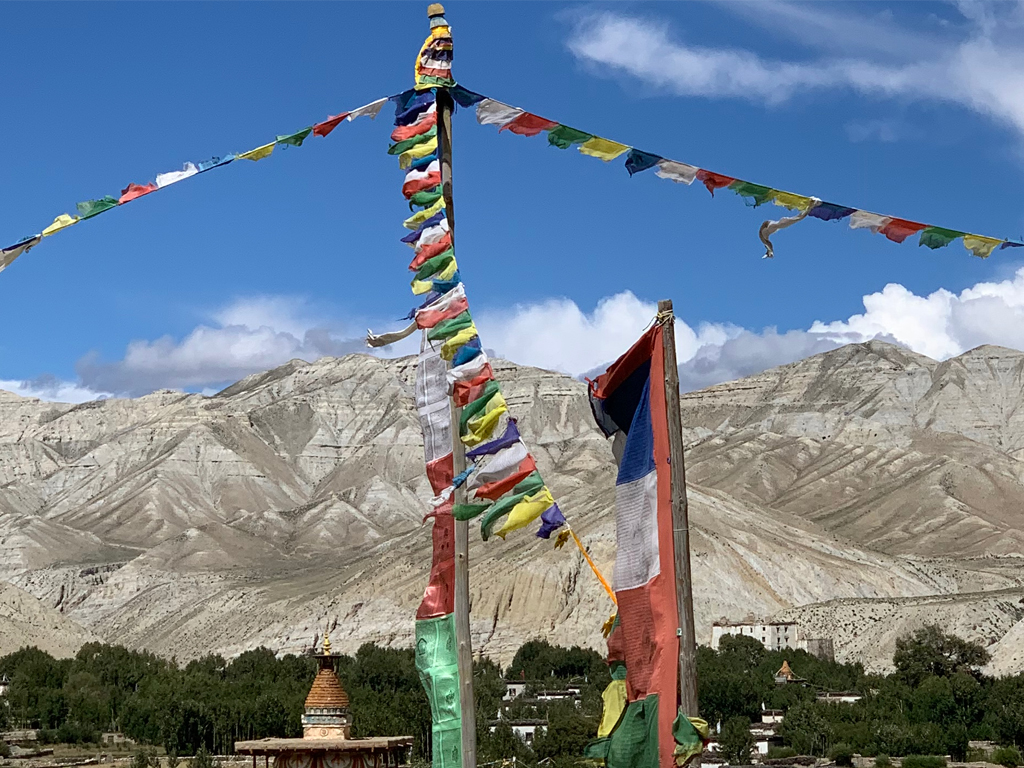
Mustang's arid landscapes, peppered with monasteries and caves from centuries past, serve as sentinels to the passage of time. Though the physically demanding Teri La Pass will test you, the region's enduring Buddhist spirit will surely calm your mind.
Trekking Over the Langtang Ganja La Pass
An elegant concerto for nature and custom
Embarking on the Ganja La Pass Trek is like stepping into the very soul of Langtang National Park. Here, nature's splendor harmoniously intertwines with deep-rooted cultural tales.
The ascent, though demanding, rewards every step with vistas that leave you spellbound, whispering stories of the clouds and the mountains. And as you journey, the vibrant threads of the Tamang culture come alive, enriching your path with age-old customs and heartwarming traditions.
Tashilapcha Pass
Where the secret valley welcomes you with open arms
Overlooked by the massive Tashi Lapcha Peak, the Rolwaling Valley provides adventurous hikers with an authentic flavor of the great outdoors. The spirit is tested by the climbing sections but is restored by the welcoming Sherpa culture.
Trekking the Amphu Lapcha Pass
It's the place where there's a tale around every corner.
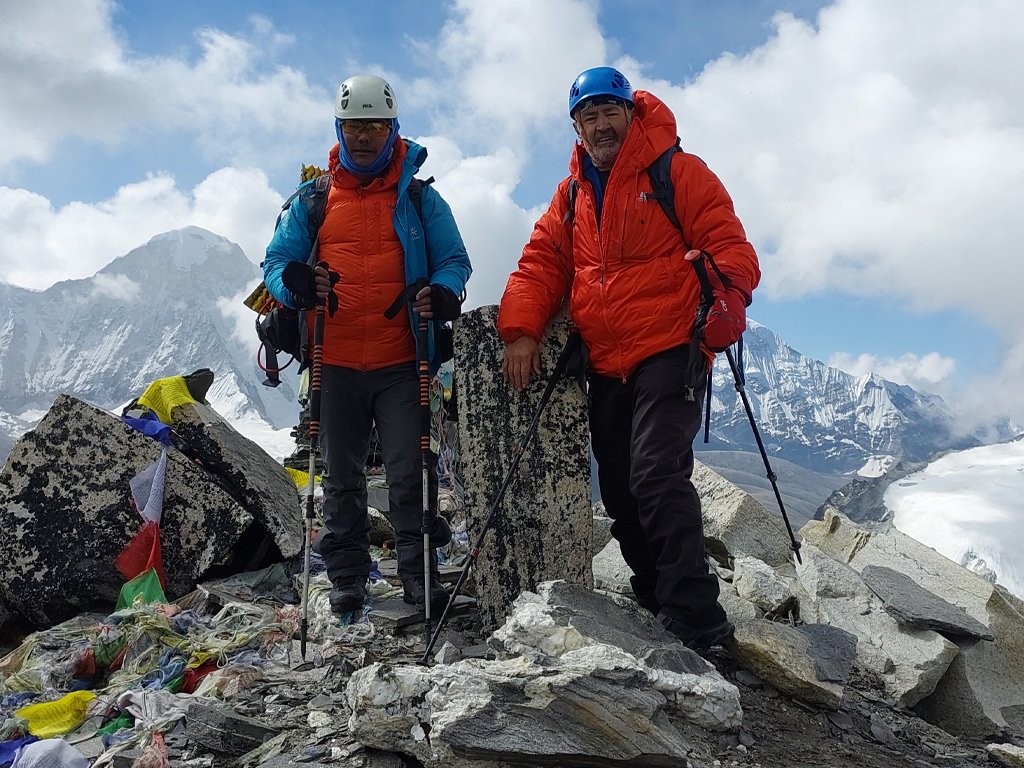
The Amphu Lapcha Pass Trek is a hiking classic because it combines stunning scenery with challenging terrain. The challenge of climbing Mera Peak is part of its charm. Beyond the hike is the cultural experience of immersing oneself in Sherpa culture.
Frequently Asked Questions About Challenging Treks in Nepal
What are the most demanding treks in nepal.
For trekkers, they characterize the most challenging treks in Nepal by high altitude, remote and rugged trails, tricky turns, rocky roads, extremely lengthy walks, and unique accommodations. The treks listed below offer adventurous experiences for those seeking to explore new frontiers in trekking. Here are some of the most demanding treks in Nepal:
- Everest Amphu Lapcha Pass Trek: An adventurous and challenging trek spanning the Khumbu region and the Honku Valley.
- Nar Phu Valley Trek: Considered one of the most challenging due to its wilderness and lack of adequate trek infrastructure, offering a chance to experience true wilderness, traditional ways of living, Tibetan culture, rare wildlife, and ancient monasteries.
- Dhaulagiri Circuit Trek: Known as the most challenging trek in the Nepal Himalayas, offering breathtaking views but requiring endurance and physical fitness.
- Everest Three Passes Trek: This takes you into the heart of Nepal's Solukhumbu District. Trekkers consider this as one of the most difficult treks, involving crossing three high passes.
To undertake these treks safely, proper preparation, physical fitness, and acclimatization to high altitudes are essential. We recommend going with experienced guides or joining organized trekking groups for support and safety.
What is the longest trek in Nepal?
There are several long treks in Nepal:
- Upper Dolpo Trek - A restricted area trek and one of the longest in the country, taking approx. 22-30 days.
- Kanchenjunga Trek: Circumnavigating Mount Kanchenjunga takes around 27 days to complete.
- Three Passes Trek: The toughest Everest Base Camp and the longest trek takes 20-22 days to complete.
- Great Himalaya Trail: Traversing Nepal from east to west is one of the longest and highest footpaths on earth.
- Makalu Base Camp Trek: The Makalu Base Camp Trek also known as MBCT in eastern Nepal's Makalu Barun National Park takes you to the base of the world's fifth-highest mountain. Appro 22-day trek combines natural beauty and high-altitude obstacles.
Though different sources mention various treks, the Great Himalaya Trail is likely the longest, covering the entire length of Nepal from east to west.
Which trekking pass is the most challenging in Nepal?
Nepal offers trekking experiences ranging from easy to challenging. Trekkers consider the most challenging treks by high altitude, remote and rugged trails, tricky turns, rocky roads, lengthy walks, and unique accommodations. Here are some of the most challenging trekking passes in Nepal.
- Everest Amphu Lapcha Pass : An adventurous and challenging trek spanning the Khumbu region and the Honku Valley.
- Mount Dhaulagiri Circuit Trek : Often considered the most challenging trek in Nepal, involving crossing high passes like the French Pass and Dhampus Pass.
- Everest High Passes Trek : Renowned for its exhilarating experience in the Everest region, taking you through two high passes, Ranjo La, Cho La, and Kongma La Pass.
- Ganja La Pass Trek : The most challenging and dangerous trek in the Langtang region, requiring crossing the high Ganj La pass.
- Upper Dolpo Trek : Because of its distant location and rough terrain, Upper Dolpo Trek provides significant difficulties. Trekking is a challenging journey only for the most experienced and courageous explorers because of the difficult terrains they must traverse which include steep passes (Numala, Bagala, Charka La pass) barren plateaus, and unpredictable weather.
- Kanchenjunga Base Camp: The extreme altitude and isolation of the Kanchenjunga Base Camp trip make it notorious as one of the most difficult treks in the Himalayas. Walking through rugged landscapes and steep paths and it may be difficult to forecast the weather therefore hikers need to be in extreme physical condition and have a steely resolve.
Proper preparation and expert advice are essential before attempting any of these treks. Remember the appropriate season for trekking, as some treks are not feasible during winter or monsoon.
What is the highest trekking pass?
The highest trekking pass in the world is Thorong La Pass, located in the mid-western region of Nepal. It stands at an elevation of 5,416 meters and is part of the Annapurna Circuit, a 300 km route around the Annapurna Mountain range. Trekkers usually cross the pass from east to west (Manang to Muktinath), as it is the easiest and safest direction. The safest months to cross Thorong La Pass are March–April and October–November.
Which is the most expensive trek in Nepal?
For the most part, the Everest Base Camp Trek is the most expensive trek in Nepal. The cost of the trek can vary significantly depending on the style of trekking, ranging from as little as USD 1200 to thousands of dollars. Several factors affect the cost, including transportation, permits, guide, and porter costs, accommodation, food and drinks, and other miscellaneous expenses. The cost of transportation, particularly the return flight from Kathmandu to Lukla, can be a significant factor.
Additionally, hiring a licensed guide or porter has become mandatory (Not for the Everest region) for tourists visiting Nepal since April 1, 2023. While trekking in Nepal can be costly, there are ways to save money, such as opting for local food and package tours.
What are the best mountain treks in Nepal?
Nepal offers a wide range of trekking trails suitable for various fitness levels and experiences. Here are some of the best mountain treks in Nepal:
- Everest Base Camp Trek : One of the most popular treks, taking you to the base of the world's highest mountain and requiring around 14-20 days to complete.
- Annapurna Circuit Trek : A diverse trek through various landscapes, taking about 15-20 days to complete and considered moderately challenging.
- Langtang Valley Trek : A shorter and less crowded option with stunning mountain views, it takes around 7-10 days to complete.
- Manaslu Circuit Trek : An alternative to the crowded Annapurna Circuit, offering views of Manaslu, the eighth highest mountain in the world, and taking around 14-20 days to complete, considered moderately challenging.
- Gokyo Lakes Trek : Leading to high-altitude lakes in the Everest region, providing stunning mountain views and taking around 12-15 days to complete, considered moderately challenging.
- Upper Mustang Trek : It takes you to the remote Mustang region, where you can explore ancient monasteries and traditional villages. It requires around 10-14 days to complete. Trekkers consider it moderately challenging.
- Kanchenjunga Base Camp Trek : A remote and challenging trek to the base of Kanchenjunga, the third highest mountain in the world, taking around 20-25 days to complete.
- Makalu Base Camp Trek : A remote and challenging trek to the base of Makalu, the fifth-highest mountain in the world, taking around 18-21 days to complete.
- Nar Phu Valley Trek : It is a moderately challenging trek. You explore the remote Nar Phu Valley with traditional Tibetan villages and stunning mountain scenery. It takes around 10-14 days to complete.
- Annapurna Panorama Trek : On the Annapurna Panorama Trek, see the Annapurna Range's stunning beauty. Meet locals and experience a unique sunrise in nature's surroundings. Walks aren't only once-in-a-lifetime opportunities.
For a better idea of what we mean when we speak to the most spectacular mountain treks, see our summaries of the top 15 best treks in Nepal .
Which treks are considered Dangerous in Nepal?
Some of the most challenging and difficult treks in Nepal include.
- Dhaulagiri Circuit Trek: Known as one of the most challenging and enduring treks, featuring remote and rugged trails, high altitude, and lengthy walks. Often considered the most challenging trek in Nepal, involving camping and difficult terrain.
- Teri La and Saribung La Trek: Involves crossing high passes and traversing remote and rugged terrain.
- Ganj La Trek: Takes you through challenging trails and high passes.
- Saipal Base Camp Trek: Known for its remote and challenging nature, with limited trek infrastructure.
- Makalu to Everest Trek: Involves crossing high passes and traversing challenging terrain between the Makalu and Everest regions.
- Nar Phu Valley Trek: Considered challenging due to its wilderness and lack of adequate trek infrastructure.
- Kanchenjunga Trek: The Kanchenjunga Trek takes you to the base camp of Mount Kanchenjunga, the third-highest peak in the world. Trekkers know the journey as remote and challenging.
These treks demand physical fitness, proper preparation, and experienced guides. Trekking in Nepal can reward and challenge you, so prioritizing safety and following recommended guidelines is crucial.
How to get fit for any of these treks in Nepal?
Preparing for treks in Nepal, especially the challenging ones mentioned in our blog, requires a combination of physical training, mental preparation, and logistical planning. Here's a brief guide on how to train for such treks.
1. Physical Training:
A. Cardiovascular Endurance
- Running: Start with short distances and gradually increase. Aim for at least 30 minutes a day, 4-5 times a week.
- Hiking: Do weekend hikes with a loaded backpack. Start with easier trails and gradually take on steeper terrains.
- Cycling: Great for building stamina and leg strength.
B. Strength Training
- Leg Strength: Squats, lunges, and step-ups are essential. Your legs will be carrying the brunt of the load.
- Core Strength: Planks, sit-ups, and other core exercises help in maintaining balance, especially on uneven terrains.
- Upper Body : While not as crucial as legs, a strong upper body helps, especially if you're carrying a backpack. Incorporate push-ups, pull-ups, and lightweight lifting.
C. Flexibility
- Regular stretching can prevent injuries. Focus on the legs, back, and shoulders.
D. Altitude Training
- If possible, train at higher altitudes. This can help your body acclimatize to lower oxygen levels. If you don't have access to high-altitude areas, consider using an altitude mask.
2. Mental Preparation
- Research: Understand the treks you're undertaking. Knowing what to expect can mentally prepare you for the challenges ahead.
- Meditation and Breathing Exercises: These can help in staying calm during tough situations and in dealing with altitude sickness.
- Positive Mindset: Stay positive and be prepared to face unexpected challenges. Remember, mental endurance is as crucial as physical endurance.
3. Logistical Preparation
- Gear: Invest in good quality trekking gear. This includes hiking boots, trekking poles, backpacks, and clothing suitable for varying weather conditions.
- Nutrition: Understand the kind of food and water sources available on the trek. Carry energy bars, electrolyte supplements, and water purification tablets.
- Health Precautions: Visit a doctor for a health check-up. Discuss vaccinations and medications (like for altitude sickness) that you might need.
- Acclimatization: Plan your trek in a way that allows your body to acclimatize to the altitude. This often means taking rest days and not ascending too quickly.
4. Practice Treks
- Before the main trek, do a few shorter treks to test your stamina, gear, and mental preparedness. It's a good way to understand your strengths and areas that need improvement.
5. Stay Hydrated and Rested:
- During your training and the trek, ensure you're drinking enough water and getting adequate sleep. This aids muscle recovery and overall well-being.
6. Join a Group or Hire a Guide:
- Especially if it's your first time trekking in Nepal, consider joining a group or hiring a guide. They can provide valuable insights, ensure safety, and enhance the overall trekking experience.
Remember, everyone's body is different. Listen to yours, understand its signals, and don't push too hard too fast. The key is consistent training and preparation. Safe trekking!
Final Thoughts
Every trail ventured, every peak glimpsed, leaves an indelible mark on the soul. These aren't just walking; they represent some of the most riskful treks in Nepal, each a profoundly personal journey of discovery and self-reflection intertwined with tales of age-old cultures and the raw beauty of Mother Nature.
As we conclude our virtual exploration, know that the real adventure starts when you set foot on these trails. Whether it’s the rugged terrain of Everest or the mystic whispers of Dolpo, a captivating tale awaits your discovery. Dream vividly, fellow traveler.
And when the call of these peaks becomes too irresistible, don't hesitate to reach out to the experts at Nepal Hiking Team . With a keen understanding of these mountains' rhythms, they're well-equipped to curate an expedition tailored to your spirit.
The allure of the Himalayas is timeless, beckoning every adventurous heart. Here's to the trails yet traveled, the stories yet heard, and the exhilarating adventures that lie ahead.
- Challenging Treks in Nepal
- Acclimatization & Safety protocols on EBC trek
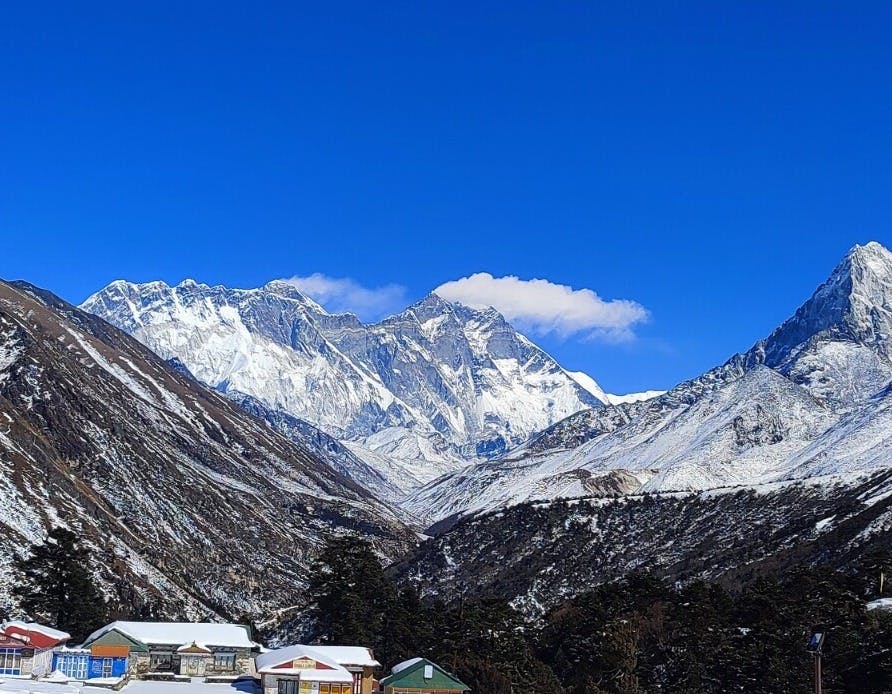
Post a Comment
Subscribe our e-newsletter.
Sign up for Deals and Discount. Get News, Notifications and Updates about the recent Events and Offers.
Famous Longest Treks in Nepal
Sunil gurung.
- Last Updated on Oct 22, 2023
Nepal, renowned for its breathtaking Himalayan landscapes, offers some of the world's most captivating and challenging treks. Among these, the famous longest treks in Nepal stand out as epic journeys that deliver a unique blend of diverse terrain and culture. The Great Himalaya Trail (GHT) is perhaps the most iconic of them all. Spanning over 1,700 kilometers the GHT winds through pristine forests, remote villages, and high-altitude passes. It takes trekkers on an unforgettable odyssey across the entire length of Nepal, from the far east to the far west.
The Annapurna Circuit is another remarkable trek, encircling the Annapurna Massif and covering approximately 230 kilometers. This trail not only showcases the sheer natural beauty of Nepal but also introduces trekkers to the rich traditions of the Gurung and Manang communities. Long treks in Nepal aren't just physical journeys; they are spiritual and cultural odysseys that leave an indelible mark on all who undertake them.
Table of Contents
Three famous longest treks in nepal, 1) tsum valley + manaslu circuit.
However, besides the GHT (Great Himalaya Trail) and Annapurna Circuit, there are several other longest treks in Nepal that are equally exciting. Here is a list of 3 Famous Longest Treks in Nepal
One such trek is the Tsum Valley and Manaslu Circuit Trek. The Tsum Valley Manaslu Circuit can be one of the most thrilling longest treks in Nepal. This classical trek is a hidden gem in the heart of the Nepalese Himalayas. This trek offers a unique blend of natural beauty and cultural richness. Nestled between the towering peaks of the Manaslu and Ganesh Himal ranges, the Tsum Valley is a remote and mystical region that was opened to trekkers only in recent years. As you venture into this pristine valley, you'll encounter ancient monasteries, traditional Tibetan villages, and warm hospitality from the local Tsumbas.
The trek also takes you around the majestic Manaslu, the eighth-highest mountain in the world, and offers breathtaking views of snow-capped peaks, lush forests, and cascading waterfalls. The Tsum Valley Manaslu Circuit Trek is a challenging yet incredibly rewarding adventure for those seeking a quieter and more culturally immersive alternative to the more popular trekking routes in Nepal.
Besides many other attractions, Mu Gompa and Larke Pass are two prominent highlights of this Tsum Valley Manaslu Circuit Trek. Mu Gompa is a serene and ancient Buddhist monastery perched high in the Himalayas. It's a spiritual oasis surrounded by towering peaks and offers trekkers a glimpse into the rich Tibetan culture and religious practices of the region. Larke Pass, on the other hand, is a formidable high-altitude mountain pass that must be crossed to complete the Manaslu Circuit Trek. Standing at over 5,100 meters above sea level, it presents a challenging but awe-inspiring experience, with panoramic vistas of the surrounding peaks. Together, Mu Gompa and Larke Pass are symbolic of the cultural and physical wonders that await adventurers on this remarkable trek in Nepal.
Outline Itineraries for Long Treks in Nepal: Tsum Valley + Manaslu Circuit
- Location: Tsum Valley & Manaslu Valley
- Duration/No. of Days: 24 - 26 days
- Activity Level: Moderate to Challenging
- Trip Mode: Teahouse/Homestay Trekking
- Maximum Elevation: 5,106 m/16,751 feet
- Best Time to Trek: Spring (March-May) and Autumn (September – December)
- Permits Required: Restricted Area Permit for both Tsum Valley and Manaslu Vally and TIMS
DAY 01: Arrive in Kathmandu – transfer to Hotel DAY 02: Half-day city tour/afternoon trek briefing and preparation / welcome dinner. DAY 03: Drive to Machha Khola (869m / 2,851 feet) from Kathmandu; about 9/10 hours drive. DAY 04: Trek to Jagat (1345m / 4,412 feet) 6-7 hrs walk - 14.5 km DAY 05: Trek to Lokpa (2240m / 7,349 feet), 6 hrs walk - 12 km DAY 06: Trek to Chumling (2386m / 7,828 feet) (Lower Tsum); 4-5 hrs walk - 7 km DAY 07: Trek to Chhokangparo (3031m / 9,944 feet), 4-5 hrs walk - 9 km DAY 08: Trek to the Nile (3347m / 10,980 feet) via Milarepa Cave, 5-6 hrs walk - 9 km DAY 09: Trek to Mu Gompa (3,700m) and descend to Rachen Gompa (3,240m), 8 hours - 15 km DAY 10: Trek to Chumling (2386m / 7,828 feet) - 7 hours - 13 km DAY 11: Trek to Deng (1,860m) - 7 hours - 13 km DAY 12: Trek to Prok (2,397m) - 5 hours - 8 km and excursion to Kalchhuman Lake and Kal Chhokang Gumba DAY 13: Trek to Namrung (2,540m) 5 hours - 4 hours - DAY 14: Trek to Samagoan (3,520 m/11,548 ft) 8 / 9 hours (18 km) DAY 15: Acclimatization day and morning excursion to Birendra Lake & Manaslu Base Camp DAY 16: Extra day at Samagoan and Excursion to Pung Gyen Gompa. DAY 17: Trek to Samdo (3,875 m/12,713 ft) 4 hours - 7 km DAY 18: Acclimatization day at Samdo and excursion to Tibetan Boardor or Samdo peak. DAY 19: Trek to Larke Phedi or Dharamsala (4,460 m/14,632 feet) 3/4 hours - 5.5 km DAY 20: Cross Larke La Pass (5,106 m/16,751 feet) and Trek to Bhimthang (3,700 m/12,139 feet) 8 - 10 hours - 14 km DAY 21: Trek to Dharapani (1,960 m/6,430 feet) 8 hours - 22 km DAY 22: Trek to Jagat – 6 hours DAY 23: Drive to Pokhara – 5 hours DAY 24: Extra Night in Pokhara DAY 25: Fly to Kathmandu DAY 26: Departure day - Transfer to International Airport
2) Ruby Valley - Langtang Heritage + Helembu Trek
The Second Famous Longest Treks in Nepal is Ruby Valley, Langtang Heritage, and Helembu Trek. The Ruby Valley Trek, the Langtang Heritage Trek, and the Helambu Trek are three distinct yet equally captivating journeys that showcase the diverse beauty and culture of Nepal's Langtang region. The Ruby Valley Trek is a relatively lesser-known gem, leading trekkers through the picturesque landscapes of the Ganesh Himal range. It's characterized by lush forests, terraced fields, and authentic Tamang villages, offering a unique opportunity to explore the traditional way of life of this indigenous community.
As you traverse the Langtang Heritage Trek, you'll discover a remarkable blend of nature and culture. The trail takes you through the Langtang National Park, home to rare wildlife like red pandas, and introduces you to the warm hospitality of the Tamang and Sherpa people. Moreover, this trek allows you to pay homage to the Langtang Valley, a region that was deeply affected by the devastating earthquake in 2015, and witness the resilience of its inhabitants as they rebuild their lives and homes.
In contrast, the Helambu Trek offers a more accessible and gentle trekking experience. This trek leads you through the scenic Helambu region, known for its lush forests, terraced fields, and charming villages inhabited by the Hyolmo people. Along the way, you'll encounter vibrant Buddhist monasteries and stupas, providing insight into the spiritual traditions of the region. With relatively lower altitudes compared to some other treks in Nepal, the Helambu Trek is ideal for trekkers seeking a cultural and natural immersion without the demands of high-altitude trekking. These three treks, each unique in its own right, collectively embody the cultural richness and natural splendor that Nepal's Langtang region has to offer to adventure enthusiasts and culture seekers alike. This trip rightly makes one of the most thrilling Long Treks in Nepal.
Outline Itinerary: Ruby Valley - Langtang Heritage + Helembu Trek
- Location: Ganesh Himal / Langtang / Helembu Valley
- Duration/No. of Days: 29 days
- Maximum Elevation: 4,610 m / 15,124 ft)
- Permits Required: Langtang National Park Permit and TIMS
DAY 01: Arrive in Kathmandu (1,400 m/4,593 ft) DAY 02: Half-day city tour/afternoon trek briefing and preparation / welcome dinner. DAY 03: Drive to Dondure Khola overnight at homestay in the Village, DAY 04: Trek to Borang Village 1500 meters, 5 hours walking stay overnight at homestay. DAY 05: Trek to Chalish Village 1600 meters, 3 /4 hours walking stay overnight at homestay. DAY 06: Rest day at the same place and explore on hot spring. DAY 07: Trek to Tipling 2100 meters. 3 /4 hours walking and staying overnight at homestay. DAY 08: Trek to Somdang 3320 meters VIA Pangsang pass 3850m – 7/8 hours DAY 09: Trek to Gatlang (2,238 m/7,342 ft) 5 hours DAY 10: Trek to Tatopani (2,607 m/8,553 ft) 5 - 6 hours DAY 11: Trek to Nagthali – overnight stay at this beautiful meditation station. DAY 12: Trek to Timure (1,762 m/5,780 ft) 4 hours DAY 13: Trek to Khangjim (2,235 m/7,332 ft) 5 - 6 hours DAY 14: Trek to Lama Hotel (2,410 m/7,906 ft) 5 - 6 hours DAY 15: Lama Hotel to Langtang (3,430 m/11,253 ft) 6 hours trek. DAY 16: Langtang to Kyanjin gumba (3,830 m/12,565 ft) 3 hours trek DAY 17 : Exploration day at Kyanjin Gumba climb the Kyanjin Ri (4,770 m/15,649 ft) DAY 18: Kyanjin to Lama Hotel 6-hour trek. DAY 19: Lama Hotel to Thulo Syapru (2,210 m/1,250 ft) 6-hour trek. DAY 20: Thulo Syapru to Sing Gompa (3,330 m/10,925 ft) 5 hours trek. DAY 21: Sing Gompa to Gosaikunda Lake (frozen Lake 4,380 m/ 14,370 ft) 5- 6 hrs DAY 22: Extra Night Gosaikunda Lake (frozen Lake 4,380 m/ 14,370 ft) - Side Excursions DAY 23: Trek to Ghopte (3,530 m/11,581 ft) via Lauribina pass (4,610 m / 15,124 ft) 6 – 7 hrs DAY 24: Trek from Gopte to Malemchigano: 6-7 hours DAY 25: Trek from Malemchigano to Tarke Gyang (Helambu) (2590m): 5-7 hours DAY 26: Trek from Tarke Gyang to Sermathang (2610m): 3-5 hours DAY 27: Trek from Sermathang to Melamchi Bazar 5 hours DAY 28: Drive to Kathmandu DAY 29: Transfer to International Airport.
3) Poon Hill + Khopra Ridge + Annapurna Base Camp and Mardi Himal Trek
This Annapurna Trek is the next Famous Longest trek in Nepal that would include Poon Hill, Khopra Ridge, Annapurna Base Camp and Mardi Himal.
Poon Hill is one of the most popular trekking destinations for both National and International Tourists. It offers breathtaking panoramic views of some of the world's highest peaks, including Annapurna and Dhaulagiri. The trek to Poon Hill is relatively short, making it accessible to trekkers of varying skill levels. The trail takes you through lush rhododendron forests, charming villages, and terraced fields, providing a rich cultural and natural experience. Poon Hill is particularly famous for its sunrise views, where the first light of the day bathes the mountains in a warm golden glow, creating a surreal and unforgettable spectacle.
Khopra Ridge:
Khopra Ridge is a hidden gem offering a more off-the-beaten-path trekking experience. This trek is known for its serene beauty, diverse landscapes, and encounters with local Gurung and Magar communities. The highlight of the Khopra Ridge trek is the Khayer Lake, a pristine alpine lake nestled in the heart of the Himalayas. It's a trek for those seeking solitude and a deeper connection with nature and culture, away from the crowds of more popular trails.
Annapurna Base Camp:
The Annapurna Base Camp trek is one of Nepal's most iconic and well-loved treks. It takes you into the heart of the Annapurna Sanctuary, surrounded by towering peaks, including Annapurna I, Machapuchare, and Hiunchuli. The journey is a fantastic blend of lush forests, terraced fields, and traditional villages inhabited by GURUNG communities. Trekkers can soak in natural hot springs at Jhinu Danda and enjoy the breathtaking sunrise at the base camp. The trek offers a magical experience in the diverse culture, flora, and fauna of the region.
Mardi Himal Trek:
The Mardi Himal Trek is a relatively new and less crowded trekking route. It has been gaining popularity for its pristine wilderness and stunning views of the Annapurna and Machapuchare peaks. This trek takes you through rhododendron forests, picturesque villages, and rugged terrain. The high point of the trek is reaching Mardi Himal Base Camp, where you'll have a front-row seat to the impressive Mardi Himal and the surrounding peaks. The trek is a great option for those looking for a quieter and less commercialized alternative to the more famous treks in the Annapurna region.
This trek certainly takes you to the classic Poon Hill, the off-the-beaten-path to Khopra Ridge adventure, the iconic Annapurna Base Camp journey, and to the emerging gem of Mardi Himal. You are guaranteed to be captivated by the natural beauty and cultural richness of this Himalayan paradise.
Outline Itinerary: Poon Hill + Khopra Ridge + ABC and Mardi Himal Trek
- Location: Annapurna Region
- Duration/No. of Days: 26 days
- Activity Level: Moderate
- Trip Mode: Teahouse Trekking
- Maximum Elevation: (4250 m/13,600 feet)
- Permits Required: ACAP (Annapurna Conservation Area Project Permit) and TIMS
DAY 01: Arrive in Kathmandu – transfer to Hotel DAY 02: Half-day city tour/afternoon trek briefing and preparation / welcome dinner. DAY 03: Drive to Hille and Trek to Ulleri (1960 m/6430 feet) DAY 04: Trek to Ghorepani (2860 m/9383 feet) DAY 05: Trek to Swanta (2,214m/7263 feet) 4 hours DAY 06: Trek to Chistibung (2,950m/9678ft) 5 hours DAY 07: Trek to Khopra (3,600m/11811ft) 3 – 4 hours DAY 08: Trek to Dobato (3426m/11240ft) 4 – 5 hours DAY 09: Trek to Chuile Via Tadapani (2630m/8628ft) 4 hours DAY 10: Trek to Sinuwa (2360m) DAY 11: Trek to Dovan (2600 m/8530 feet) 4hrs DAY 12: Trek to Deurali (3230 m/10597 feet) 5 - 6 hours DAY 13: Trek to Annapurna Base Camp via Machhapuchare Base Camp (4130m /13,459 feet) 4 hours DAY 14: Trek to Bamboo (2310 m/7578 feet) OR Sinuwa (2340 m/7677 feet) 6 - 7 hours DAY 15: Trek to Jhinu (1780 m/5839 feet) 3 - 4 hours DAY 16: Trek to Landruk (1430m/4660ft) 5 Hours DAY 17: Trek to Forest Camp (2500m/8200ft) 6 Km, 5-6 Hours DAY 18: Trek to Bandal Danda DAY 19: Trek to High Camp and excursion (3,600m/11800ft) DAY 20: Trek to Low Camp DAY 21: Trek to Deurali (2165 m/7103 ft) DAY 22: Trek to Australian Camp DAY 23: Drive to Pokhara DAY 24 : Extra night in Pokhara - Sightseeing DAY 25: Fly to Kathmandu DAY 26: Departure
- Alpine Hiking
- Nepal Adventures
- Nepal Holidays
- Travel Tips
- Nepal Hiking
- Mountain Adventures
- Nepal Trekking

An Adventurer who founded Nepal Pyramids to showcase the enchanting wonders of Nepal. A writer moved to share the wonders, wisdom, and warmth discovered in the mountain communities of this magical country.
Ask a Question

The Majestic Kala Patthar - 5,545m

Best Trekking Peaks for Beginners in Nepal

Top Seven 6,000m Trekking Peaks in Nepal
We use cookies to ensure that we give you the best experience on our website.

- Why Do You Choose NHTE?
- Who Are We?
- Legal Documents
- Terms and Conditions
- Clients Reviews
- Ghorepani Poon Hill Trek: Poon Hill Trek 3 Days From Pokhara
- Ghorepani Poon Hill with Mardi Himal Trek
- Short Annapurna Base Camp Trek
- Annapurna Base Camp Trek 6 Days
- 7 Days Annapurna Base Camp Trek
- Annapurna Base Camp with Poon Hill Trek 10 Days
- Annapurna Circuit Trek 10 Days
- Annapurna Base Camp Trek
- Annapurna Circuit Trek 12 Days
- Mardi Himal Trek
- Khair Lake and Khopra Ridge Trek
- Mohare Danda Trek
- Jomsom Muktinath Trek
- Annapurna Circuit Trek: Explore the world’s longest Thorong La Pass
- Annapurna Tilicho Lake Trek
- Ghale Gaun Trek
- Nar Phu Valley Trek
- Poon Hill Trek 3 Days
- Langtang Trek
- Langtang Valley Trek
- Short Langtang Trek 5 Days
- Langtang Gosainkunda Trek
- Langtang Tamang Heritage Trek
- Gosainkunda Pass Trek
- Helambu Trek
- Langtang Valley and Ganja La Pass Trek
- Everest View Trek
- Everest Base Camp Trek 9 Days
- Everest Short Trek
- Everest Base Camp Trek 10 Days
- Everest Base Camp Trek 12 Days: Everest Base Camp Short Trek
- Everest Base Camp Trek: Experience Nature’s Majesty at Its Peak
- 14 Days Everest Base Camp Trek
- Gokyo Lake Trek
- Gokyo Chola Pass Trek
- Everest Base Camp Trekking
- Everest Three Pass Trek: Three High Passes Trekking in Nepal
- Everest Base Camp Trek Cost
- Ama Lapcha Pass Trek
- Pike Peak Trek
- Everest Base Camp Luxury Trek
- Everest Base Camp Trek Guide Cost
- Manaslu Circuit Trek
- Manaslu Trek
- Manaslu Circuit Trek 10 Days
- Manaslu Tsum Valley Trek
- Lower Dolpo Trekking
- Lower Manaslu Scenic Trek
- Rara Lake Trekking
- Rupina La Pass Trek
- Upper Dolpo Trekking
- Upper Mustang Trek: Discover the Hidden Nature & Culture of Mustang
- Chepang Hill Trek
- Ganga Jamuna Trek
- Kathmandu Valley Tour
- Kathmandu Chitwan Tour
- Kathmandu Chitwan Pokhara Package Tour
- Kathmandu Chitwan Lumbini Via Pokhara Tour
- Bandipur Pokhara Tour
- Bungy Jump in Nepal
- Helicopter Tour In Nepal
- Mountain Flight in Nepal
- Paragliding in Nepal
- Island Peak Climbing: Popular Trekking Peak Climb in Nepal
- Lobuche Peak Climbing:
- Mera Peak Climbing
- Pisang Peak Climbing
- Yala Peak Climbing
- Amadablam Expedition in Nepal
- Chulu West Peak Climbing
- Trekking in Nepal
- Packages Tour in Nepal
- Peak Climbing in Nepal
- Expedition in Nepal
- Rafting in Nepal
- Chitwan Jungle Safari
- Paraglading in Nepal
- Mount Kailash Tour
- Cho Oyu Expedition in Nepal
- Bhutan Tour
- Bhutan Cultural Tour
- Compulsory Equipment List
- Nepal Visa Information
- Currency & Payments
- Travel Insurance

Top 20 Best Treks in Nepal
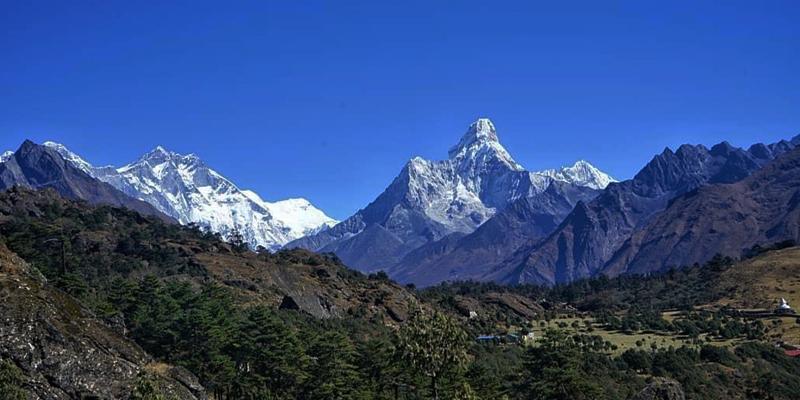
Top 20 Best Treks in Nepal allows wide travelers to choose the right types of adventure holidays around Nepal Himalayas. As Nepal is one of the foremost and leading countries for various sports activities. Nepal with the world’s 8th highest peaks makes one of the most sought countries for trekking and exotic adventure destinations.
The country offers a wide range of trekking and various adventures, from 8,000 meters base camps to high Himalayan passes crossing. Truly, a country of great bio-diversity from low warm sub-tropical of Terai belt to cooler mid-hills. Extends towards a colder arctic zone of ice and glaciers within a mere distance of 150 k.m. Makes Nepal a unique country on earth, besides the dramatic scenery of landscapes, the local culture is equally fascinating to experience.
Visitors to Nepal can choose a wide range of exotic destinations from moderate, adventurous to challenging trekking. From a few days of walks to more than a week, and continue trekking for two-three weeks duration. The country offers treks from popular busy trails to off-the-beaten tracks. Staying overnights in the comfort of mountain lodges or tented camping, where all types of travelers can enjoy.
We’ve compiled The Top 20 Best Treks in Nepal For 2022
01 ghorepani and poon hill trek.
Ghorepani Poon Hill Trek is a short and moderate-grade destination around the high cooler hills of the southern Annapurna Himalayan range. Located in Nepal Far Mid-West around Annapurna Himalayas, the trek starts and ends at beautiful Pokhara city. The walk takes you about two days climbing up the hills from low warm paddy fields to an alpine cooler climate. The trail follows through a lovely forest of rhododendron and pine tall trees, reaching the lovely village of Ghorepani.
A moderate settlement of Poon, Maga r people the hill tribes of Western Nepal, from Ghorepani after an overnight stop. Staying in the comfort of a nice cozy lodge, next early morning an hour climb to Poon Hill at 3,210 m. The highest point of the trek offers glorious sunrise views, along with a panorama of the world’s three highest peaks. Namely Dhaulagiri, Manaslu, and the whole range of
Annapurna Himalayan peaks with majestic Machhapuchare Himal, the famous Fish-Tail peak. From Ghorepani, an alternative route through the large village of Ghandruk brings you back to scenic Pokhara.
02 Annapurna Base Camp Trek
Annapurna Base Camp Trek (ABC) is one of the remarkable and coolest walks of a week duration. The only 8,000 m base camps in all Himalayas with great facilities of a nice cozy lodge. Located at the height of 4,130 m in the heart of Annapurna Sanctuary, a scenic and exciting trek. Starts with a short drive from the beautiful Pokhara city heading North West to a near small farm village at Jhinu.
The walk leads to climbing on paved stone steps to Chomrong , the last permanent village on the route to Annapurna base camp. A lovely village populated by the Gurung the hill tribes of Annapurna Himalayas interwoven with Buddhism religion. From Chomrong on the road to Annapurna Base Camp, a walk leads down and ups towards cool rhododendron and pine forest. Then reach Modi River gorge at Bamboo a place with a few nice lodges, following the river gorge to Deurali.
A climb leads to MBC (Machhapuchare Base Camp) right beneath the towering North Face of Fish Tail peak the Machhapuchare Himal. Where the Annapurna Sanctuary starts on a high plateau enclosed by an array of Annapurna ranges of peaks.
An easy walk on a slow uphill path to Annapurna Base Camp right in the heart of massif Annapurna Himalayas. Enjoy the panorama of snow peaks in the comfort of a nice lovely lodge, right beneath the world’s 10th highest Mt. Annapurna. Return journey downhill on the same route to Chomrong village, from where one can take an option to various destinations. As well as ending the trek on the same spot where you started earlier.
03 Mardi Himal Trek
Mardi Himal is another smaller trekking peak of Nepal, located within the great Annapurna Himalaya range. Located Nepal Mid-West right beneath the staggering Machhapuchare Himal or Fish Tail, one of least ventured destinations.
But slowly gaining popularity due to its scenic views, as well the shortest trekking of a week duration. Where walk leads at the height of 4,500 m at Mardi Himal View Point high ridge . Overlooking the tremendous panorama of Annapurna peaks that surround the top of Mardi Himal Viewpoint. The walk begins and ends at scenic Pokhara city, enjoyable trekking around the hidden corners of the Annapurna Himalayas.
04 Annapurna Circuit Trek
Annapurna Circuit Trek is one of the most popular and famous adventure destinations around the whole Himalayas range. A trek of two weeks or less depending upon the start and end of trekking. As the motorable road has reached Manang valley, and on the other sides of Mustang area also.
Annapurna Circuit Trekking is an enjoyable walk spending overnights in a nice lodge around lovely villages on route overnight stops. The views of Annapurna, Manaslu, and Chulu’ s peaks are seen along the first part of the journey. On reaching high Manang valley, surrounded by towering snow peaks of Chulu’s and Annapurna peaks, with time to explore. Visiting traditional mountain villages adorned with lively colorful cultures of Buddhism in the backdrop of high snow peaks.
From Manang village on the higher trail with a steep climb on top the highest point of the adventure. Reaching Thorang-La Pass at 5,416 m high, offers a mind-blowing panorama of Damodar, Chulu’s peaks with Annapurna and Dhaulagiri Himal.
Thorang-La Pass is the boundary between Manang and Mustang districts, where a downhill trail leads to Muktinath in the Mustang area. Muktinath is a holy site with temples and monasteries, a sacred pilgrimage site for Hindu followers. From Muktinath either walk downhill to the nearest road head reaching Pokhara or take a hitch hike in between. Where walk and drive lead to scenic Kaligandaki valley past Jomsom town and beautiful Marpha and Tukuche villages.
Reaching low warm Tatopani village, a place with a natural hot spring to enjoy from Tatopani, a climb to Ghorepani village. Enjoy the hike to Poon Hill for stunning sunrise views and panorama of the Western Himalayas. Then end the trek heading down to Bhirethati for a short drive to Pokhara, where the trek concludes.
05 Upper Mustang Trek
Upper Mustang, is located in Far West Nepal on the old Trans Himalaya Salt Trade Route between Nepal and Tibet / China. The whole Mustang area is an extension of the Tibetan Far South West plateau, with dry and windswept landscapes.
Although an arid and barren terrain, but one of the most picturesque countries to experience, and the local immense culture. Upper Mustang’s main highlight is to explore the former walled kingdom of Lo-Manthang, with a medieval-era town setting. Upper Mustang is a restricted area of Nepal, where all visitors require special permits to enter from Kagbeni village.
In the early days when it was opened for outside visitors in 1992 . A full trek of 10 / 11 days from Jomsom to Jomsom town, but since the motorable road has reached. At present travelers hardly walk to designate overnight stops or destinations, rather take the comfort of a jeep drive. On drive takes less than a week covering the Upper Mustang region with Lo-Manthang from Jomsom to Jomsom town.
06 Everest Base Camp Trek
Everest Base Camp Trek is another great adventure that leads beneath the world’s highest peaks at 5,364 m at Everest Base Camp . One of the most popular adventure destinations after Annapurna Region, a trek of fewer than 2 weeks. An enjoyable walk through lovely Sherpa villages, and reaching the famous Namche Bazaar the hub of Khumbu and Everest area. From Namche takes you to beautiful Tengboche and its majestic monastery, surrounded by an array of snow peaks. Facing views of Everest, Nuptse, and Lhotse’s attractive Ama Dablam peak, the walk continues reaching scenic Imjatse valley at Dingboche. The adventure then heads towards higher arid and barren terrain to Lobuche, Gorakshep, and Everest base camp.
Enjoy dramatic scenery of arctic zone landscapes within remorseless fields of ice and glaciers with close views of Khumbu Icefall. The Everest base camp trek includes a climb to the high Kalapathar Hilltop at 5,545 m . offers a mind-blowing panorama of giant peaks with the closest views of Mt. Everest, and the return journey to Lukla.
Everest base camp trek involves both ways panoramic and short flights both ways from Kathmandu, Lukla to Kathmandu. An adventure of 11/12 days or more spent in nice lovely lodges of various standards from budget to luxury comfort.
07 Gokyo Lake & Everest Base Camp via Cho-La Pass Trek
Gokyo Lake & Everest base camp is another wonderful adventure to enjoy a once-in-a-lifetime experience. Takes you to high Khumbu valley after walking from the famous Lukla, Namche Bazaar to enter Sagarmatha National Park.
The park is listed as a UNESCO World Heritage Site enriched with exotic flora/fauna and the world’s highest peaks. An exciting place to be a high-altitude walk on leaving the main trail from Namche Bazaar onwards. Reaching Gokyo Valley and its beautiful glacial lakes, facing views of the world’s 6th high Mt. Cho-Oyu.
At Gokyo climb to Gokyo-Ri viewpoint hilltop offers a panorama of the world’s 4 highest peaks. Namely Everest, Lhotse, Makalu, and Cho-Oyu with the whole of Gokyo scenic valley with Nepal’s longest Ngozumpa glacier.
From Gokyo adventure leads to crossing the high Cho-La pass at 5, 420 m then reaching the eastern side of Khumbu. Joining on the main trail to Everest base camp, as the walk leads past Lobuche, Gorakshep then reaches Everest base camp. After an enjoyable time at base camp, climb to high Kalapathar at 5,545 m, facing tremendous views of snow peaks. Facing the closest and superb views of
Mt. Everest, and then walk downhill on the main trail. Where walk leads to scenic Pheriche Valley to Pangboche and then to a beautiful spot in Tengboche surrounded by an array of snow peaks. With time to visit the impressive monastery and walk back to Namche onwards to Lukla for a flight to Kathmandu.
08 Everest Three High Passes Trek
Everest Three High Passes Trek is a great adventure for hardy veteran trekkers and adventurers, as well as beginners. The trek covers all scenic areas of the Khumbu and Everest region taking more than two weeks of exciting walks. An adventure traverse from one scenic valley to another beautiful area.
Crossing over 5,000 m high passes, Kongma-la, Cho-la, and Renjo-la with a visit to Everest base camp. As well climb on top of Kalapathar rocky hill, the highest point of the adventure at 5,545 m high. Facing Mt. Everest at a close distance, and reaching the scenic Gokyo Valley and its serene glacial lakes. At Gokyo takes you to the top of Gokyo-Ri for excellent views of the world’s four highest peaks.
Namely Mt. Everest, Lhotse, Makalu, and Mt. Cho-Oyu with Nepal’s longest Ngozumpa glacier. Then finally crossing the last Renjo-la pass to reach Thame village on the western end of the Khumbu area. From Thame on the main trail to Namche Bazaar and ending the trek at Lukla, for a flight back to Kathmandu.
09 Tengboche Everest Panorama Trek
Tengboche and the famous impressive monastery, add to the charm of the small settlement of Tengboche at 3,867 m high. A moderate adventure of little more than a week, from Lukla to Lukla where the Tengboche Everest Panorama starts and ends. A perfect trek for all from beginners, and families to school/college groups, as well as for a corporate executive. From Tengboche, one can enjoy a glorious panorama of Everest, Lhotse, and Nuptse with the majestic Ama Dablam.
10 Pikey View Point Hill Trek
Pikey View Point Hill Trek, is quite different from other normal and mainstream trekking, on off-the-beaten tracks. Far and away from villages and main trails around the hidden pockets of Solu-Khumbu district and southern hills of Everest.
An exclusive trekking adventure of more than a week takes you on top 2,515 m / 8,251 feet high. Offers stunning sunrise along with a spectacular panorama of the Himalayan range of peaks with Mt. Everest, and Makalu as far as Kanchenjunga.
A great scenic hilltop to enjoy tranquil surroundings amidst a beautiful forest of rhododendrons, pines, and fir trees. The trek starts and ends at Phaplu a nice small Sherpa village adorned with Buddhist prayer monuments.
11 Langtang Valley Trek
Langtang Valley Trek is the third most popular trek of a week duration and the closest Himalayan destination to Kathmandu. A moderate-grade adventure starts from the village of Syabrubesi after an exciting drive from Kathmandu. Langtang Valley to Kyanjin is one of the most magnificent walks through the beautiful woodland of rhododendrons and pines. On leaving the tree lines reach the beautiful and scenic Langtang valley at Kyanjin enclosed by an array of peaks.
Where one can explore high viewpoints for a breathtaking panorama of surrounding picturesque scenery with snow-capped peaks. Great scenic and cultural walks are suitable for all types of people and age groups, where altitude gains gradually. The highest point is at Kyanjin Gompa 3,749 m / 12,371 feet.
12 Langtang Valley & Gosainkunda Trek
Another exciting adventurous trek is Langtang Valley and Gosainkunda Trekking , a combination of scenic Langtang Valley and holy Gosainkunda Pond. The trek starts from the traditional Tamang village of Syabrubesi after an exciting drive from Kathmandu of 6 hours journey. Walk first takes you to beautiful Langtang Valley at Kyanjin, having time to enjoy a scenic hike to high viewpoints.
From Langtang Valley, the route diverts towards the high Gosainkunda holy glacial pond at 4,381 m high. After enjoying the dramatic views on a climb to Gosainkund, facing Langtang, Ganesh, and Manaslu Himal, as far as the Annapurna range. Gosainkunda is sacred for Hindus, where once a year a festival held thousands of devotees and pilgrims visit. Taking a holy bath in the pond, the belief is that it washes the sins of a hundred lifetimes. From Gosainkunda adventure leads to a high pass of Gosainkunda or Laurabinaya at 4,609 m. A long descent reaches a cool shade of serenity towards the Helambu area, around the eastern side of the Langtang Himal range.
Walk on high scenic ridges to Chisapani, a small settlement that offers grand sunrise and sunset views over Himalayan peaks. Slowly the walk ends heading downhill towards the North Eastern valley rim of Kathmandu. A short drive brings you back to your hotel in Katmandu, after a wonderful adventure on the Langtang Valley & Gosainkunda trek. A total trek duration of 12 nights and 13 days including drives both ways.
13 Tamang Heritage Trail Trek
Tamang Heritage Trail Trekking is located around the Langtang Himal range within the district of Rasuwa. Which is on route to the Nepal and Tibet / China border, as well to Langtang Valley and the Ganesh Himal area. A moderate grade walk of little more than a week, an ideal soft adventure suitable for all types of visitors.
A great interesting country and cultural walk exploring from one heritage village to another Tamang settlement. Trekkers can witness and soak into the ancient cultures and customs of Tamang, the ancient indigenous mountain tribes of Nepal.
The walk leads to the lovely cultural and traditional villages of Gatlang, Tatopani, and Thuman through high Nagethali Hill 3,165 m. Where one can enjoy tremendous views of dramatic landscapes with snow-capped peaks as far as Annapurna Himalayas. Includes Manaslu and close views of Ganesh and Langtang Himal with some peaks of Tibet across the border. Visitors to Tamang Heritage Trail trekking will be delighted to stay in community Home Stay huts and cottages. Enjoying the local authentic and traditional foods, in the harmony of a lovely culture of Buddhism lively heritage.
14 Ruby Valley Trek
For trekkers in search of hidden corners of Nepal Himalayas, and who want to be away from the main popular trekking trails. Ruby Valley will be the best and perfect choice, which is not far from Kathmandu to start the trek. Yet it is unknown to many wide-world travelers the remote pockets of beautiful Ruby Valley.
Due to the nature of its pristine wilderness with a close backdrop of Manaslu and Ganesh Himal. Where trekkers have to spend overnights in a tented camp, which will be carried by the local trekking company. Providing full camping equipment followed by trekking staff, cook and guide as well porters.
The trek follows from rural towns and villages and beyond towards high scenic hills and through lovely forests. Reach around beautiful Ruby Valley and climb high up to Sing-La hilltop and pass. Which is at 4,045 m, the highest point of the adventure, facing a spectacular panorama of the Himalayan range of peaks. Adventure of two weeks trekking where drives involve both ways to start and the end the wonderful Ruby Valley Trekking.
15 Manaslu Circuit Trek
Manaslu Circuit Trekking is a restricted area of Nepal, it was closed to outside visitors for many decades. Which was opened for foreign travelers from 1992 onwards, where a special permit is required to enter Upper Manaslu. Manaslu Circuit trekking might be a fresh country, but slowly becoming one of the most popular adventure destinations. For the last few decades, since it opened its doors for foreign visitors, enjoyable scenic and cultural walks.
Where adventure leads around the massif Manaslu Himalaya range, and over a high Larke-La Pass at 5,106 m. The pass forms the boundary of the Gorkha and Manang districts, where the trek ends at Dharapani village in the Manang area. Mt. Manaslu stands as the world’s 8th highest peak at 8,163 m high in between the massif Ganesh and Annapurna Himalayas. A trek of more than two weeks takes you to the lovely villages of Jagat, Lo, and Sama-Gaon. Before crossing Larke-La pass and a long descent to Dharapani village, and then a drive back to Kathmandu.
16 Tsum Valley Trek
Tsum Valley is another fresh new destination, as well as a restricted area of Nepal that opened to the outside world in 2008. The last Himalayan Shangri-La, where walk leads to the hidden valley of happiness around Tsum. Far beyond northeast of Gorkha district and Manaslu Himalayas, on the back of massif Ganesh Himal
Walk for some days on the same trail of the Manaslu Circuit trek , then from Lokpa onwards. Where route diverts east towards a remote and isolated Tsum Valley in the land of Tsumbas. The highlanders of Tsum, which falls on the old Trans Himalaya Caravan trail to Tibet. The villages and people of Tsum follow strong Buddhist cultures similar to their Tibetan predecessors.
An interesting and exciting walk to Tsum Valley exploring the traditional villages of Chumling, Chokang Paro, and the Nile. Then reaching the remote settlement of Mu Gompa the highest and last village of Tsum Valley at 3,700 m high.
Having time to explore the local cultures in the backdrop of the mighty peaks of Ganesh Himal. Includes an array of snow peaks with dramatic landscape views, after a wonderful experience, a walk leads to Rachen Gompa. Then returning on the same trail where the trek ends heading downhill to a low warm village at Machha-Khola. An exciting drive brings you to Kathmandu, after a great marvelous adventure around Tsum Valley.
17 Makalu Base Camp Trek
Makalu base camp treks lead you to the beautiful valley of Arun around low warm farm areas, heading towards cooler hills. Reaching within scenic Barun valley enriched with exotic flora and fauna then at high Makalu Base Camp. Exciting trekking on and off the beaten tracks away from main villages for a week. Within complete isolation of the mountain wilderness of towering snow-capped peaks of Makalu, Barun Himal with views of Mt. Everest.
Makalu base camp at 5,250 m high, a stunning place enclosed by an array of snow peaks. The trek starts and ends at Tumlingtar, and involves both ways scenic flights from Kathmandu and exciting drives.
18 Kanchenjunga Circuit Trek
Kanchenjunga Circuit Trekking is located on the Far Eastern rim of Nepal Himalayas. Mt. Kanchenjunga stands as the world’s 3rd highest peak at 8,586 m and 28,169 feet high. An adventure visiting and exploring it’s both South and North base camps, an exciting trek of more than 3 weeks. One of the longest treks around Nepal Himalayas involves flights and driving both ways to start and end the treks.
The walk leads to ever-exciting places from the lovely town of Taplejung at Sukhetar and then around rural farm villages. As trek heads further beyond human settlement reaching Kanchenjunga south base camp at Tseram.
The second part of the journey leads to crossing over the passes of Tshele-La and Mirgin-La to reach the nice village of Ghunsa. Then the trail leads towards Pang-Pema at Kanchenjunga North Base Camp at 5,150 m. The highest point of the adventure and then downhill on an alternative route to Taplejung taking a drive to Ilam. A town famous for its vast Tea-Garden and then down to low warm Terai for an exciting flight back to Kathmandu.
19 Lower Dolpo and Phoksundo Lake Trekking
Enjoy the adventure around the Far Western region of Nepal Himalayas, one of the most exciting trekking. Walking around Nepal’s largest national park of Shey-Phoksundo enriched with flora/fauna, in the country of snow leopards.
A great journey of two weeks treks visiting isolated villages of Lower Dolpo and lovely settlements. Crossing high passes of Numa-La and Baga-La above 5,000 m reaching beautiful Phoksundo Lake at Ringmo village.
Lower Dolpo and Phoksundo Lake Trekking are one of the most wonderful adventures around Far Western Nepal. The adventure to Lower Dolpo includes a flight from Kathmandu to Nepalgunj and Jhupal, and back on the same air route.
20 Rara Lake Journey and Hike
Rara Lake a journey and hike, leads to Nepal’s largest Rara Lake, located around Far West of Karnali Zone. A beautiful country to enjoy a holiday of less than a week, a serene peaceful hike to high Murma Hill at 3,780 m. The highest spot of the journey faces grand views of Rara Lake and its magnificent surroundings.
The walk leads to the calm and scenic Rara Lake, situated at 2,990 m high, and the lake is 10.8 sq. km. The largest Lake in the country, a wonderful place to enjoy a short day walk around, surrounded by lovely forest.

Our Partners

Sign Up for Our Free Newsletter
No recent searches!
Luxury Trekking in Nepal
- Luxury Everest Base Camp Heli Trek - 9 Days
- Luxury Everest View Trek
- Luxury Everest Base Camp Trek
- Luxury Nepal Tour with Dhampus Sarangkot Trek
- Annapurna in Luxury – 11 Days
- Upper Mustang Heli Trek with Luxury Accommodations in Kathmandu and Pokhara
- VVIP Everest Base Camp Luxury Trek
- Ghorepani Poon Hill Luxury Trekking with optional Chitwan safari
- Everest Base Camp and Gokyo Lakes Luxury Helicopter Trek
- Luxury Everest Base Camp Trek - 14 Days
- Luxury Trekking in Nepal with Pokhara and Dhulikhel
Everest Region Trekking
- Everest Base Camp Trek
- Everest Base Camp Heli Trek with Kala Pathher Fly Over
- Everest Base Camp Trek with Helicopter flight from Kalapathar to Lukla
- Gokyo Lakes and Everest Base Camp Trek
- Gokyo Lakes and Gokyo Ri Trek
Annapurna Region Trekking
- Annapurna Base Camp Trek
- Annapurna Base Camp Trek - 10 Days
- Ghorepani Poon Hill Trek
- Mardi Himal Trek
- Kathmandu and Pokhara Luxury Tour with Dhampus Sarangkot Trek
- Ghorepani Poon Hill Sunrise Trek with Chitwan Jungle Safari
- Annapurna Circuit Trek
- Luxury Nepal Tour with Trek, Safari and Rafting
Luxury Trekking in the Everest Region
- Everest View Luxury Heli Trek
- Everest Base Camp Short Heli Trek 5 Days
- Everest Base Camp Helicopter Trek - All flight by Heli
- Premium Everest Base Camp Heli Trek
Everest Base Camp Trek with Helicopter Return
Manaslu region trekking, manaslu circuit trek.
- Tsum Valley Manaslu Circuit Trek
- Manaslu Circuit Helicopter Return Trek
Langtang Region Trekking
- Langtang Valley Trek
- Langtang Valley Heli Trek
Luxury Tours in Nepal
- Luxury Nepal Tour with Everest Scenic Flight
- Luxury Tour in Nepal: A 9-Day Journey through Kathmandu, Lumbini, Pokhara, and Chitwan
- Everest Base Camp Helicopter with Kathmandu and Pokhara Luxury Tour
- Everest Helicopter with Luxury Nepal Tour
- Everest Heli with Luxury Kathmandu, Pokhara and birthplace of Buddha
- Kathmandu and Chitwan Luxury Tour with Dhulikhel
- Family Tour in Nepal
- Honeymoon in Nepal
- Destination Wedding in Nepal - All Inclusive
- Luxury Nepal Tour with Everest Scenic flight - 6 Days
Best Selling Nepal Tours
- Luxury Nepal Tour with optional Chitwan, Pokhara and Lumbini
- Golden Triangle Nepal Tour (Kathmandu, Chitwan and Pokhara)
- Luxury Nepal Tour with Everest Landing Helicopter tour
- A adventure sports tour in Nepal
- A adventure sports tour in Nepal with Rafting, Jungle Safari and Mountain Flight
- 2 Days Nepal Tour with Nagarkot
- 3 Days Nepal Tour with Nagarkot
- 4 days Nepal tour with Pokhara
- 5 days Nepal tour with Pokhara and Chitwan Safari
Nepal's Most Popular Tours
- Discover the Splendor of Nepal: An Unforgettable 7-Day Luxury Journey
- The Ultimate 5 Nights 6 Days Luxury Nepal - Discover the Splendor of the Himalayas
- Discover the Heart of Nepal: 4 Nights 5 Days Nepal Luxury Tour Package
- Nepal Luxury Escape
- 9 Days Nepal tour with Pokhara, Lumbini and Safari
- 8 Days Nepal tour with Pokhara, Rafting and Safari
- 7 days Nepal Tour with rafting and safari
- 6 days Nepal tour with Pokhara and Safari
Cultural and Historical Tours
- Kathmandu Luxury Tour with the sunrise view from Nagarkot - 5 Days
- Nepal and Tibet cultural sightseeing Tour
- Nepal Family Tour
6000 M Peaks
- Mt Ama Dablam Expedition (6,812 m)
- Island Peak Expedition (6,160 m)
- Mera Peak Climbing (6,476 m)
- Chulu West Peak Climbing (6,419 m)
- Pisang Peak Climbing (6,091 m)
- Singu Chuli Peak Climbing (6,501 m)
- Island Peak Climbing with Everest Base Camp Trek
- Lobuche Peak Climbing with Everest Base Camp
8000 M Peaks
- Makalu Expedition (8,463m)
- Mt Everest Expedition (8848.86 m)
- Manaslu Expedition (8,163 m)
- Dhaulagiri Expedition (8,167 m)
- Kanchenjunga Expedition (8,586 m)
- Lhotse Expedition (8,516 m)
7000 M Peaks
- Gangapurna Expedition (7,455 m)
- Pumori Expedition (7,145 m)
- Tilicho Peak Expedition (7,134 m)
- Annapurna South Expedition (7,219 m)
- Annapurna Base camp Helicopter landing tour
- Kathmandu Sightseeing tour by Helicopter
- Langtang Helicopter tour
- Upper Mustang Helicopter Tour
- Mardi Himal Helicopter Tour from Pokhara
- Gosaikunda Helicopter Tour
- Everest Base Camp and Gokyo Landing Helicopter Tour
- Everest View Helicopter Tour from Hotel Everest View
- Everest Helicopter Landing Tour with Breakfast - All Inclusive
- Everest Scenic Flight by Plane with Hotel Pickup
- Everest Base Camp Helicopter tour with landing from Kathmandu
- Seven World Heritage Day Tour of Kathmandu Valley
- Private Tour Nagarkot Sunrise View and Day Hiking from Kathmandu
- Private Kathmandu Sightseeing Tour - UNESCO 4 World Heritage Sites
- Private Full-Day Tour With Nagarkot Sunrise and Bhaktapur From Kathmandu
- Chandragiri Cable Car Tour in Kathmandu - Private Half Day Tour
- Best Bhutan Tour 4 Days
- A Seven Day Majestic Bhutan Tour
- Majestic Bhutan: A Seven Day Luxury Bhutan Tour
- Bhutan Magical Tour - 5 Days
- Golden Triangle Bhutan Tour - 6 Days
- Dagala Thousand Lakes Trek - 6 Days
- 2 Nights 3 Days Bhutan Tour: A Glimpse into the Last Shangri-La
- Golden Triangle India Tour with Holy city Varanasi
- Golden Triangle India Tour of Delhi, Jaipur and Agra
- Luxury Dubai Tour with Burj Al Arab
- Best of Dubai Tour - 7 Days
- Tibet Cultural Tour - 8 Days
- Nepal - Bhutan
- Nepal - Tibet
- Nepal - India
- Nepal - Bhutan - Tibet
- Nepal - Bhutan - India
- Everest Base Camp Helicopter Tour & Kathmandu Cultural Tour - 4 Days
- Luxury Nepal Tour with Bardiya National Park Safari
- Make a Payment
- LHN & Responsible Tourism
- Core Values
- Fleets of LHN
- Refund & Cancellation policy
- Terms & Conditions
- Why Luxury Holidays?
- Best low price guaranteed
- Legal Documents
- How to Book a Trip
- Work with us

- 5 Longest Treks in Nepal

- Apr 21st 2024
- Trekking in Nepal Travel Informations
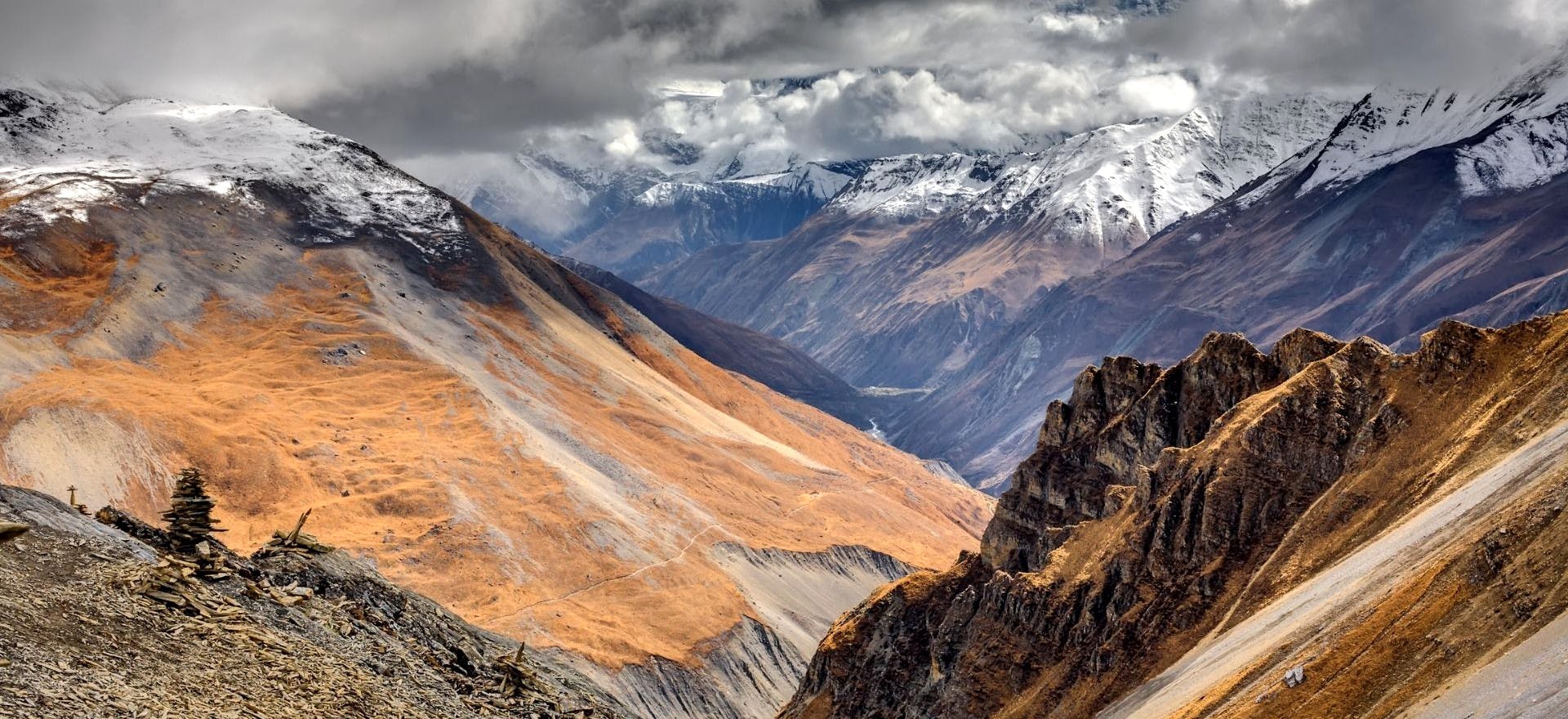
Nepal is a dream destination for trekkers around the globe, offering some of the most spectacular and challenging treks available. With towering peaks and breathtaking landscapes , the country provides adventurers with numerous opportunities to explore vast and varied terrains. The five longest treks in Nepal are particularly renowned for their awe-inspiring beauty and the diverse experiences they offer. From crossing high mountain passes to navigating through lush forests and remote villages, these treks are perfect for those looking to experience adventure and challenge themselves physically and mentally. Whether you're a seasoned hiker or a casual trekker looking to push your limits, these treks promise unforgettable journeys through the heart of the Himalayas.
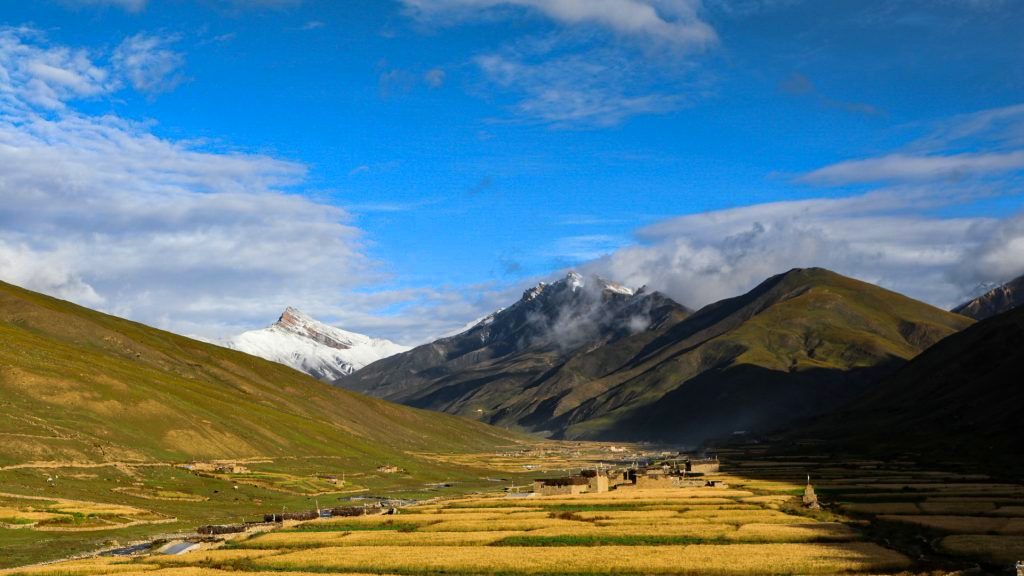
Luxury Holidays Nepal Pvt. Ltd. is your go-to partner for exploring the five longest treks in Nepal . Our team ensures you experience these majestic Himalayan adventures with top-notch service and expert guidance. Whether you are tackling the challenging Dhaulagiri Circuit or the iconic Annapurna Circuit , our tailored itineraries and supportive trekking arrangements make every journey memorable. With Luxury Holidays Nepal , you can look forward to a seamless and enriching trekking experience, supported by local experts who understand every nuance of these spectacular routes.
Dhaulagiri Circuit Trek
The Dhaulagiri Circuit Trek is one of the most challenging and spectacular adventures in Nepal. It offers trekkers the opportunity to explore Mount Dhaulagiri, the seventh-highest mountain in the world, standing at 8,167 meters (26,795 feet). This trek is renowned for its remote trails, dramatic high-altitude landscapes, and the raw beauty of nature untouched by modern development.

Highlights of the Dhaulagiri Circuit Trek:
- Remote and Rugged Terrain: The trek navigates through some of the most isolated areas of Nepal, offering pristine natural beauty and a sense of solitude that is hard to find in more trafficked routes.
- High Altitude Passes: Trekkers cross two major passes - the French Pass (5,360 meters) and the Dhampus Pass (5,182 meters), which provide stunning vistas of Dhaulagiri and other Himalayan giants.
- Glacial and Snowy Landscapes: The route involves trekking on the Dhaulagiri glacier, offering an exhilarating experience of high-altitude glacier walking.
- Varied Ecosystems: From lush rhododendron forests in the lower reaches to barren, icy landscapes at higher altitudes, the trek covers a diverse range of environments.
- Cultural Encounters: Although the area is sparsely populated, trekkers can encounter the unique lifestyles of ethnic communities such as the Magars and Gurungs in the lower regions.
Trek Details:
- Duration: Typically requires 20-25 days to complete.
- Difficulty Level: This trek is considered extreme due to its length, altitude, and the challenging terrain that includes steep ascents and descents.
- Best Season: The best times to embark on the Dhaulagiri Circuit are from April to May and from September to November when the weather is most favorable.
The trek often begins in Beni, following the Myagdi Khola westwards to Darbang and turning north on a route that leads through forests into high alpine pastures and glaciers below Dhaulagiri. The trail curves around the west side of Dhaulagiri, entering the Chonbardan glacier basin and climbing up to the French Pass. From the pass, the trail descends to the hidden and mysterious valley of Hidden Valley, providing a pathway to Dhampus Pass. The descent from Dhampus Pass leads to Jomsom, where the trek typically concludes.
Preparation and Considerations:
Due to its extreme nature, trekkers should be well-prepared physically and mentally. It is essential to have previous trekking experience, preferably at high altitudes. Adequate gear for cold, snowy conditions and a reliable guide are critical for safety. Acclimatization days are necessary to avoid altitude sickness.
The Dhaulagiri Circuit Trek is for those who seek a genuine adventure in the Himalayas, away from the more commercialized trails. This trek not only challenges the body but also offers immense rewards in the form of spectacular natural beauty and a profound sense of achievement.
Upper Dolpo Circuit Trek
The Upper Dolpo Circuit Trek is one of the most remote and fascinating trekking adventures in Nepal. Located in the northwest region of Nepal, far from the well-trodden paths of the Annapurna and Everest regions, Upper Dolpo remains a treasure trove of ancient Buddhist culture and untamed natural beauty. This area was only opened to trekkers in the late 1980s, and it continues to exude an aura of mystery and adventure.

Highlights of the Upper Dolpo Circuit Trek:
- Shey Phoksundo Lake: Trek to the stunning turquoise waters of Shey Phoksundo Lake, one of the highest altitude lakes in the world and a serene focal point in the region.
- Ancient Culture: Experience the unique Tibetan Buddhist culture that has remained largely unchanged due to the region's isolation. Visit ancient monasteries like Shey Gompa, which is over 800 years old, famously featured in the movie "Himalaya."
- High Passes: The trek involves crossing several high passes, including the Kang La Pass (5,151 meters) and the Saldang La Pass (4,785 meters), offering breathtaking views of the surrounding Himalayan peaks.
- Rare Fauna: Keep an eye out for the elusive snow leopard and other wildlife such as blue sheep and the Tibetan wolf.
- Remote Villages: Walk through beautifully preserved traditional villages like Saldang and Dho Tarap, where the lifestyle has remained unchanged for centuries.
- Duration: The Upper Dolpo Circuit usually takes about 25-30 days to complete.
- Difficulty Level: This trek is considered challenging due to its length, altitude, and the remote nature of the region.
- Best Season: The best months for trekking in Upper Dolpo are from May to September, as the area is located in the rain shadow of the Himalayas and receives less rainfall even during the monsoon season.
The typical itinerary for the Upper Dolpo Circuit Trek begins with a flight from Kathmandu to Nepalgunj, followed by another flight to Juphal. From there, trekkers walk to Dunai, then head north to Phoksundo Lake and Ringmo village. The route then crosses several high passes with spectacular views, winding through the Shey Gompa and the Buddhist monastic culture before descending to Saldang. The circuit is completed upon returning to Juphal via different villages and finally flying back to Kathmandu.
- Permits: Upper Dolpo requires several permits due to its status as a restricted area, including the Restricted Area Permit, which is more expensive than those for more frequented areas.
- Guides and Porters: Due to the isolation and lack of marked trails, hiring experienced guides and porters is essential for safely navigating the circuit.
- Supplies and Equipment: There are very few if any, places to resupply during the trek, so it is crucial to be fully equipped and self-sufficient when setting out.
The Upper Dolpo Circuit Trek offers an unparalleled trekking experience for those looking to explore one of the last remaining Himalayan enclaves where traditional Tibetan culture still thrives. The journey not only challenges the physical body but also enriches the spirit through close encounters with a way of life preserved for centuries against the backdrop of some of the most stunning scenery on earth.
Kanchenjunga Circuit Trek
The Kanchenjunga Circuit Trek is an exhilarating and challenging adventure into the remote eastern part of Nepal. This trek offers a unique opportunity to explore the area around Kanchenjunga, the third-highest mountain in the world, which stands at a majestic height of 8,586 meters (28,169 feet). Unlike more popular treks in the Annapurna or Everest regions, the Kanchenjunga Circuit remains relatively untouched and less crowded, providing a more solitary and pristine mountain experience.
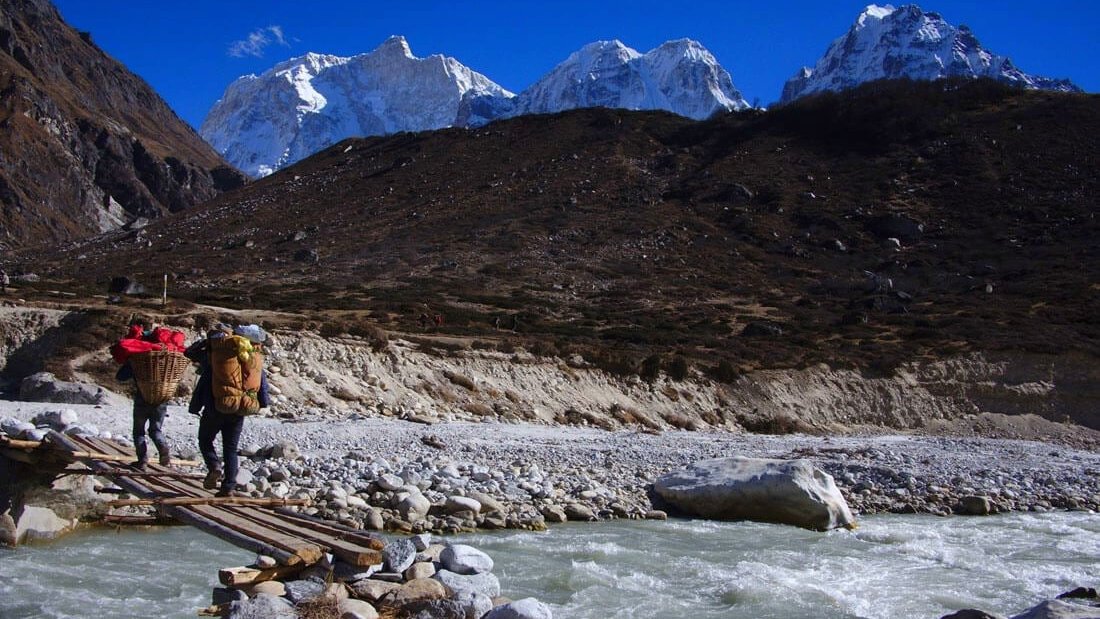
Highlights of the Kanchenjunga Circuit Trek:
- Spectacular Mountain Views: The trek provides up-close views of Mt. Kanchenjunga, along with other high peaks such as Jannu and Makalu.
- Diverse Ecosystems: As the trail ascends from subtropical forests to alpine grasslands, trekkers can experience a wide range of biodiversity, including rhododendron forests blooming in a variety of colors in spring.
- Tibetan Buddhist Culture: Explore remote villages and monasteries where the influence of Tibetan Buddhism is evident in the daily lives of the local inhabitants.
- High Alpine Passes: The trek includes challenging passes such as Lapsang La pass and Mirgin La Pass, offering exhilarating climbs and breathtaking panoramic views.
- Wildlife: The region is part of the Kanchenjunga Conservation Area, home to diverse wildlife including the snow leopard, red panda, and Himalayan black bear.
- Duration: The trek typically requires 20-25 days to complete, depending on the exact route and side trips.
- Difficulty Level: This is a challenging trek due to its length, high altitude, and the ruggedness of the terrain.
- Best Season: The best times to embark on the Kanchenjunga Circuit are from April to May and from October to November when the weather is most stable and the skies are clear.
The Kanchenjunga Circuit Trek usually starts with a flight from Kathmandu to Bhadrapur, followed by a drive to Taplejung, the trek's starting point. The route then splits into a southern and northern base camp trail, allowing trekkers to circle the massive Kanchenjunga massif. Highlights include the trek up to both North and South Base Camps, offering exceptional views of Kanchenjunga’s towering peaks. The return path often involves crossing high mountain passes that provide panoramic views of the Himalayas.
- Acclimatization: Given the high altitudes reached during this trek, proper acclimatization is crucial to avoid altitude sickness.
- Permits: Several permits are required for the Kanchenjunga trek, including a restricted area permit, as it traverses sensitive border areas.
- Guides and Porters: To navigate the complex routes and manage logistics, the employment of knowledgeable local guides and porters is highly recommended.
- Equipment: Adequate gear for cold and potentially harsh weather is essential, along with all necessary trekking equipment.
The Kanchenjunga Circuit Trek is ideal for those who wish to experience the raw beauty of the Himalayas away from the more commercialized trails. It challenges trekkers physically and mentally but rewards them with some of the most stunning landscapes and cultural insights into Nepal’s remote mountain communities. This trek is a true adventure for the passionate and prepared trekker.
The Manaslu Circuit Trek is a stunning journey around the world’s eighth-highest mountain, Manaslu, which rises majestically to a height of 8,163 meters (26,781 feet). This trek has gained popularity as a less crowded alternative to the more famous Annapurna Circuit but offers an equally compelling mix of spectacular natural scenery, challenging terrain, and cultural richness.

Highlights of the Manaslu Circuit Trek:
- Breathtaking Landscapes: The trek circles Mount Manaslu and offers dramatic views of snow-capped mountains, lush terraced fields, and high-altitude glaciers.
- Rich Cultural Experience: Travel through diverse ethnic villages, including those of the Nubri and Tsum, where ancient Buddhist traditions and customs are still practiced.
- Larkya La Pass: One of the trek's most challenging and rewarding features, the Larkya La Pass (5,106 meters), provides stunning vistas of the Manaslu and Annapurna ranges.
- Varied Ecosystems: From the sub-tropical jungle at lower altitudes to the high, cold, and challenging environment near Larkya La, the trek offers a variety of climates and settings.
- Conservation Area: The entire trek falls within the boundaries of the Manaslu Conservation Area, which is home to diverse flora and fauna, including endangered species such as the snow leopard and the red panda.
- Duration: The Manaslu Circuit typically takes about 14-20 days to complete, depending on your itinerary and pace.
- Difficulty Level: This trek is considered moderate to difficult, mainly due to its length, the remote setting, and the high altitude, particularly at Larkya La Pass.
- Best Season: The best times for the Manaslu Circuit Trek are during the spring (April-May) and autumn (October-November) seasons, when the weather is most favorable and the views are clearest.
The trek usually begins in Soti Khola, after a drive from Kathmandu, and follows the Budhi Gandaki River through lush forests and traditional villages. As the trek progresses, the valley narrows and the paths become steeper, passing through alpine scenery to reach the higher and more barren regions near Larkya La. After crossing the pass, the descent takes trekkers through the beautiful alpine meadows of Bimthang and eventually to Dharapani, where it typically concludes.
- Permits: A special permit is required for the Manaslu Circuit due to its status as a restricted area. Trekkers must also obtain an Annapurna Conservation Area Permit (ACAP) and a Manaslu Conservation Area Permit (MCAP).
- Guides: It is compulsory to have a registered guide for the Manaslu Circuit, and trekking in a group is recommended for safety reasons.
- Equipment: Proper gear is essential, especially for crossing Larkya La. This includes cold-weather clothing and possibly crampons depending on seasonal conditions.
- Acclimatization: Proper acclimatization days should be planned, particularly before attempting to cross Larkya La, to prevent altitude sickness.
The Manaslu Circuit Trek is an exceptional choice for trekkers seeking a challenging yet rewarding Himalayan experience. It combines breathtaking natural beauty with a deep dive into the cultural life of the Nepalese mountain communities, making it a fulfilling journey for those looking to explore beyond the typical trekking routes.
The Annapurna Circuit Trek is one of Nepal's most popular and classical trekking routes, encircling the majestic Annapurna massif. Known for its stunning variety of landscapes, the trek offers an incredible range of beautiful scenery, diverse ecosystems, and cultural experiences. As it winds through different climate zones from lush subtropical forests to arid high mountain landscapes, trekkers can witness the diverse flora and fauna as well as the rich local customs of the Nepali people living in the Himalayas.
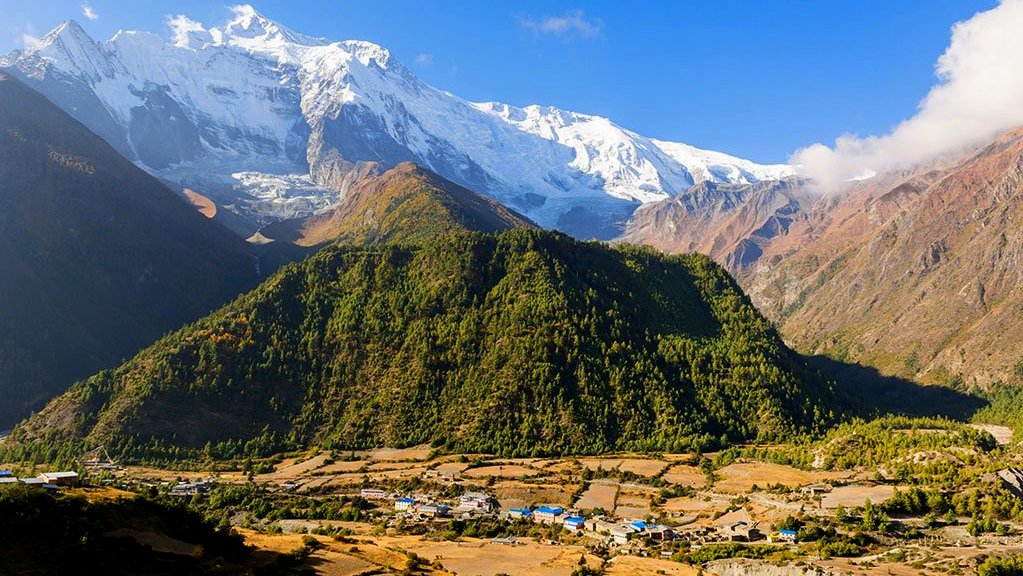
Highlights of the Annapurna Circuit Trek:
- Thorong La Pass: At 5,416 meters (17,769 feet), crossing Thorong La is one of the trek’s most challenging and rewarding achievements, offering unforgettable views across the Annapurna mountains.
- Varied Landscapes: From the rice paddies and subtropical forests to high-altitude plateaus, the trek transitions through diverse environments providing trekkers with unique scenic vistas every day.
- Cultural Richness: The trail passes through various ethnic villages, including those of the Gurung, Manangi, and Thakali communities, where trekkers can experience the local hospitality and traditional lifestyles.
- Natural Hot Springs: Near the village of Tatopani, trekkers can relax in natural hot springs, a perfect way to soothe muscles tired from the rigors of the trail.
- Poon Hill: An optional detour to Poon Hill at sunrise offers one of the most famous views of the Annapurna range and Dhaulagiri.
- Duration: Typically, the Annapurna Circuit Trek takes about 12-20 days to complete, depending on walking speed, weather conditions, and length of daily treks.
- Difficulty Level: Moderate to challenging. While physically demanding because of its length and the high altitudes, the trek is considered less technical than others like the Everest Base Camp trek.
- Best Season: The best times to hike the Annapurna Circuit are during the spring (March to May) and autumn (October to November) when the weather is favorable and the views are clear.
The trek usually starts in Besisahar or Bhulbhule in the Marsyangdi River valley and finishes in the Kali Gandaki Gorge. Key stops typically include Manang, where trekkers often rest for acclimatization; the Thorong La pass; Muktinath, a sacred site for both Hindus and Buddhists; and the Jomsom, known for its apple orchards and a gateway to the Mustang region.
- Permits: Trekkers need both the Annapurna Conservation Area Permit (ACAP) and the Trekkers' Information Management System (TIMS) card.
- Acclimatization: Careful acclimatization is needed, especially before crossing Thorong La.
- Equipment: Packing the right gear is essential, including layers for cold weather, a good quality sleeping bag, and hiking boots.
- Guides/Porters: While it's possible to trek independently, many opt for guides or porters who provide local knowledge and logistical support.
The Annapurna Circuit Trek is a rewarding trek for those looking to explore the natural beauty and cultural richness of Nepal. Its well-established trail and the availability of guest houses and lodges along the route make it a favorite among both novice and experienced trekkers. Whether you are seeking adventure, solitude, or spiritual enrichment, the Annapurna Circuit delivers an unforgettable backdrop of some of the highest peaks in the world.
Tips while doing 5 Longest Treks in Nepal
Embarking on any of the five longest treks in Nepal is a formidable and rewarding challenge, offering not only natural beauty and physical exertion but also a unique glimpse into the remote cultures of the Himalayas. To ensure a safe and enjoyable trek, here are some essential tips to consider:
General Preparation
- Physical Fitness: Prepare months in advance with regular cardio exercises, strength training, and hiking. The better your fitness, the more you'll enjoy the trek.
- Acclimatization: Take acclimatization seriously to avoid altitude sickness. Plan for gradual ascents and include rest days in your itinerary, especially when trekking above 3,000 meters.
- Local Guides and Porters: Hiring experienced local guides and porters not only provides employment but also enhances your safety and experience. They are invaluable for their knowledge of the terrain, weather conditions, and local culture.
Gear and Equipment
- Appropriate Clothing: Pack layers of breathable and moisture-wicking clothing to handle the variable temperatures. Include a waterproof and windproof jacket.
- Quality Footwear: Invest in well-fitting, sturdy trekking boots that are broken in before your trip. Proper footwear is crucial to avoid blisters and provide ankle support.
- Navigation Tools: Carry a detailed map, a compass, or a GPS device. Even with a guide, these tools are essential for safety in case of unexpected separations.
Health and Safety
- Travel Insurance: Make sure you have comprehensive travel insurance that covers emergency evacuation and hospital stays.
- First Aid Kit: Bring a well-stocked first aid kit including items for blister care, bandages, antiseptics, and any personal medications.
- Water Treatment: Always treat water before drinking, whether using iodine tablets, a water filter, or a sterilization pen, to avoid waterborne illnesses.
On the Trail
- Pace Yourself: Maintain a steady pace; rushing can lead to exhaustion and altitude sickness.
- Stay Hydrated and Eat Well: Drink plenty of water and eat balanced meals. Your body needs more calories and fluids at higher altitudes.
- Respect Local Customs: Learn about and respect the local customs and traditions. This respect will enhance your interactions with local people and enrich your trekking experience.
- Keep the Environment Clean: Practice "Leave No Trace" ethics. Carry all your trash out, and respect wildlife and plant life.
Cultural Etiquette
- Dress Appropriately: Wear modest clothing as per local norms, especially when visiting monasteries or other religious sites.
- Ask Before Photographing: Always ask for permission before photographing local people or their homes. This shows respect for their privacy.
By following these tips, trekkers can ensure that their journey through Nepal’s longest and most challenging trails is not only successful but also memorable and respectful towards the environment and local cultures. Each trek offers its own set of challenges and rewards, and being well-prepared is the key to enjoying all that these incredible adventures have to offer.
The five longest treks in Nepal are more than just a physical challenge; it is a journey into the heart of some of the world’s most breathtaking landscapes and ancient cultures. As you traverse these rugged paths, you will not only push your physical limits but also gain a deeper appreciation for the natural beauty and rich cultural tapestry of Nepal . Each step on these treks offers a new perspective, a fresh challenge, and a chance to connect with both nature and yourself in profound and unexpected ways. So pack your gear, embrace the adventure, and get ready to create lasting memories on some of the most iconic trails the Himalayas have to offer. Remember, it's not just about reaching the destination, but also about savoring every moment of the journey.
FAQs of the 5 Longest Treks in Nepal
Q: what is the best time to undertake these long treks in nepal.
A: The best time for trekking in Nepal is during the pre-monsoon spring months of April and May, or the post-monsoon autumn months from October to November. During these periods, the weather is generally stable and clear, providing the best views and conditions for high-altitude trekking.
Q: Do I need a guide for these treks?
A: Yes, for most of these treks, especially those in restricted areas like Upper Dolpo and Kanchenjunga, hiring a registered guide is mandatory. Even on less restricted treks, a guide is highly recommended for safety, navigation, and gaining deeper cultural insights.
Q: Are there any special permits required for these treks?
A: Yes, special permits are required for all these treks, especially for those that enter restricted areas. These include the Restricted Area Permit (RAP), the Annapurna Conservation Area Permit (ACAP), and the Manaslu Conservation Area Permit (MCAP), among others. The specific permits needed can vary, so it’s best to check with a trekking agency or the Nepalese Department of Immigration for the latest requirements.
Q: How should I prepare physically for these treks?
A: Due to the length and difficulty of these treks, it is essential to be in good physical condition. Engage in regular cardiovascular exercises such as running, cycling, and hiking several months before your trip. Strength training and endurance workouts can also help prepare your muscles for the rigorous demands of these treks.
Q: What kind of gear do I need for these treks?
A: Essential gear includes sturdy hiking boots, several layers of clothing for variable temperatures, a good quality sleeping bag, a durable backpack, and personal items like a first-aid kit, water purification tablets, and sun protection. For treks involving high passes, additional gear such as a down jacket, thermal layers, and possibly crampons may be necessary.
Q: How can I deal with altitude sickness?
A: To mitigate the risk of altitude sickness, ensure proper acclimatization by planning a gradual ascent and including rest days in your itinerary. Stay hydrated, eat well, and avoid alcohol and smoking. Recognize the symptoms of altitude sickness early, which can include headaches, nausea, and dizziness, and do not ascend further if symptoms are present.
Q: What are the lodging options on these treks?
A: Lodging options vary by trek. While the Annapurna and Manaslu circuits have well-established teahouse lodges, remote treks like Kanchenjunga and Upper Dolpo may require camping for much of the route. Always check the availability of lodging and necessary camping equipment in advance.
Q: Can I trek solo on these routes?
A: While solo trekking might be technically possible on some routes, it is not advisable due to safety concerns, especially on the more remote and challenging treks. Furthermore, some restricted areas do not allow solo trekkers and require you to be part of a guided group.
Q: What should I know about cultural etiquette?
A: Respect local customs and traditions. Dress modestly, ask permission before taking photographs, and be mindful of local etiquette, especially when visiting monasteries and religious sites. Learning a few phrases in Nepali can also go a long way in enhancing your interaction with local communities.
Q: How much does it typically cost to undertake one of these treks?
A: The cost can vary widely depending on the length of the trek, the level of guide service, and whether you choose a package from a trekking agency or arrange everything independently. Costs include permits, guide and porter fees, transportation, accommodation, food, and any gear rental.
If you need any further information, please contact us by email: at [email protected] , Phone: at +977- 985 100 5129 ( WhatsApp )
- Longest Treks in Nepal
- Dhaulagiri Circuit
- Upper Dolpo Circuit
- Manaslu circuit Trek
- Longest Treks
- Hidden Waterfalls around Kathmandu
- Spring Adventure Tours in Nepal: A Season of Excitement and Bloom
Drop us a message
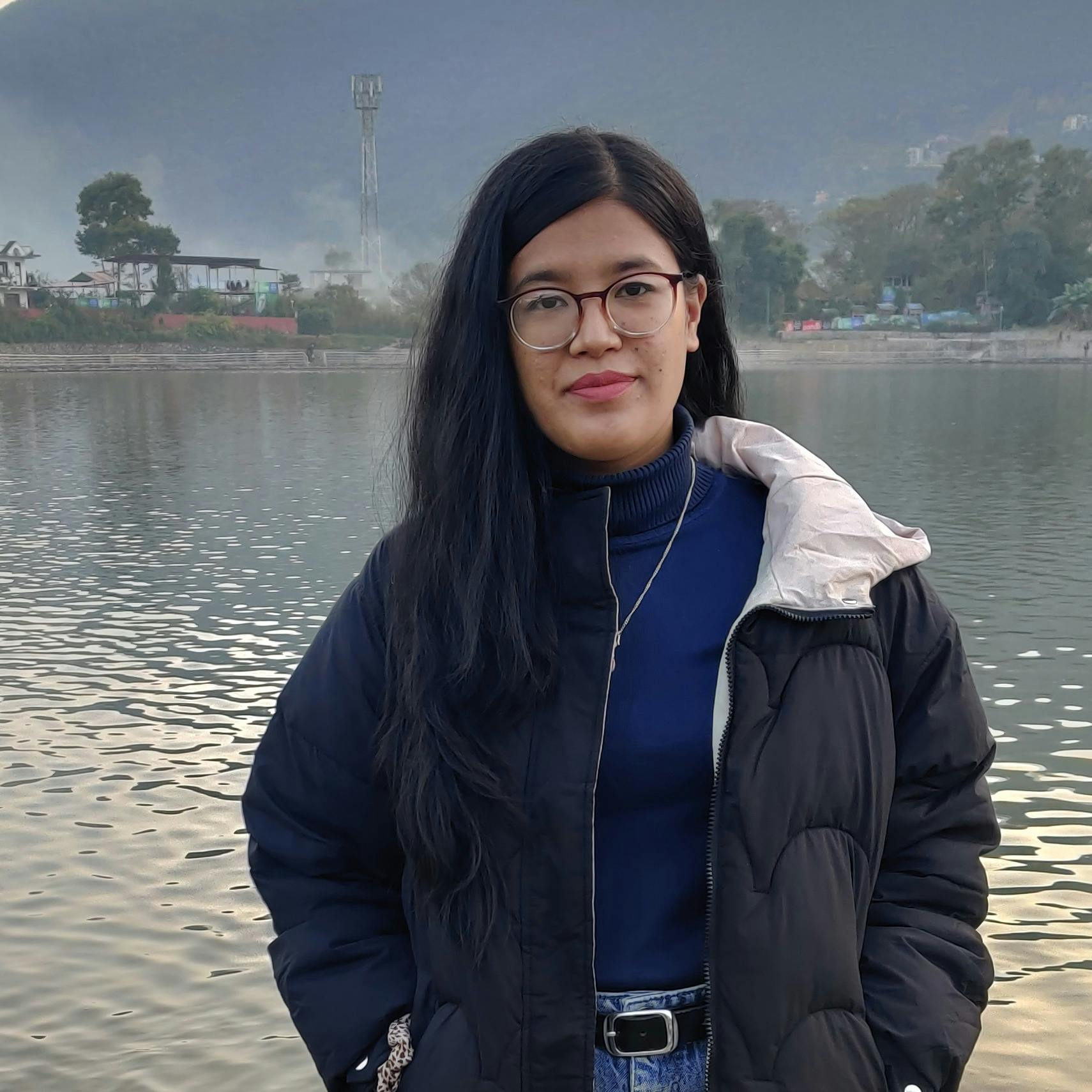
Ms. Jyoti Karki
Jyoti Karki is an expert travel blogger. She has been writing blogs for a long time. Along with writing about diverse locations. She personally travels to many different places, went hiking and trekking in Nepal, and has also visited several areas of India and enjoys writing on her blogs about them.
Blog by Categories
- Trekking in Nepal 101
- Travel Informations 167
- The 9 Most Challenging Treks...
The Most Challenging Treks in Nepal

Contributor
You don’t have to be capable of scaling Mount Everest to enjoy many of Nepal’s outdoor pursuits. However, some trekking routes here are only suitable for those with plenty of experience. Whether lengthy, cold, high-in-altitude or a combination of these, here are our picks of the most challenging treks. But you know what they say – no pain, no gain.
Planning an action-packed trip to Nepal? Book yourself onto Culture Trip’s 11-day Nepalese adventure , where you’ll ride a rickshaw through Kathmandu, white-water raft on the Seti River and encounter Bengal tigers in Chitwan National Park.
1. Three Passes Trek
Natural Feature, Park, Hiking Trail

This very challenging trek crosses three passes of over 5,000m (16,404ft) – Kongma La, Cho La and Renjo La. It passes through the Everest region, starting and ending at the same point ( Lukla ), so it’s a good option for experienced trekkers who have perhaps already done Everest Base Camp (EBC) and are looking for a greater challenge. It also visits Kala Patthar, for incredible views of EBC, and the vibrant Gokyo Lakes.
2. Dhaulagiri Circuit
Natural Feature, Hiking Trail

The circuit around Mount Dhaulagiri is often called the most challenging trek in Nepal for several reasons. First, it’s a camping trek, meaning there are no comfortable (or even basic) lodgings to retreat to at the end of the day or if the weather turns bad. Second, it’s necessary to spend three days in a row trekking above 5,000m (16,404ft). At that altitude, many travellers experience a light head, racing heart and difficulty sleeping. And thirdly, you’ll often have to trek and sleep in snowy conditions. Dhaulagiri may not be the most comfortable trek out there, but if you’re very fit, very experienced and up for a very big challenge, it’s unforgettable.
4. Nar Phu Valley

The wild Nar Phu Valley was closed to trekkers as recently as 2002, making a visit here all the more special. It lies between the more visited Annapurna and Manaslu regions. Long trekking days and steep ascents make this route a real challenge, with the highest elevation at 5,240m (17,192ft). As the Nar Phu Valley is sparsely inhabited and contains no trekking infrastructure, the distances between possible places to stay are long. But this is a beautiful trek for its sense of solitude, as well as the incredible mountain landscapes and the colourful Tibetan Buddhist chortens (shrines) that Nar and Phu are famous for.
5. Rolwaling with the Tashi Lapcha Pass
The Rolwaling Valley sits between Langtang and the Khumbu region. The trek starts at the edge of the Gaurishankar Conservation Area, crosses the very high Tashi Lapcha Pass and ends in Lukla. The Rolwaling Valley is not often visited by foreign trekkers, so you’ll likely have trails all to yourself (until you cross into the Everest region, that is). It is a very challenging trek, however, as the Tashi Lapcha Pass is extremely high and strenuous and usually covered in snow.
6. Manaslu Circuit Trek
Hiking Trail, Natural Feature

Although the Manaslu Circuit region has seen an increase in development in recent years, which has made the trekking infrastructure more extensive, it is still a remote route to choose from. The trek will take you around Manaslu, the world’s eighth highest mountain, on a route dotted with teahouses, suspension bridge crossings and varied scenery – from subtropical forest to Himalayan foothills and the challenging snow-covered pass of Larkya La, at 5,125m (16,814ft).
7. Kanchenjunga Trek
The Kanchenjunga Trek, in eastern Nepal, is one of the longest treks in the country at around 27 days. You’ll circumnavigate Mount Kanchenjuna, which at a height of 8,586m (28,169ft) which is the third-highest mountain in the world, straddling Nepal and India. Start at the north of the mountain trekking south, you’ll cross the Mirgin La en route. You’ll find that not so many visitors make it out to the east of Nepal, but this is considered one of the finest treks in the country.
8. Poon Hill

Alright, this one isn’t actually very hard compared to others on this list, but it is much harder than many people realise. The three-to-five-day trek is a good one if you don’t have a lot of time to stray far from the beaten path. You’ll pass quaint villages and forest canopies before making the steep ascent up the many, many stairs which eventually take you to an altitude of 3,200m (10,499ft). Expect incredible sunrise views of the Annapurnas; just don’t underestimate those steps.
9. The Great Himalaya Trail
The Great Himalaya Trail is a network of shorter trails that run the length of the Nepali Himalayas, connecting them all and providing a continuous trek for those up for the adventure of a lifetime. The trail is divided into a high route and a low route, passing through higher or lower elevations, respectively. This may just be the ultimate Nepal challenge, but also the ultimate adventure.
Since you are here, we would like to share our vision for the future of travel - and the direction Culture Trip is moving in.
Culture Trip launched in 2011 with a simple yet passionate mission: to inspire people to go beyond their boundaries and experience what makes a place, its people and its culture special and meaningful — and this is still in our DNA today. We are proud that, for more than a decade, millions like you have trusted our award-winning recommendations by people who deeply understand what makes certain places and communities so special.
Increasingly we believe the world needs more meaningful, real-life connections between curious travellers keen to explore the world in a more responsible way. That is why we have intensively curated a collection of premium small-group trips as an invitation to meet and connect with new, like-minded people for once-in-a-lifetime experiences in three categories: Culture Trips, Rail Trips and Private Trips. Our Trips are suitable for both solo travelers, couples and friends who want to explore the world together.
Culture Trips are deeply immersive 5 to 16 days itineraries, that combine authentic local experiences, exciting activities and 4-5* accommodation to look forward to at the end of each day. Our Rail Trips are our most planet-friendly itineraries that invite you to take the scenic route, relax whilst getting under the skin of a destination. Our Private Trips are fully tailored itineraries, curated by our Travel Experts specifically for you, your friends or your family.
We know that many of you worry about the environmental impact of travel and are looking for ways of expanding horizons in ways that do minimal harm - and may even bring benefits. We are committed to go as far as possible in curating our trips with care for the planet. That is why all of our trips are flightless in destination, fully carbon offset - and we have ambitious plans to be net zero in the very near future.

Health & Wellness
The everest marathon: running the world’s highest race.

See & Do
How to spend 10 days in nepal's terai region.

Hiking Nepal: Everything You Need to Know

Places to Stay
The best hotels to book in nepal for every traveller.

The Best Markets in Kathmandu, Nepal

Guides & Tips
How to spend two weeks in nepal.

Bars & Cafes
Visit the world’s highest irish pub in namche bazaar, nepal.

Chitwan National Park: the Centre for Jungle Safari in Nepal

Aiming High: Meet the First Black African to Summit Everest

The Best Bookshops in Kathmandu, Nepal

This Virtual Museum Allows Armchair Travellers to Explore Nepal

The Solo Traveller's Guide to Nepal
Culture trip spring sale, save up to $1,100 on our unique small-group trips limited spots..

- Post ID: 1870780
- Sponsored? No
- View Payload

IMAGES
VIDEO
COMMENTS
10. Langtang Gosaikunda and Helambu Trek. The Langtang Gosaikunda and Helambu Trek is one of the longest treks in Nepal that offers great interaction with nature, culture and high mountain valleys and lakes. Believed to be one of the hidden mountain gems, the trek takes you to Gosaikunda, one of the holiest lakes in Nepal.
Best Time for Top 10 Longest Treks in Nepal. The best time for trekking in Nepal varies across different treks, but generally falls into two main seasons: pre-monsoon (spring) and post-monsoon (autumn). These periods offer the clearest skies, moderate weather, and the most stable conditions for trekking.
Days required: 10-13 days. Total Incline: 8000 meters. Total Decline: 7000 meters. The highest point on the trek: The two highest points on the trek are Tilicho Lake (4,919m) and the Thorong La Pass (5,416m). Difficulty: The difficulty of the Annapurna Circuit Trek depends a lot on how many days you have.
Probably the easiest longest trek in Nepal. Worth walking!!! Annapurna Circuit Trek is the easiest longest treks in Nepal. Imagine circumnavigating 55km long Annapurna massif in a single trip. Enjoy the grandeur of Annapurna I (8,097m), the tenth tallest mountain in the world and explore the timeless beauty it holds.
Day 18: Trek from Tadapani (2,710 meters) to Naya Pul (1,070 meters) via Gandruk and then catch a short bus ride back to Pokhara. Please Note: From Muktinath onwards the classic Annapurna Circuit has been severely impacted by the road that joins Jomsom to Muktinath.
Stingy Nomads (Campbell & Alya) at Annapurna Base Camp in Nepal. Trekking in Nepal is an incredible experience. ABC trek is one of the most spectacular routes in the region. Many trekkers choose this route as a shorter and cheaper alternative to the Everest Base Camp trek.Annapurna Base Camp is surrounded by some of the highest peaks in the world; Annapurna I (8091 m), Annapurna South (7219 m ...
It's one of the world's classic long-distance hiking trails, and still one of Nepal's most popular treks. The Annapurna Circuit, a 12 to 21-day route that begins in the lush green villages of the Himalayan foothills. Taking trekkers over the 5,416m Thorong La Pass and down to the Tibetan-influenced temples and communities of the Mustang ...
The Three Passes trek is the toughest Everest base camp trek there is. Taking 21 days in total it is also the longest trek we run in Nepal. So this is one for the really hardened trekker. If you are up to it, the Three Passes trek really offers all the best of the Khumbu region.
Plan your trip to Nepal. Chat with a local specialist who can help organize your trip. This 20-day itinerary guides you along the legendary Three Passes route—one of Nepal's most challenging and spectacular treks. Traverse a rugged landscape of steep passes, glaciers, and the world's highest freshwater lakes to reach the doorstep of Mount ...
While the majority of the trails are in Nepal, they also reach into India and Bhutan. Together, the GHT is the longest, highest trekking trail in the world, spanning at least 1,000 miles. No single operator "runs" the GHT, but various organizations and companies work on the trails and with trekkers wanting to traverse them.
The Annapurna Sanctuary and Circuit, the two main Annapurna treks, have numerous trekking lodges of a very high standard., some bordering on luxurious. Hot showers, wi-fi, and international menus are common. Nar-Phu and Khopra Ridge are earthier with limited and very basic homestay style lodges which fill up quickly.
Annapurna Base Camp (ABC) Trek is one of the most popular treks in Nepal. It is quite easy and shorter trek than other high altitude treks in Nepal. This trek incorporates diverse terrain, culture, and wildlife. Along with the most spectacular and close up view of Annapurna range, Machhapuchhre, Hiunchuli, and Dhaulagiri. In Spring, it...
Trekking in Nepal may be challenging at times, but the magic of a lovely culture fused with incredible scenery creates the ultimate exploration. ... Manaslu Trek Highlights. Traverse one of the longest passes in the Himalayas, Larkya La Pass at 5,106 m with views of these majestic peaks: Himlung Himal, Cheo Himal, Kang Guru, and Annapurna II ...
Hiking the Great Himalaya Trail. Starting and ending points: Kachenjunga on Nepal's eastern border with India and Humla on its western border with Tibet. Total distance: 1,700 kilometers (1,056 miles) Number of Sections: 10. Shortest Section: Langtang (18 days)
Among them, Everest Base Camp Trek, Annapurna Base Camp Trek, Manaslu Circuit Trek, Langtang Valley Trek, Ghorepani Poon Hill Trek, and Annapurna Circuit Trek stand out as the world's best treks. Everest Base Camp Trek: A journey to the roof of the world. The Everest Base Camp Trek is the most iconic and sought-after trek in Nepal. This ...
4. Langtang, Gosaikunda & Helambu, the Spiritual Trek. The Langtang, Gosaikunda & Helambu Trek is one of the most beautiful treks in Nepal. One of the highlights of this trek is the Holi Lake of Gosaikunda and its (many) surrounding lakes, an important pilgrimage site for Hindus.
Nepal offers an array of trekking experiences, from the easiest to the most challenging. The most difficult and challenging treks in Nepal are indeed the most rewarding. ... Kanchenjunga trek is also one of the longest treks, reaching a maximum of 28 days crossing over 400km. Altitude, unprecedented rainfalls, isolated trails, and off-beaten ...
There are several long treks in Nepal: Upper Dolpo Trek - A restricted area trek and one of the longest in the country, taking approx. 22-30 days. Kanchenjunga Trek: Circumnavigating Mount Kanchenjunga takes around 27 days to complete. Three Passes Trek: The toughest Everest Base Camp and the longest trek takes 20-22 days to complete.
Here is a list of 3 Famous Longest Treks in Nepal. One such trek is the Tsum Valley and Manaslu Circuit Trek. The Tsum Valley Manaslu Circuit can be one of the most thrilling longest treks in Nepal. This classical trek is a hidden gem in the heart of the Nepalese Himalayas. This trek offers a unique blend of natural beauty and cultural richness.
Namely Mt. Everest, Lhotse, Makalu, and Mt. Cho-Oyu with Nepal's longest Ngozumpa glacier. Then finally crossing the last Renjo-la pass to reach Thame village on the western end of the Khumbu area. From Thame on the main trail to Namche Bazaar and ending the trek at Lukla, for a flight back to Kathmandu. 09 Tengboche Everest Panorama Trek
Nepal is a dream destination for trekkers around the globe, offering some of the most spectacular and challenging treks available. With towering peaks and breathtaking landscapes, the country provides adventurers with numerous opportunities to explore vast and varied terrains.The five longest treks in Nepal are particularly renowned for their awe-inspiring beauty and the diverse experiences ...
The Kanchenjunga Trek, in eastern Nepal, is one of the longest treks in the country at around 27 days. You'll circumnavigate Mount Kanchenjuna, which at a height of 8,586m (28,169ft) which is the third-highest mountain in the world, straddling Nepal and India. Start at the north of the mountain trekking south, you'll cross the Mirgin La en ...
The diverse culture and warm local hospitality enrich a trek in Nepal. We have brought to you the 15 best itinerates of Nepal treks which you can complete in merely 10 days. There are treks in three of Nepal's most popular trekking regions - Everest, Annapurna and Langtang.